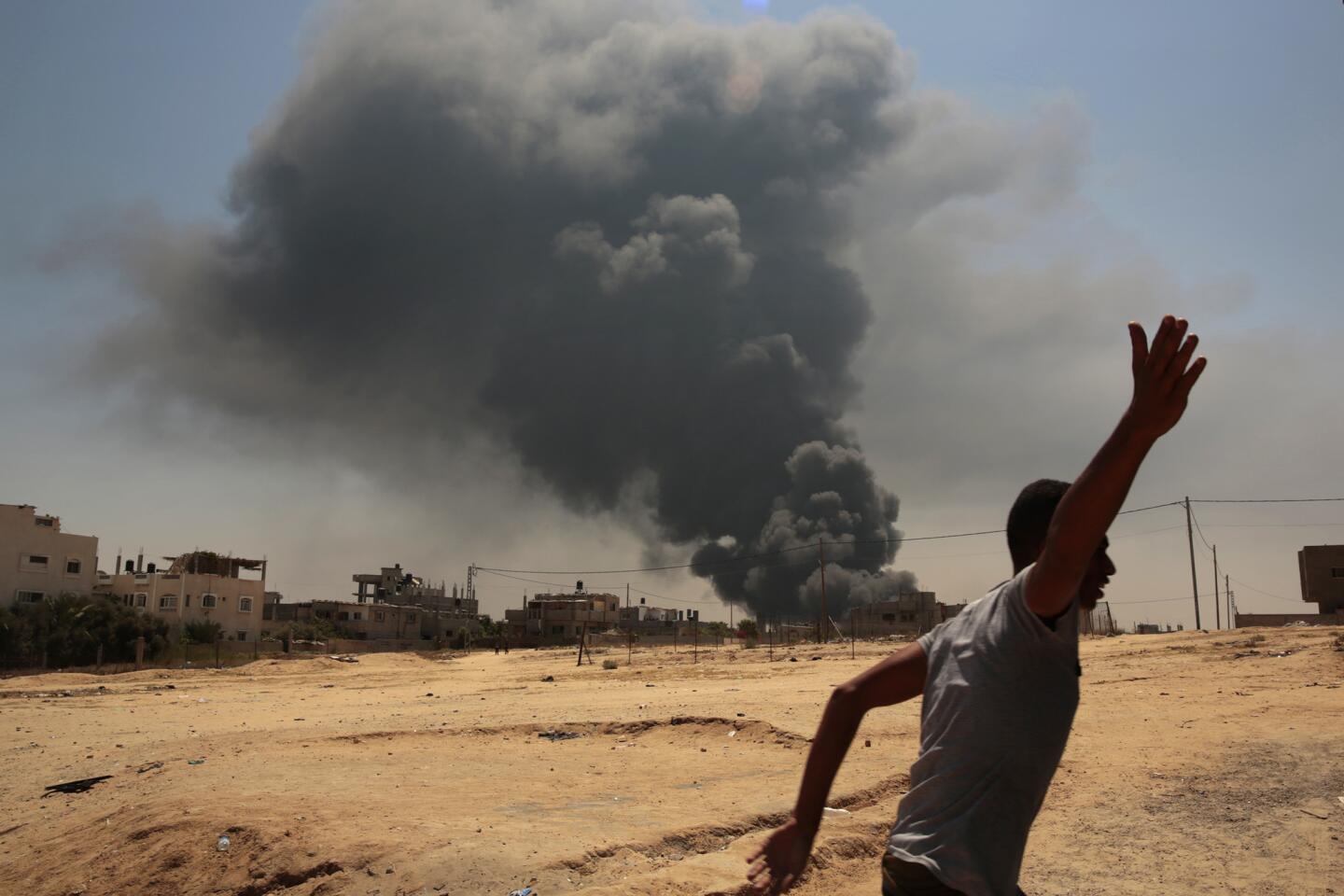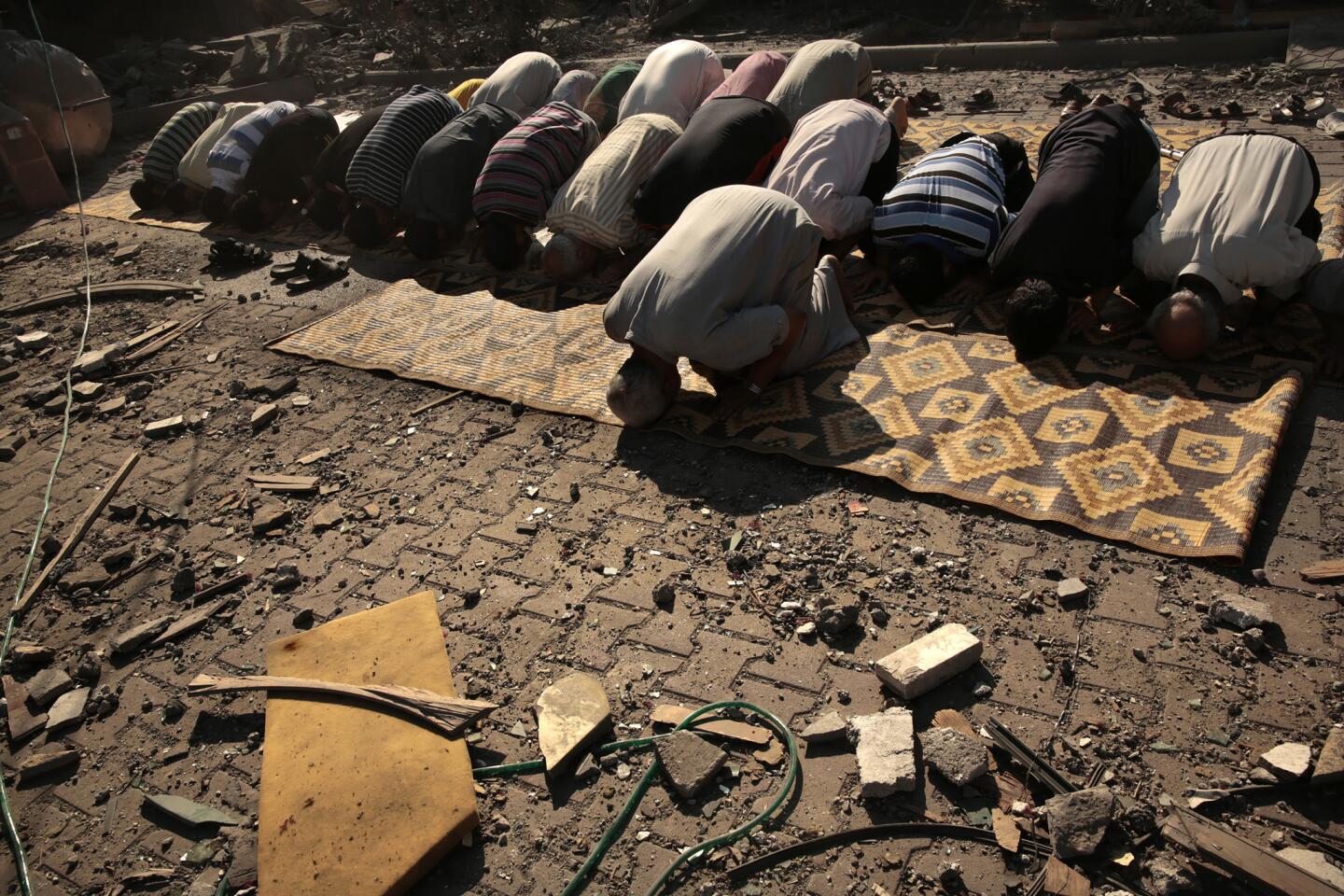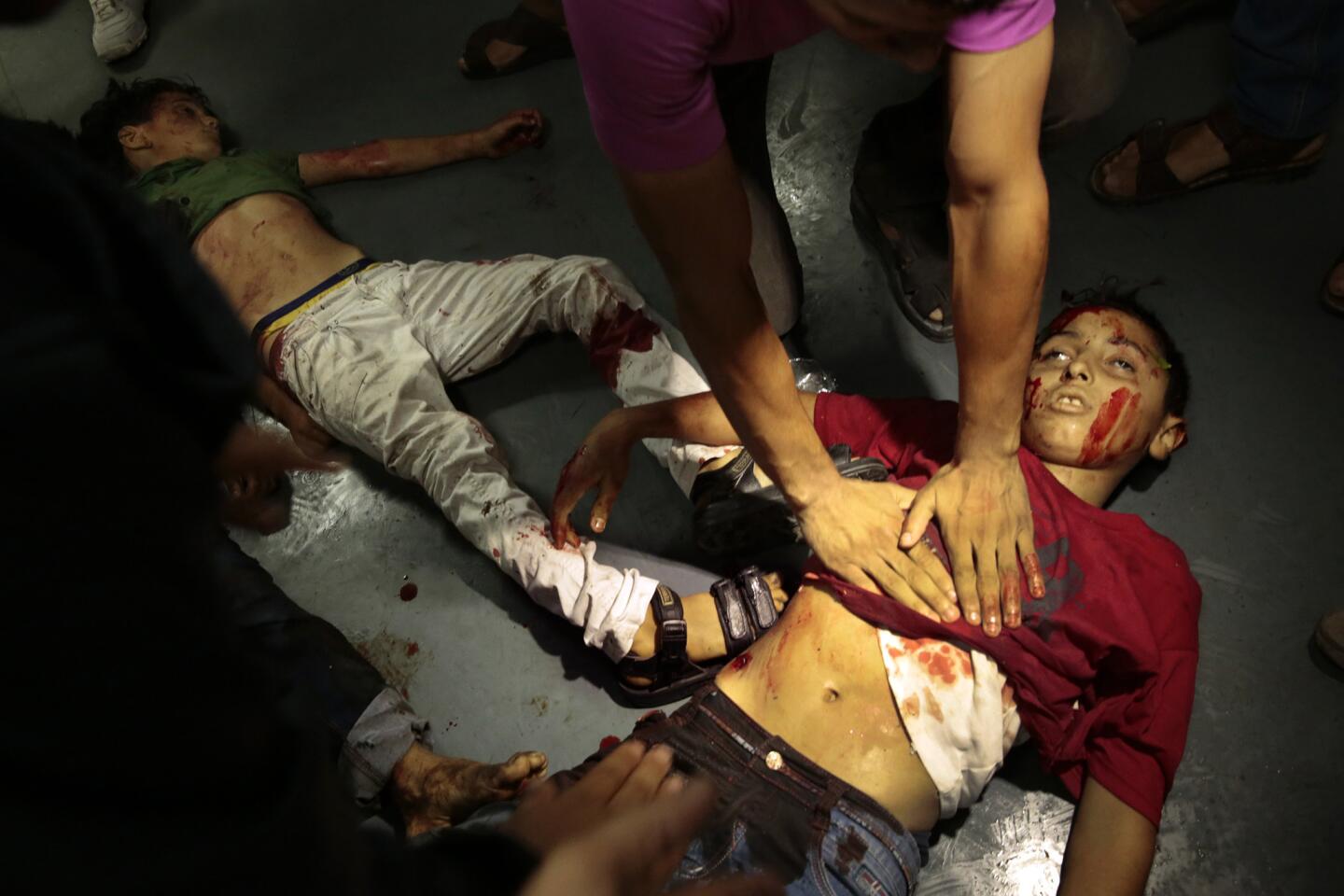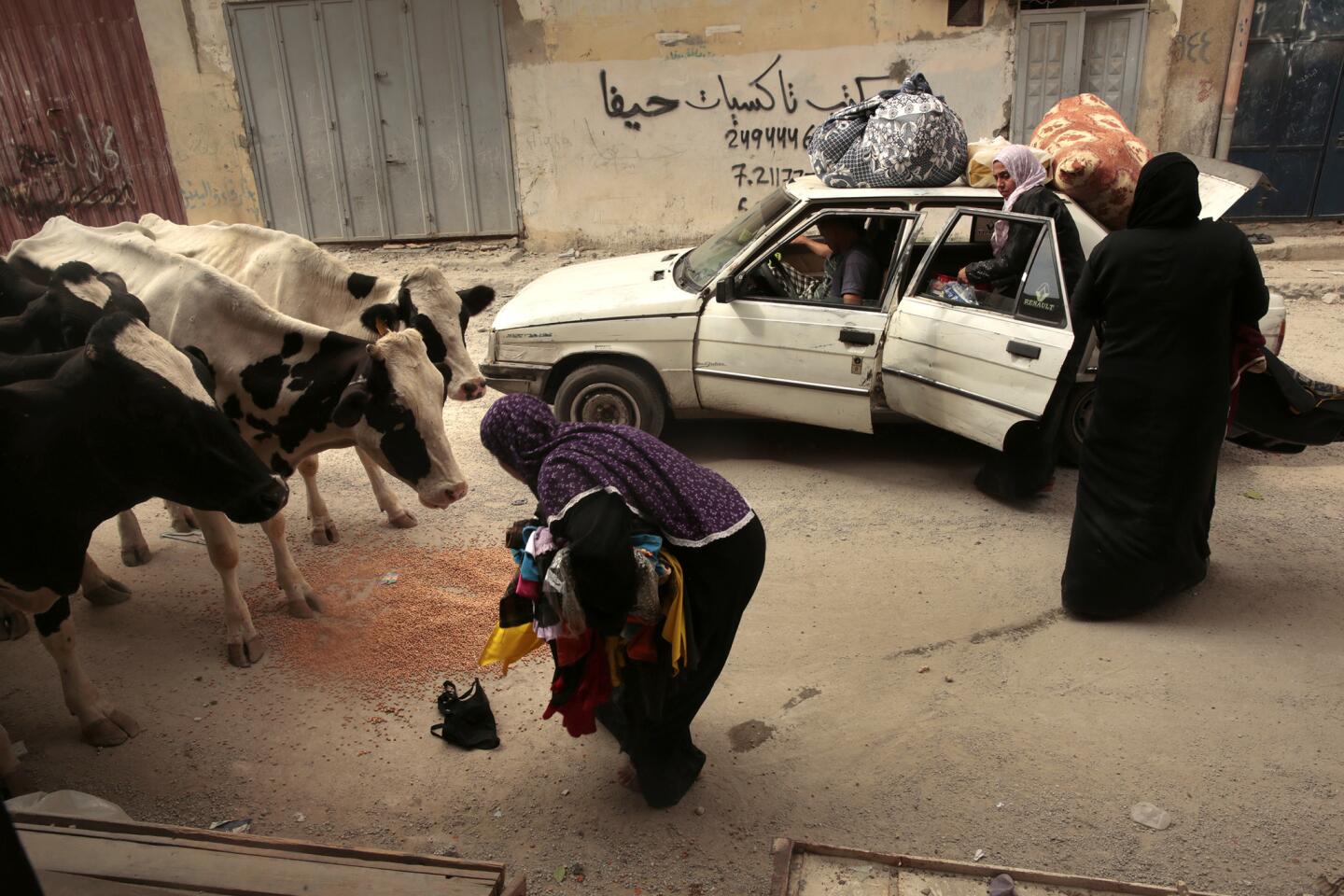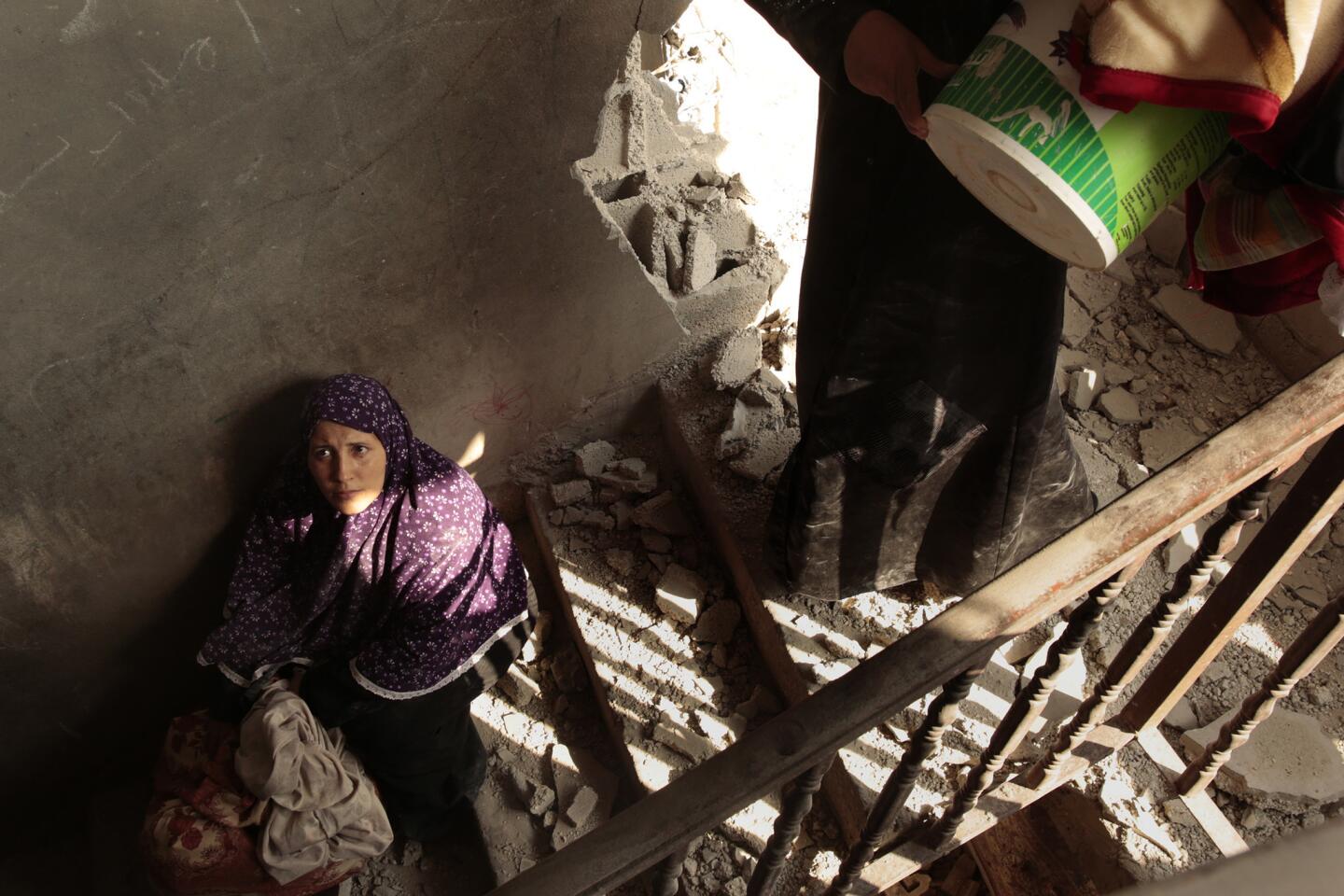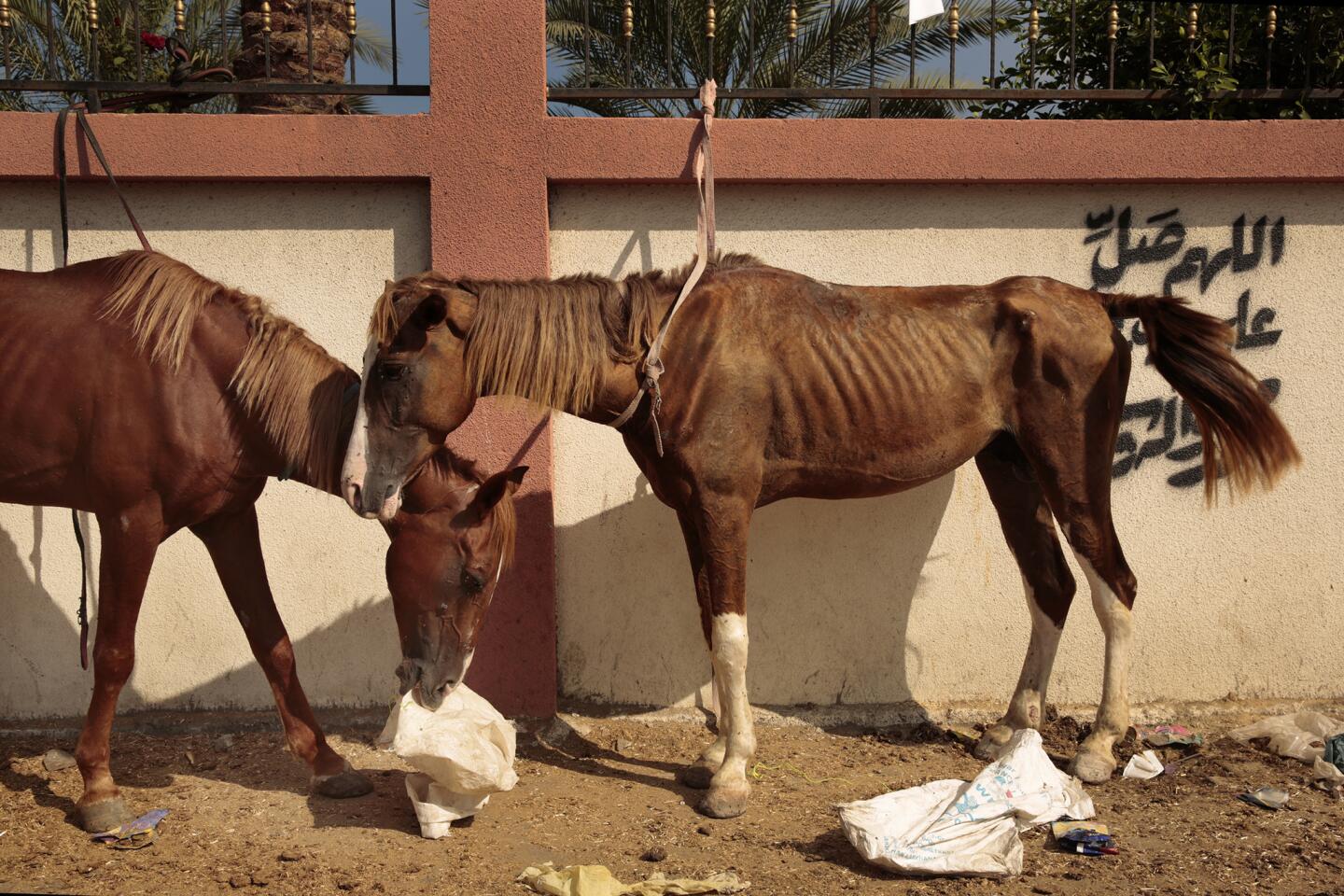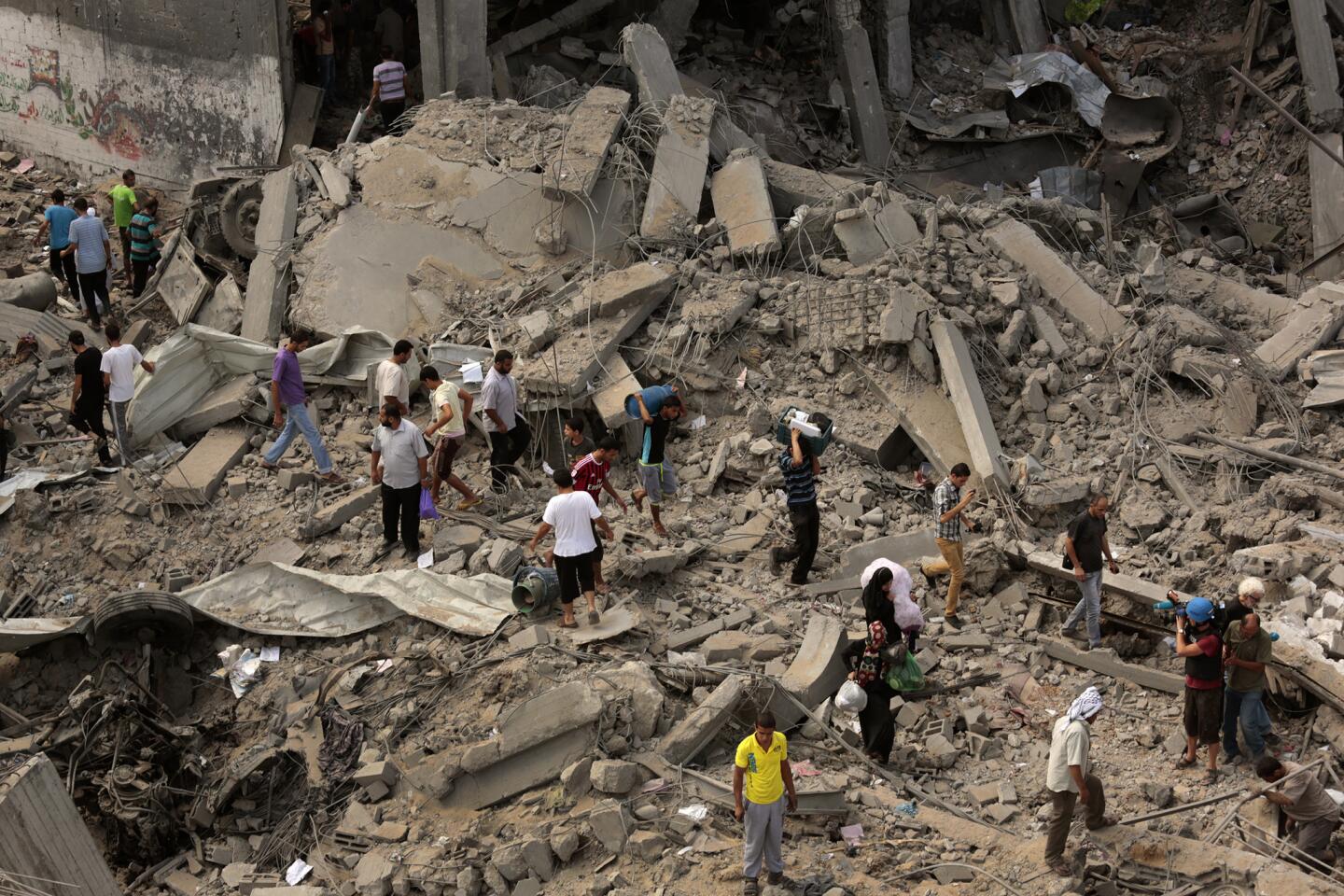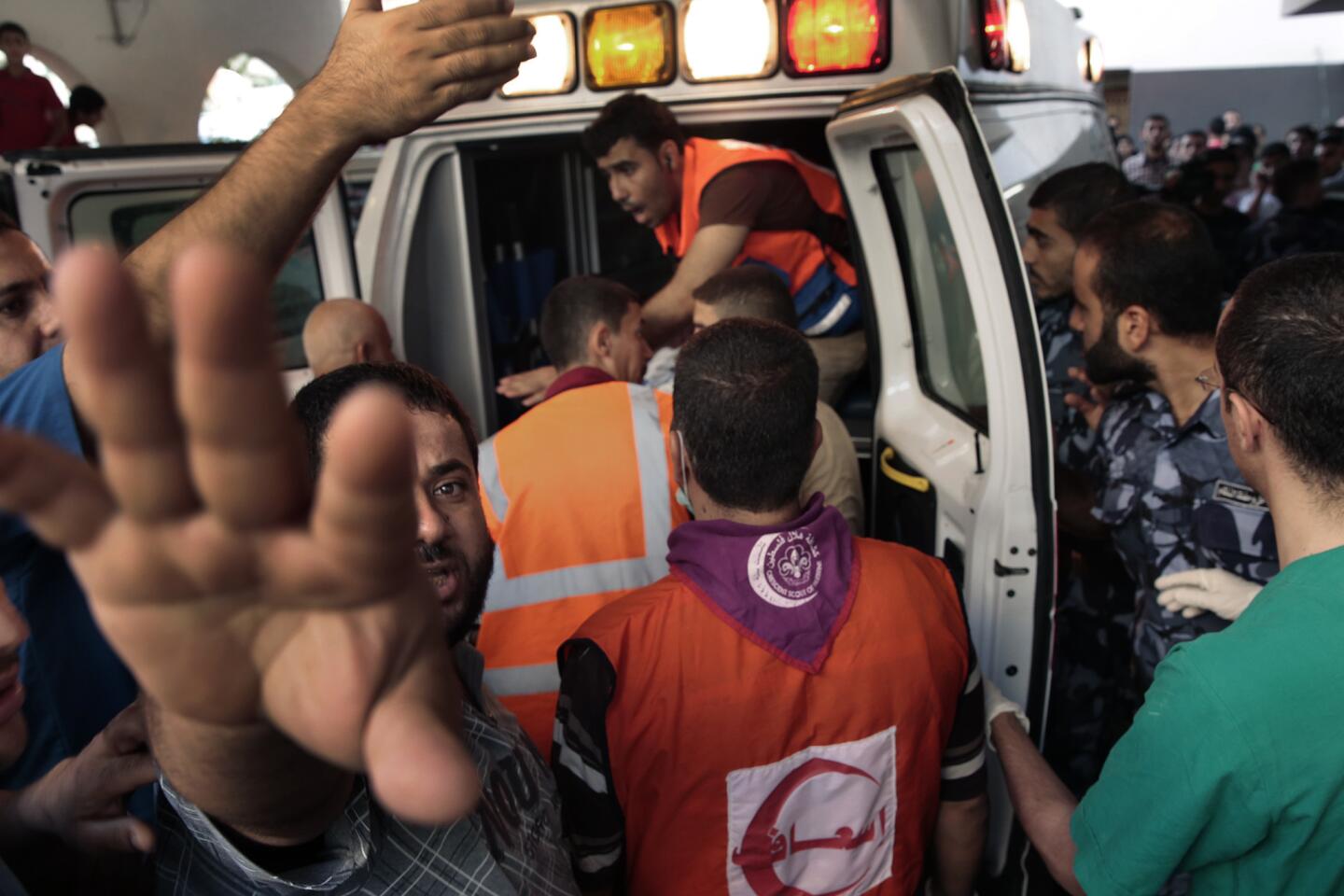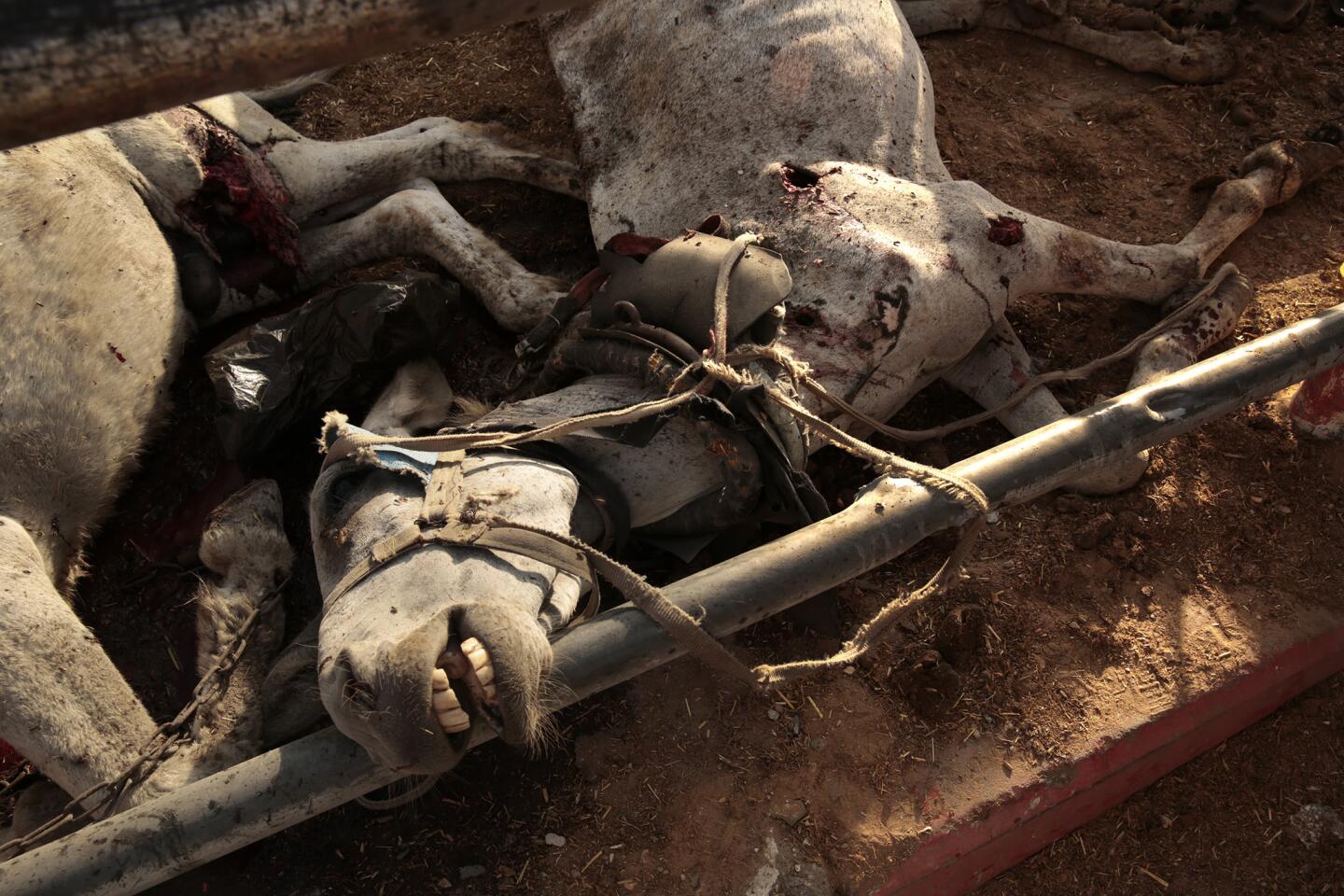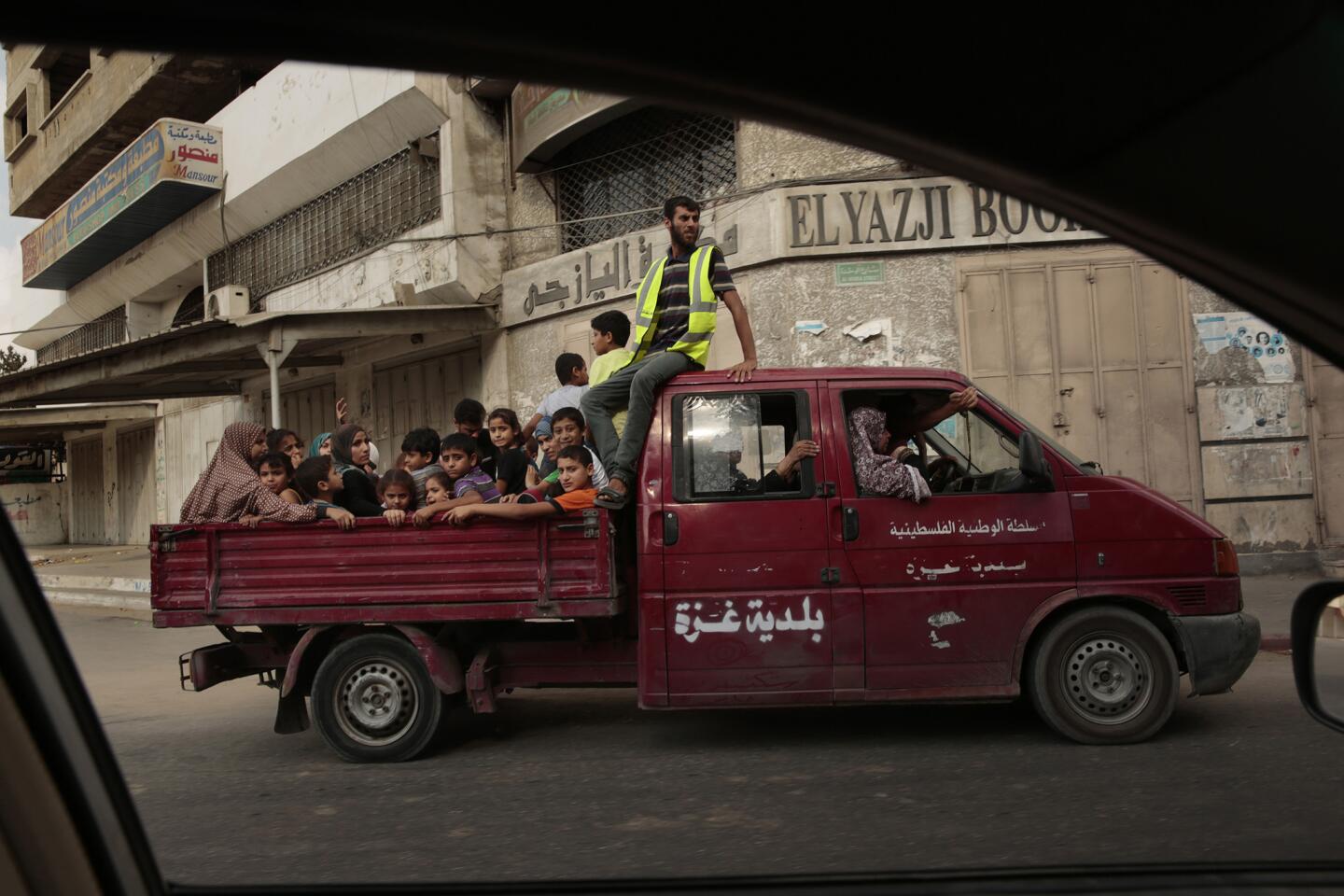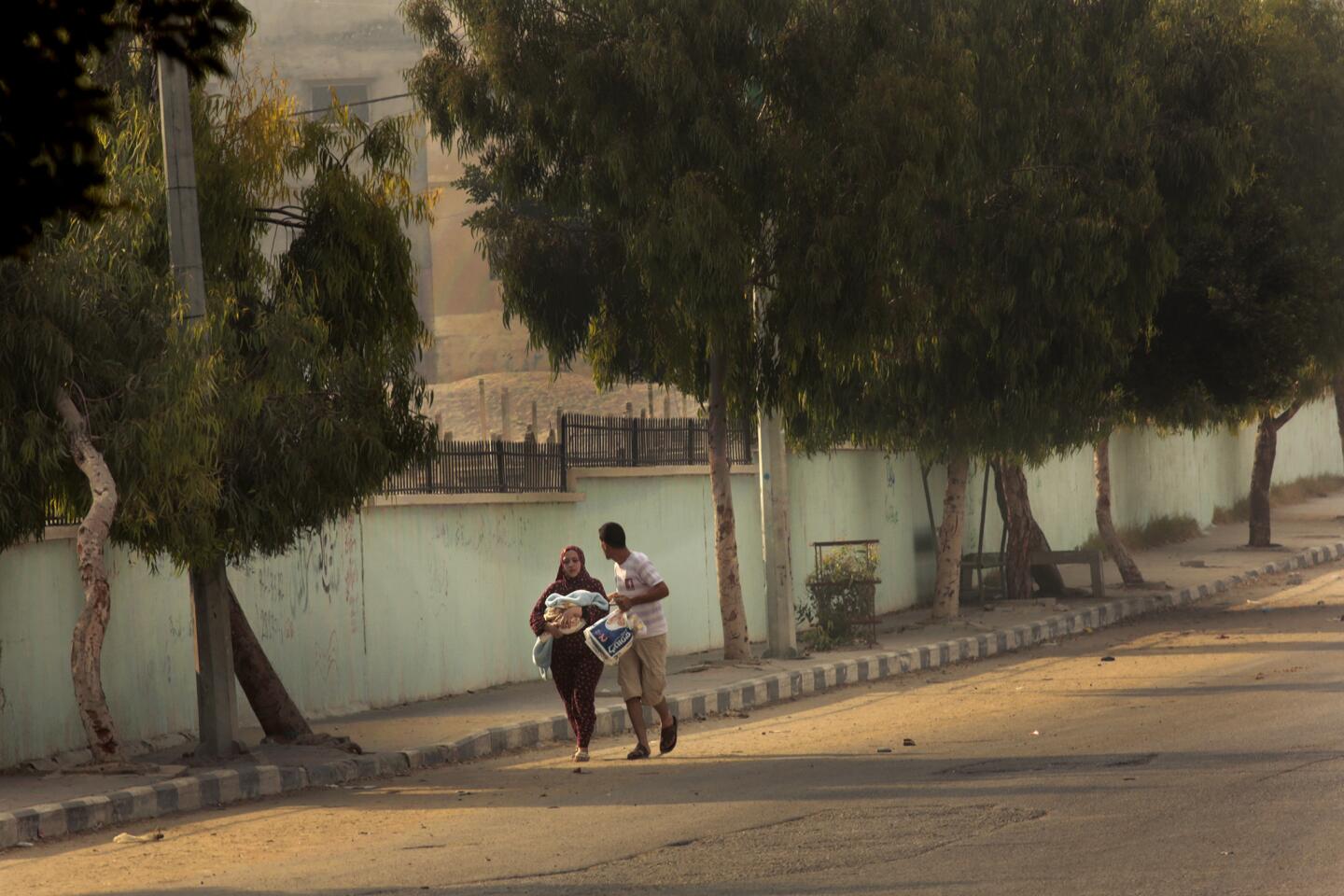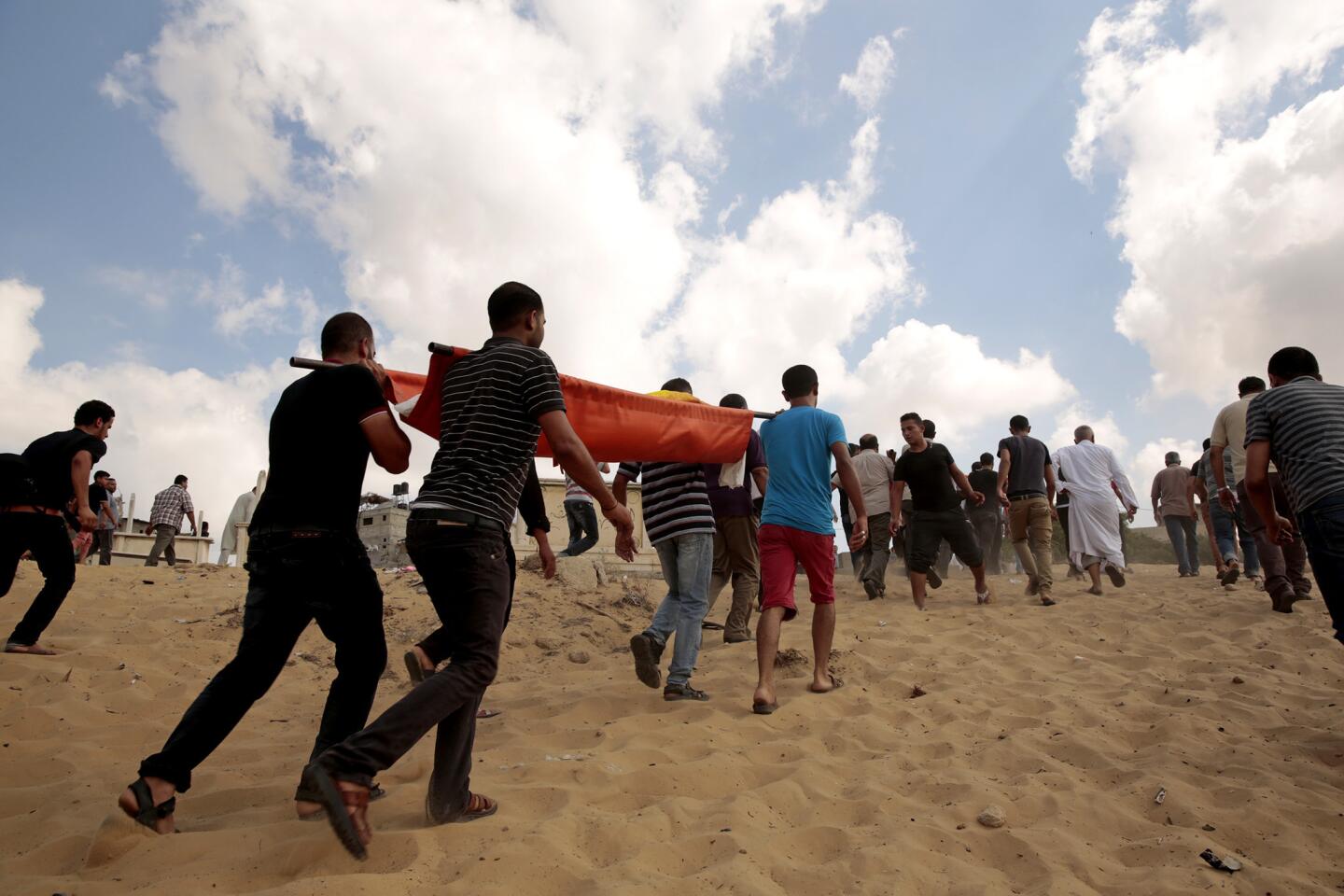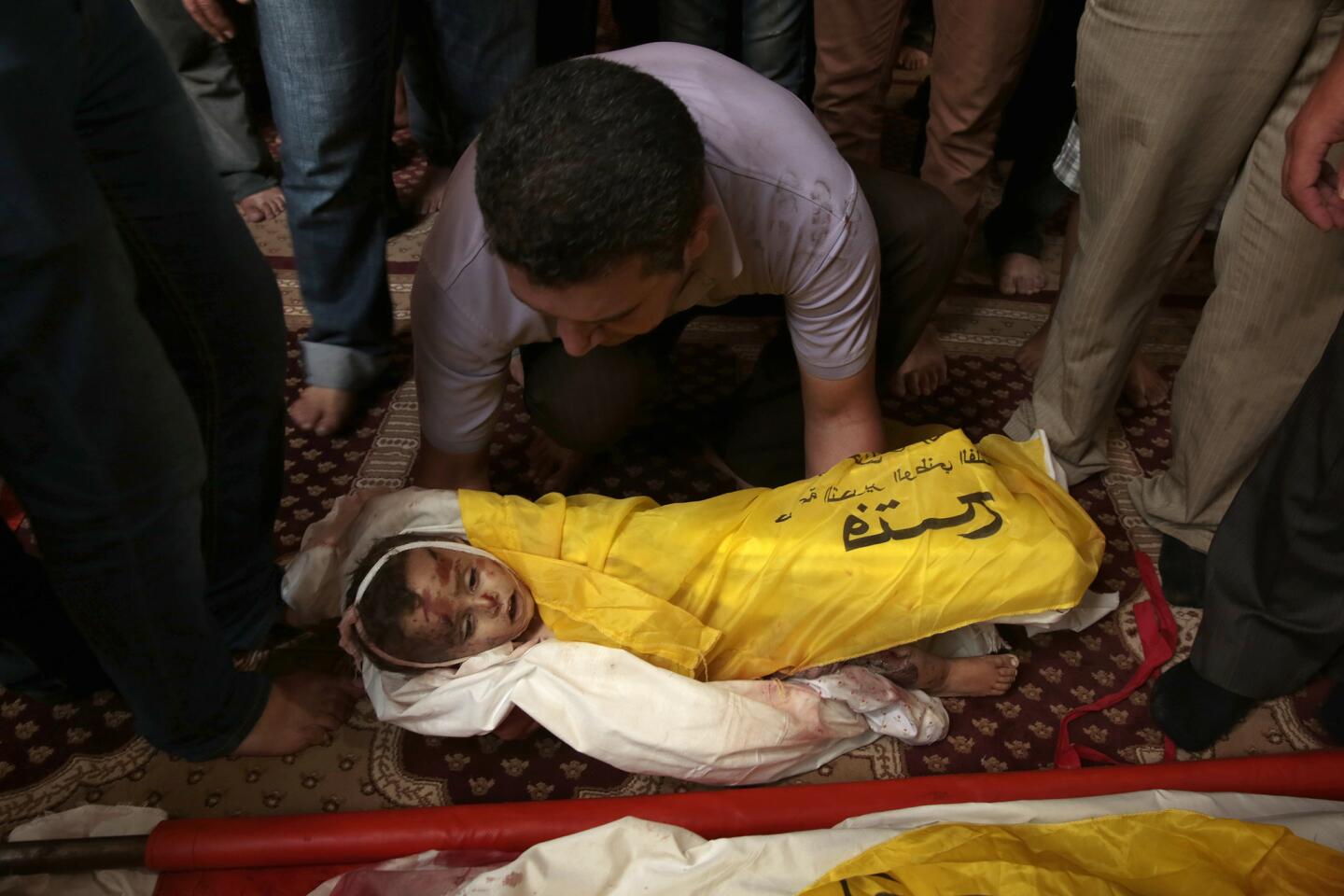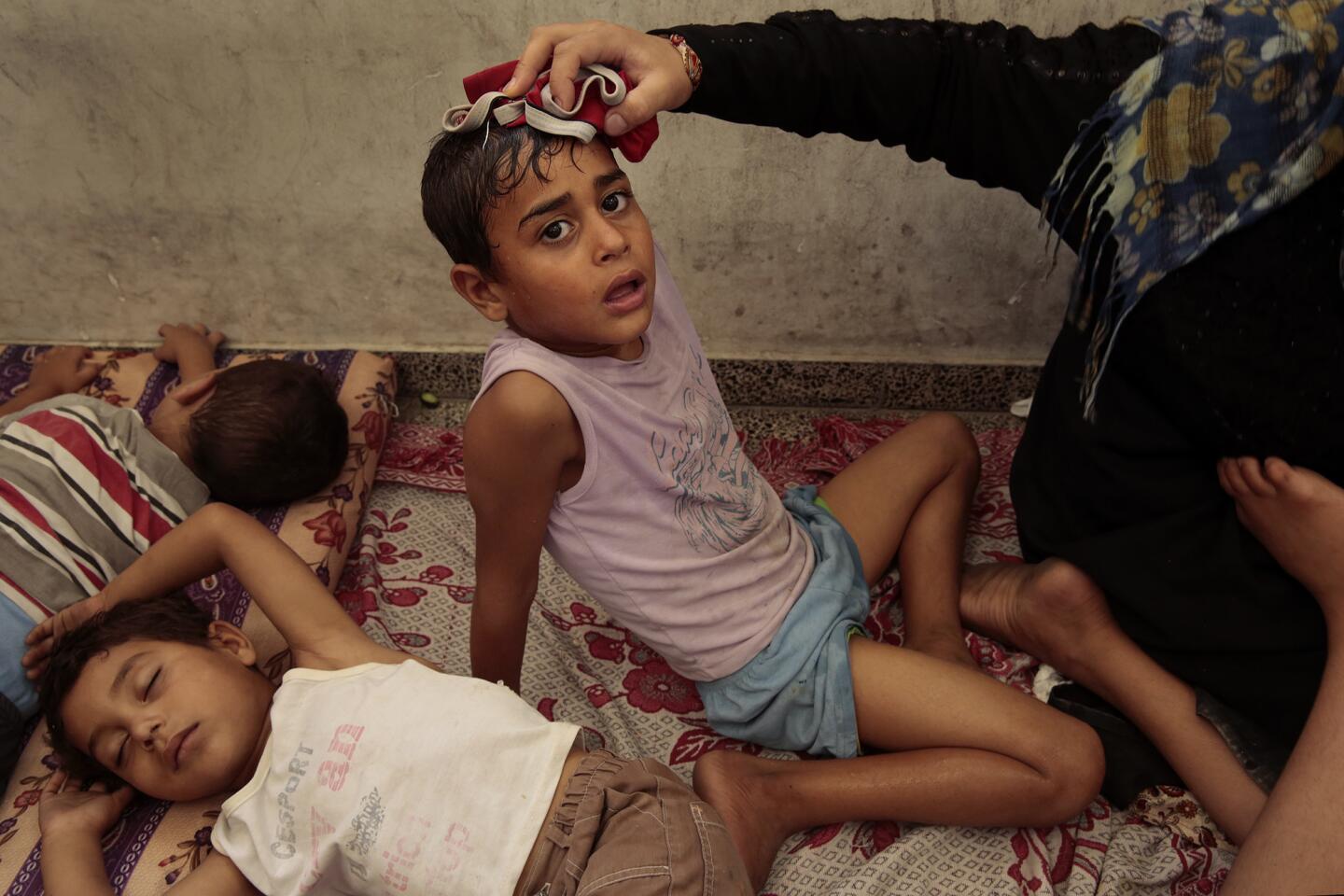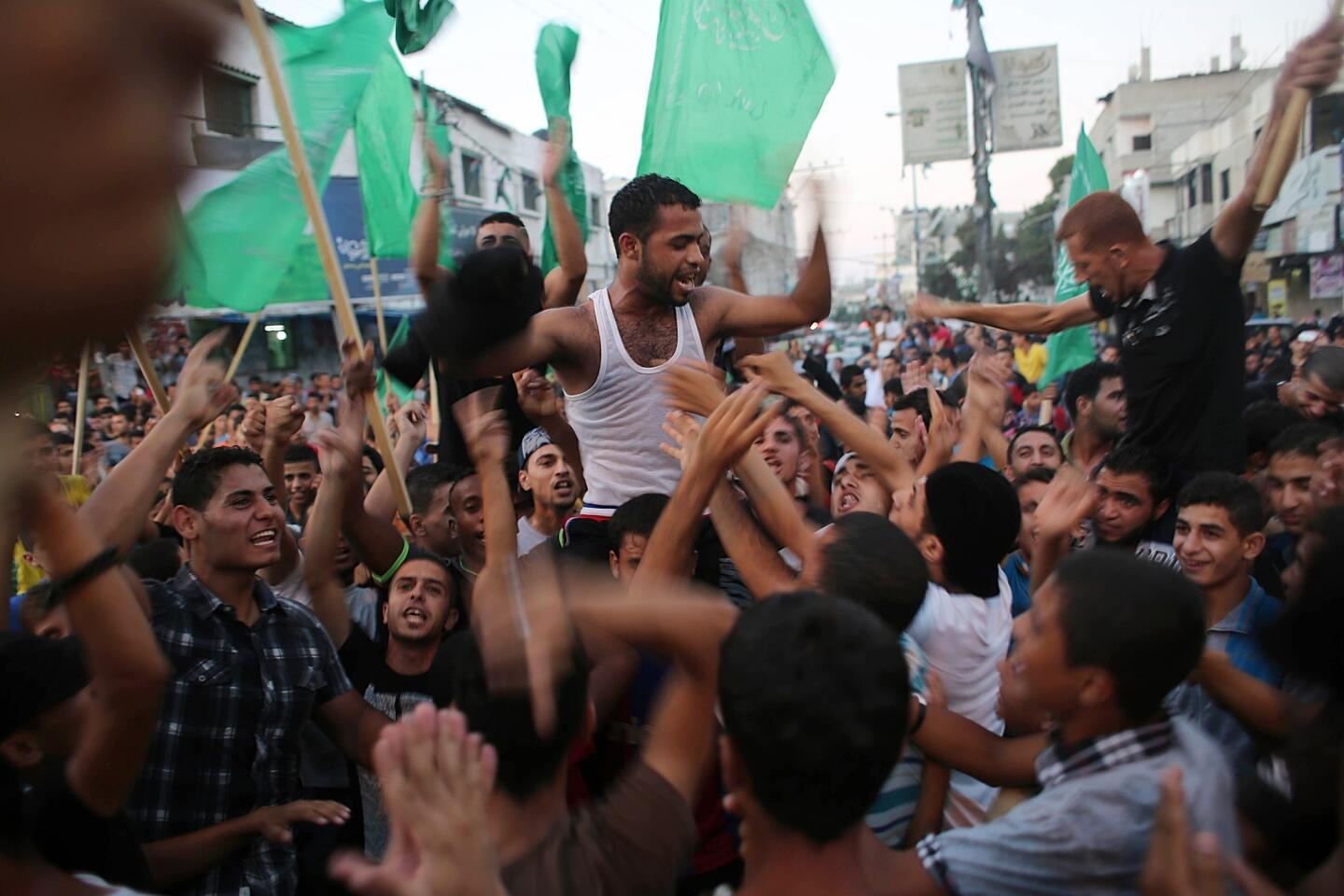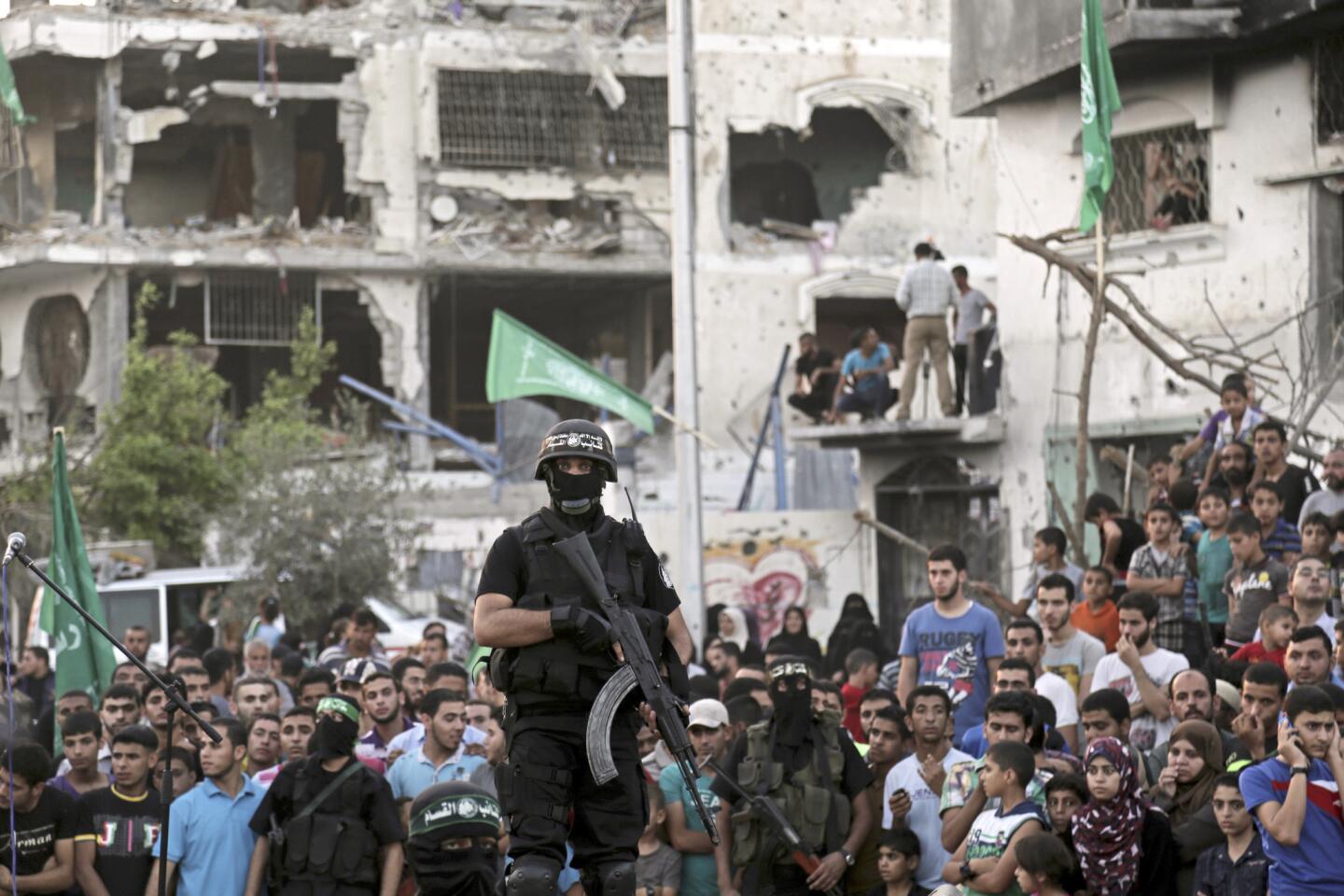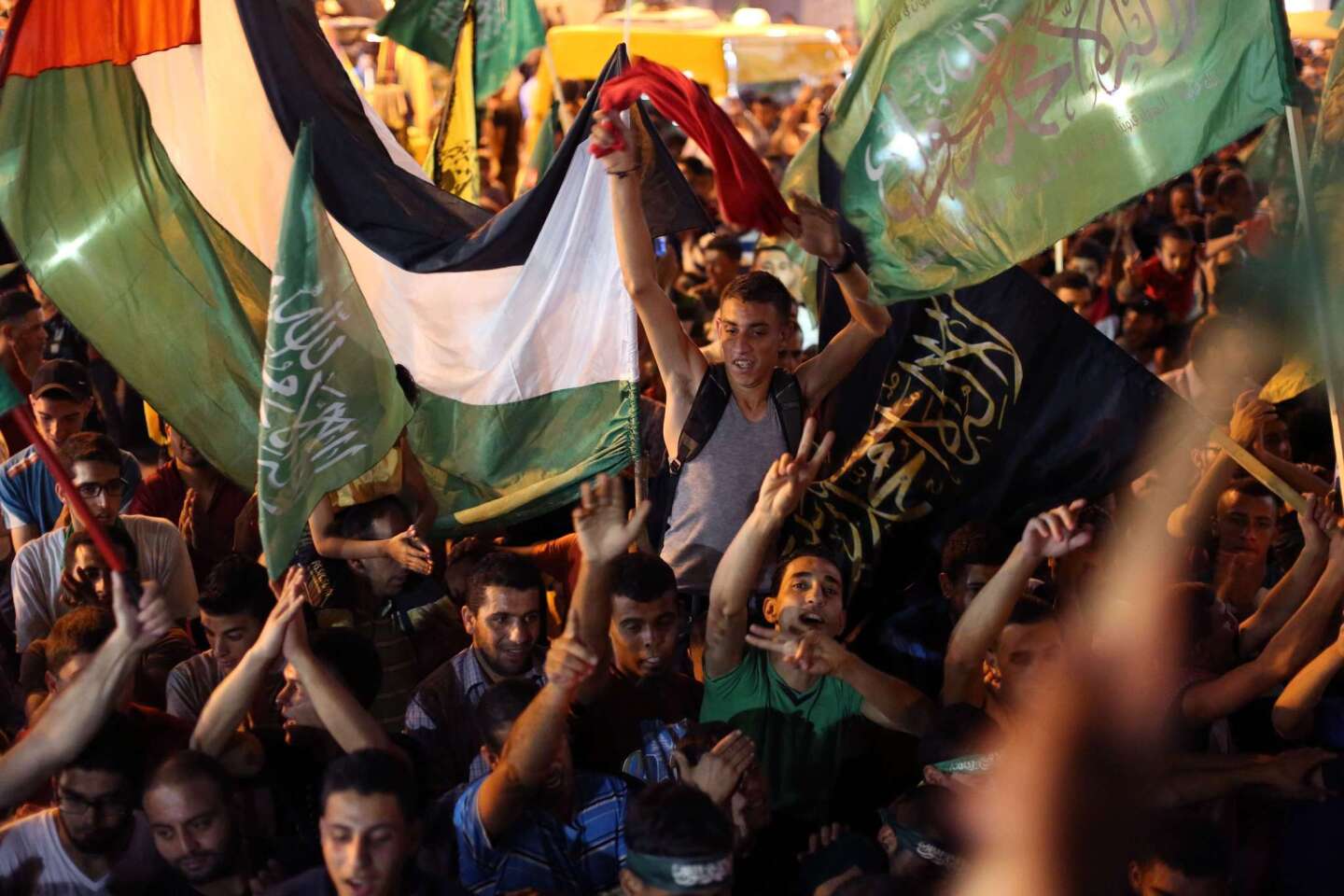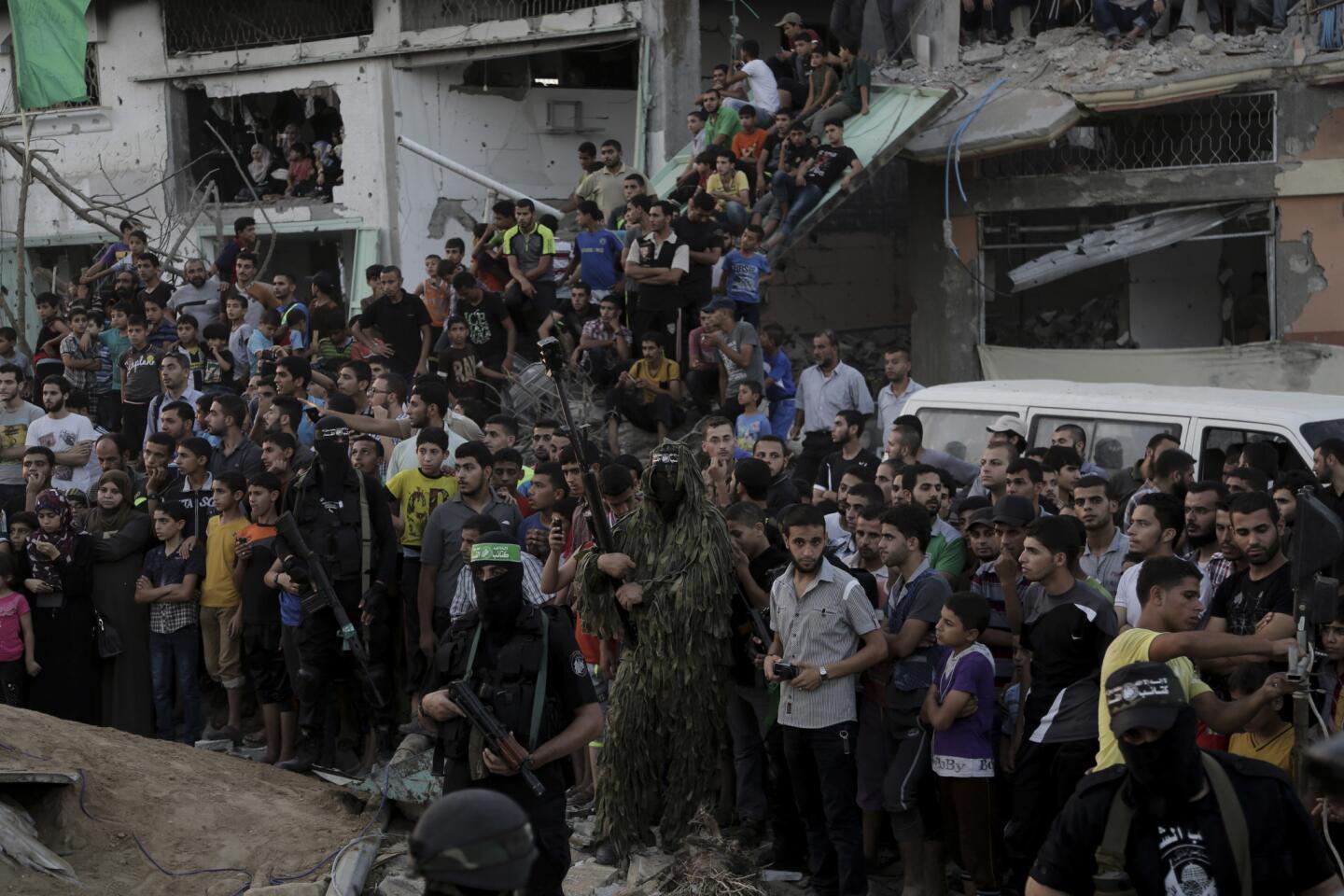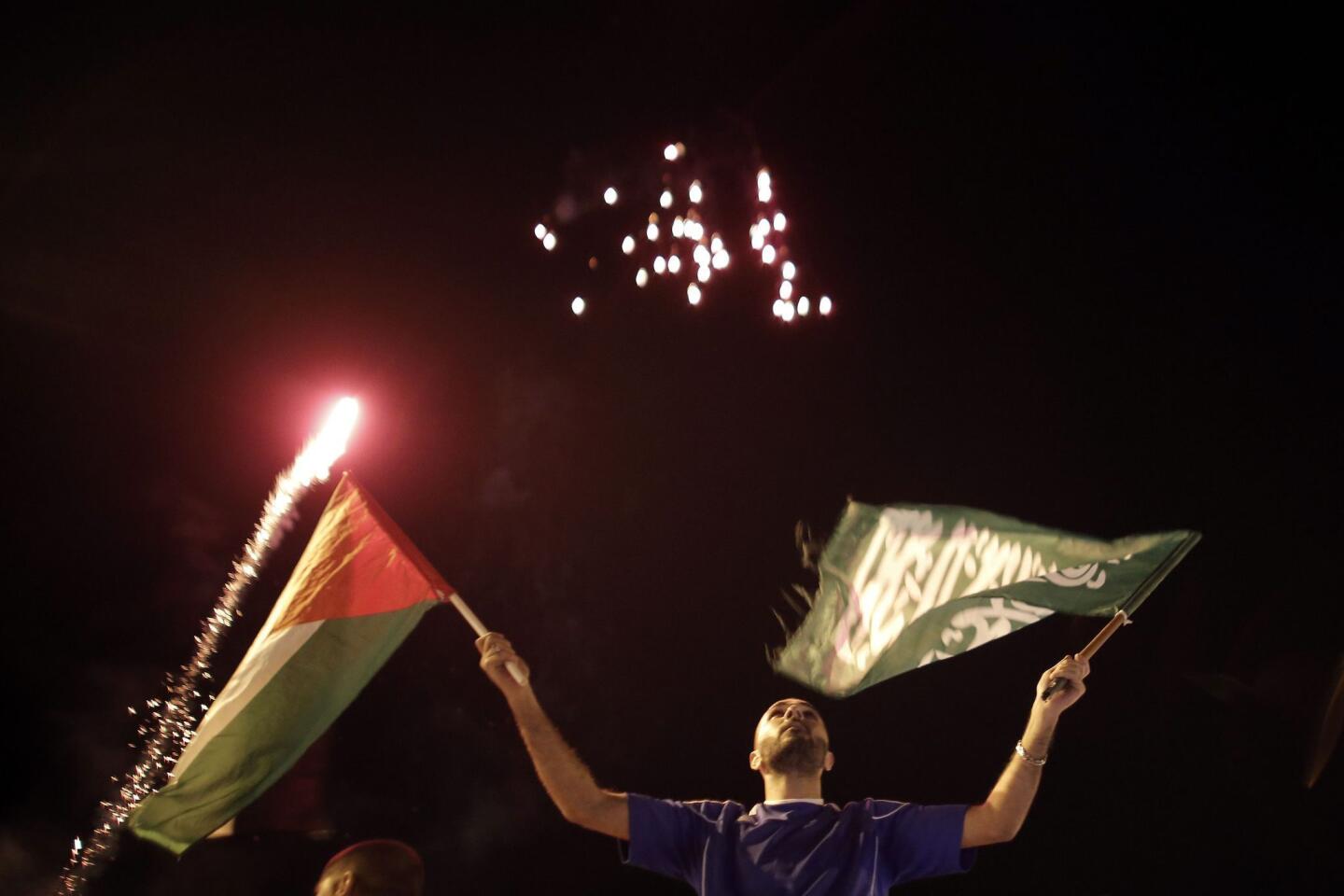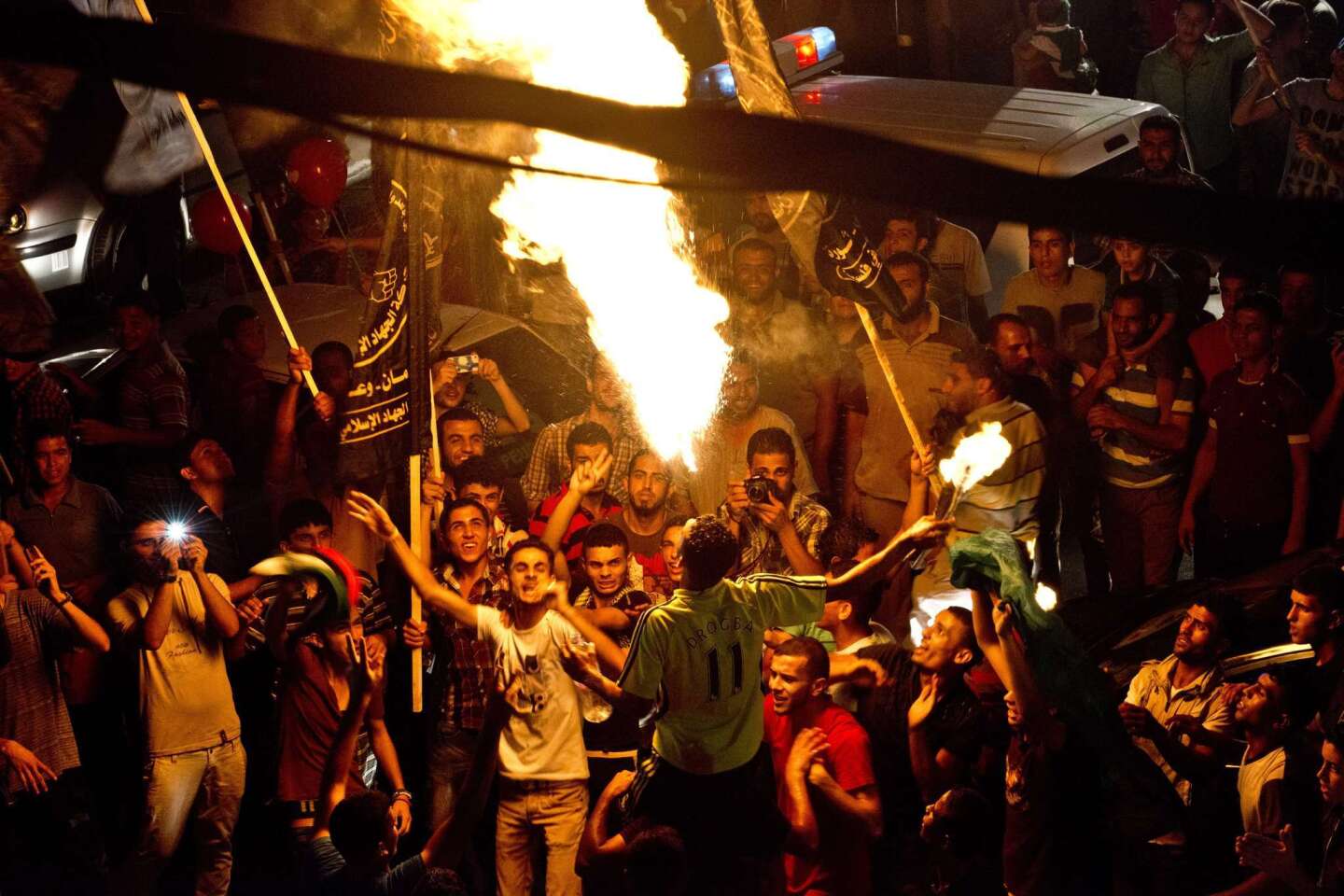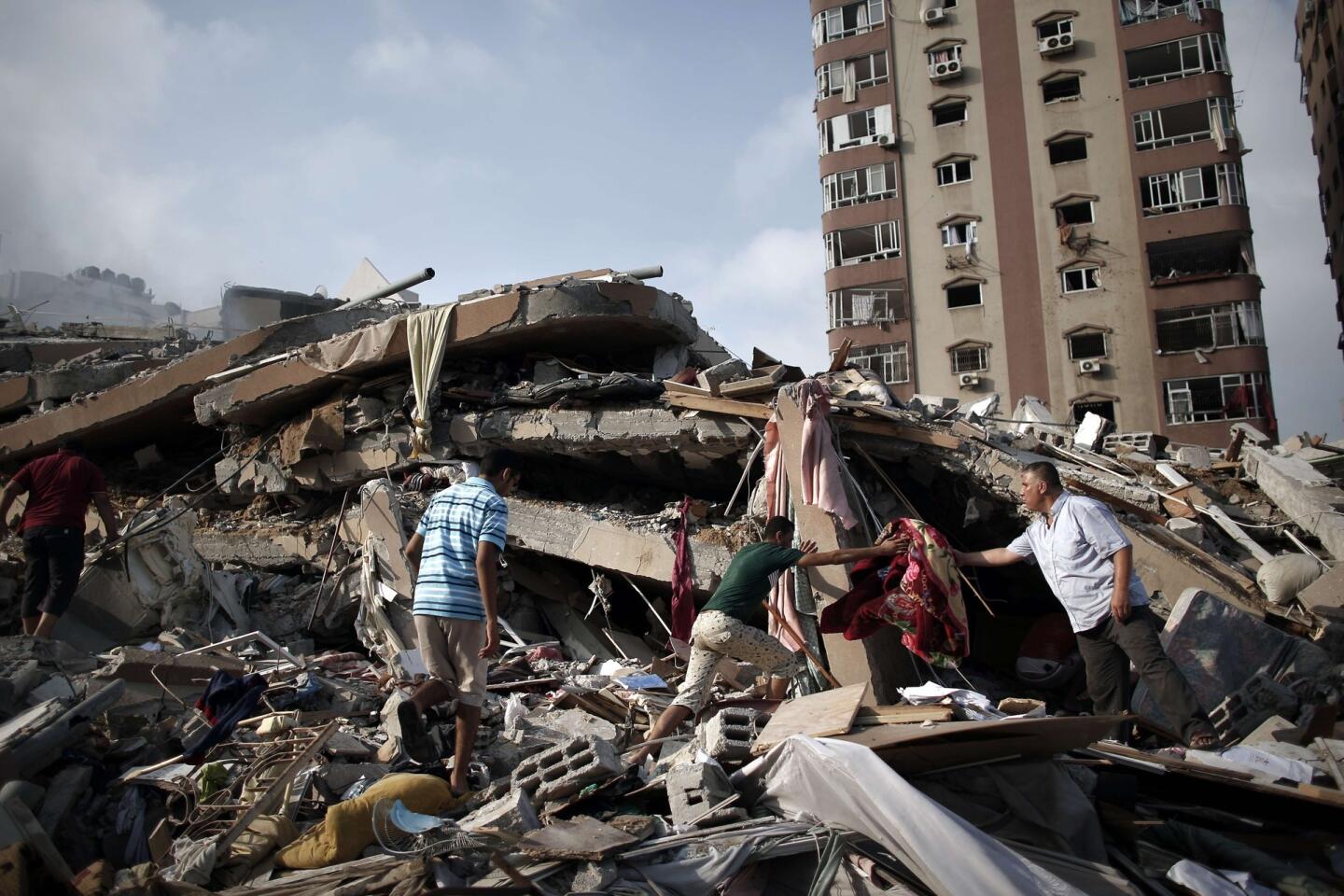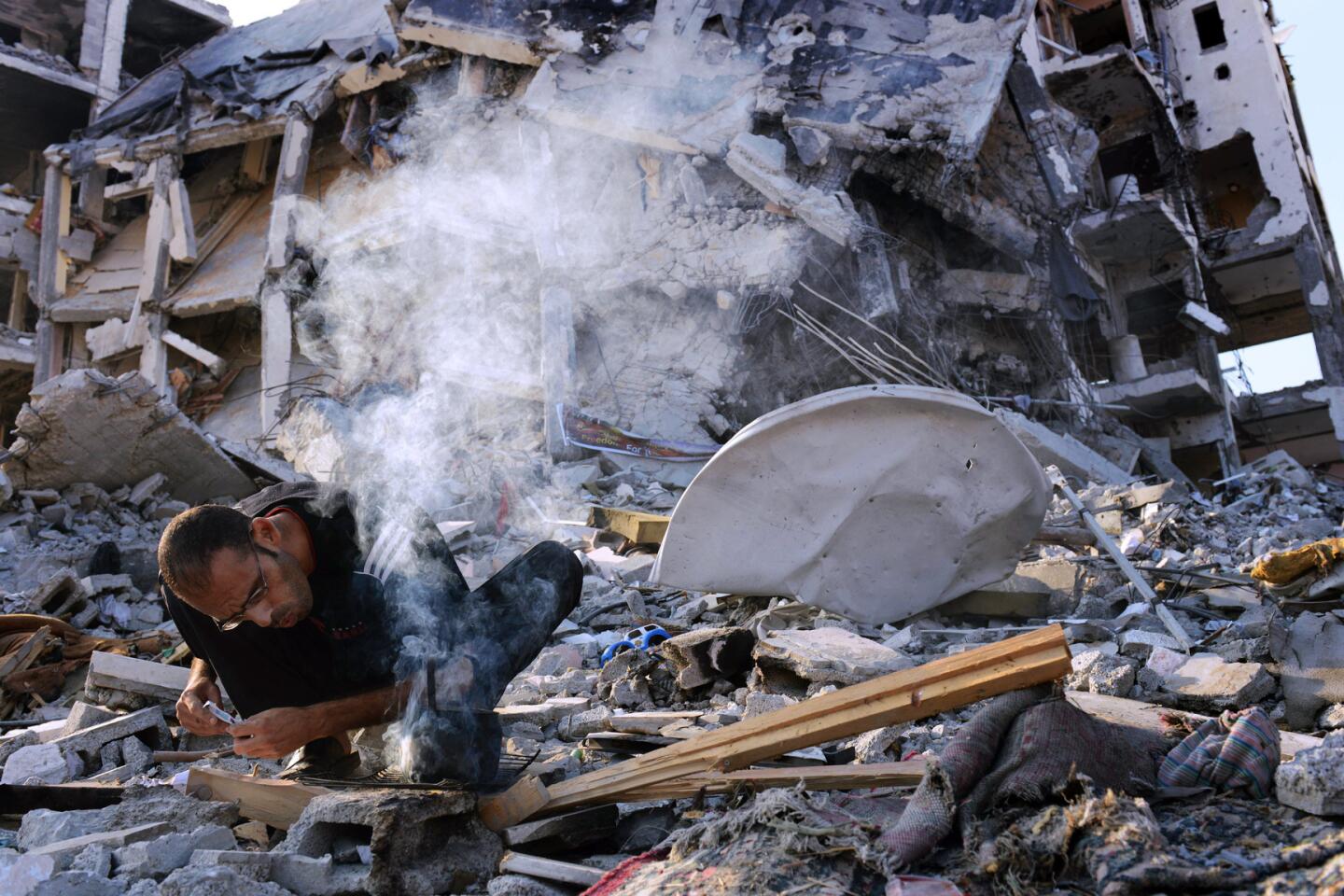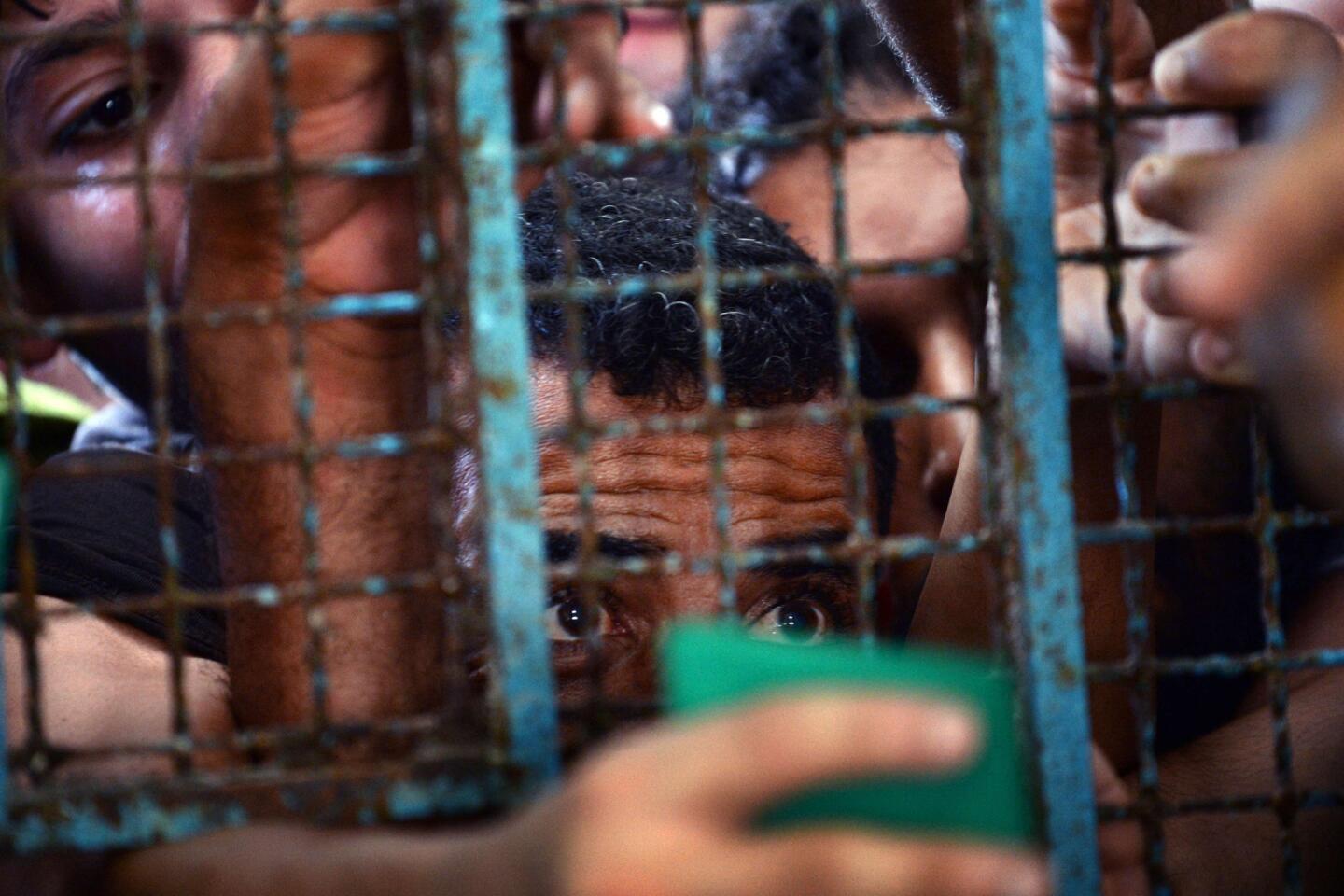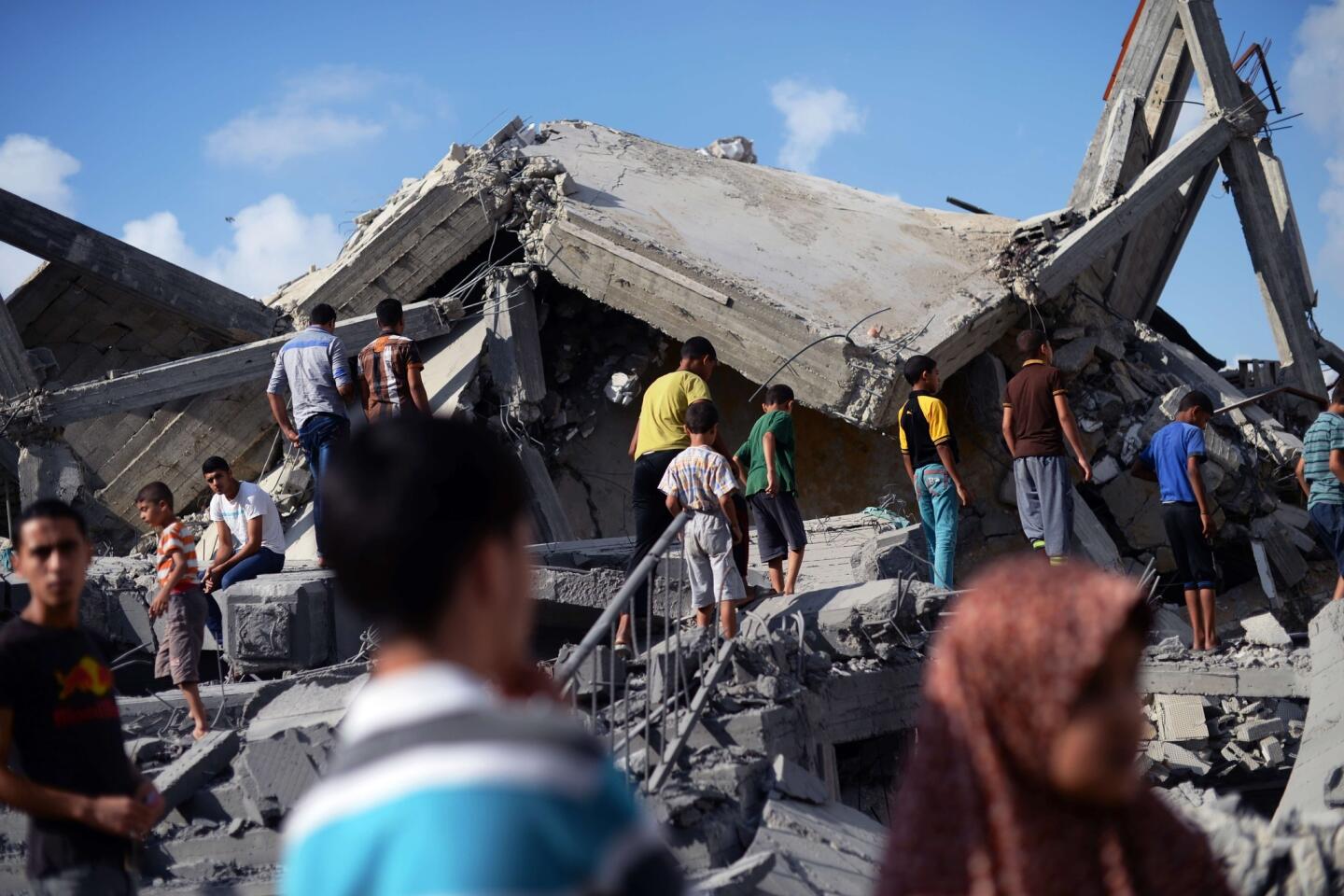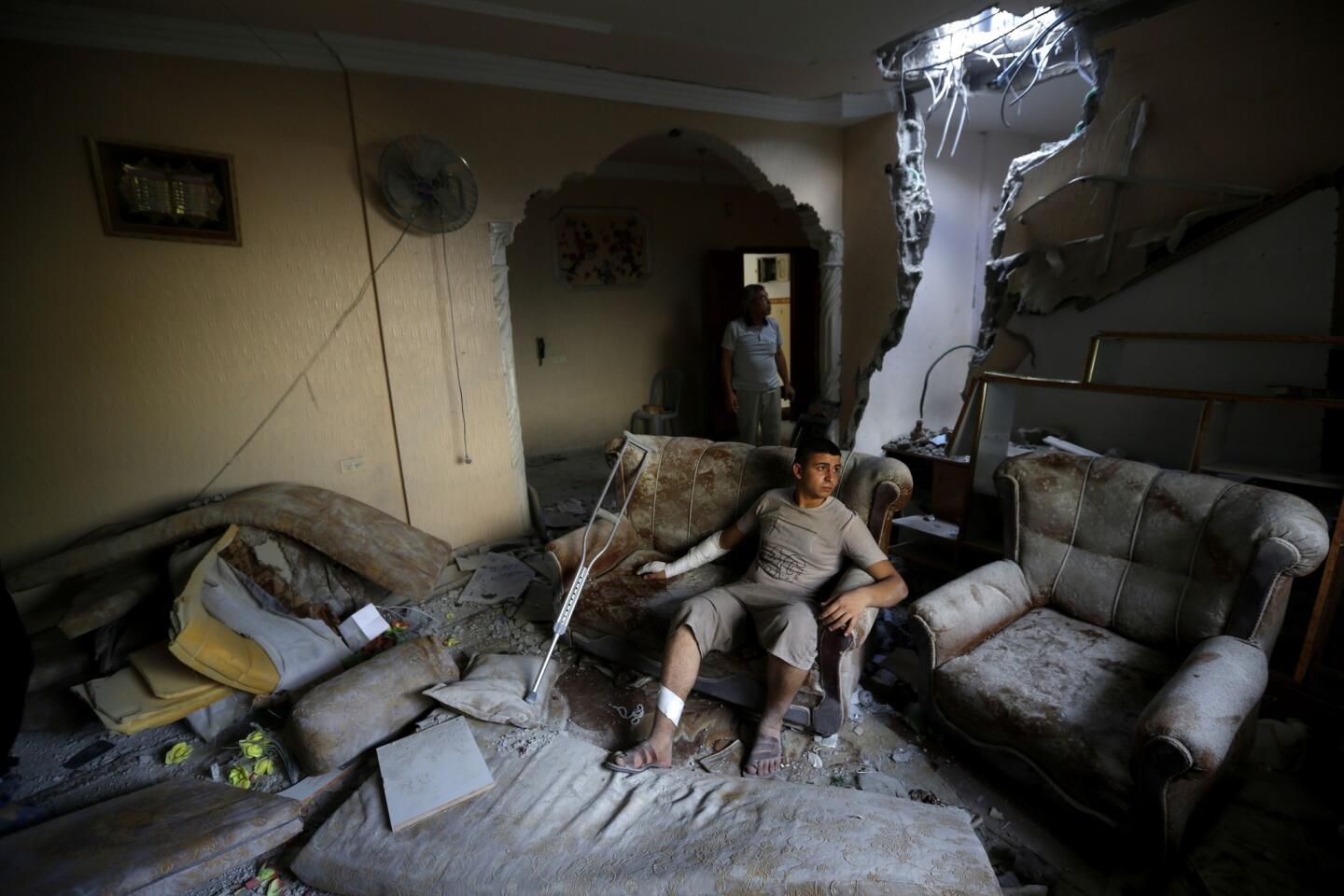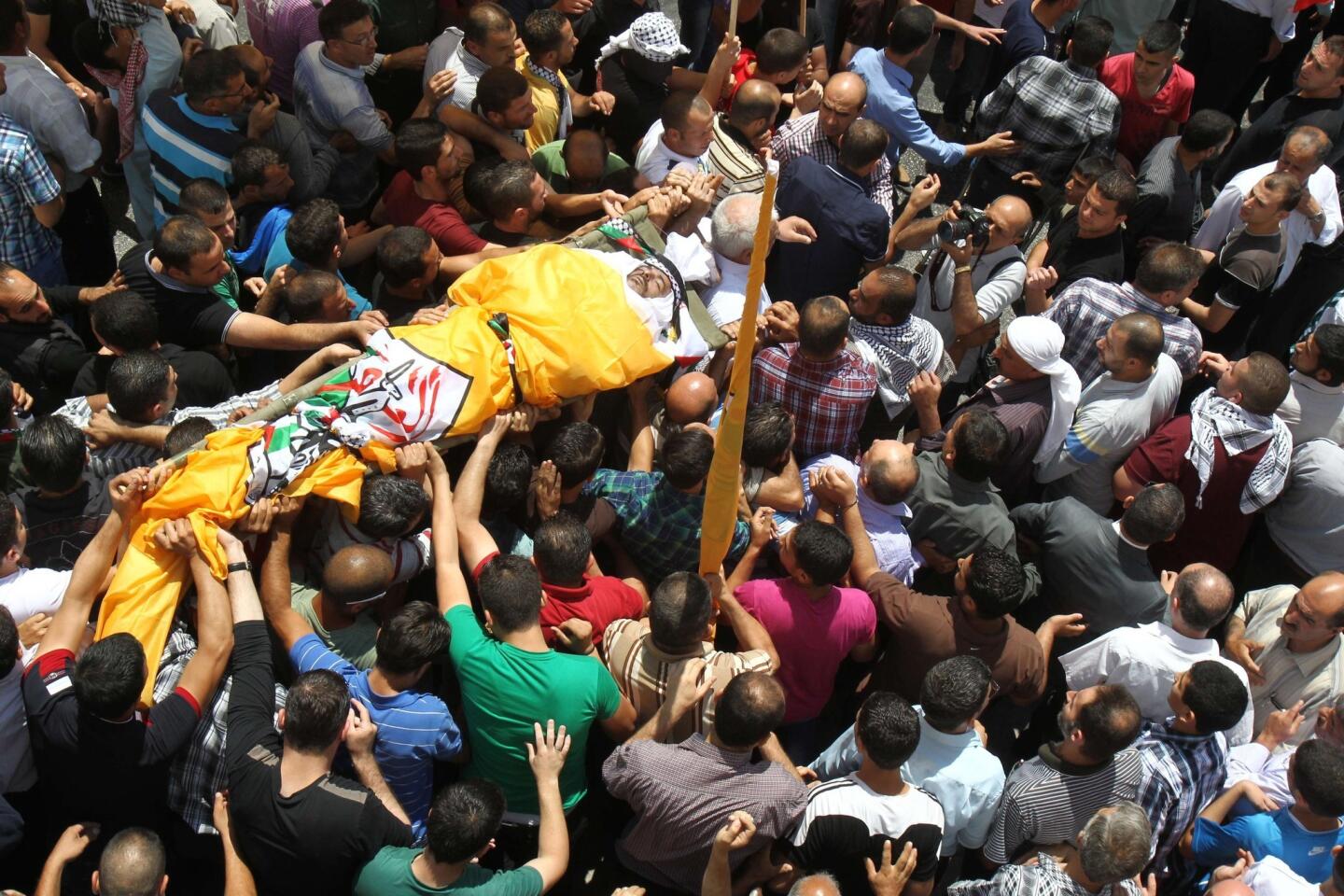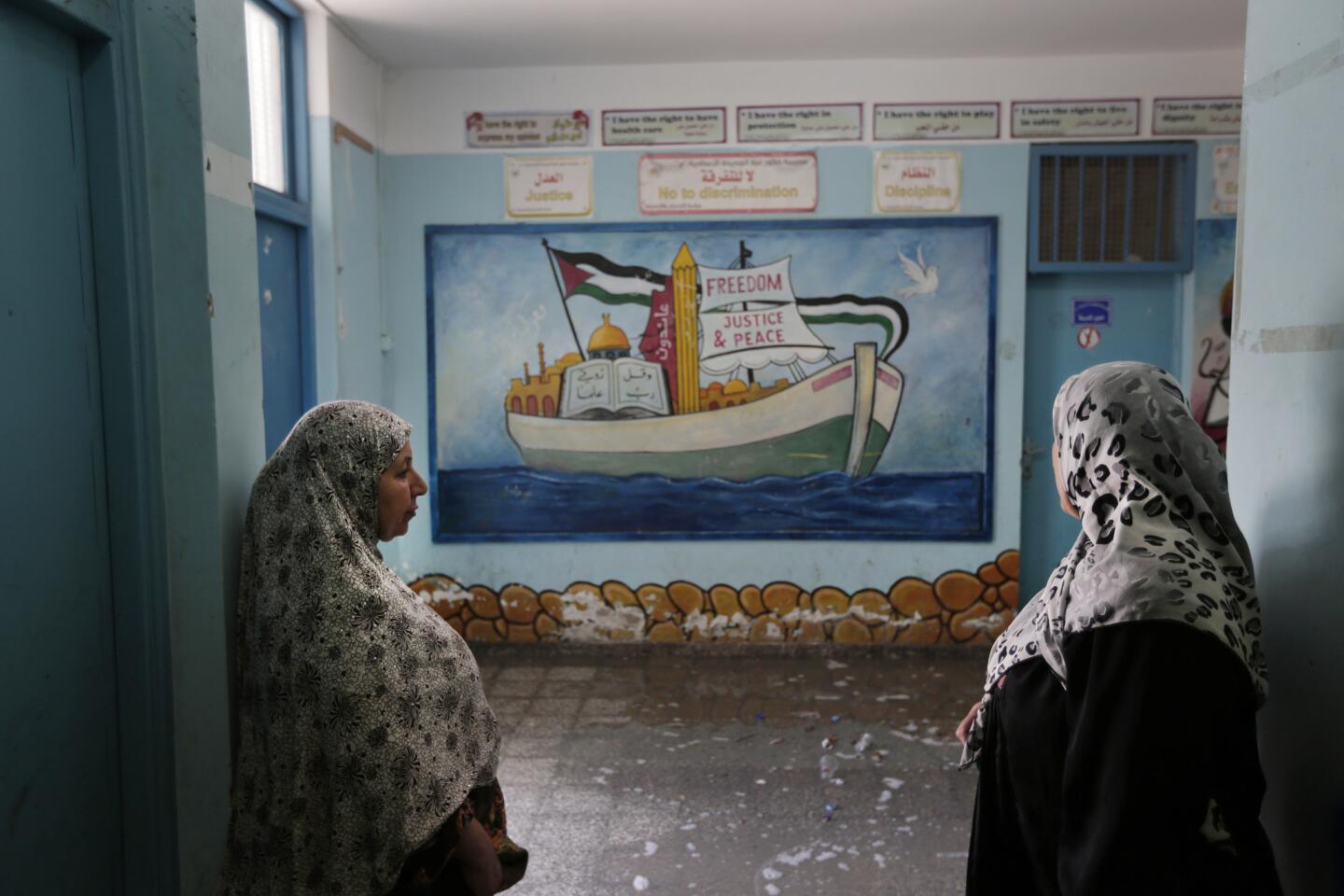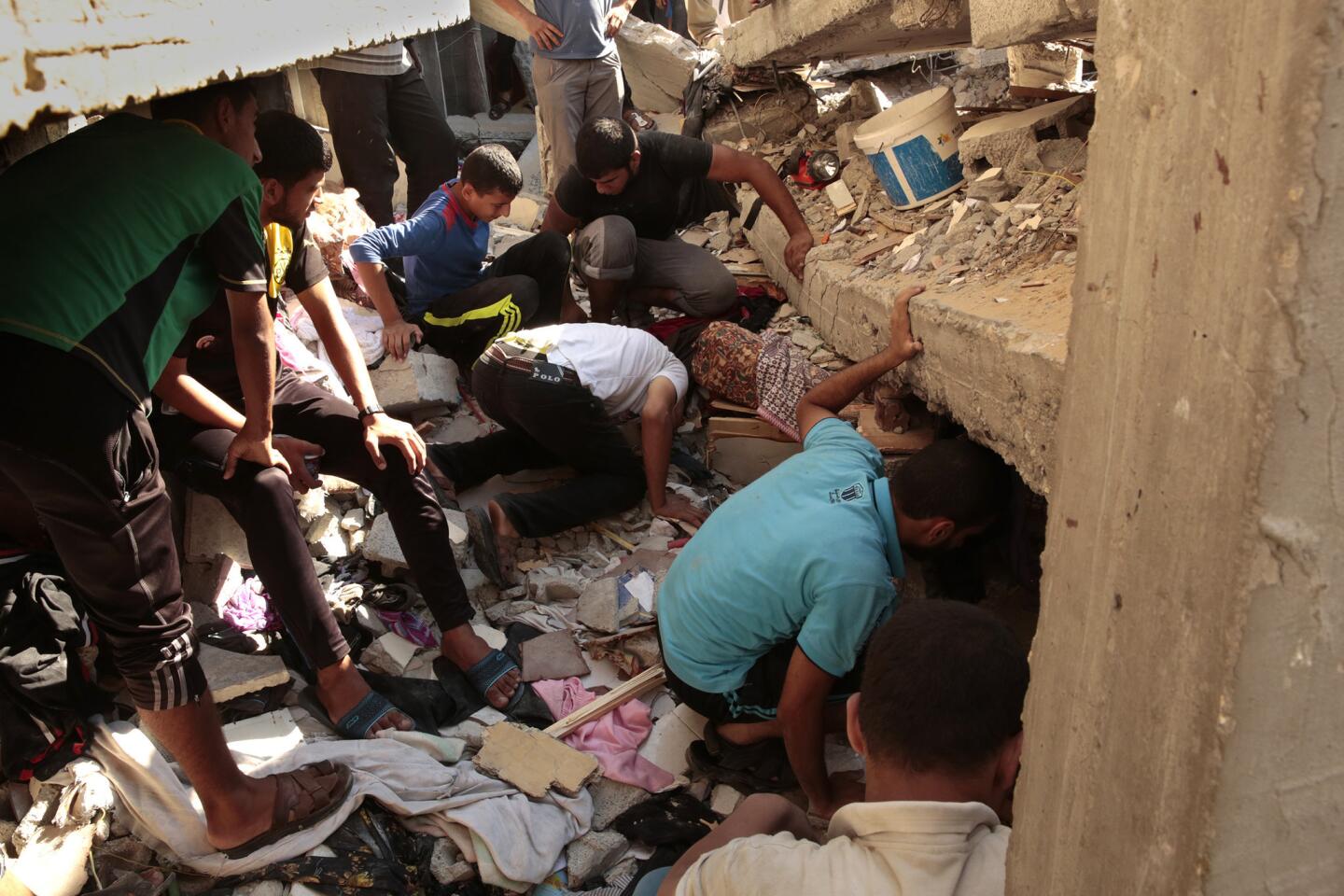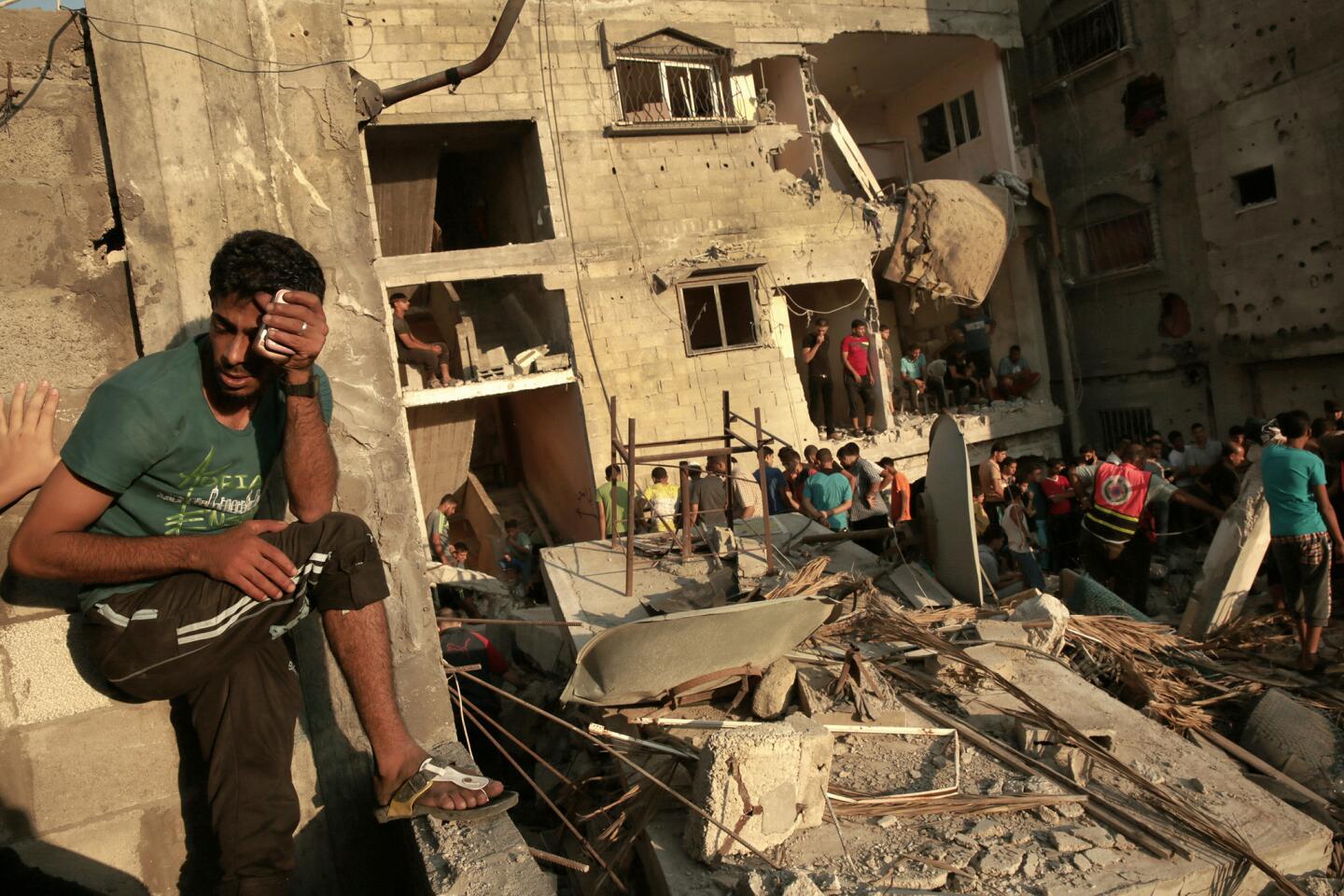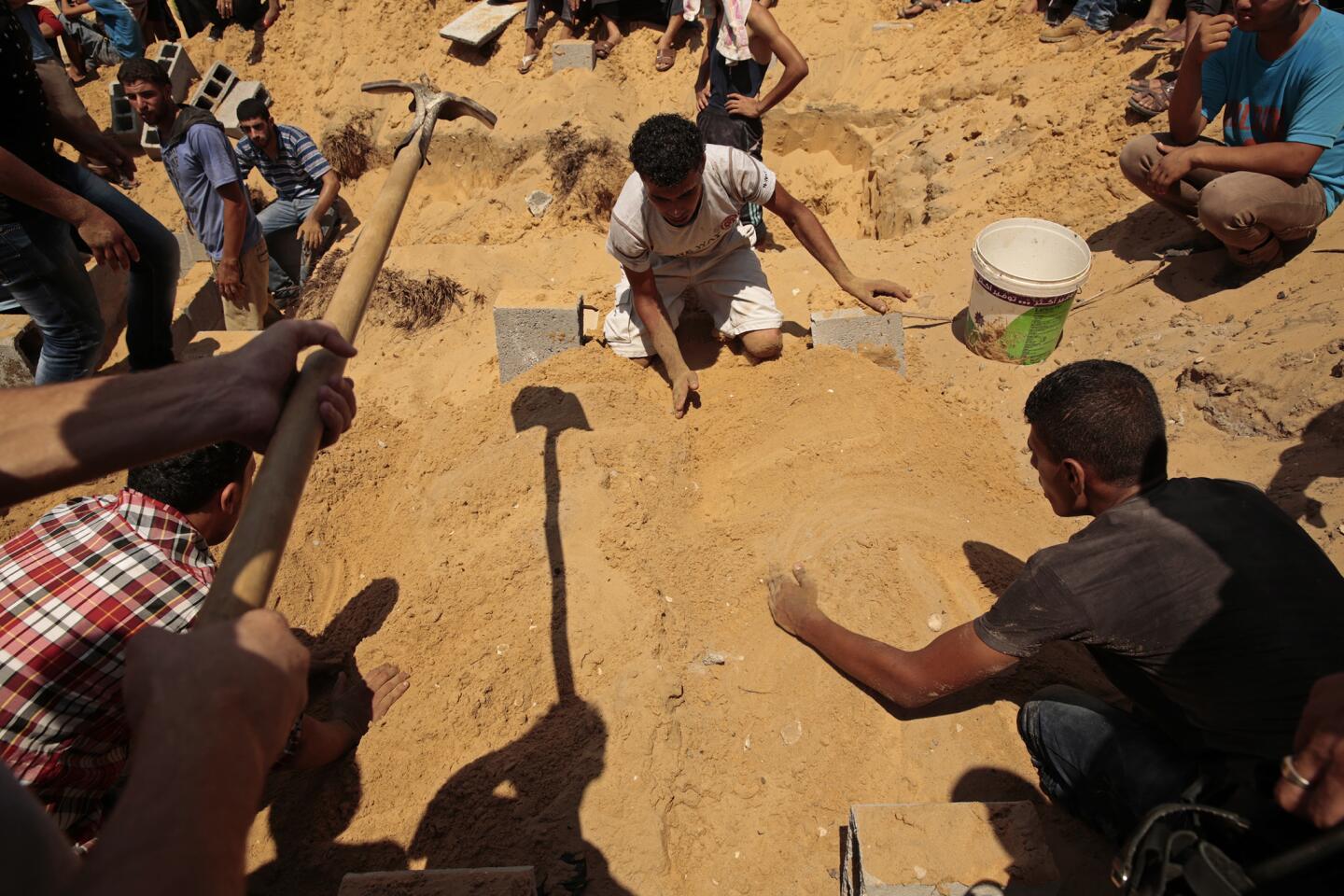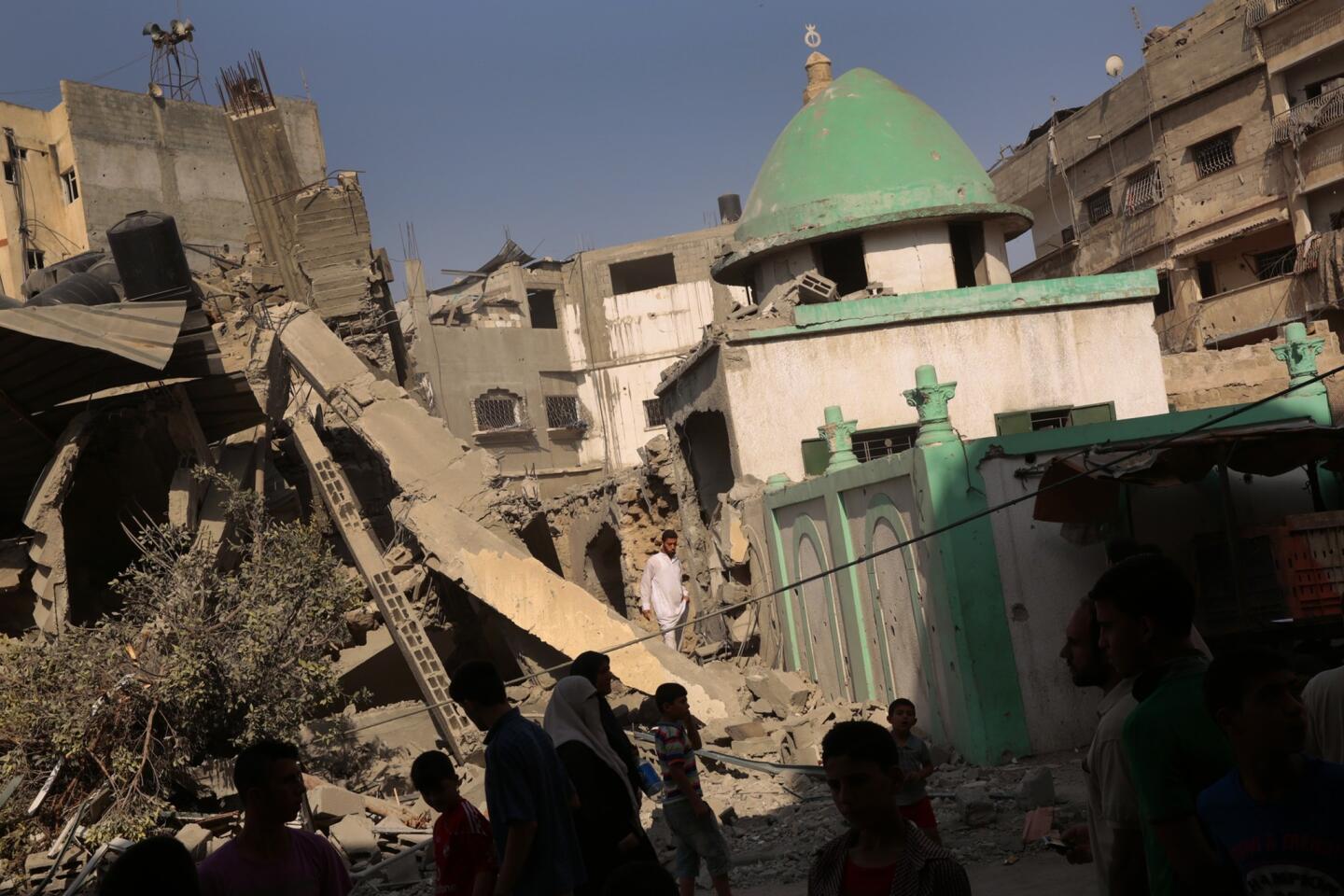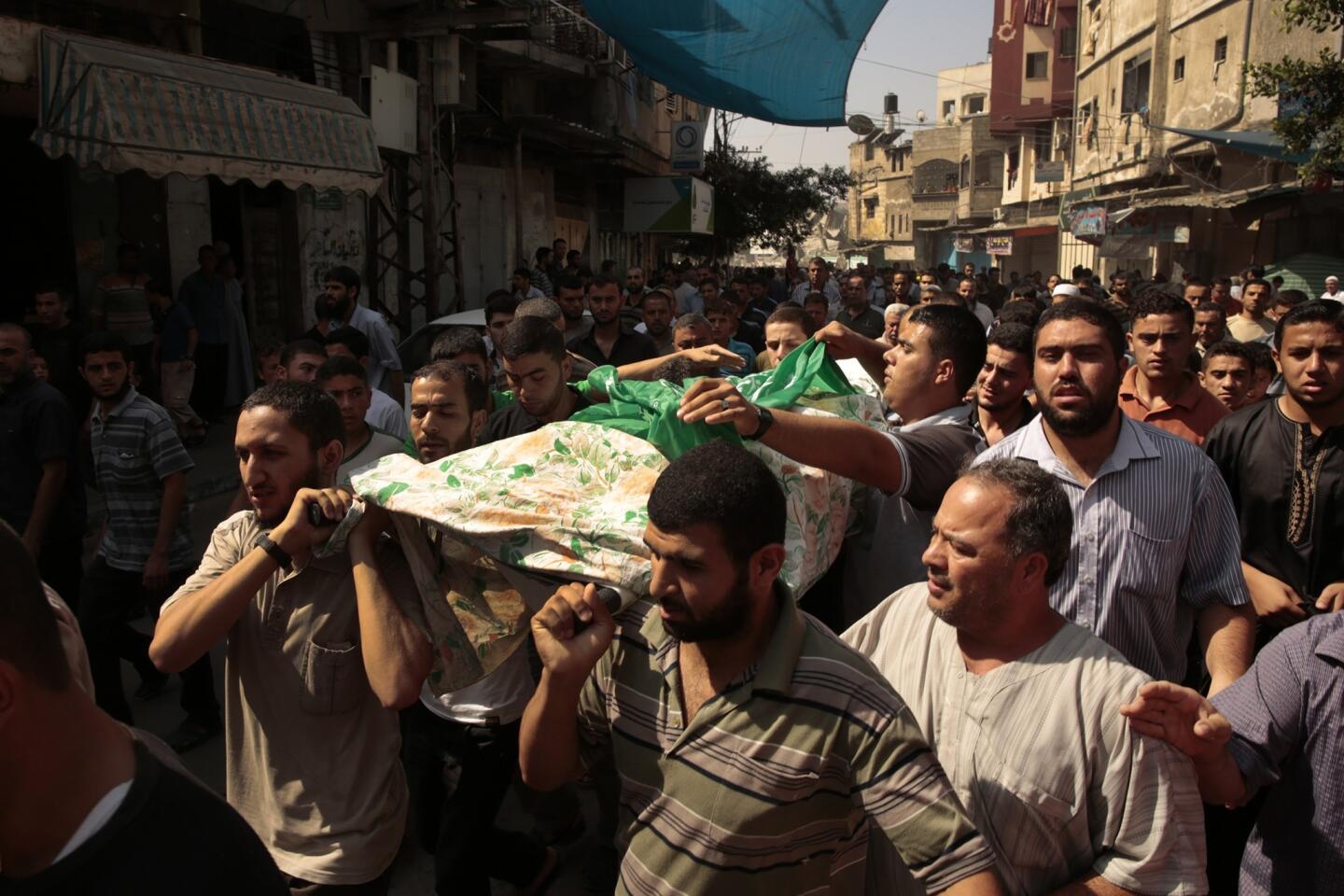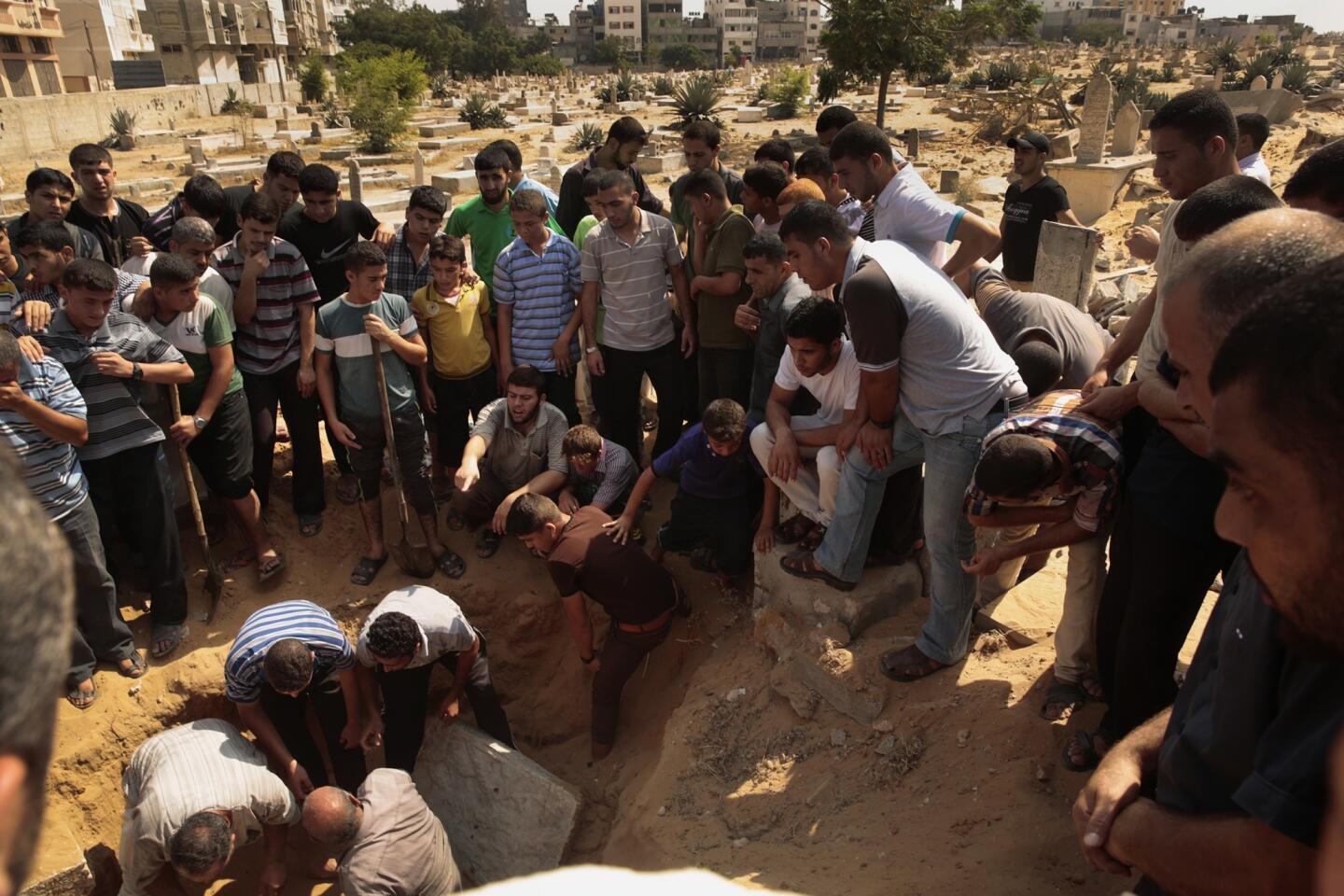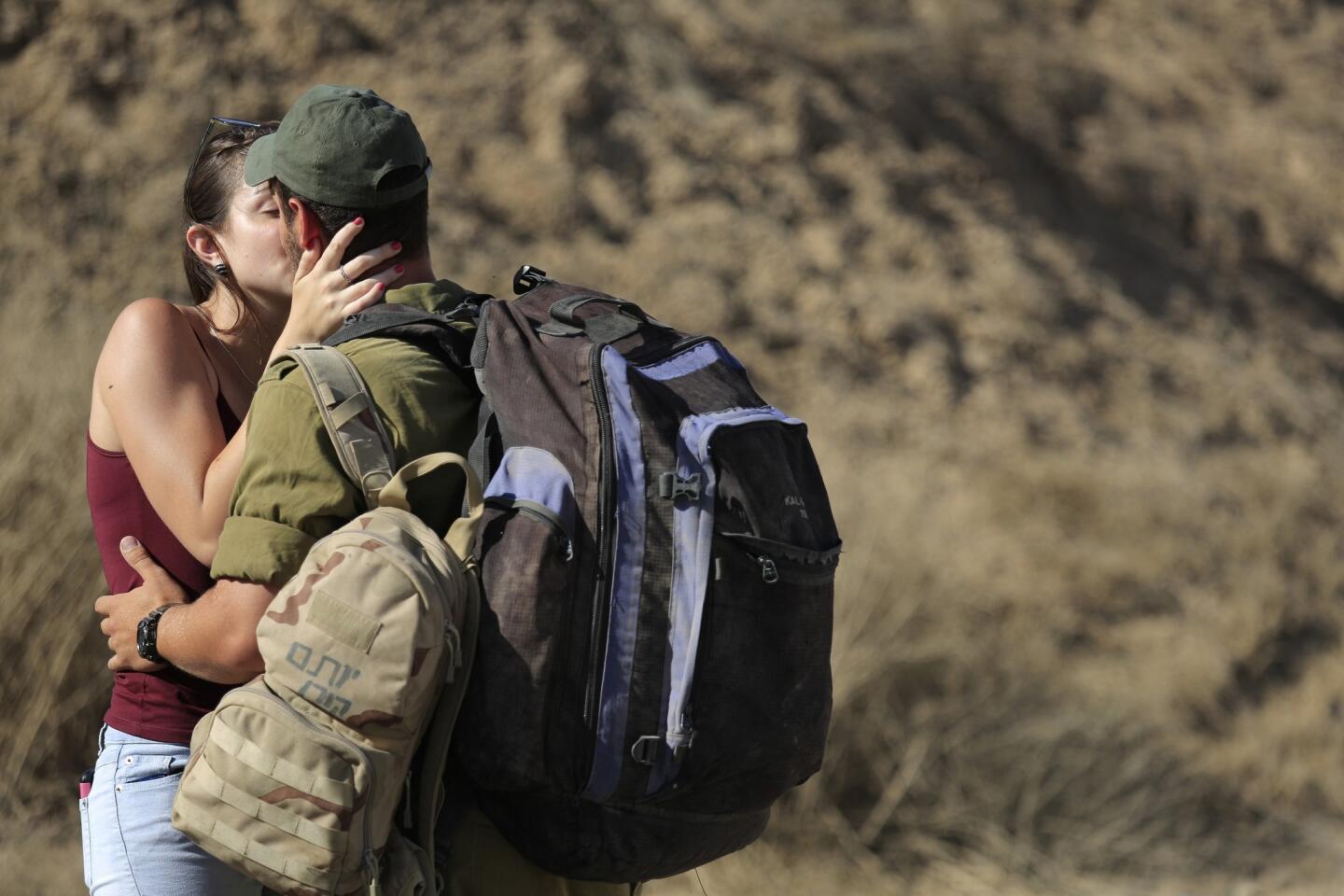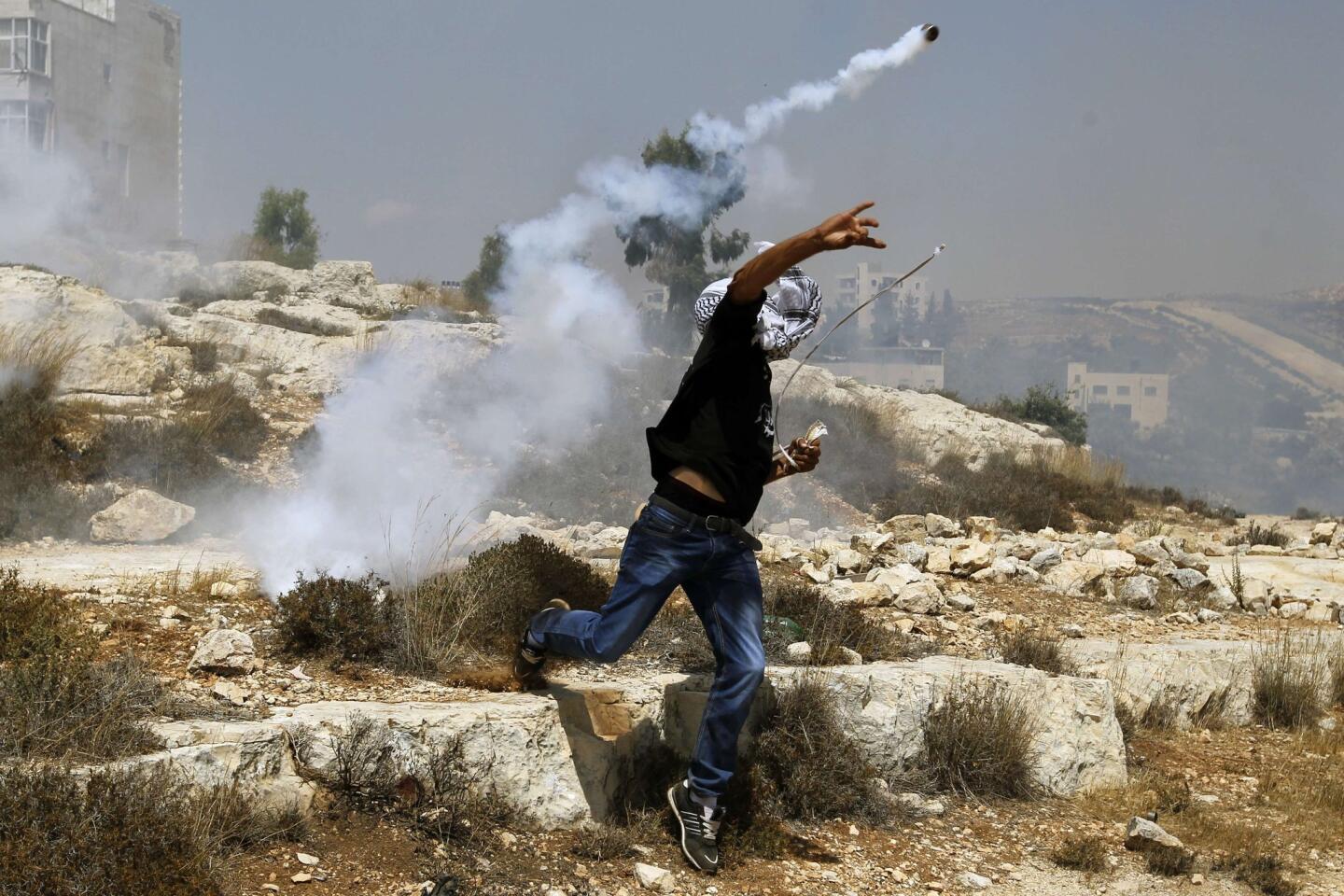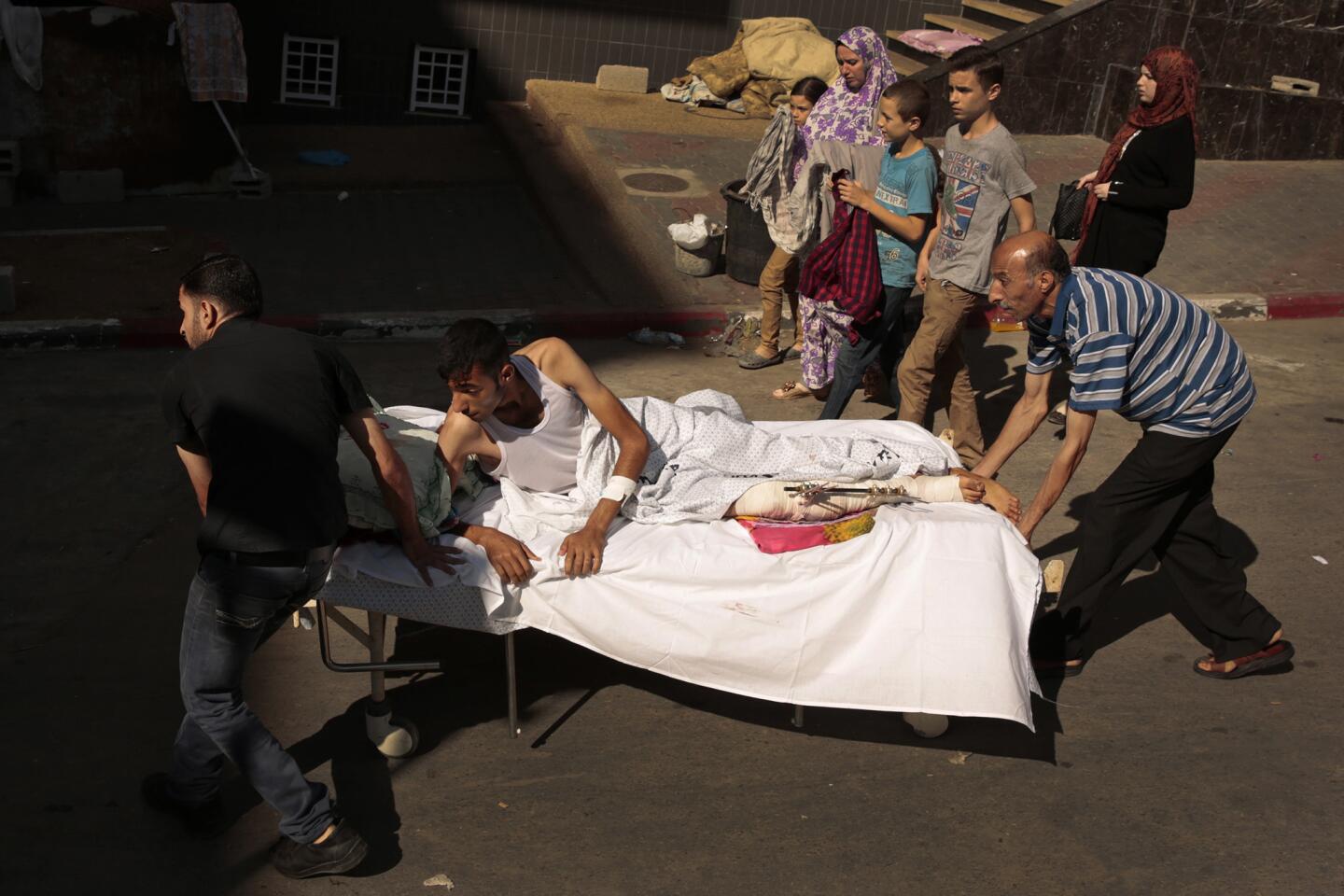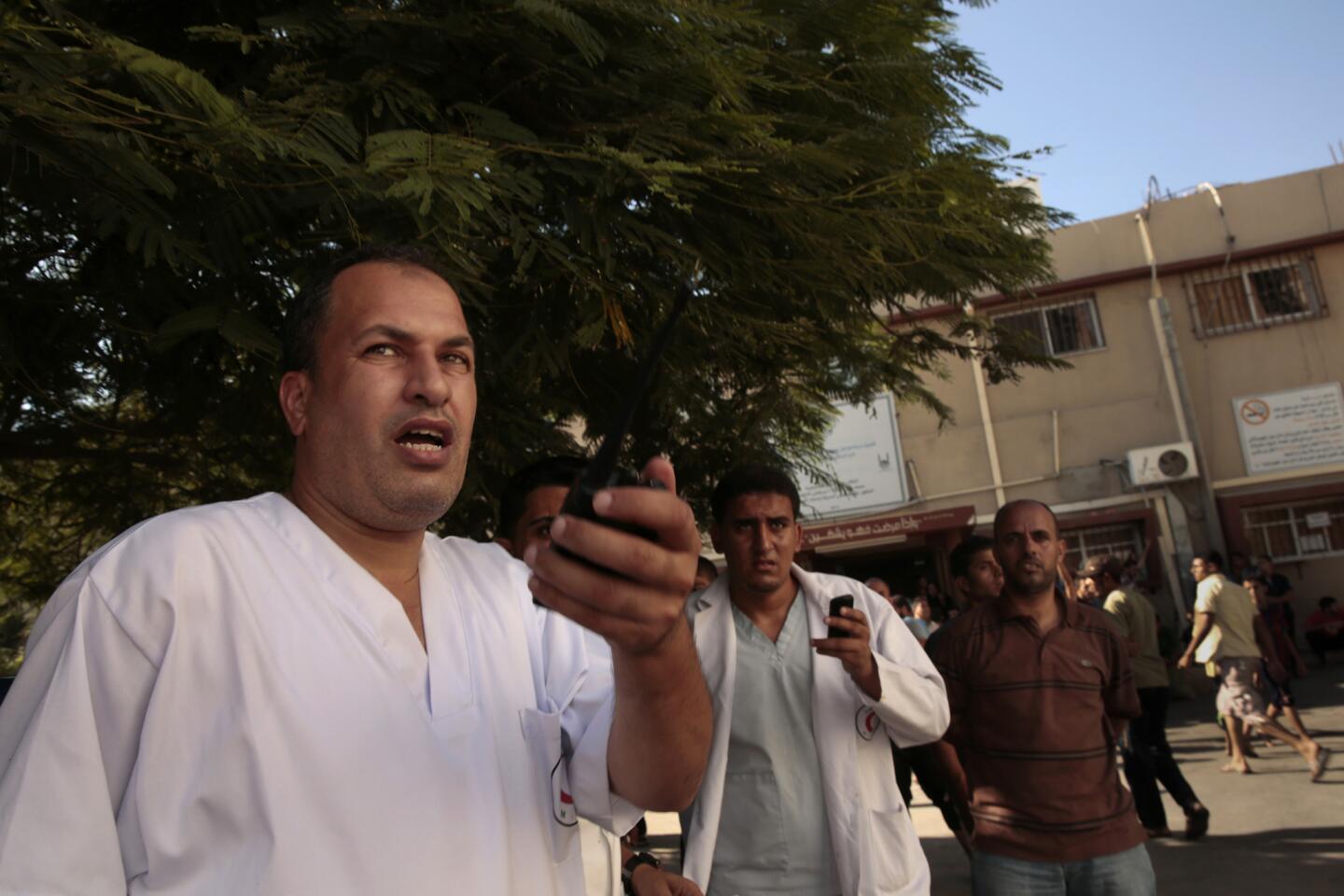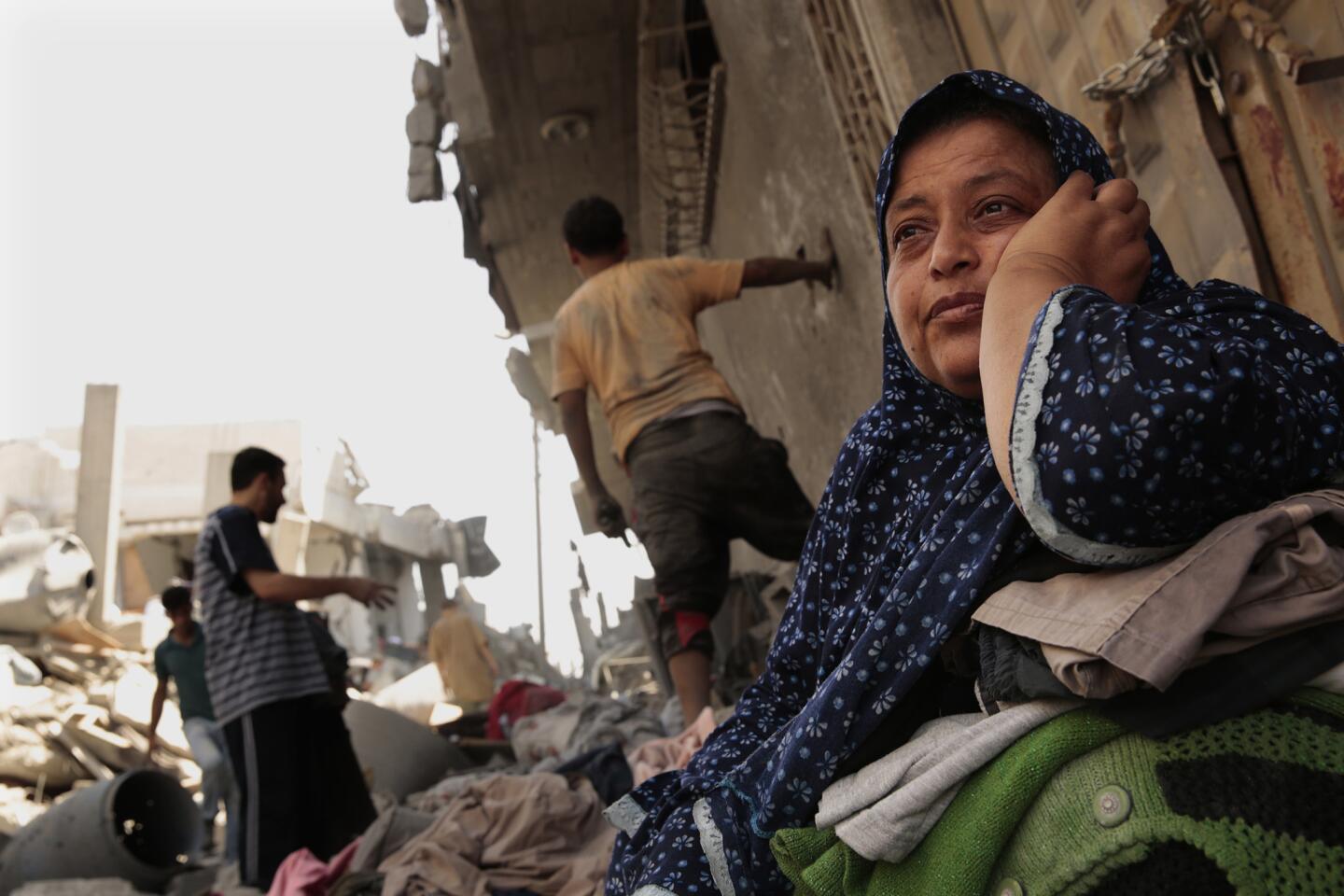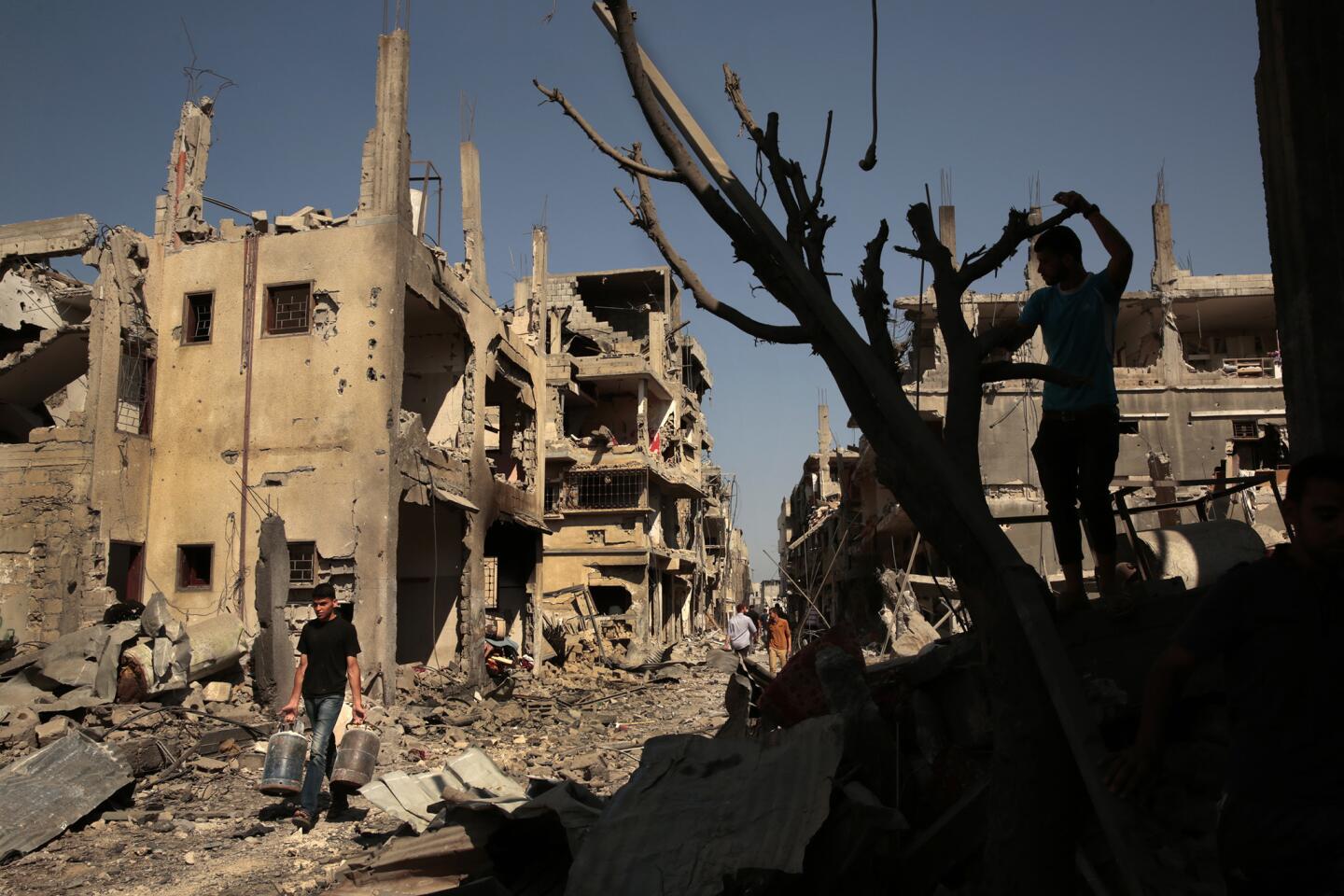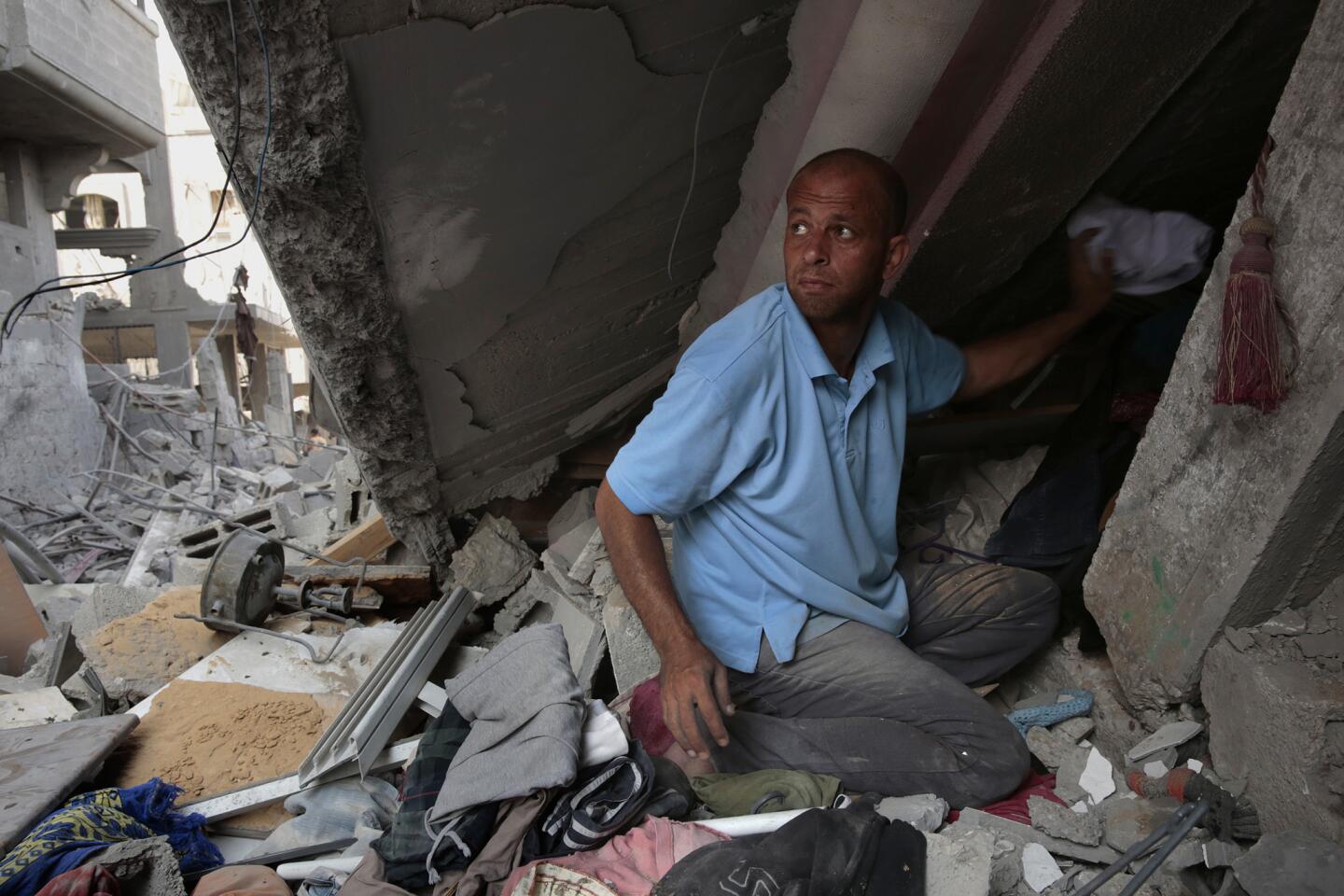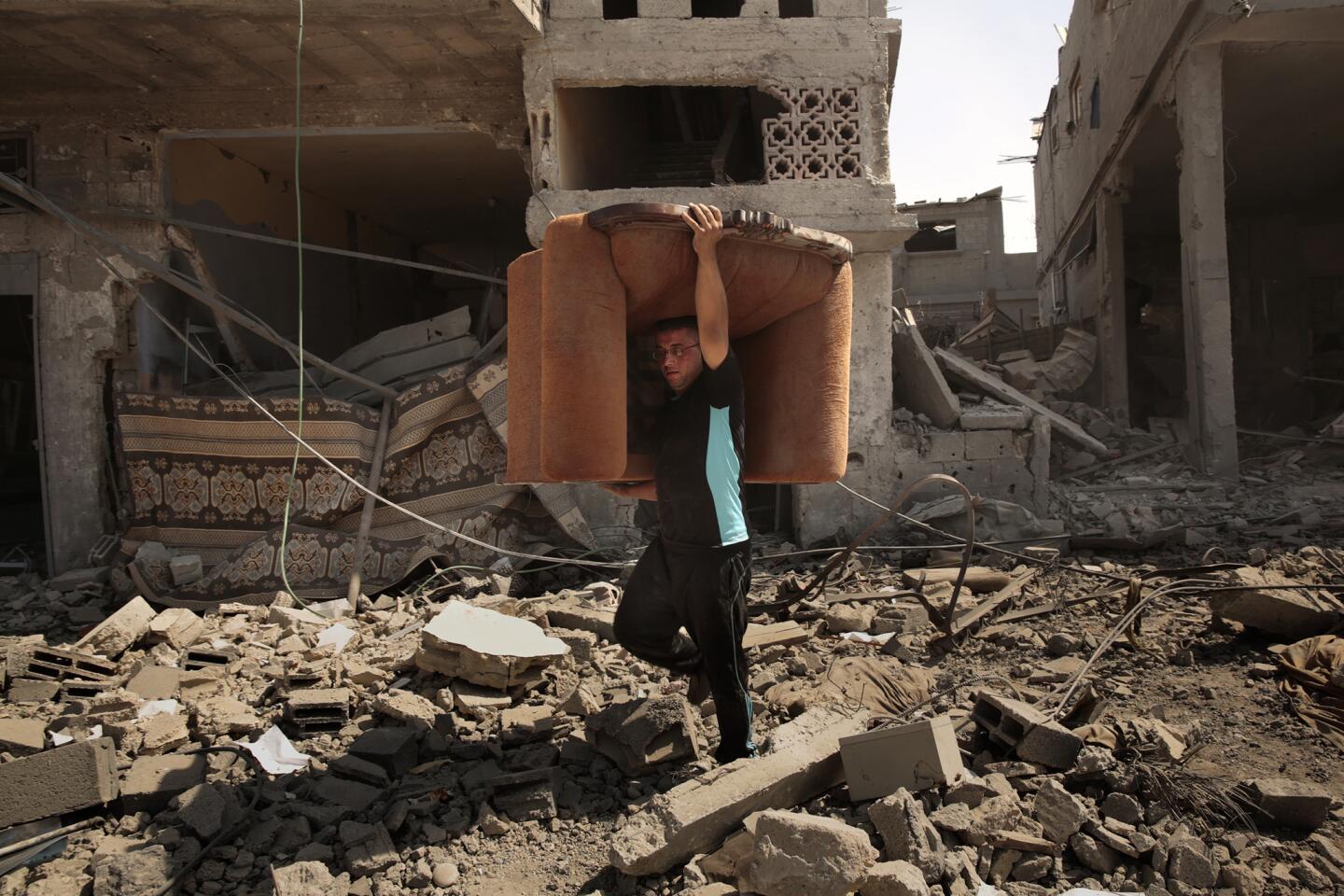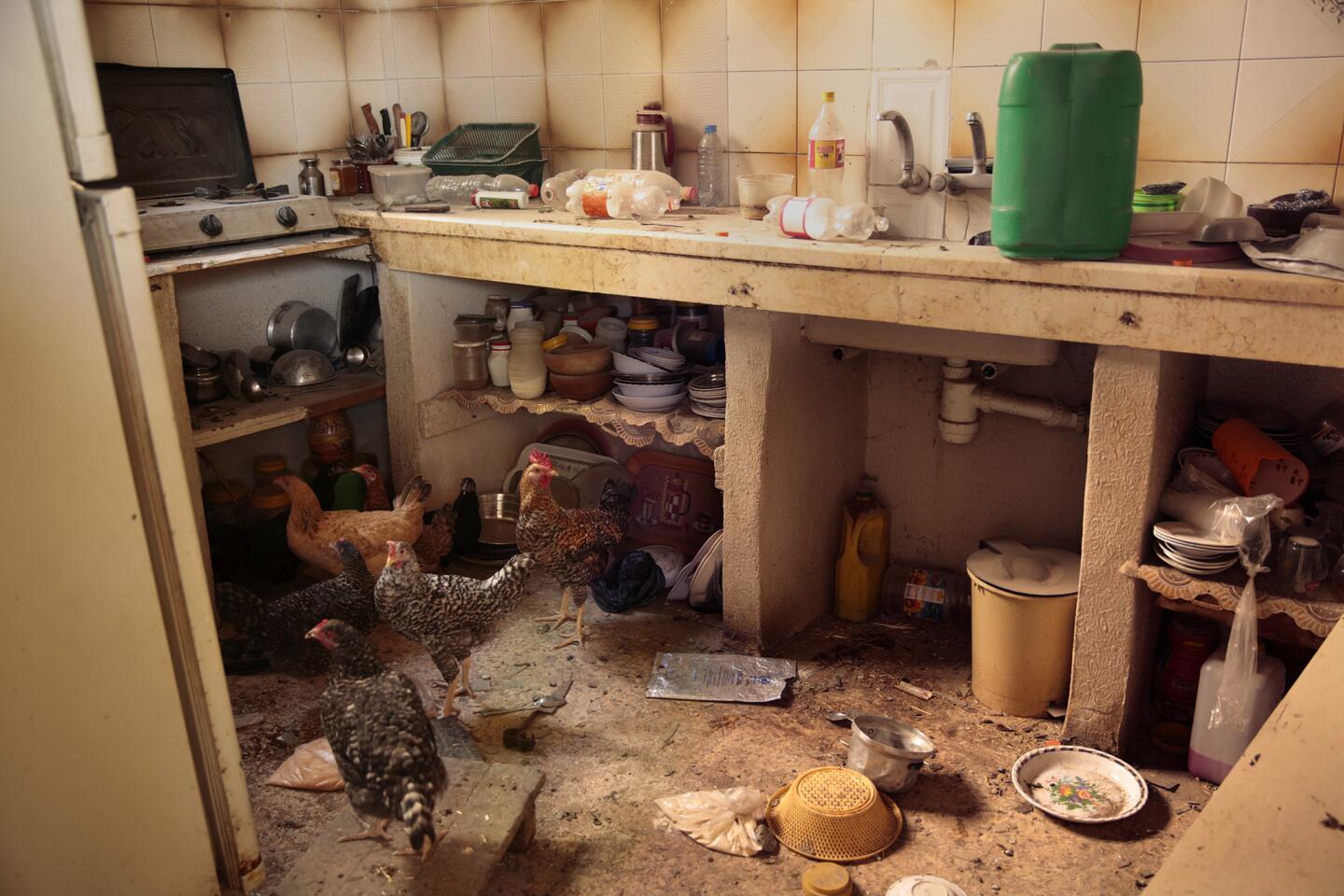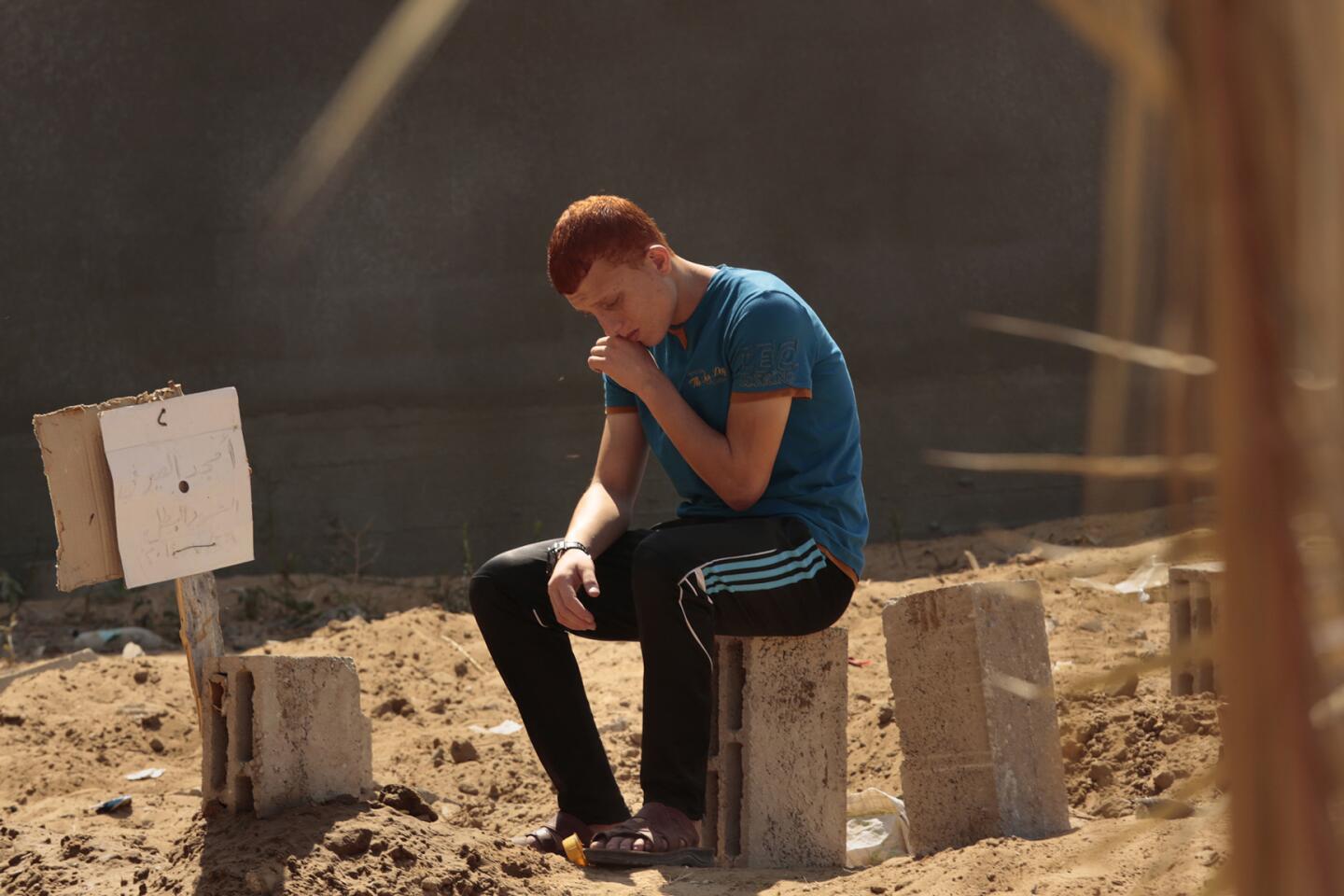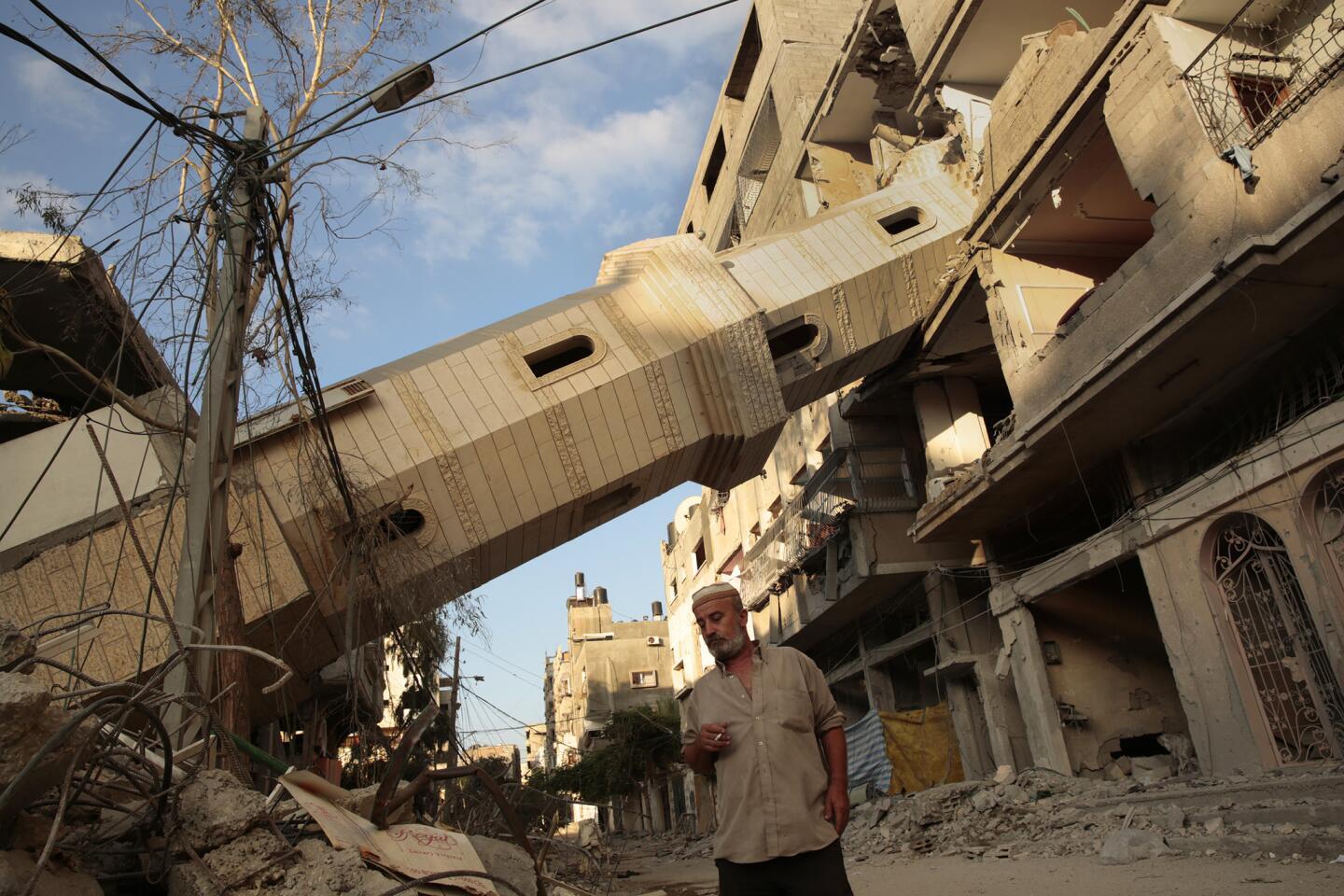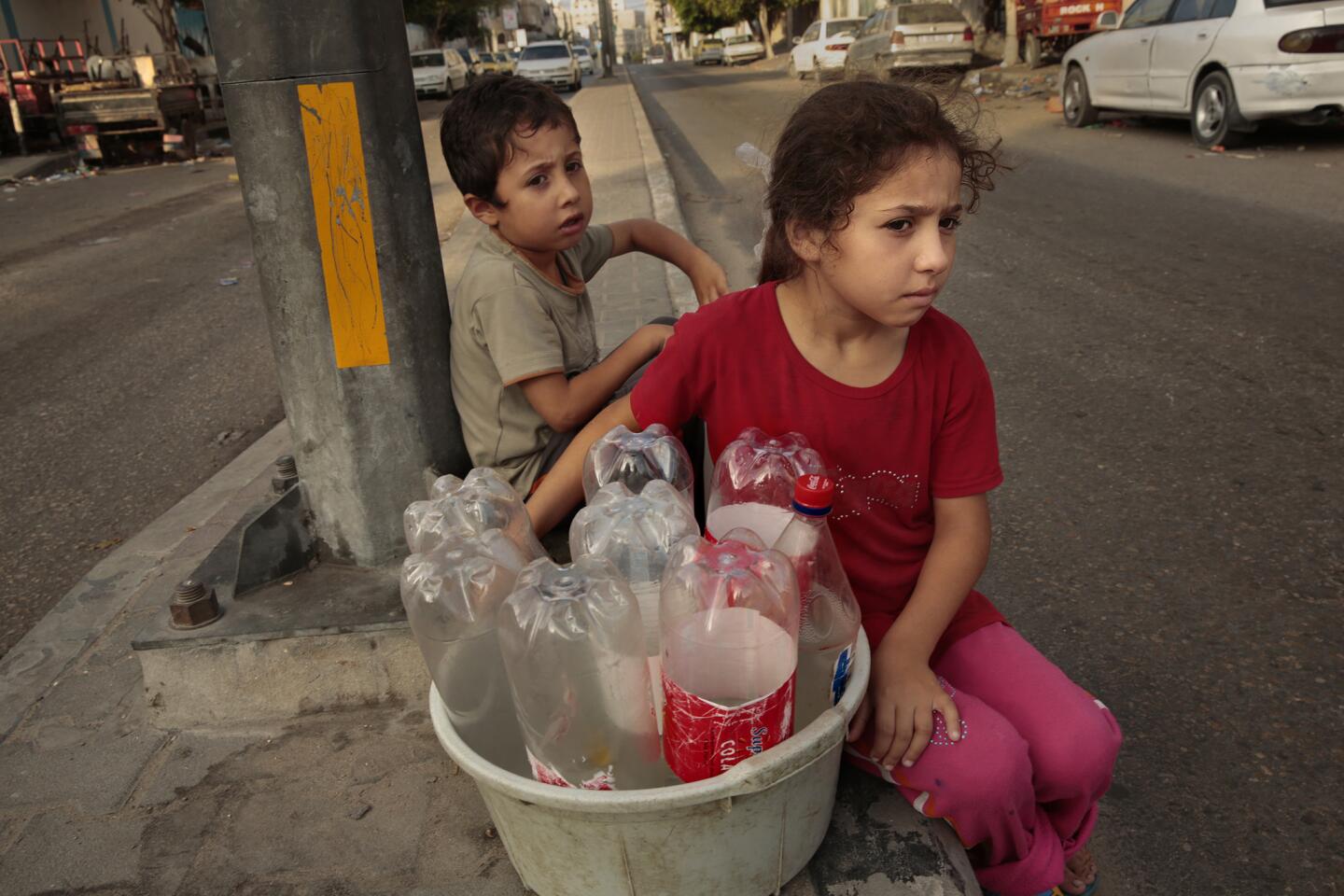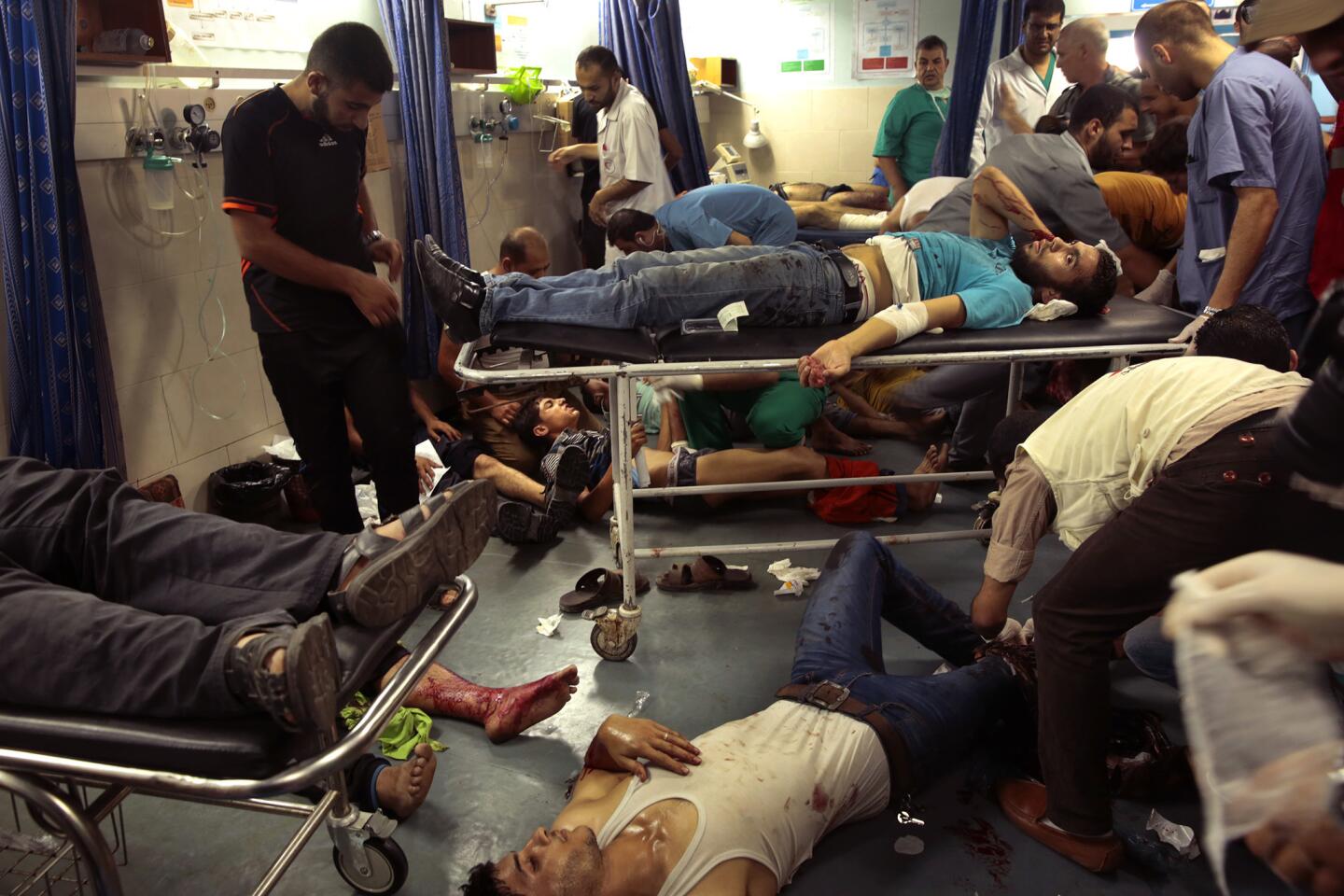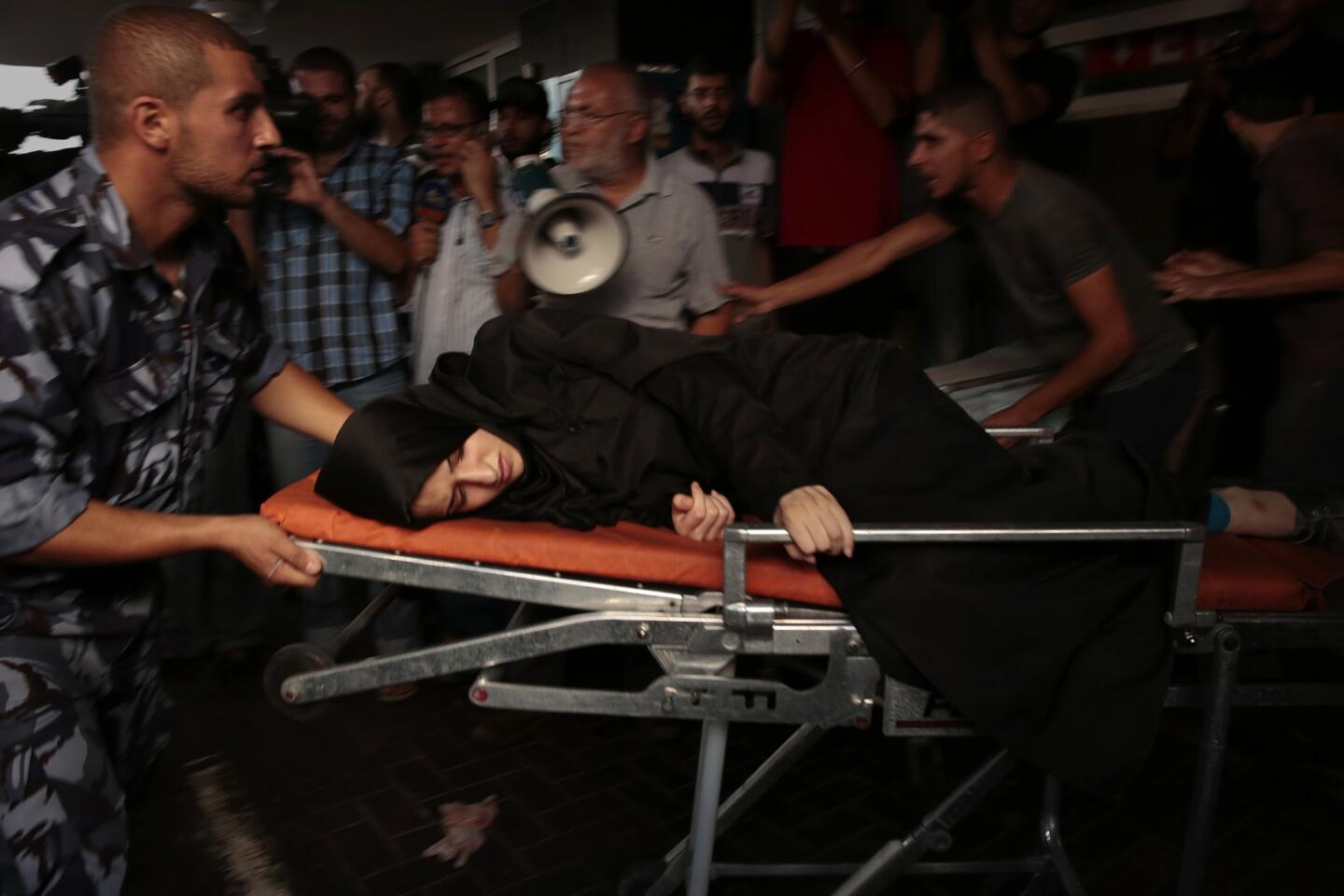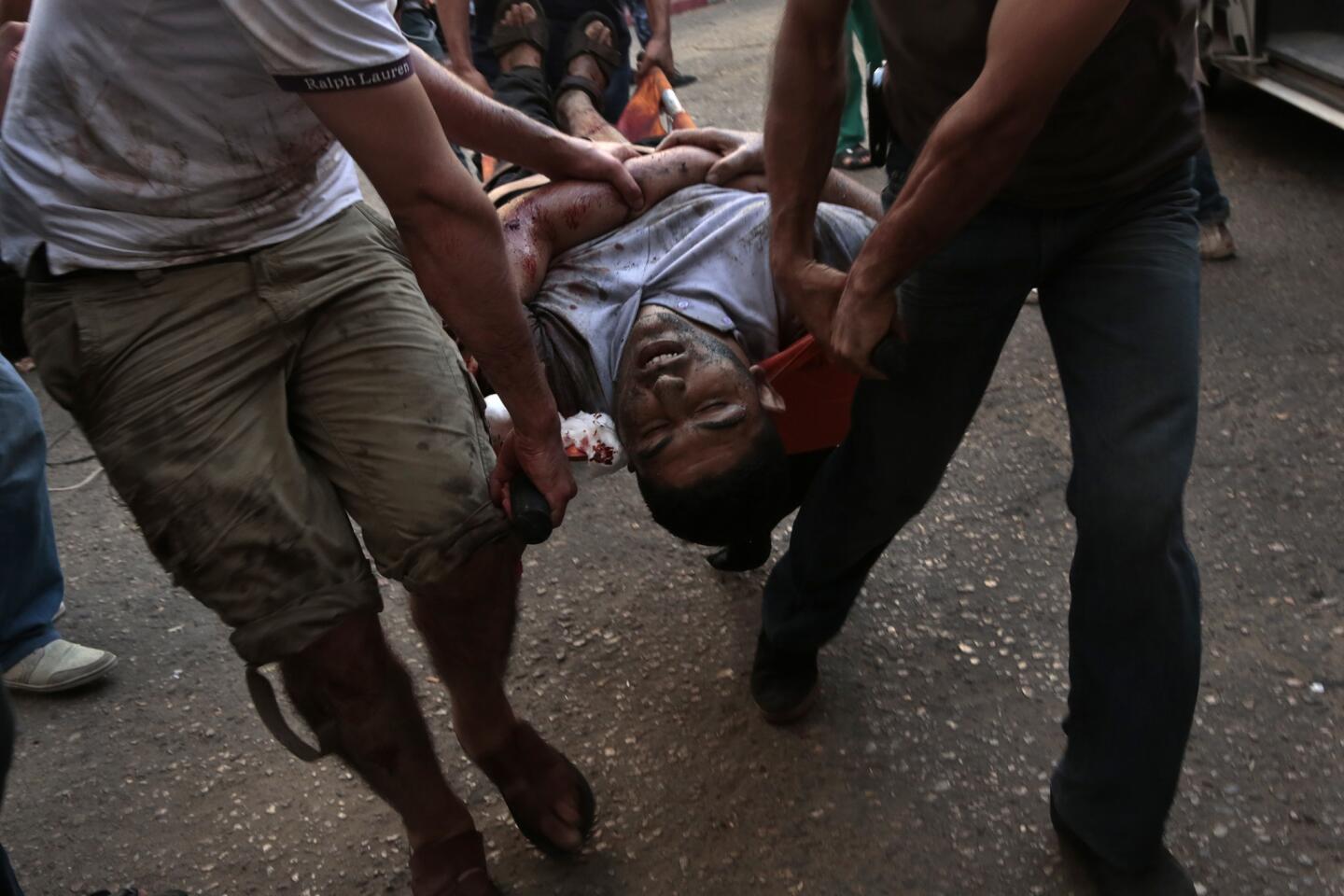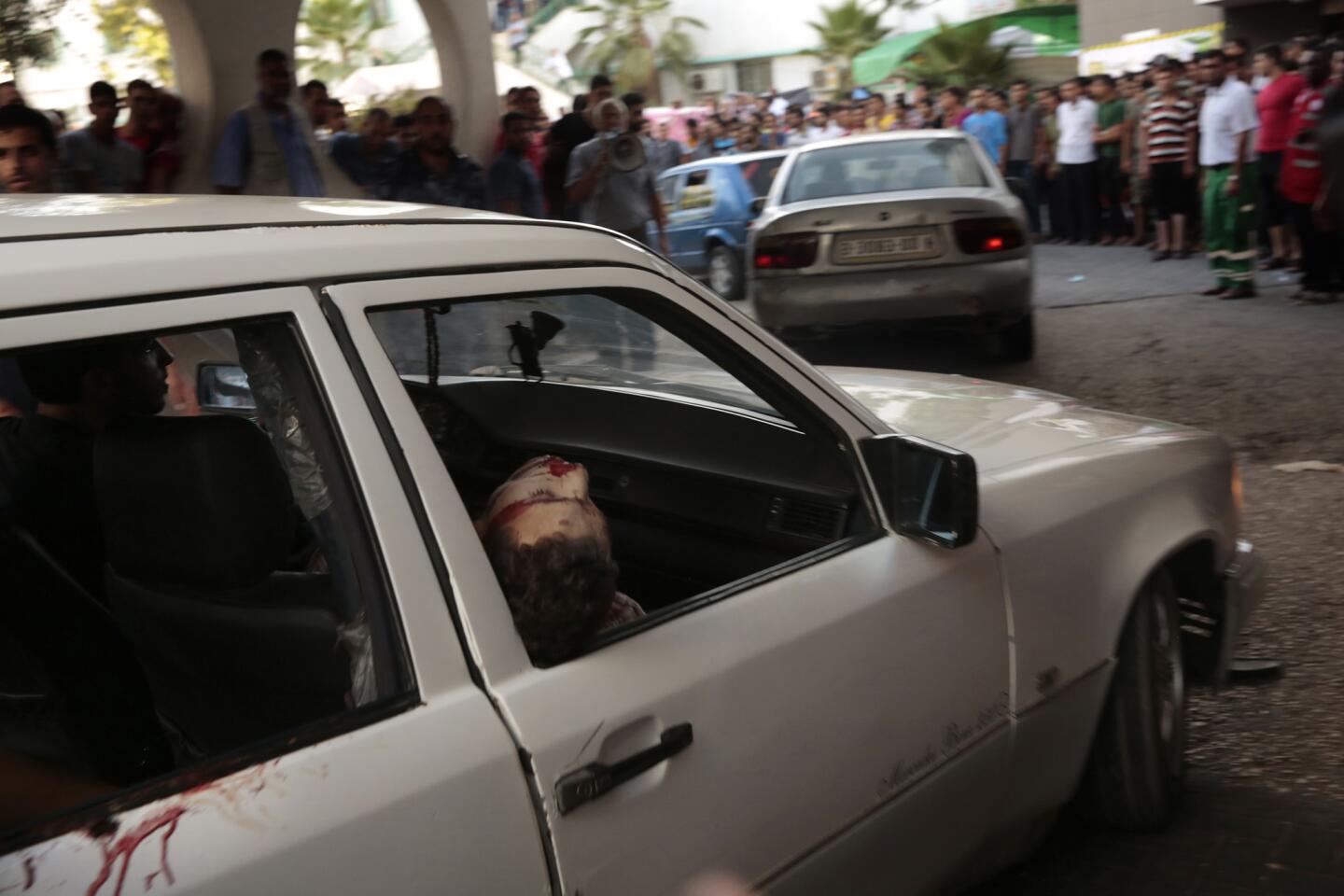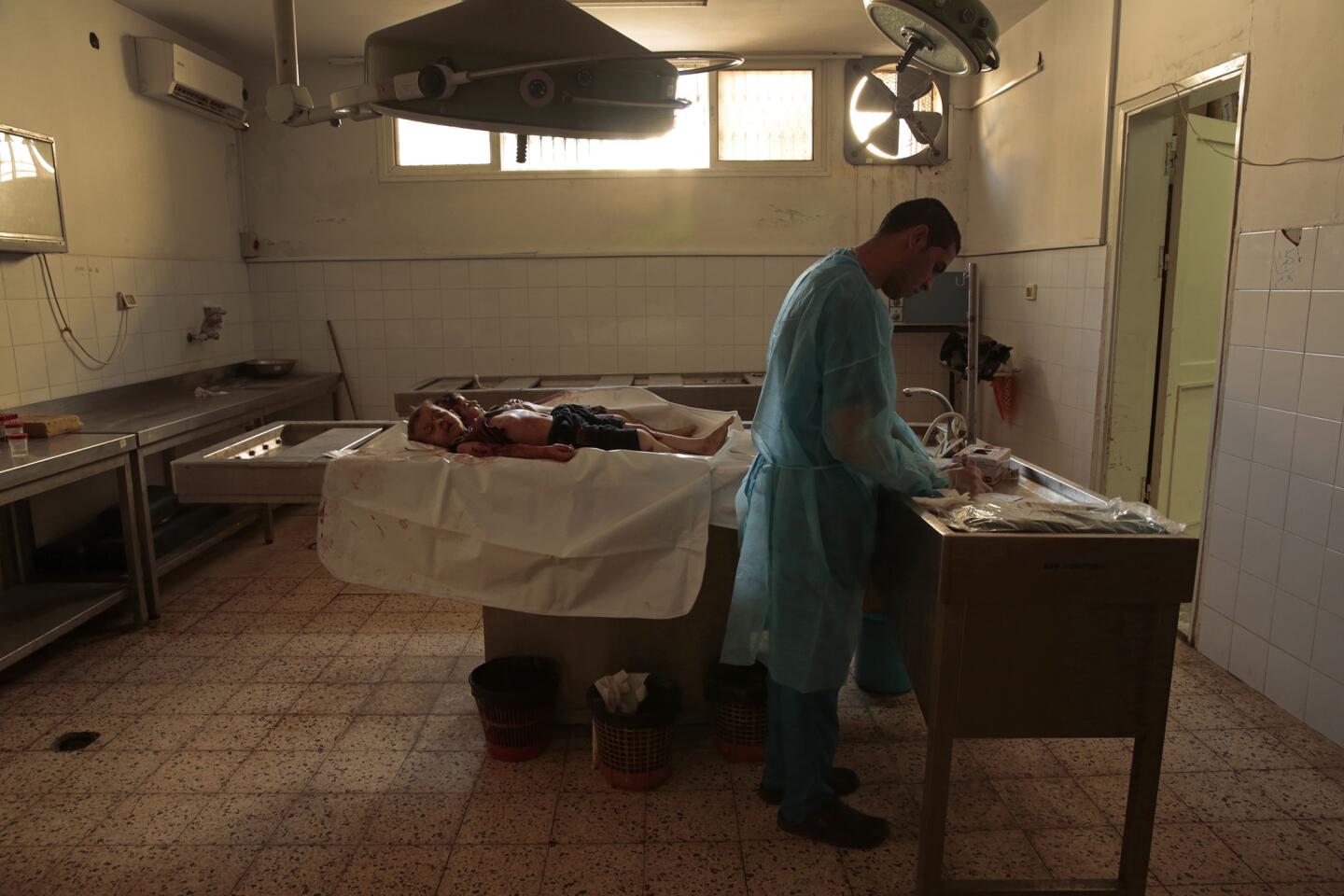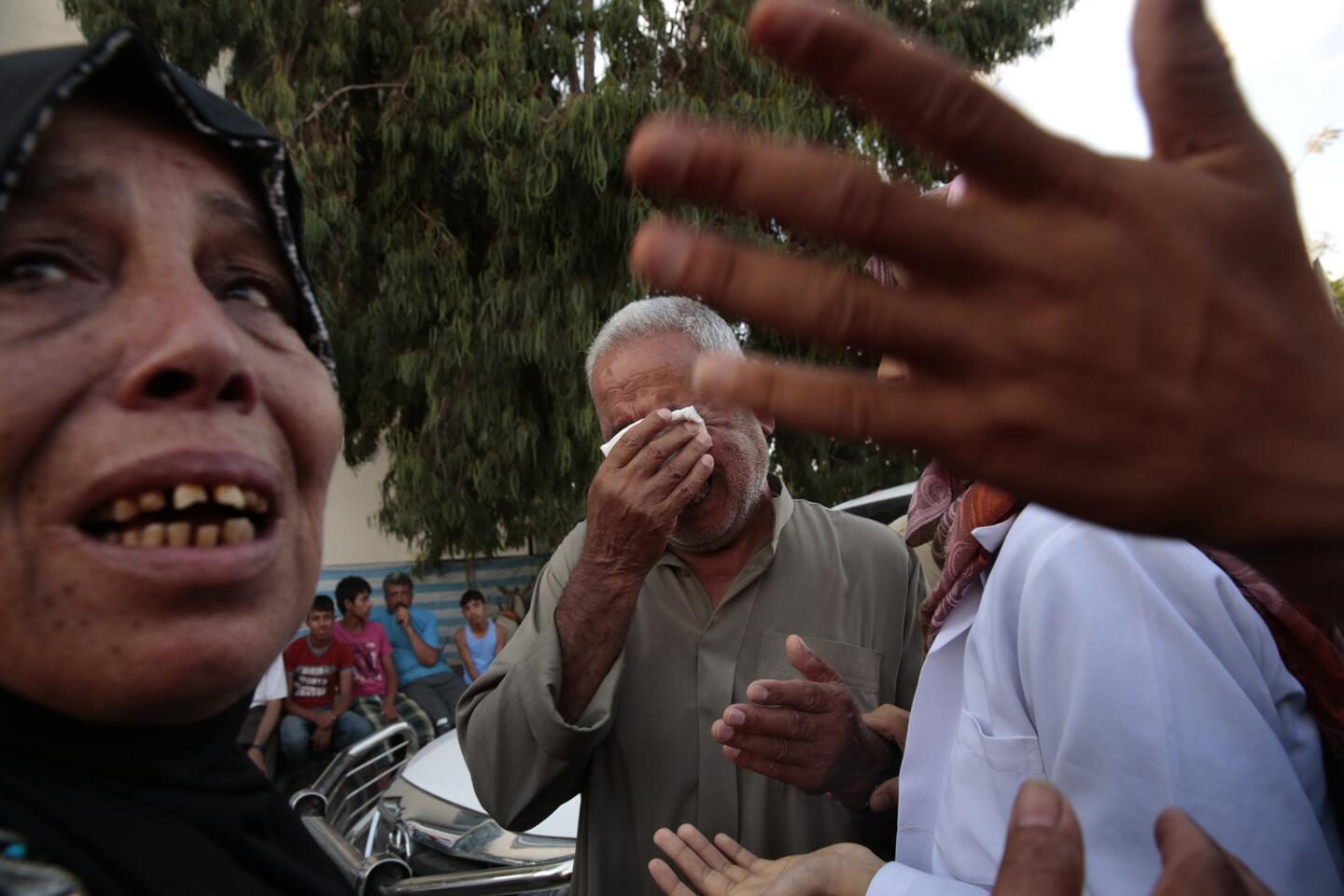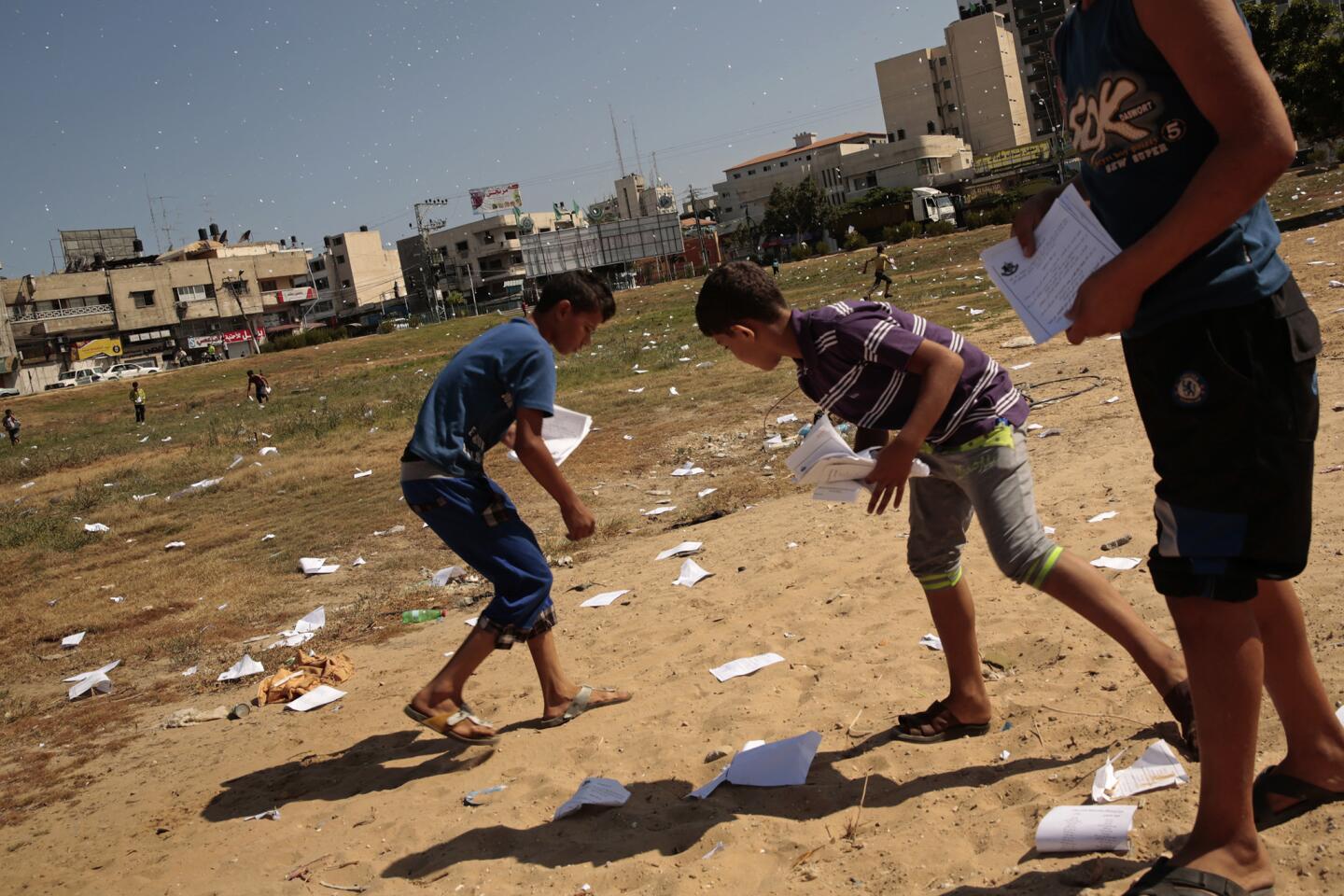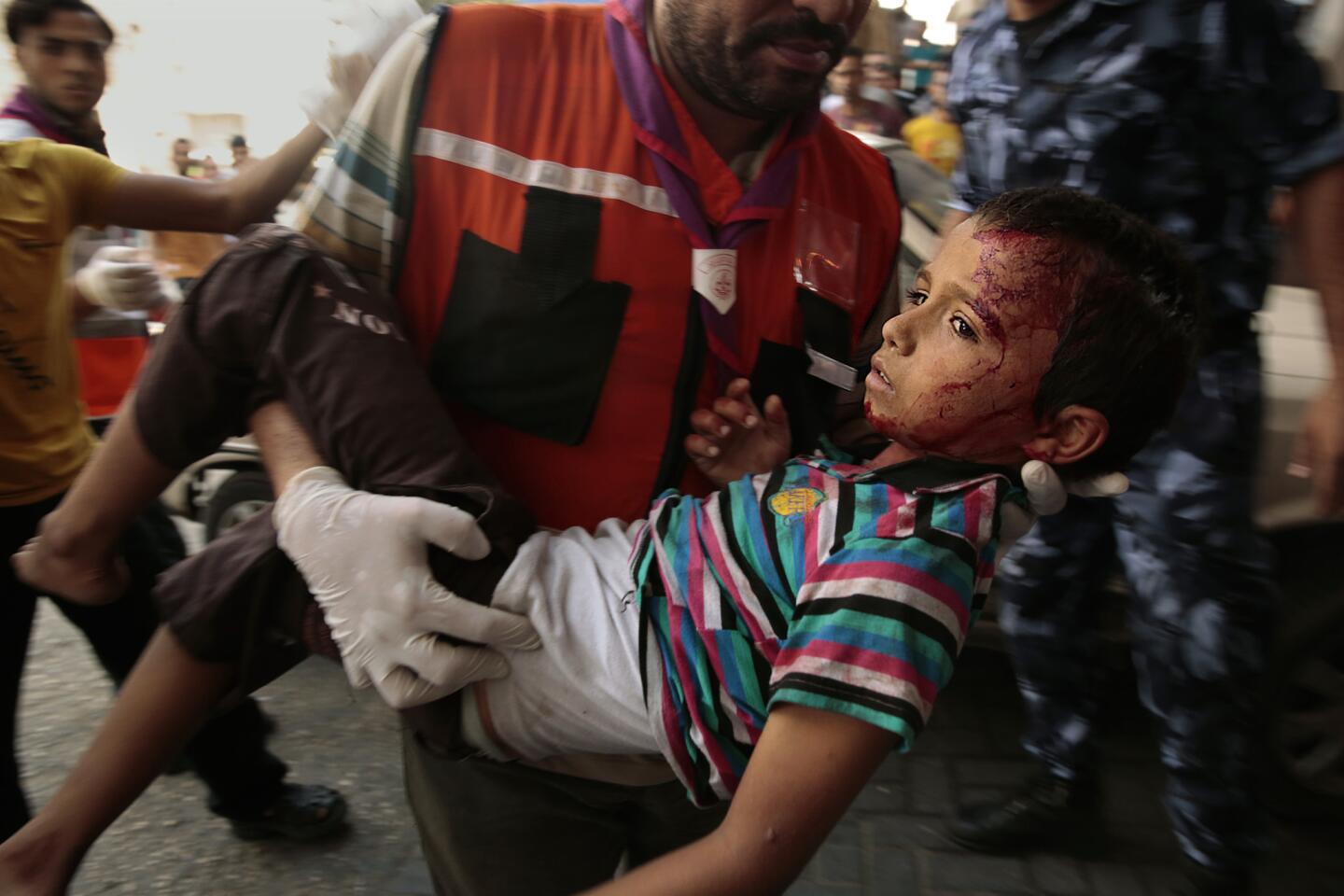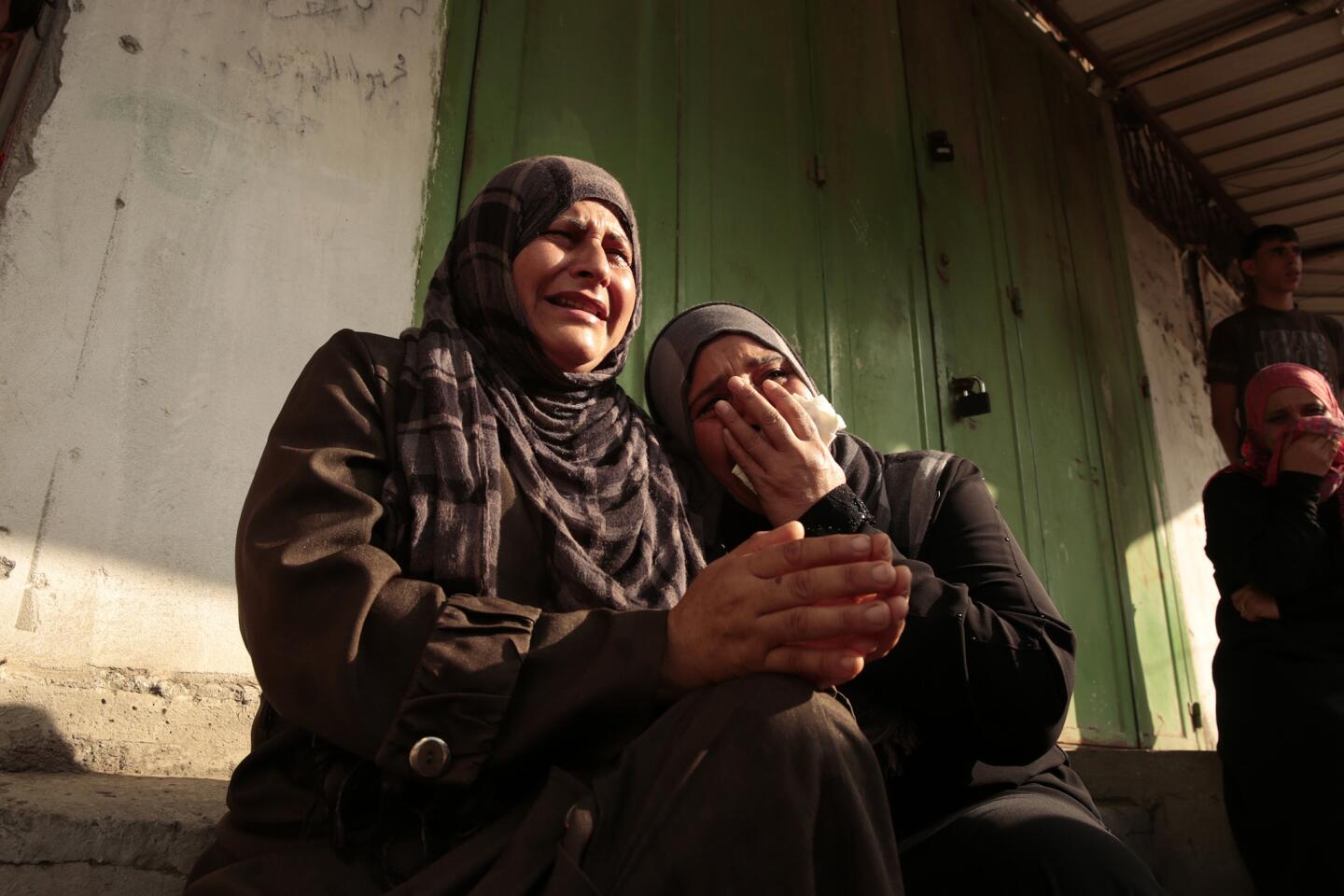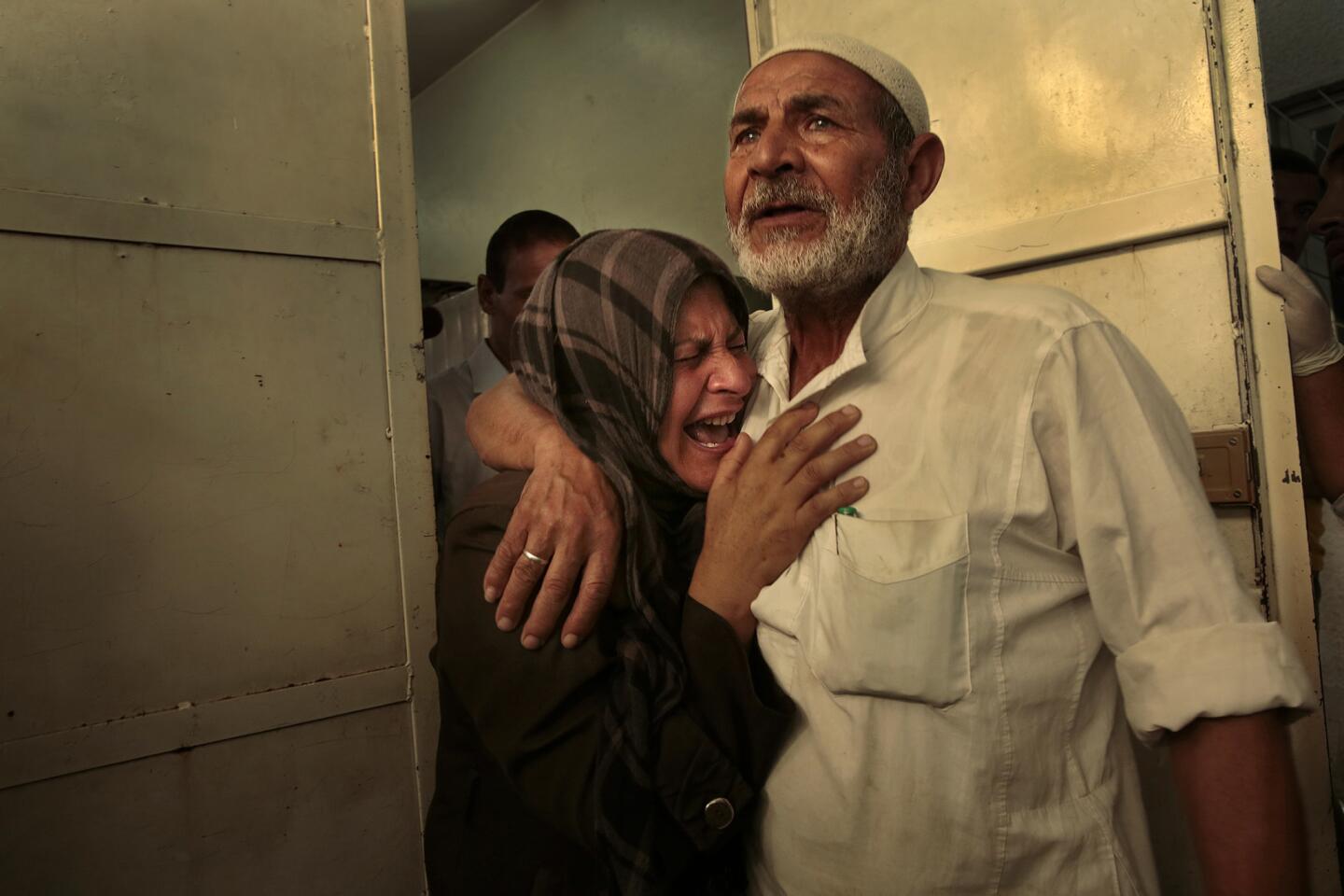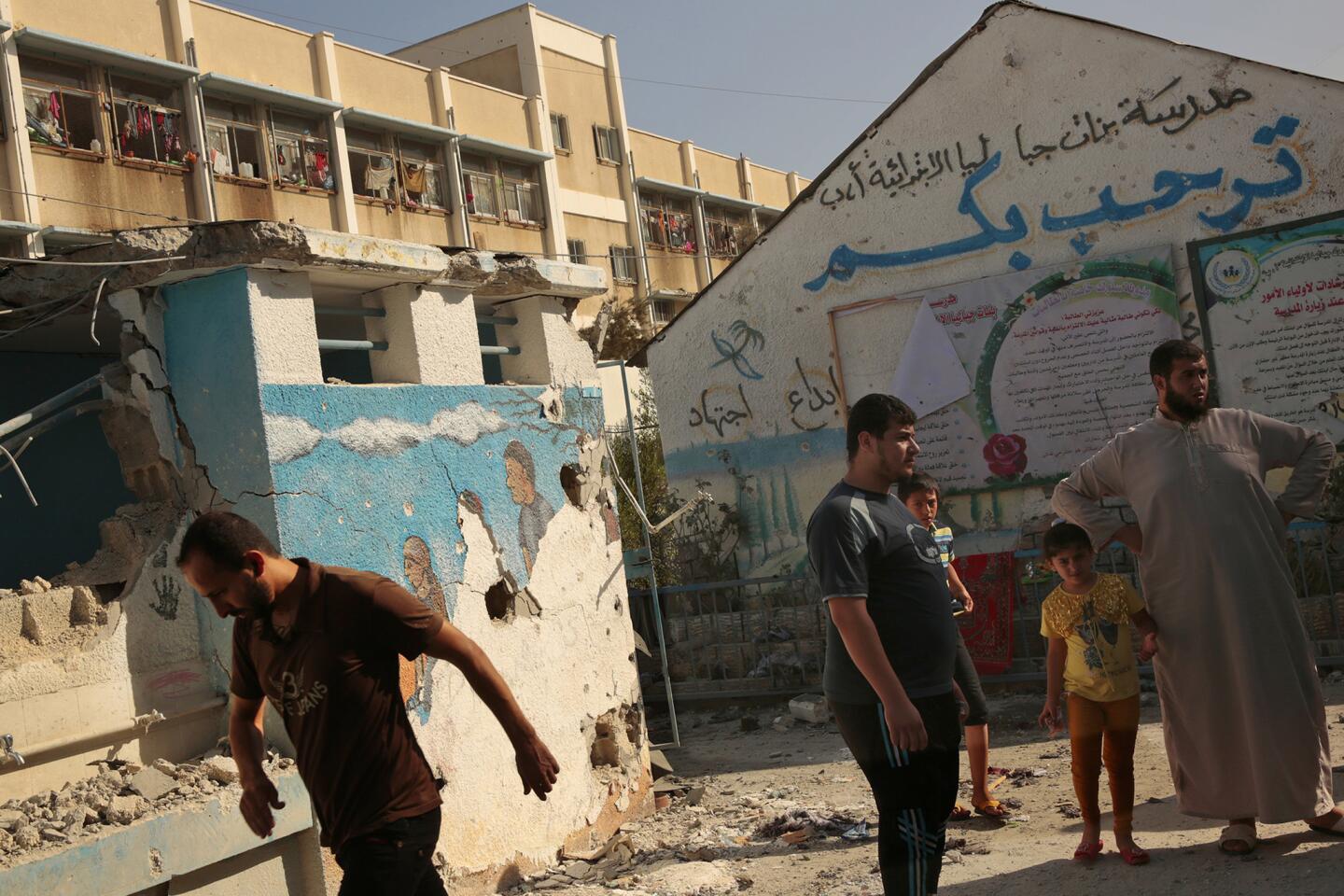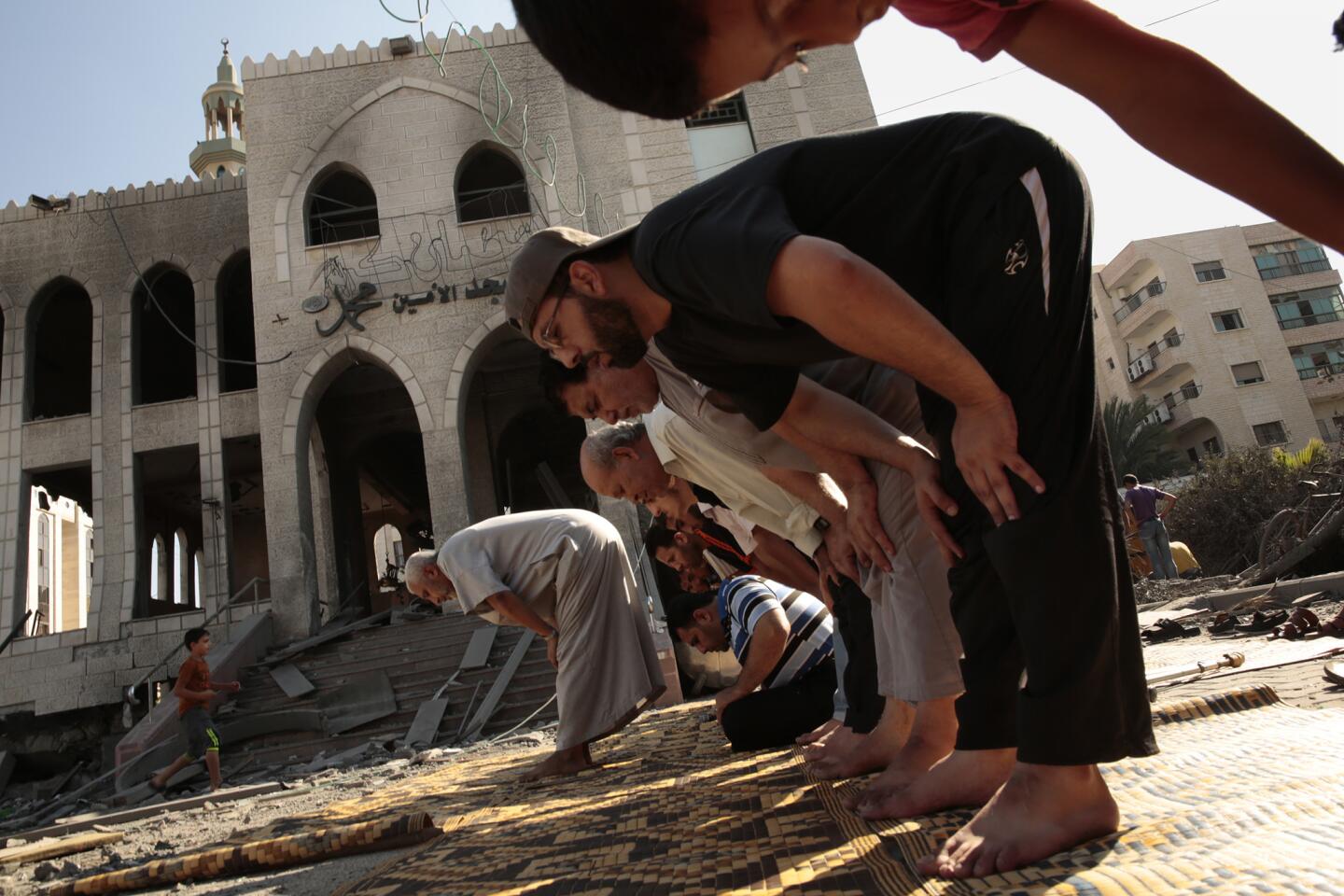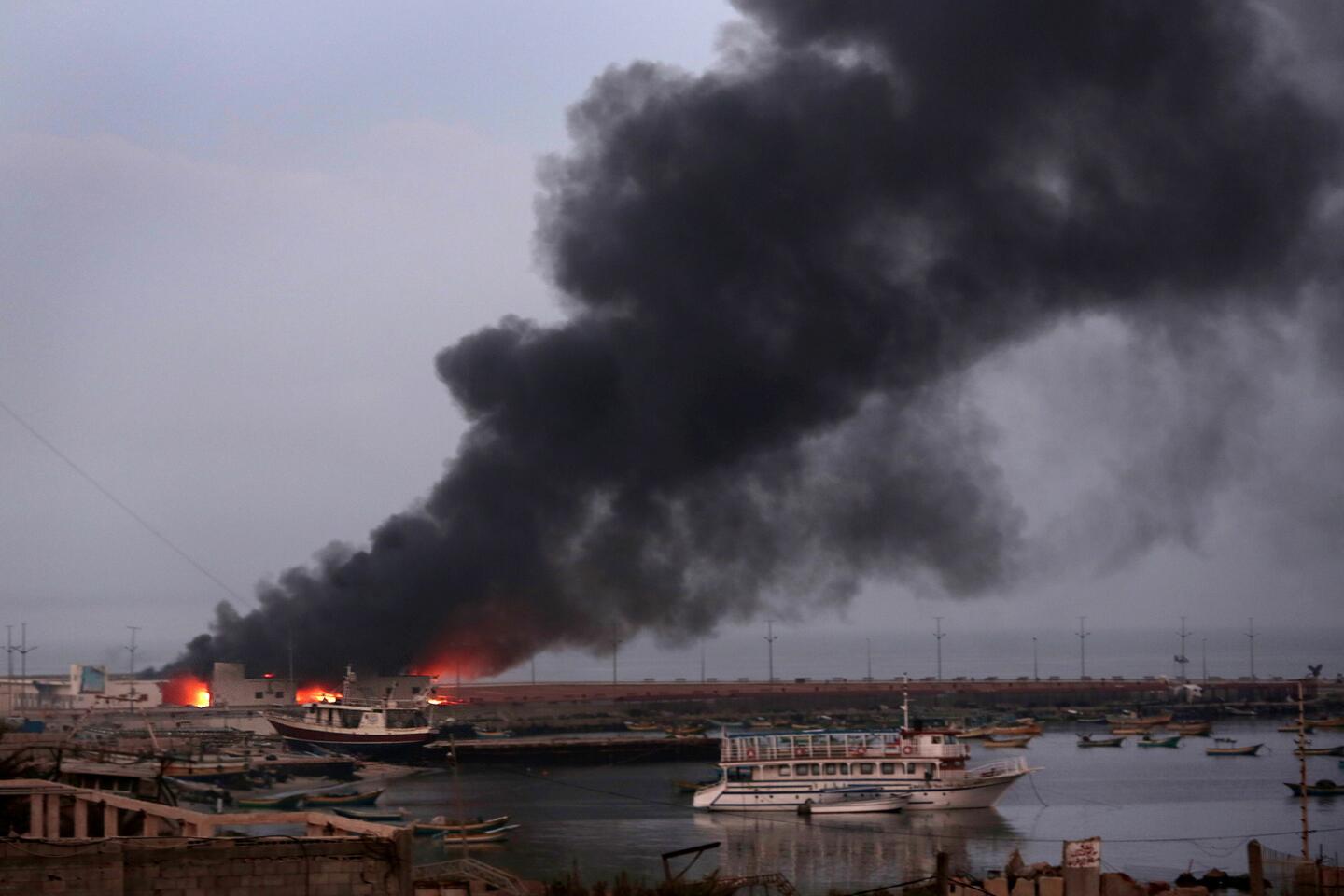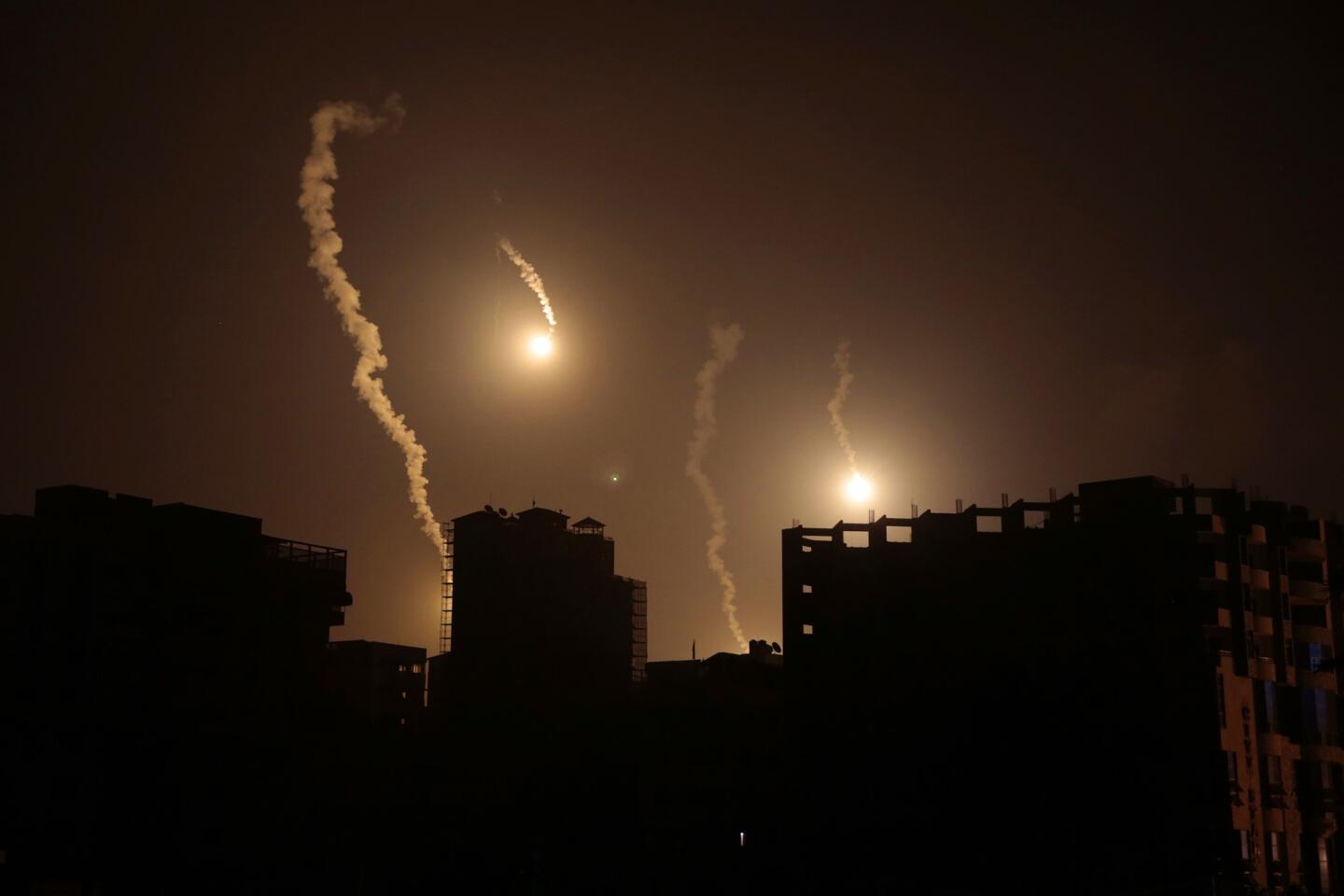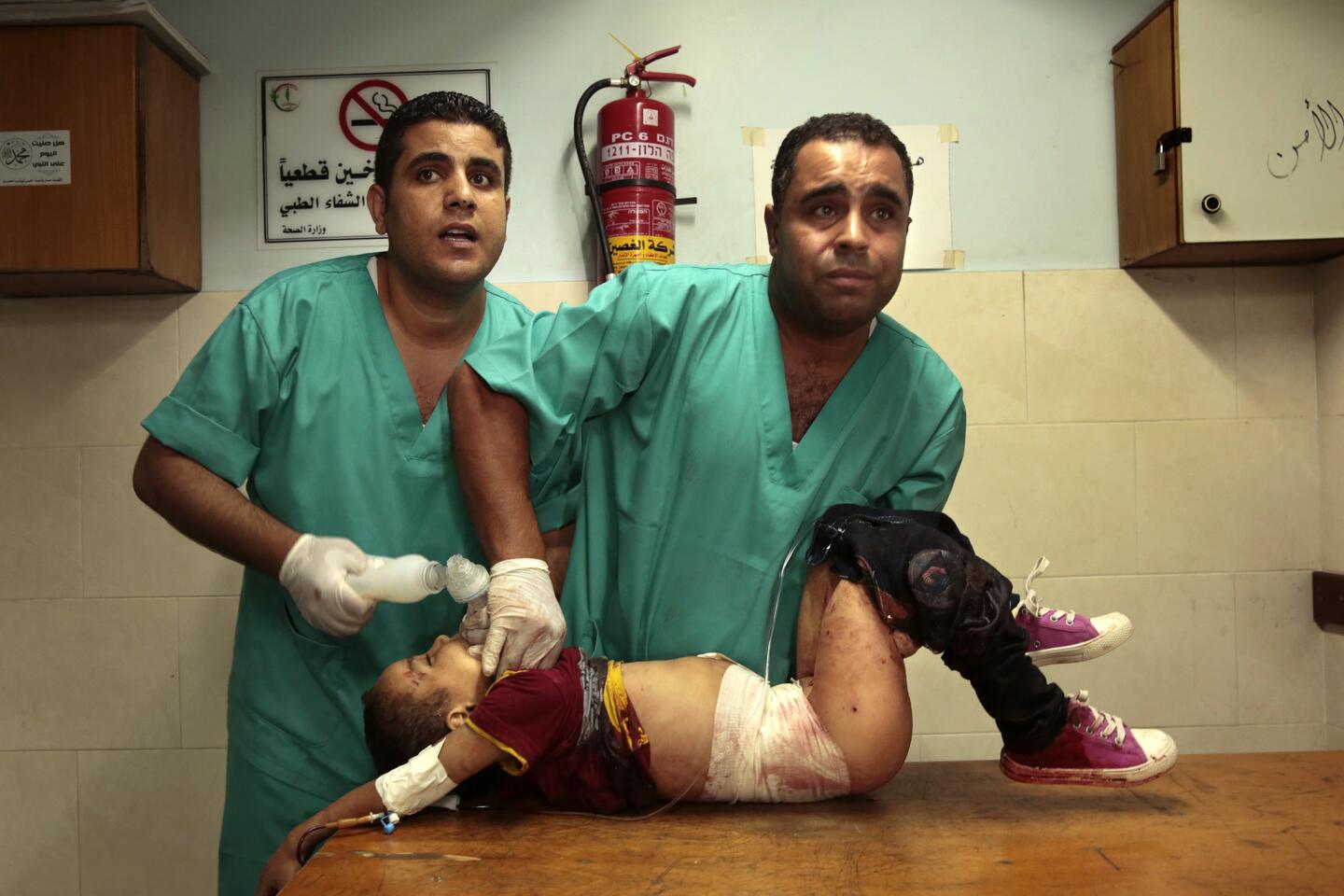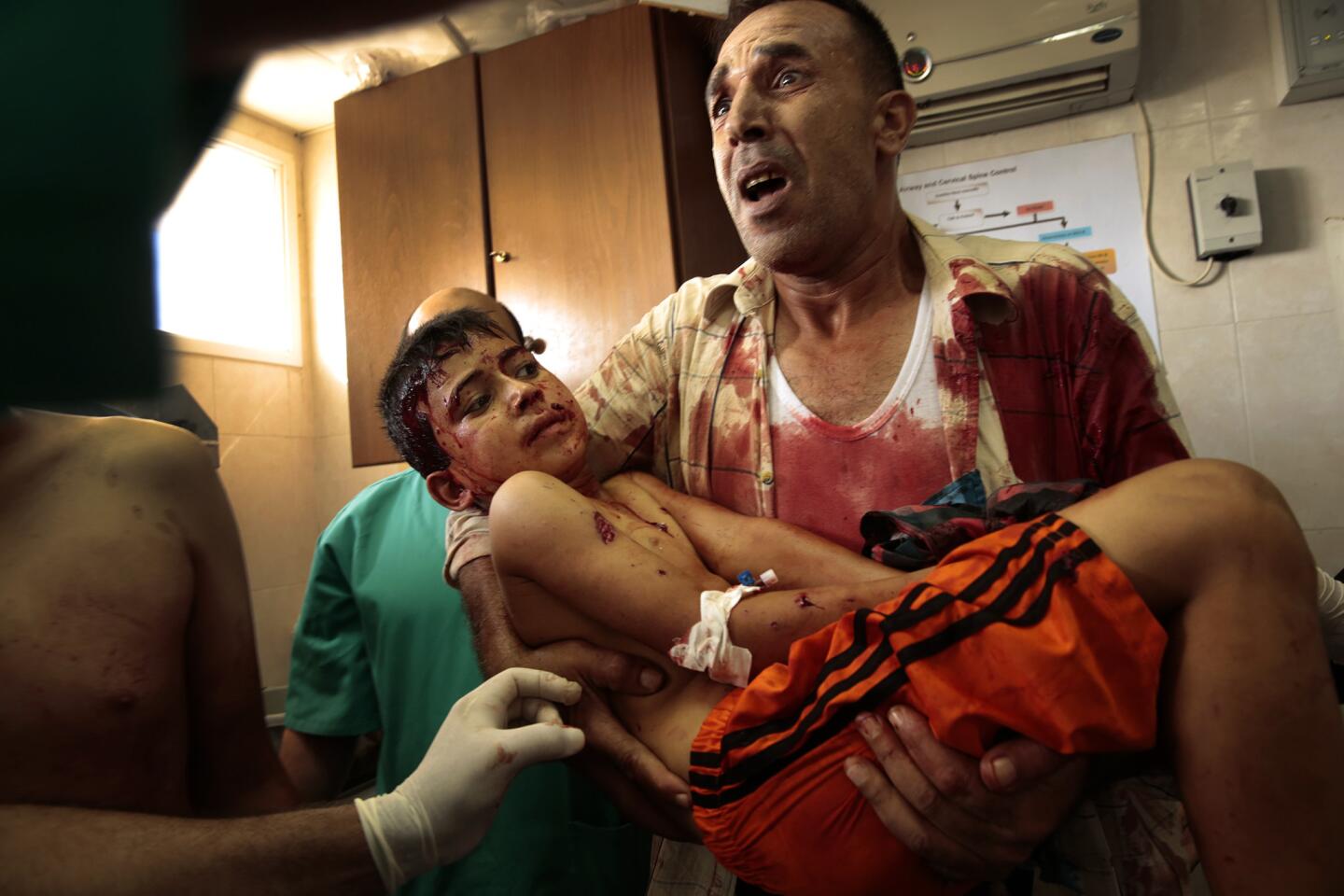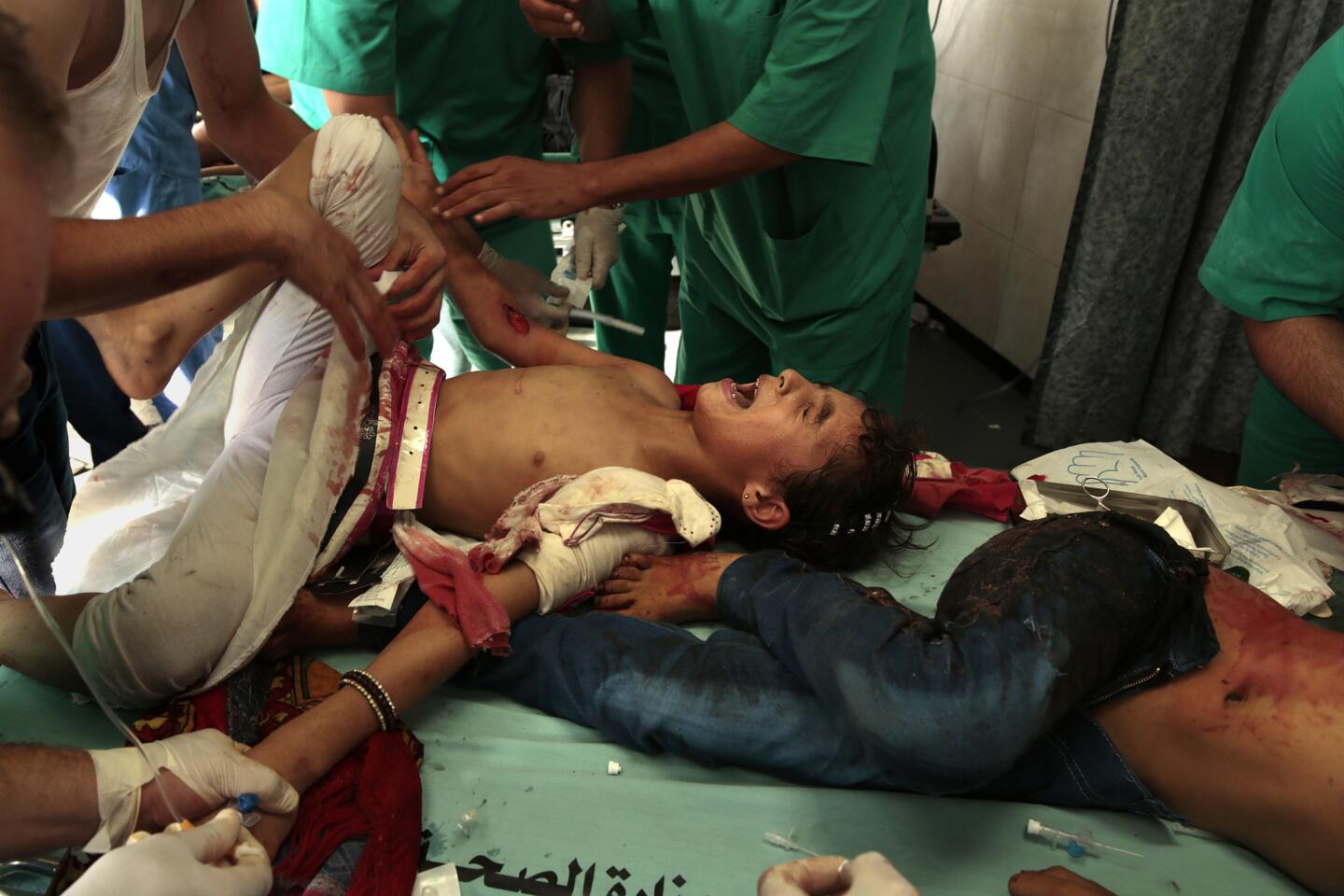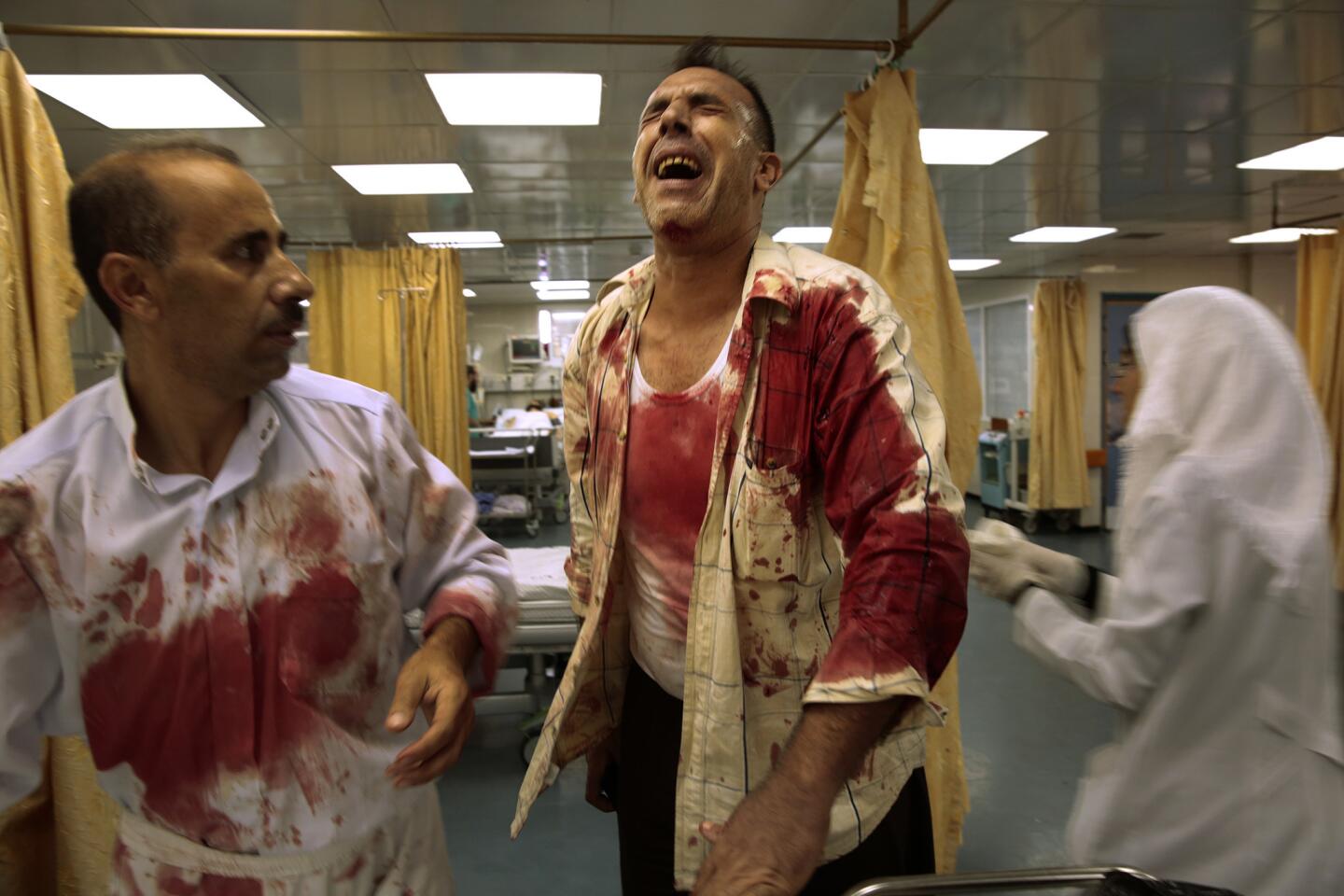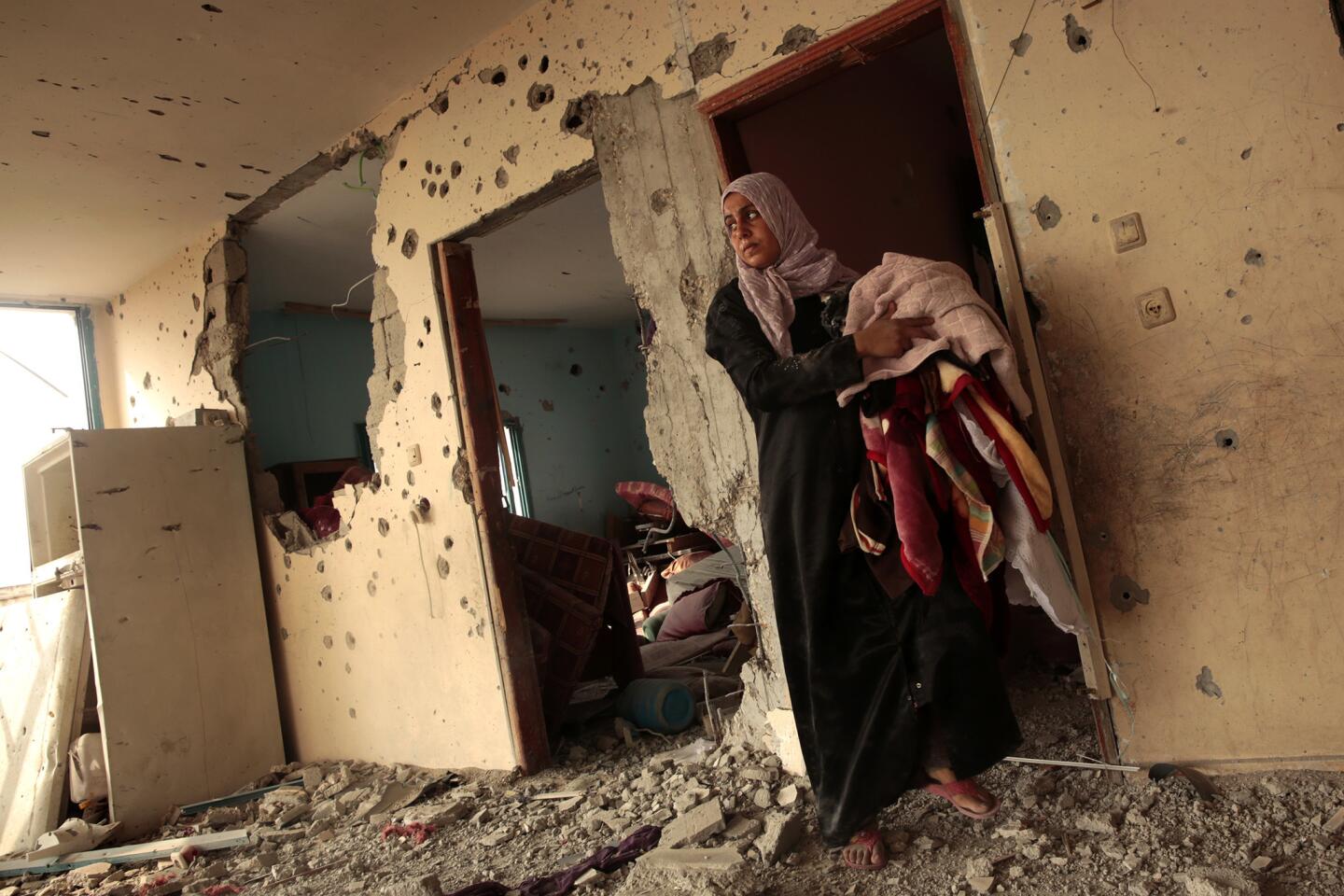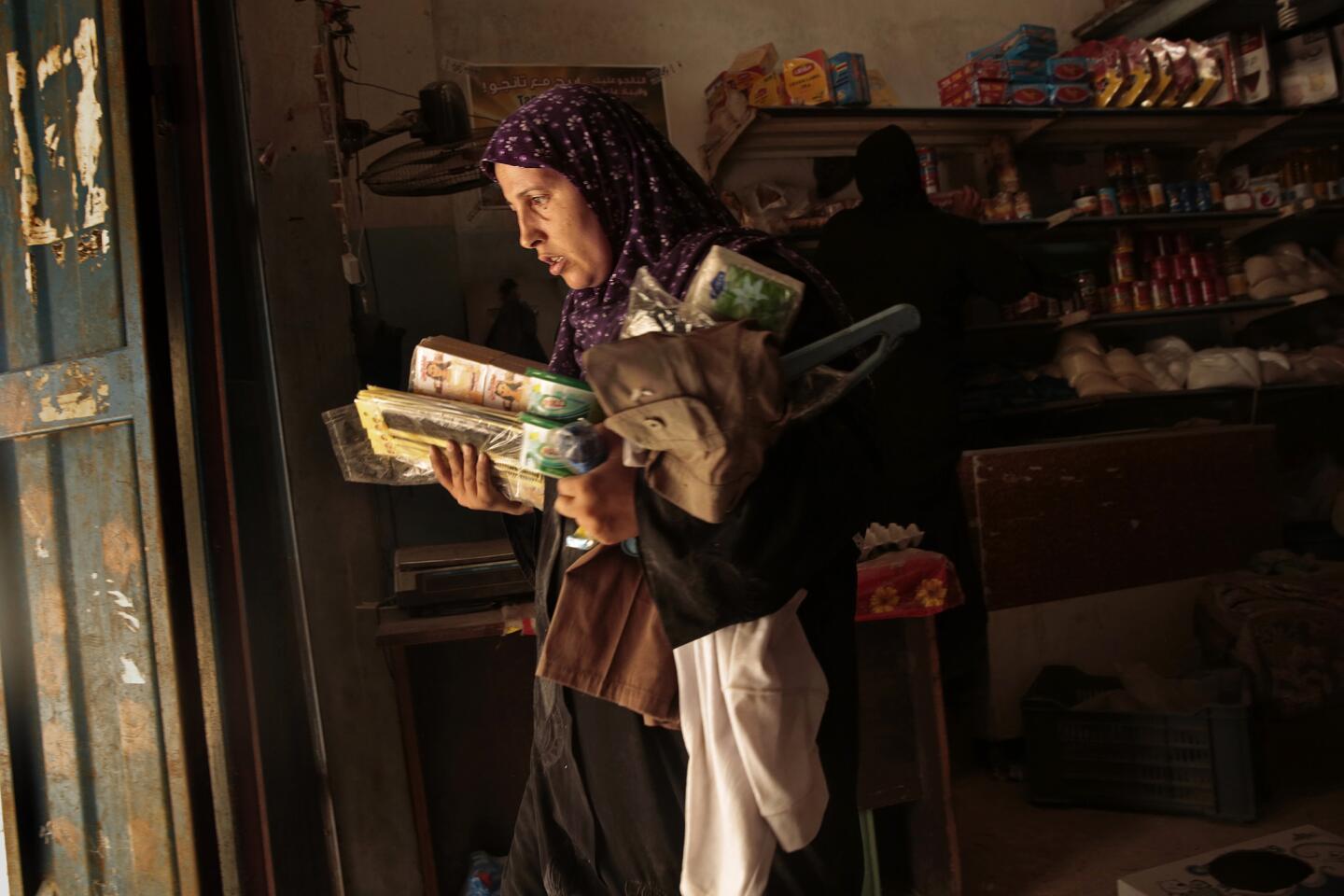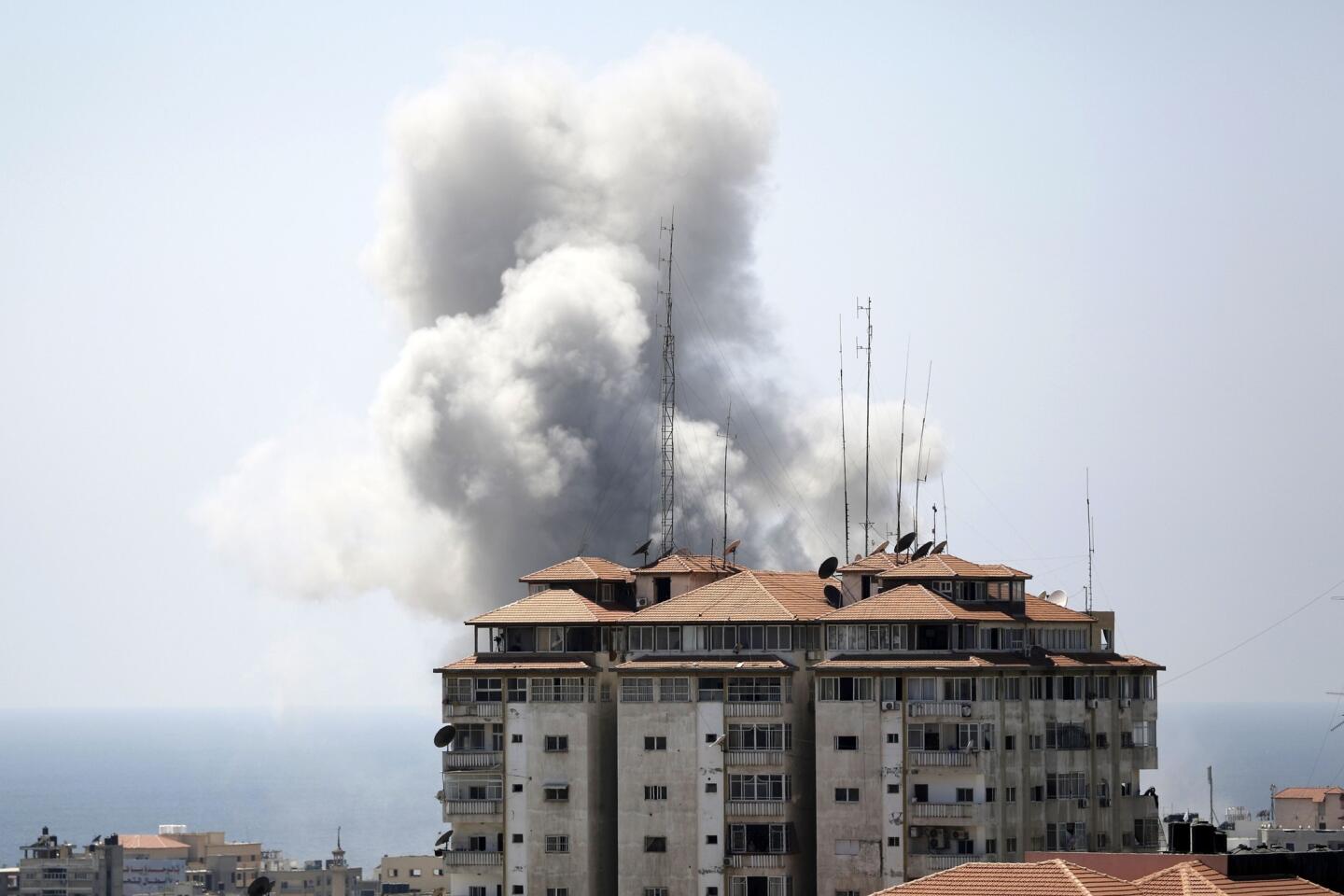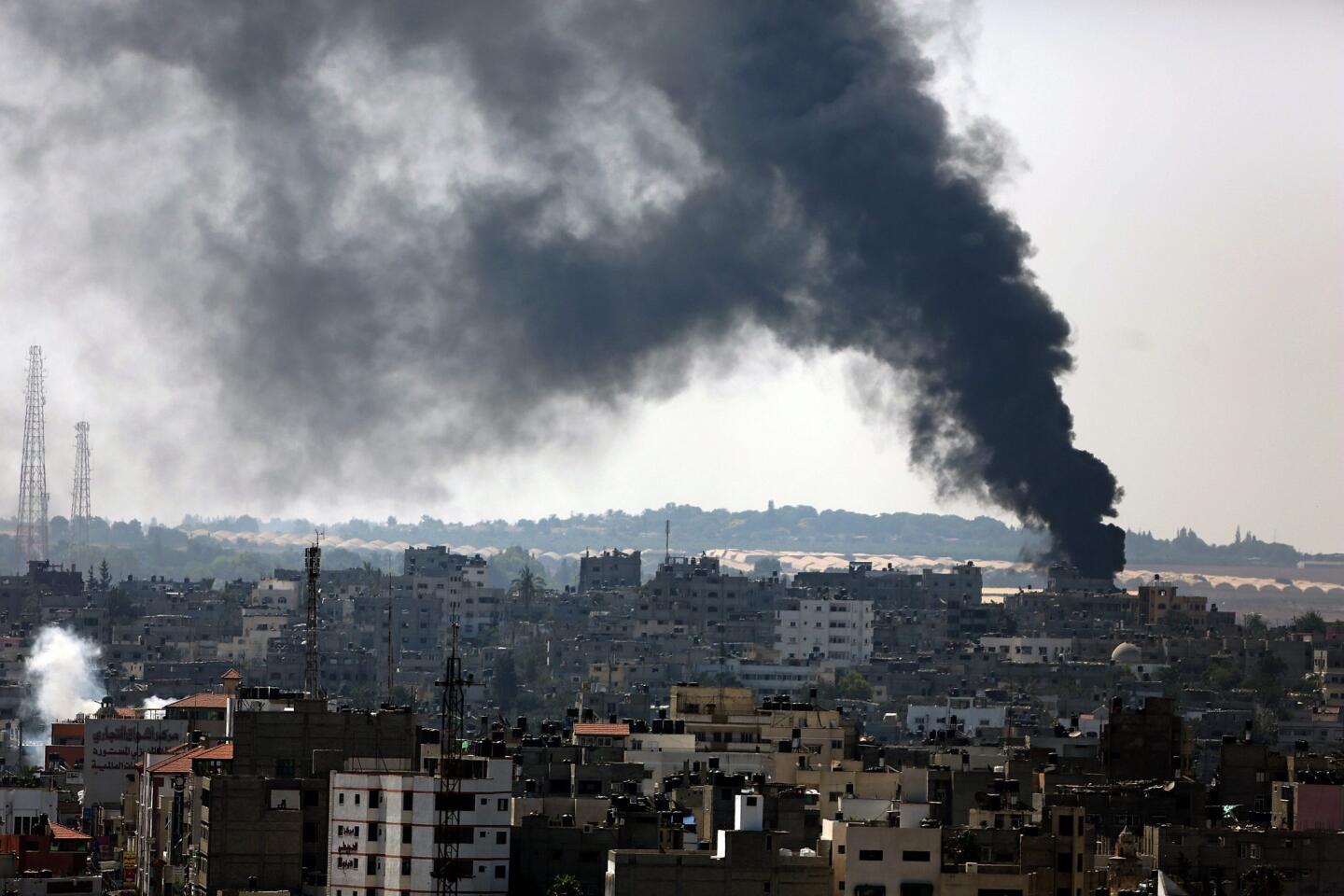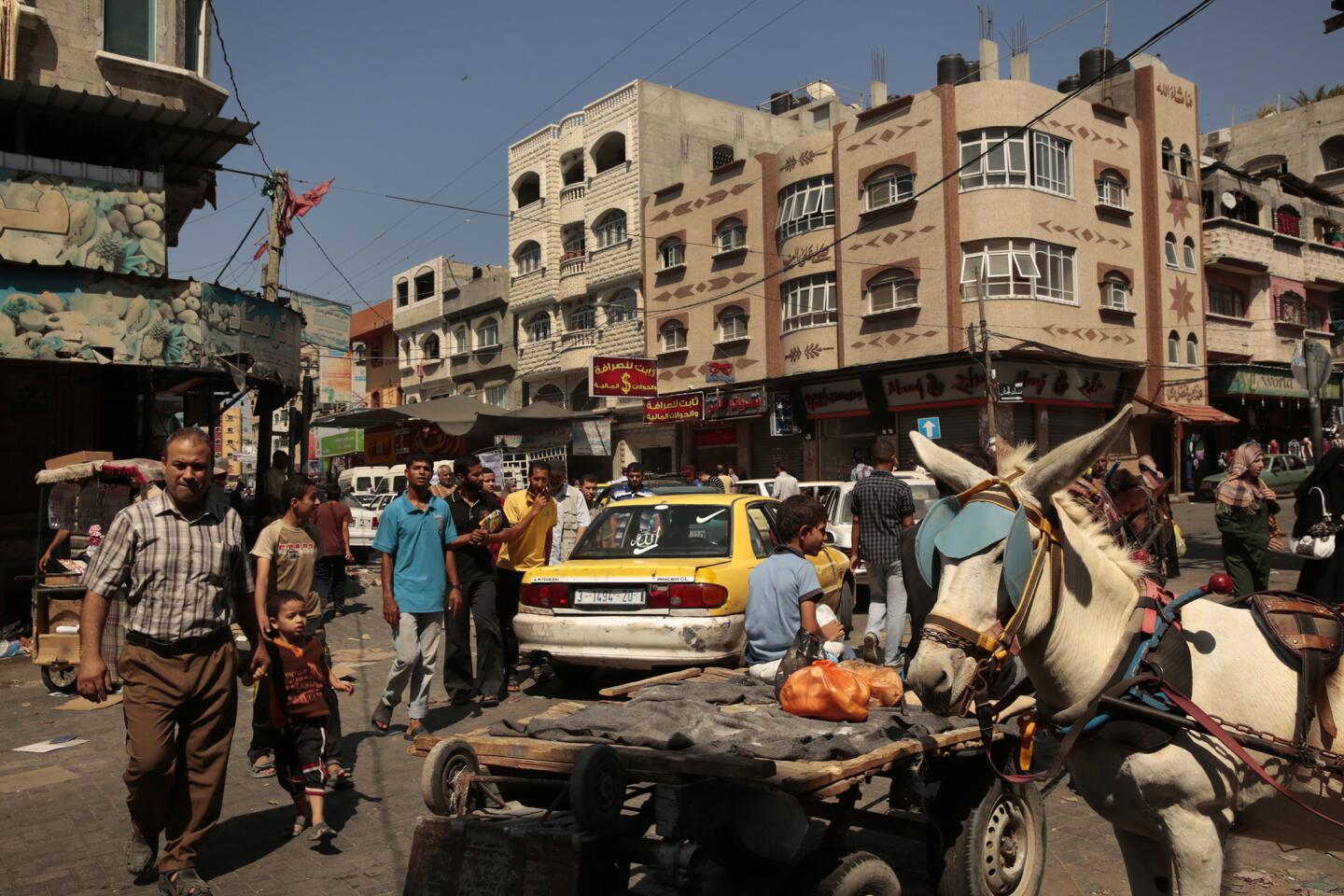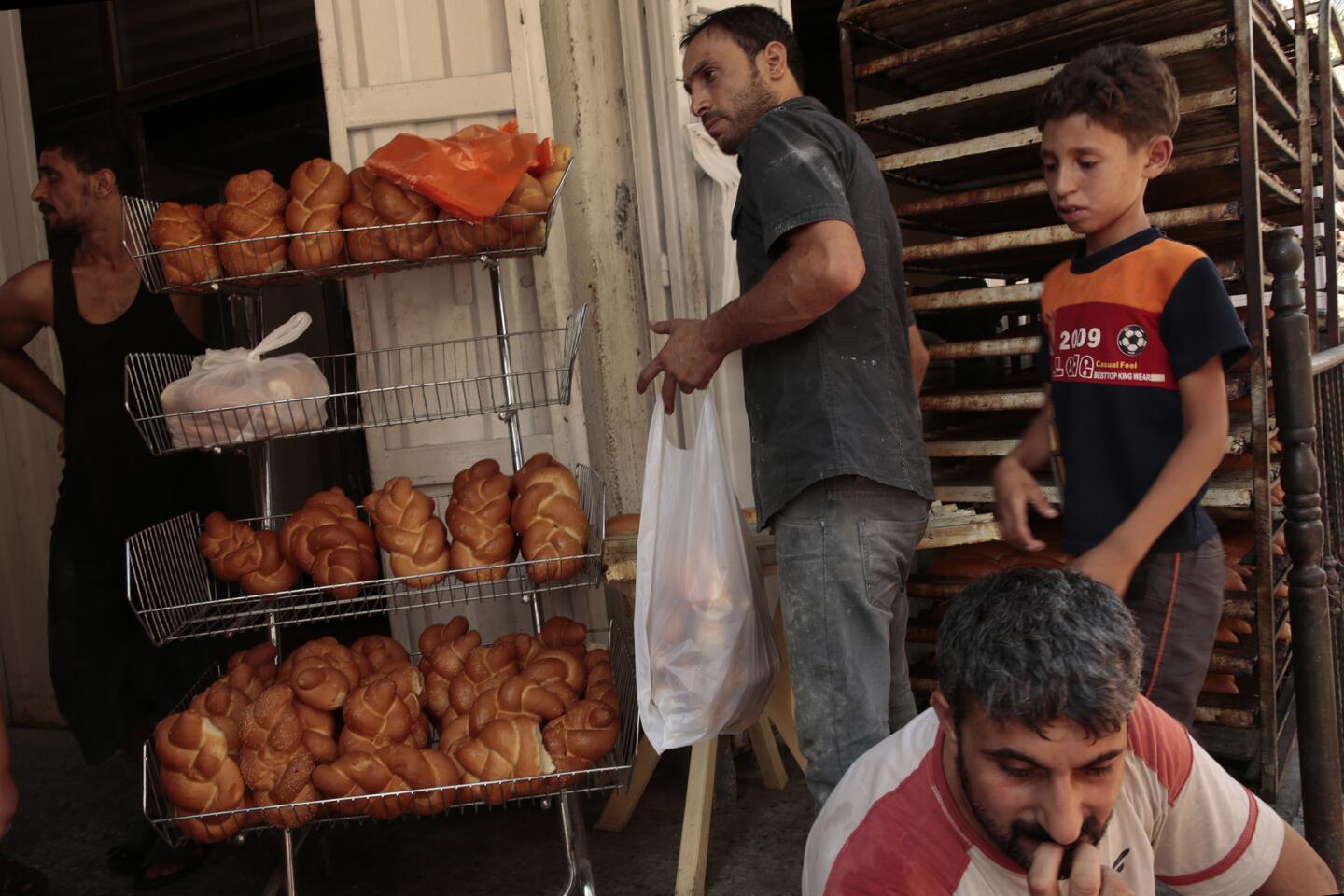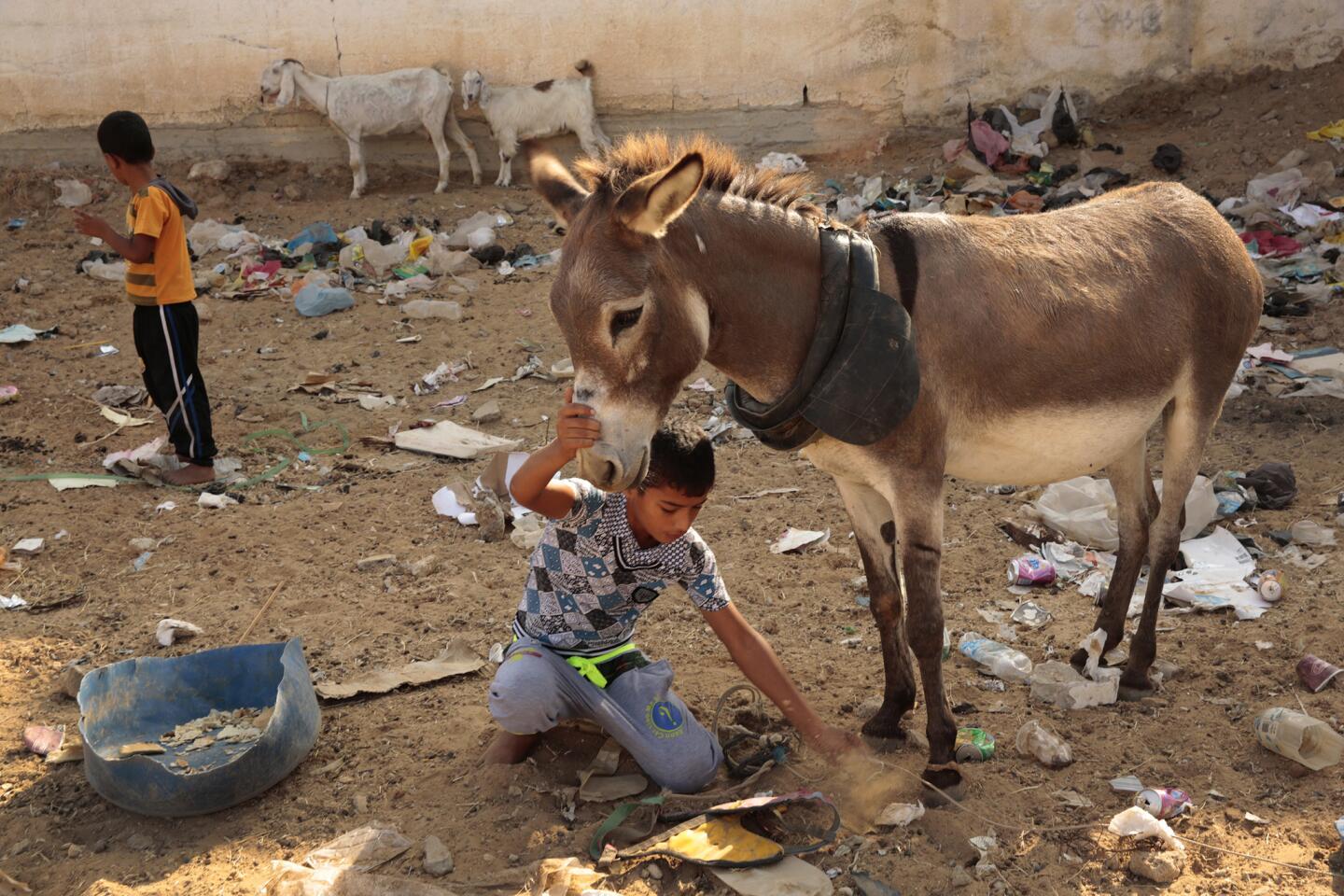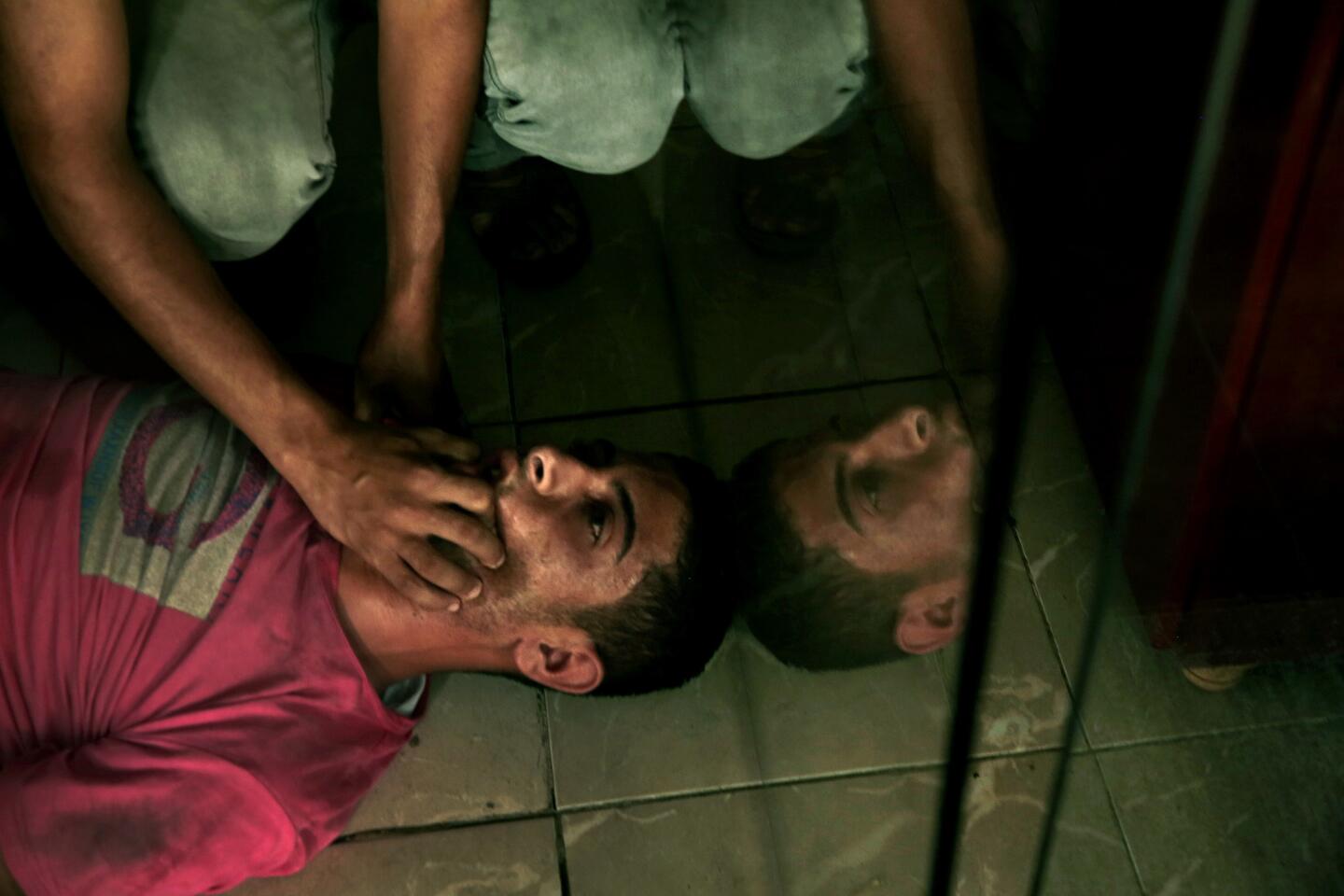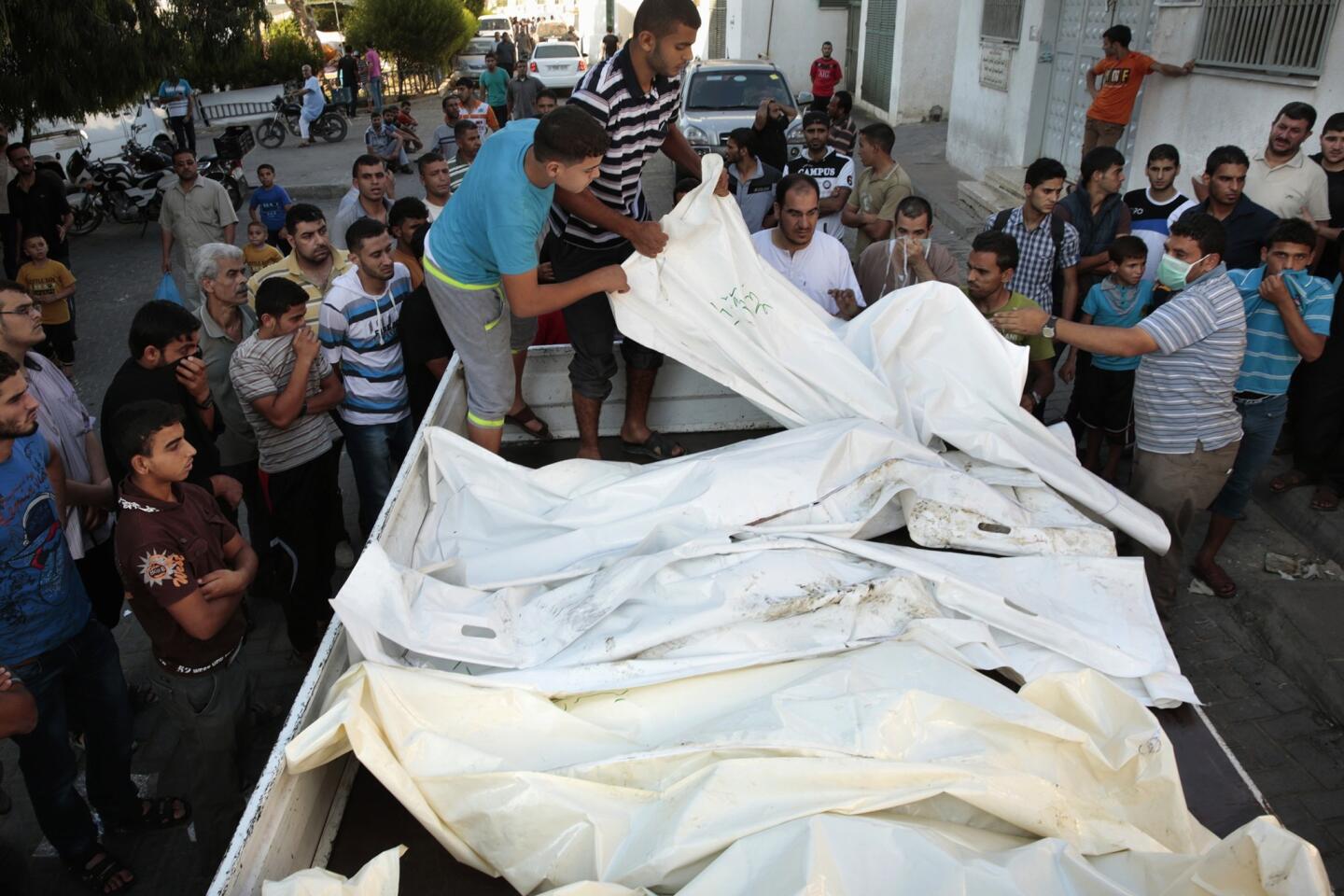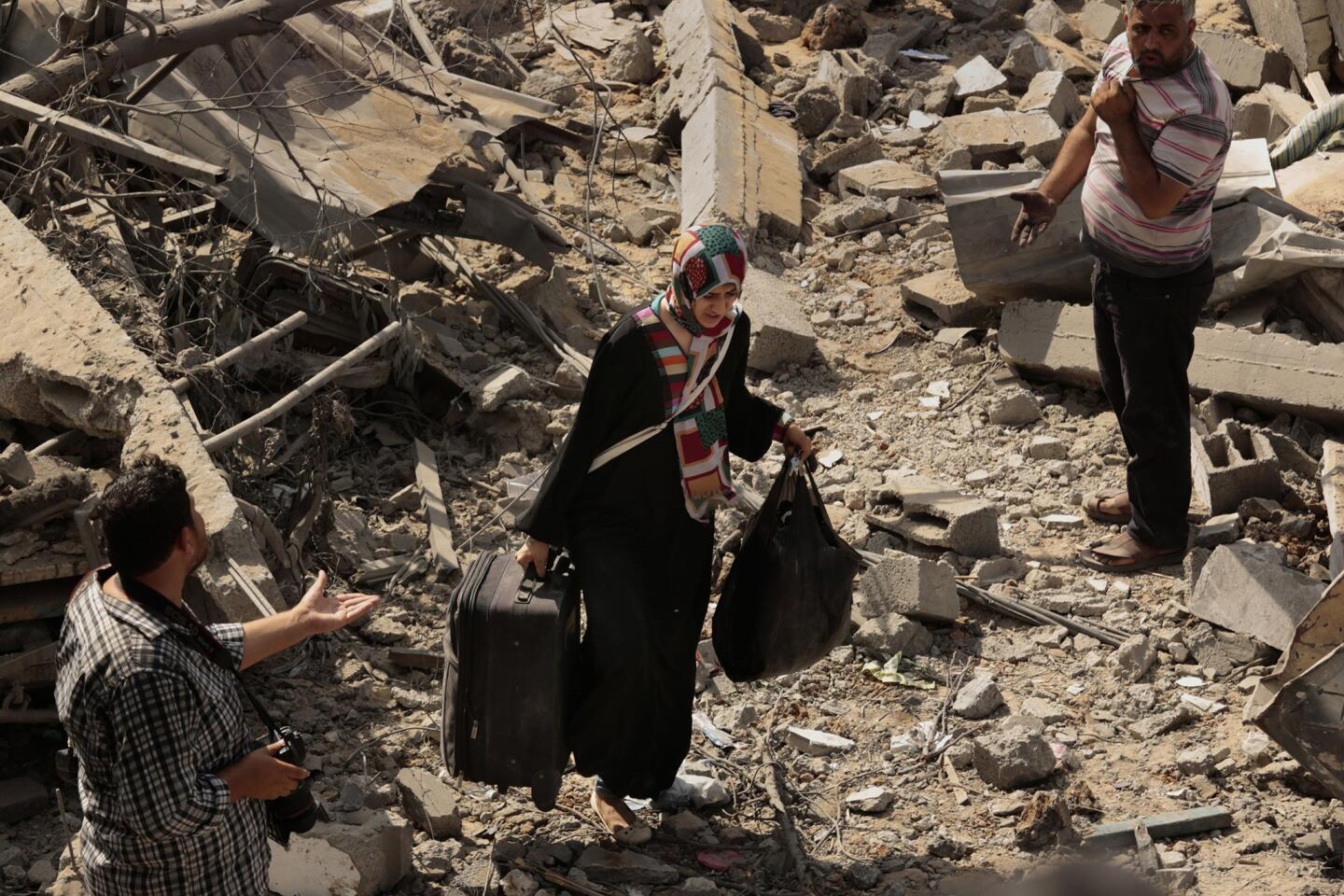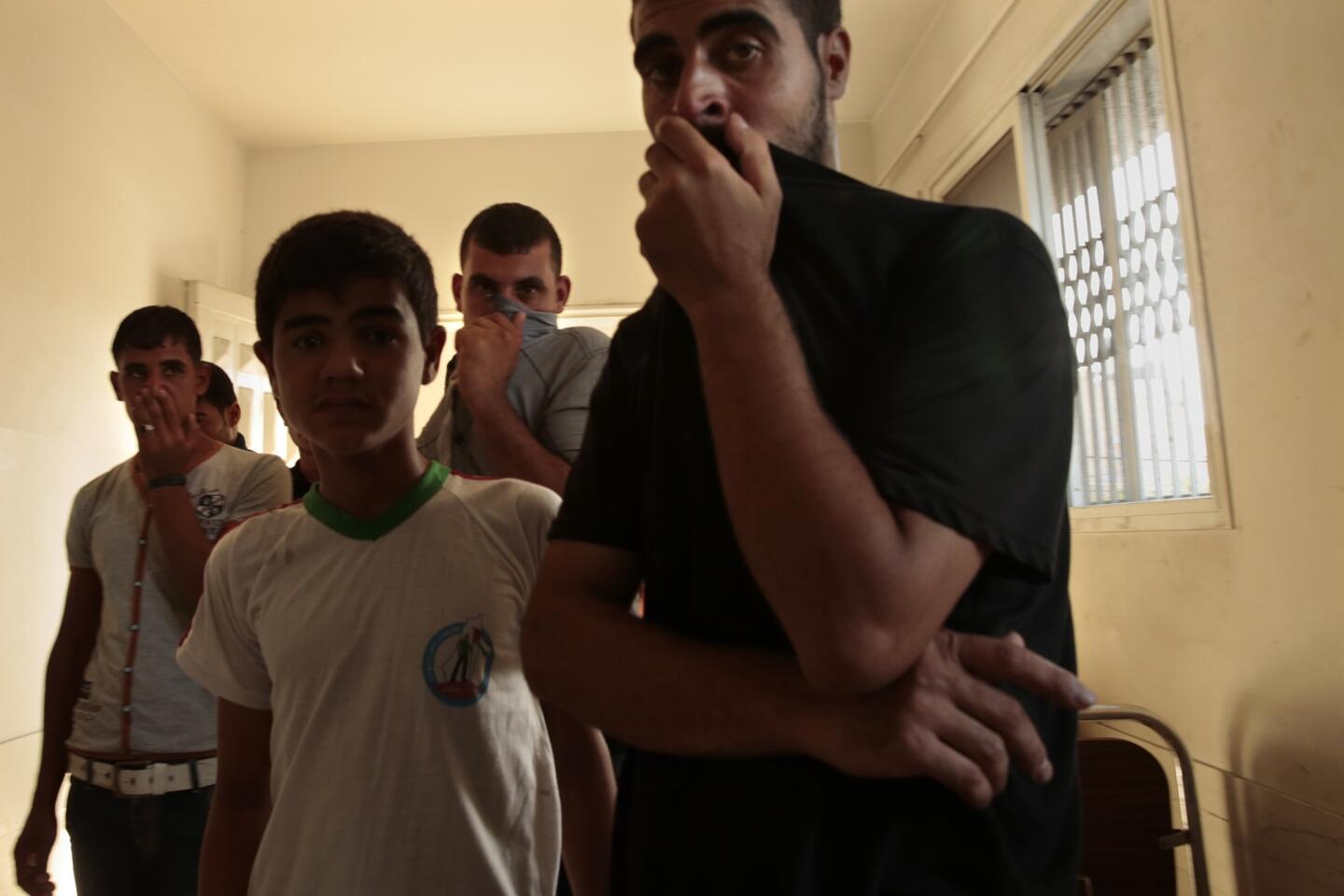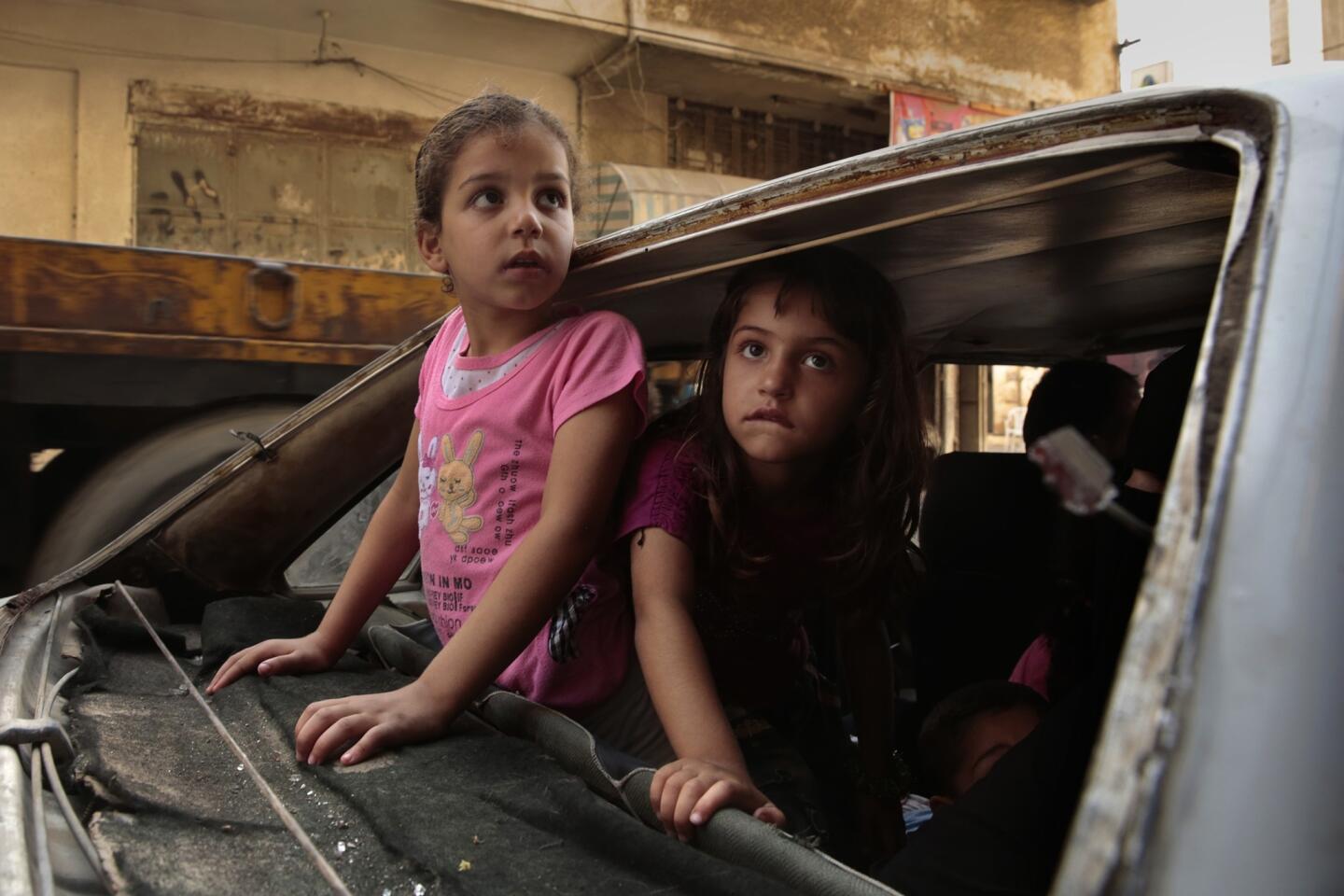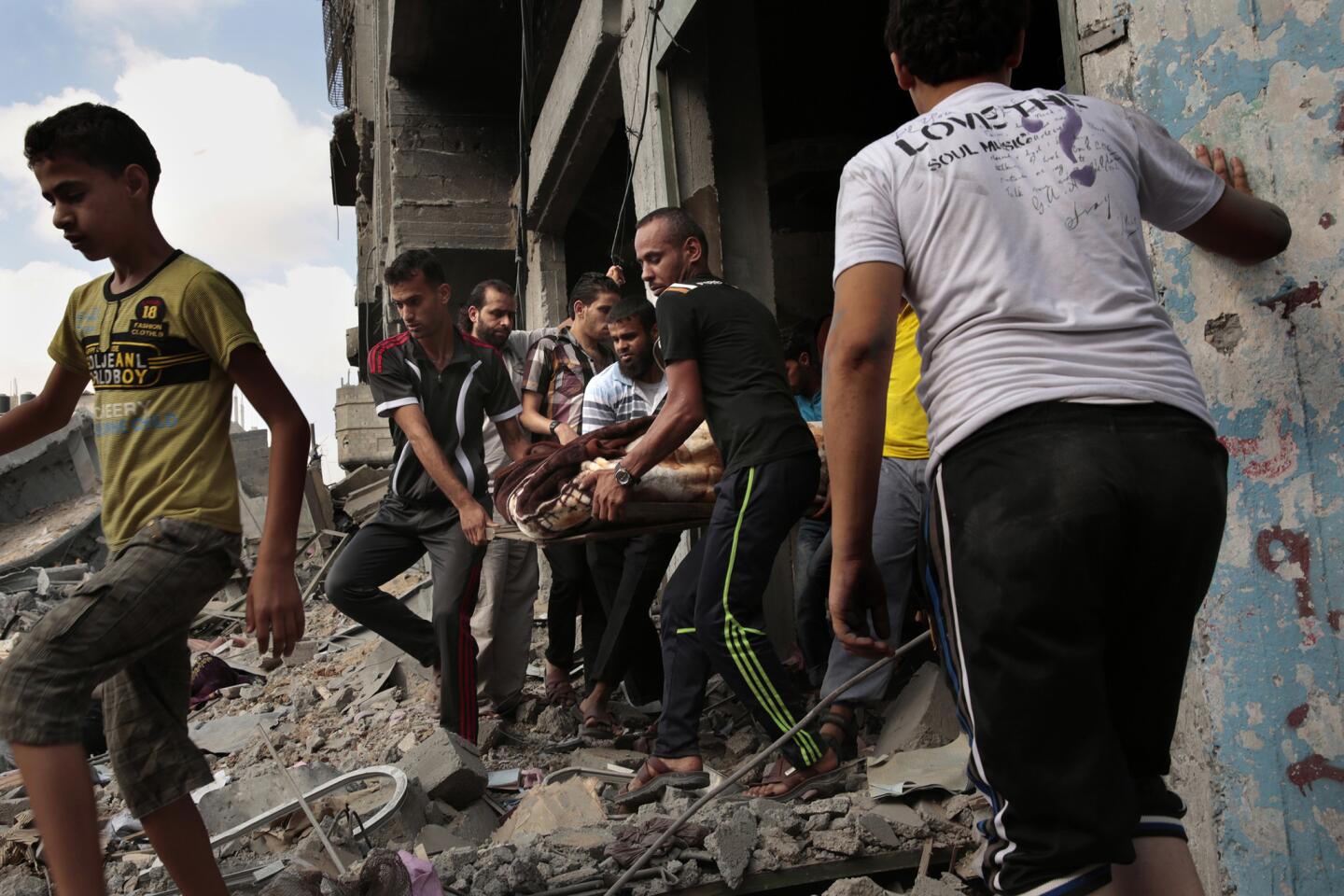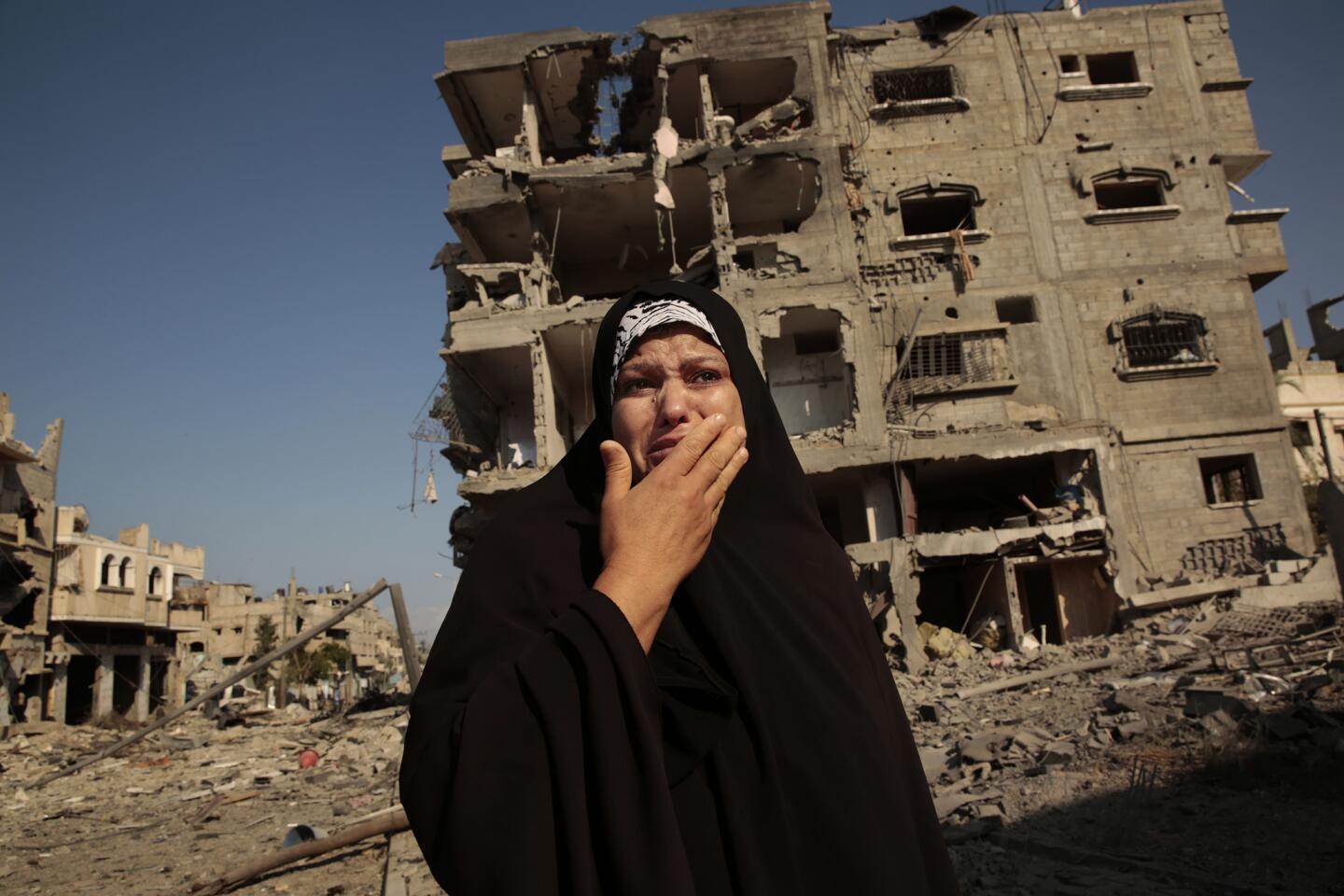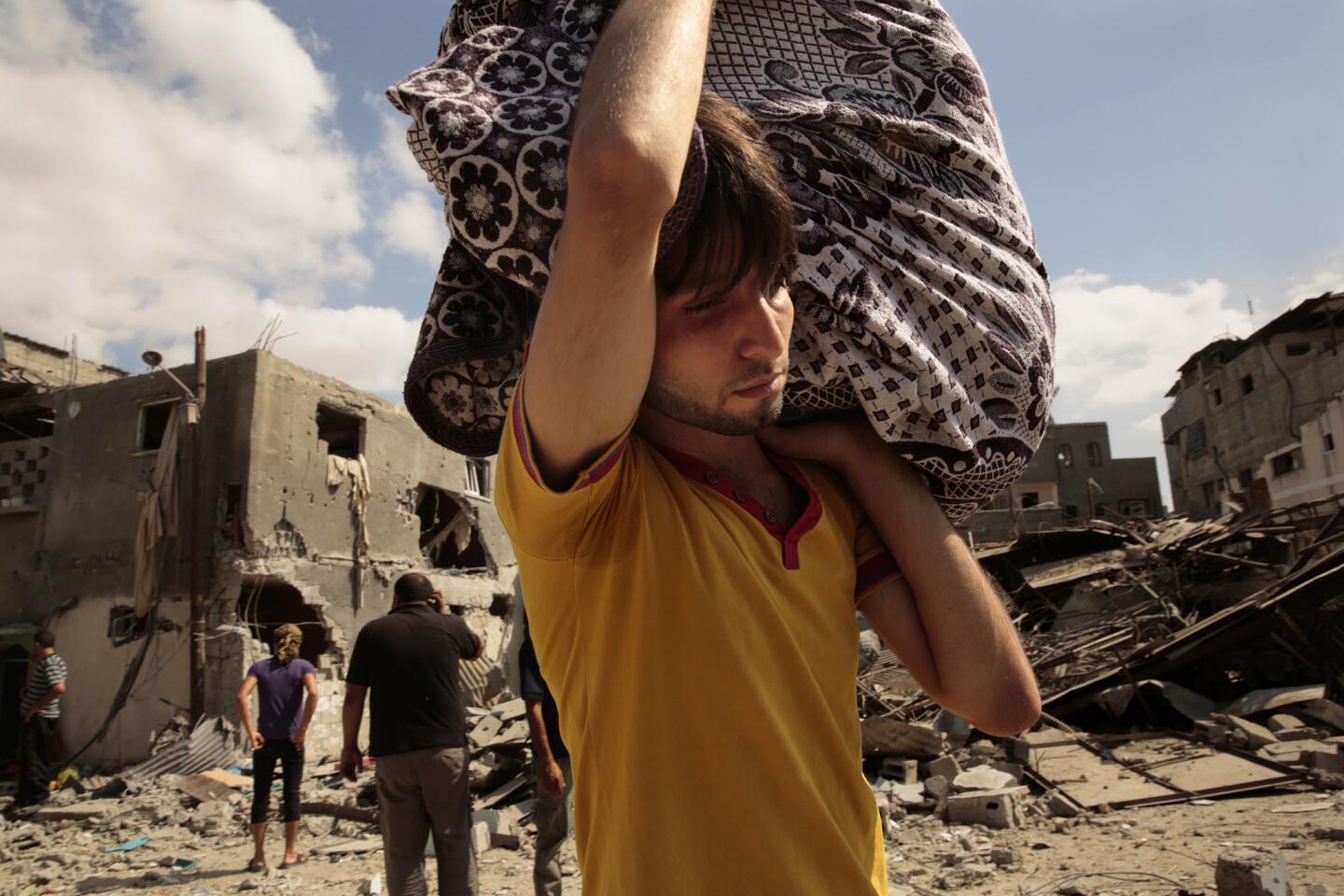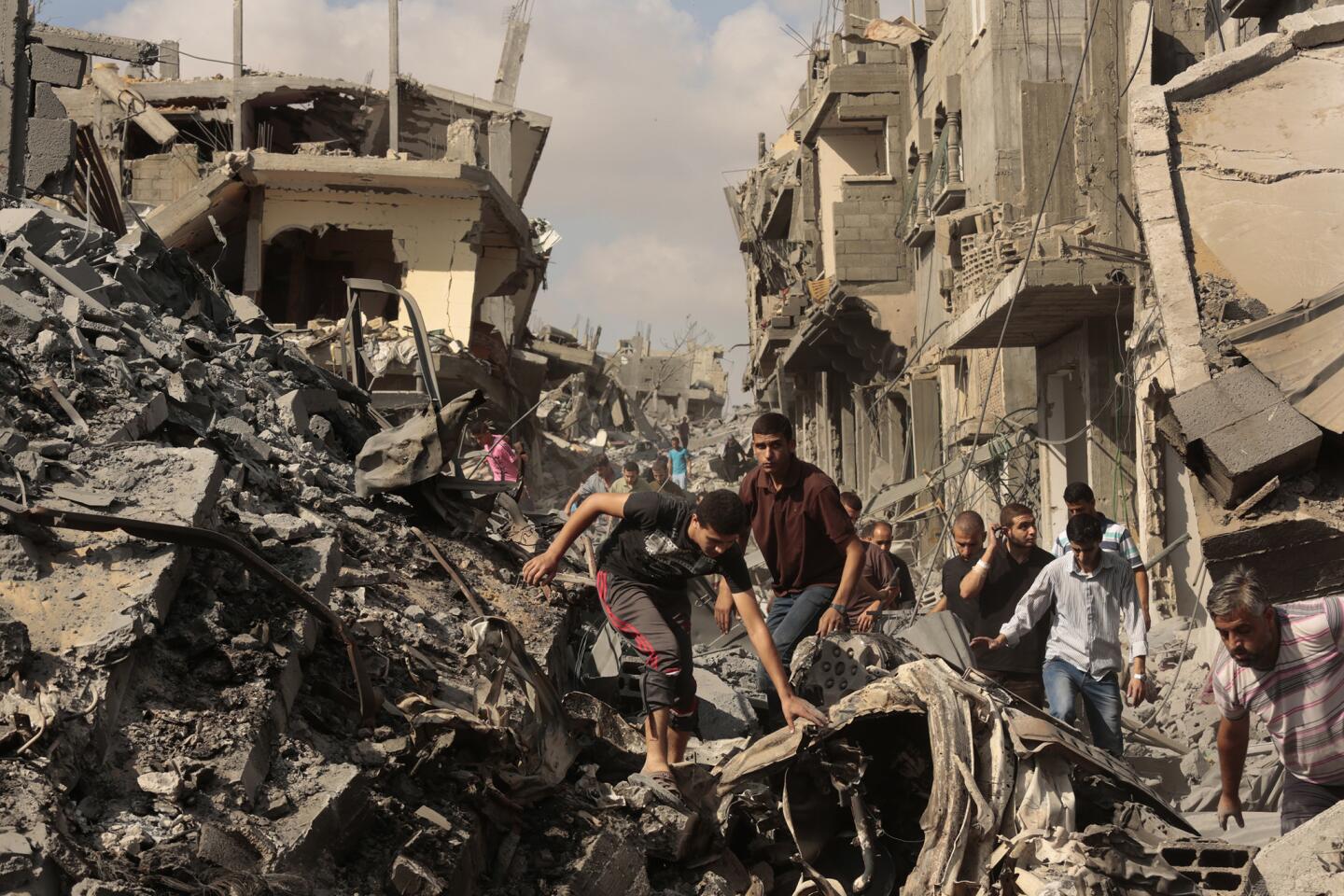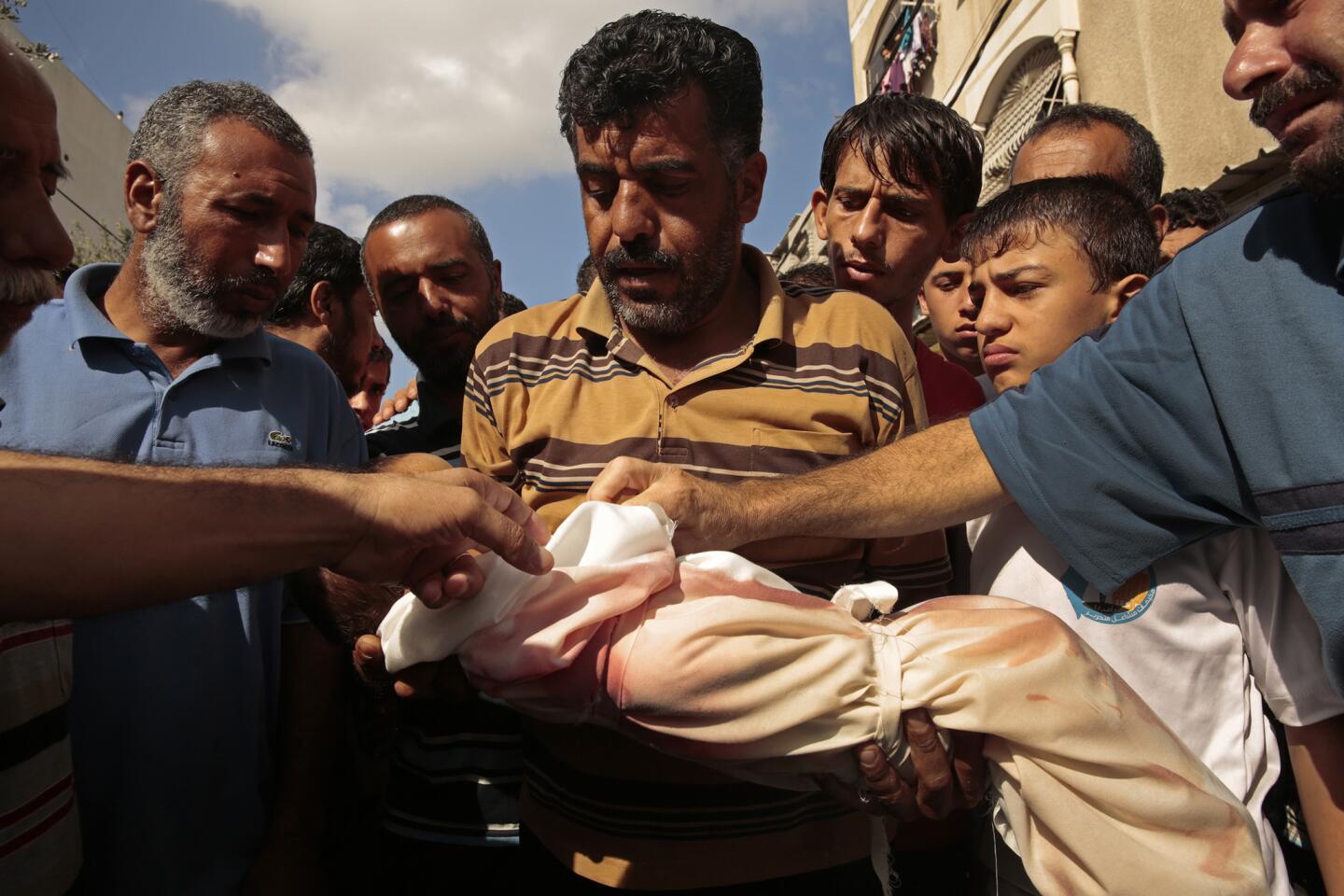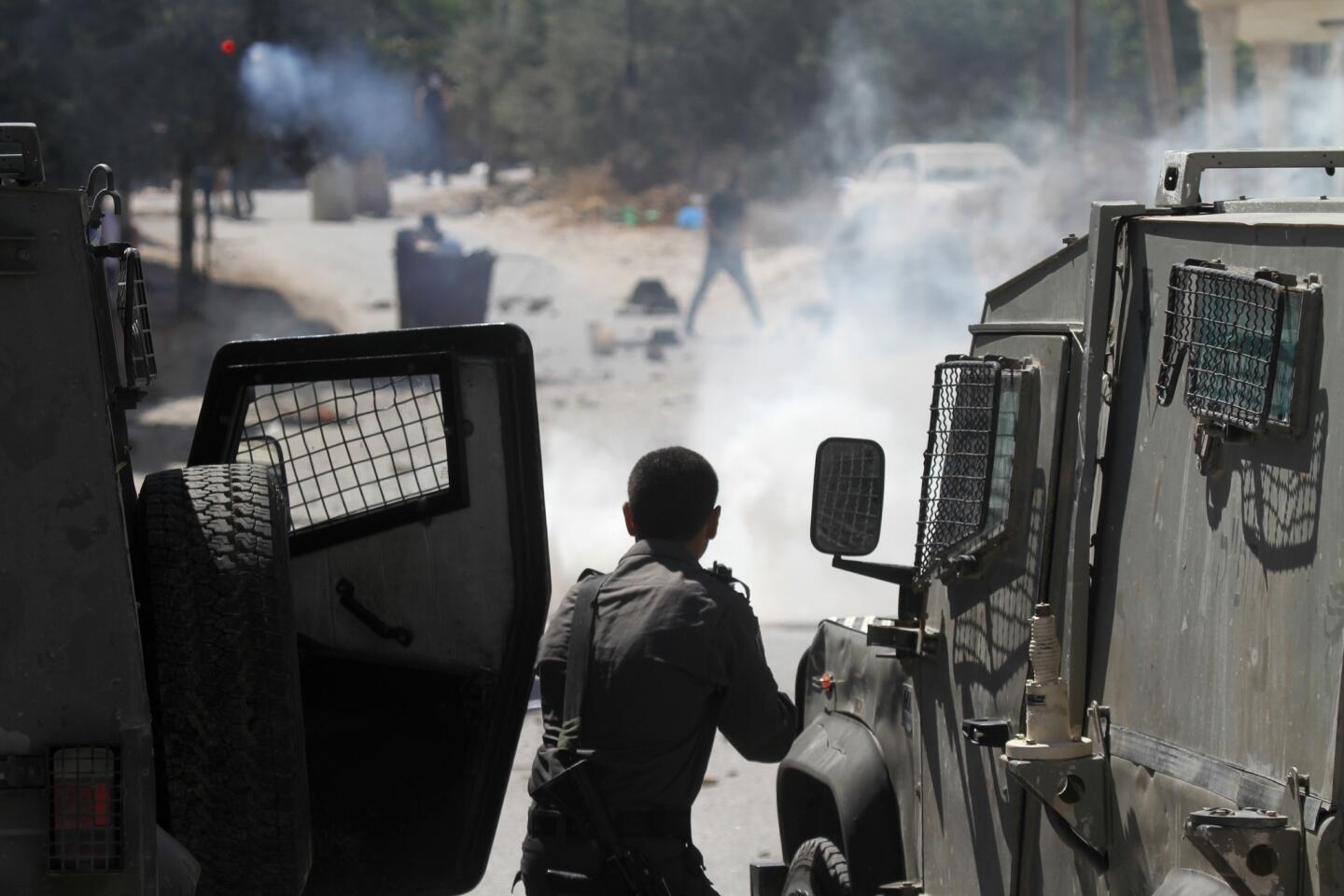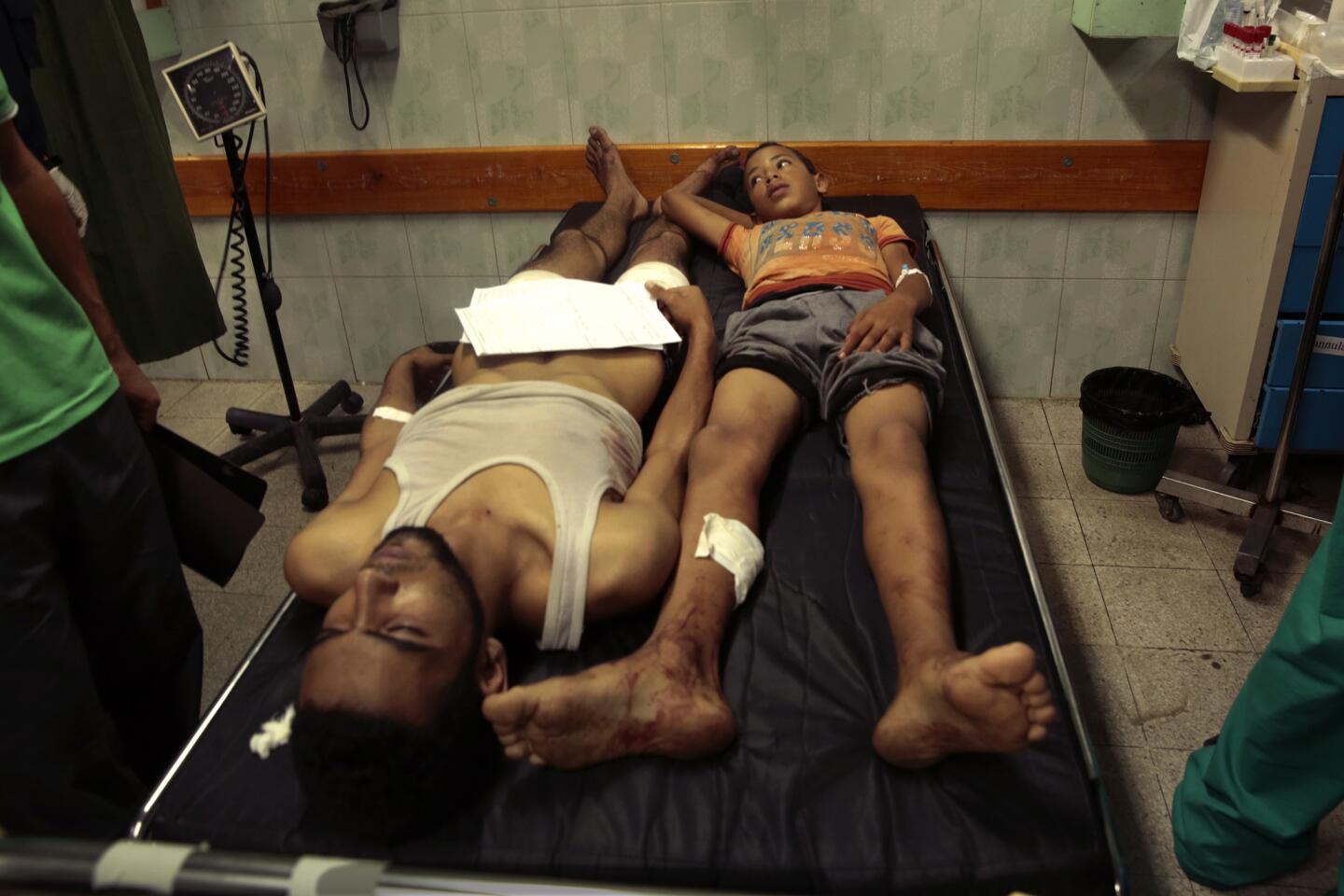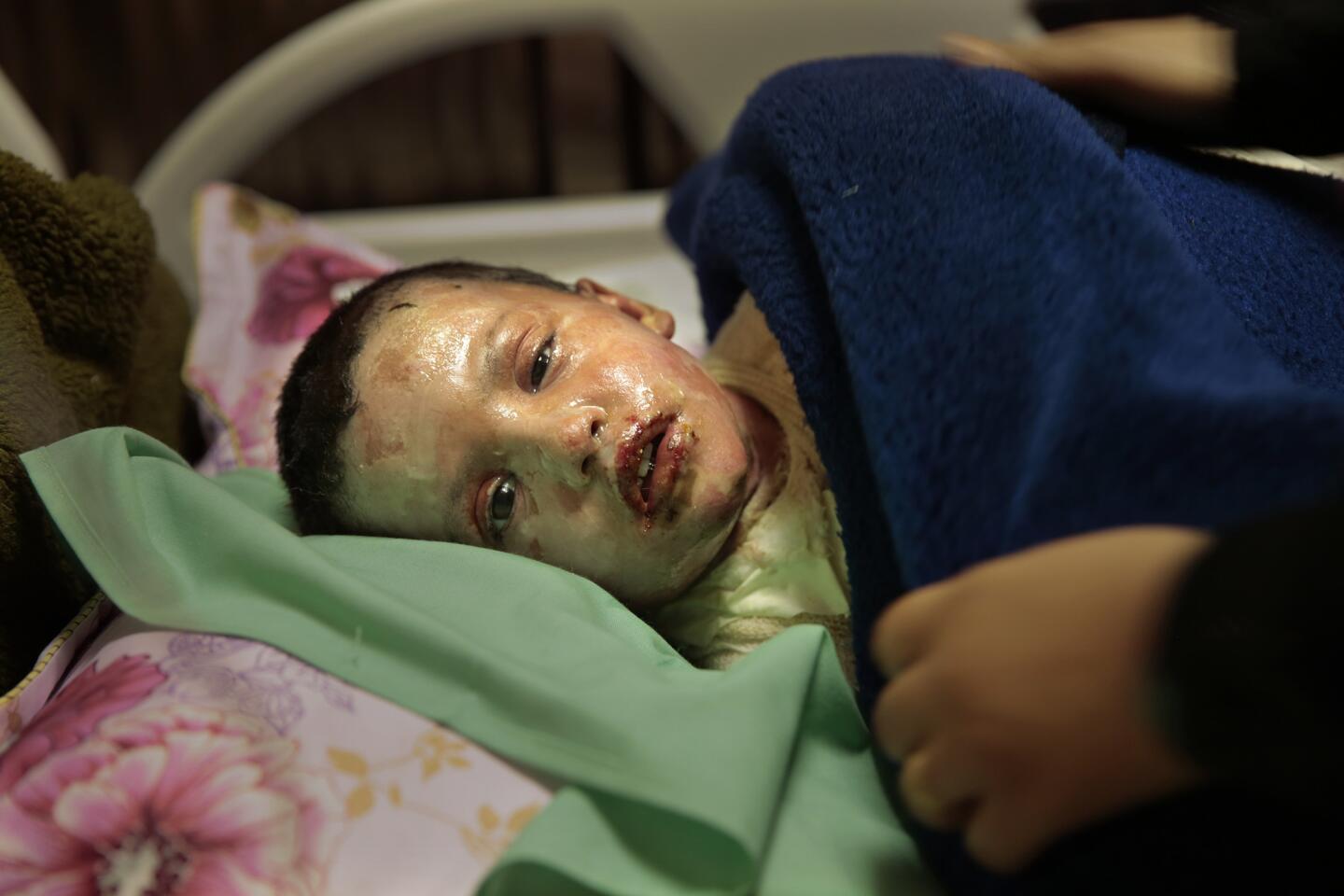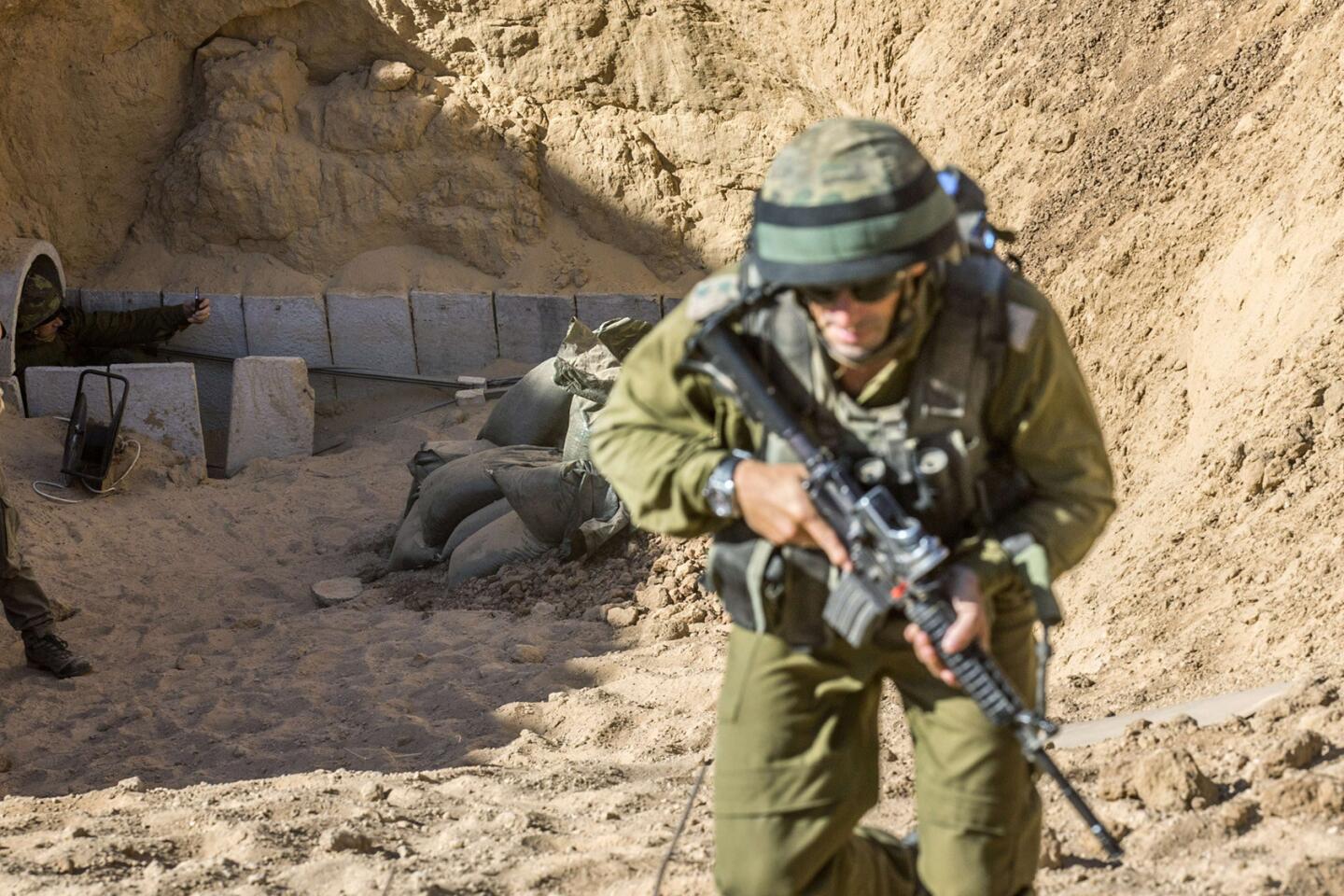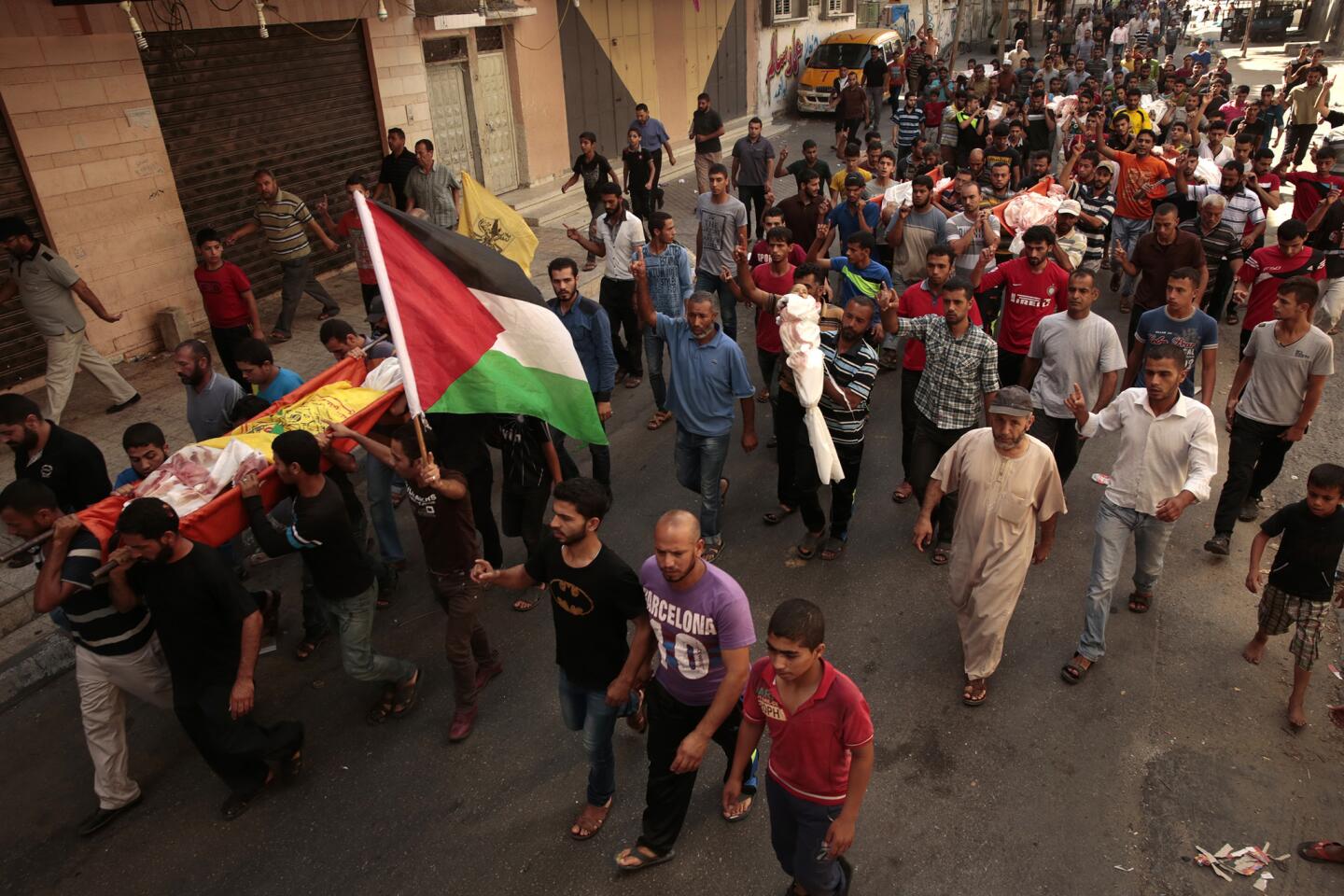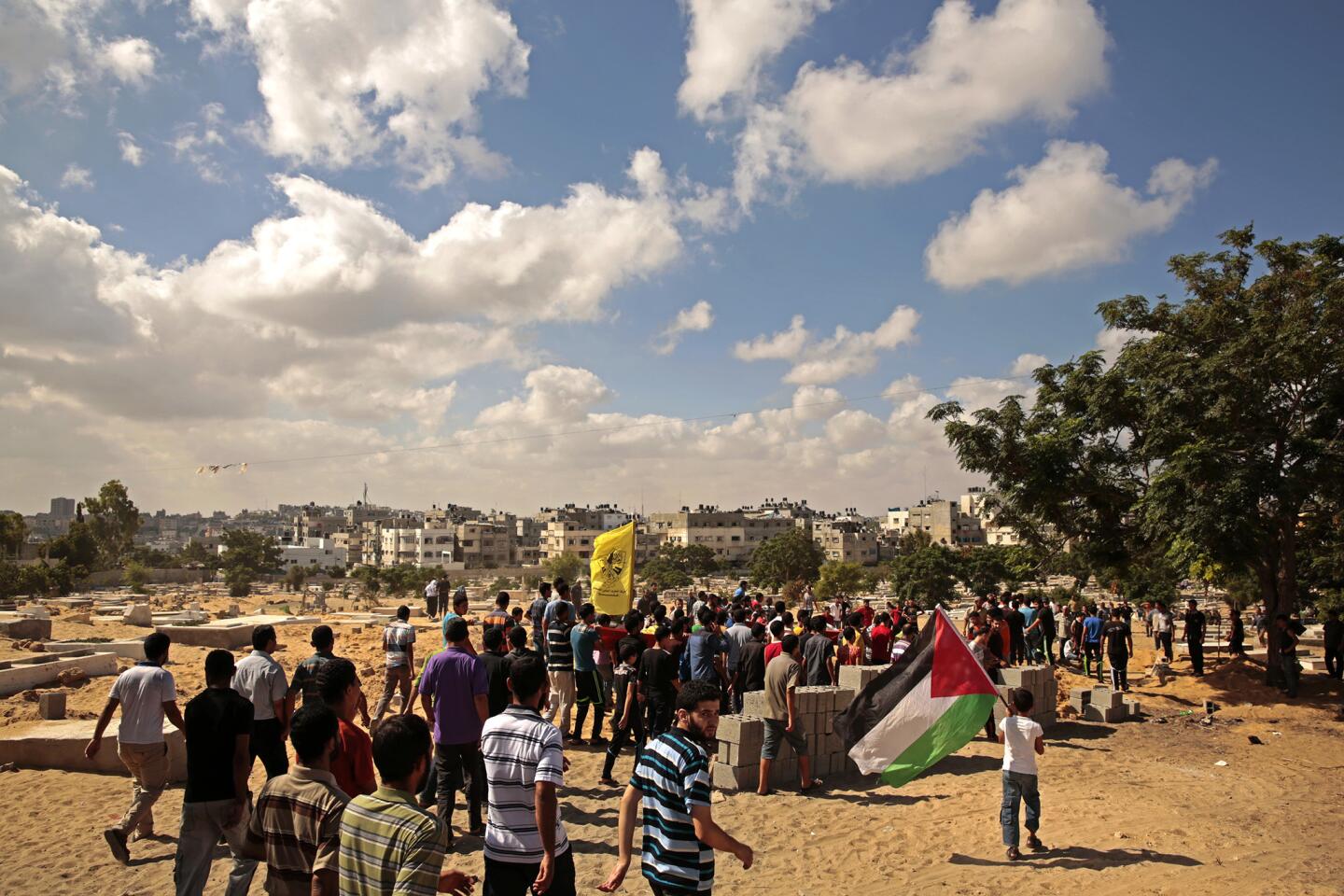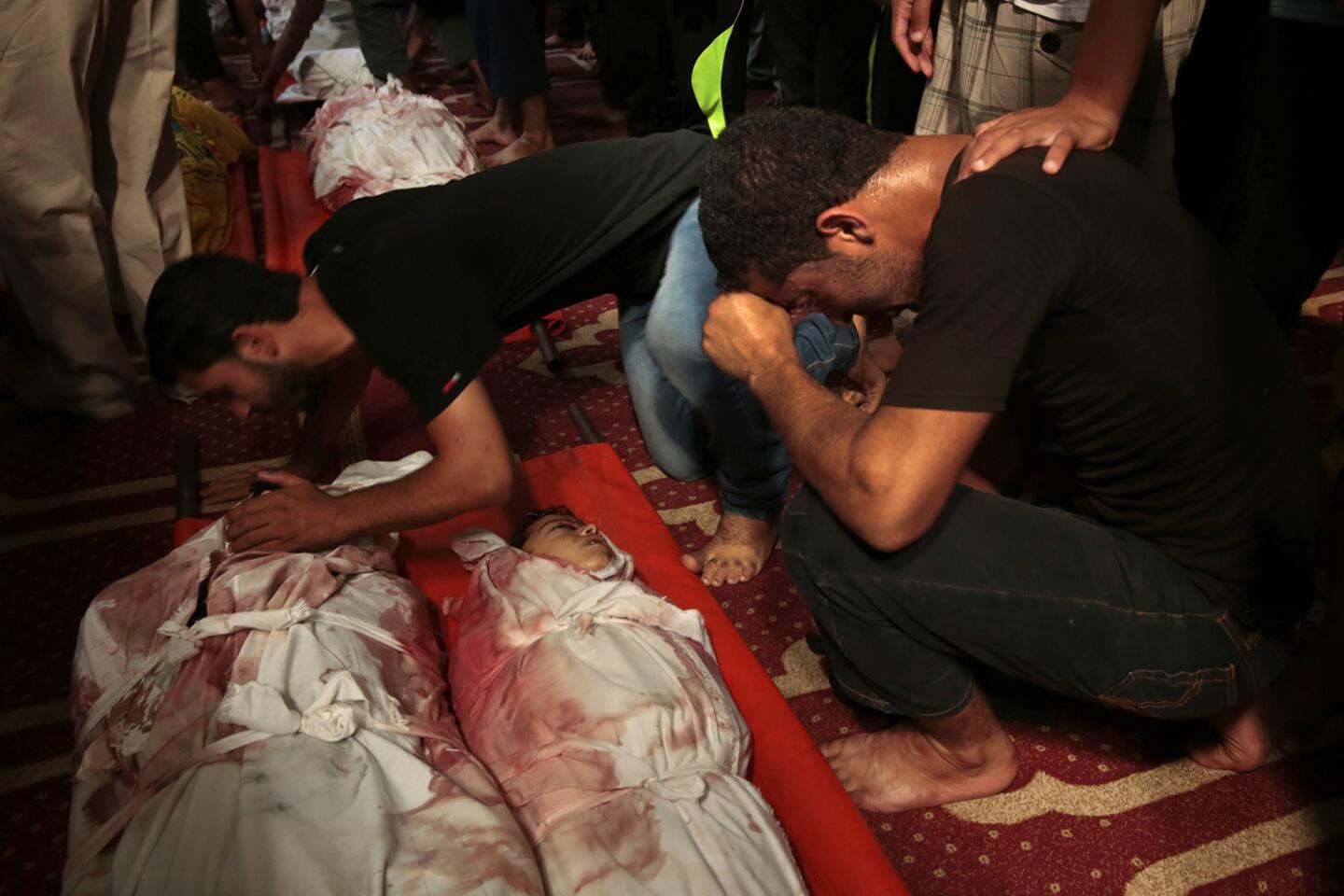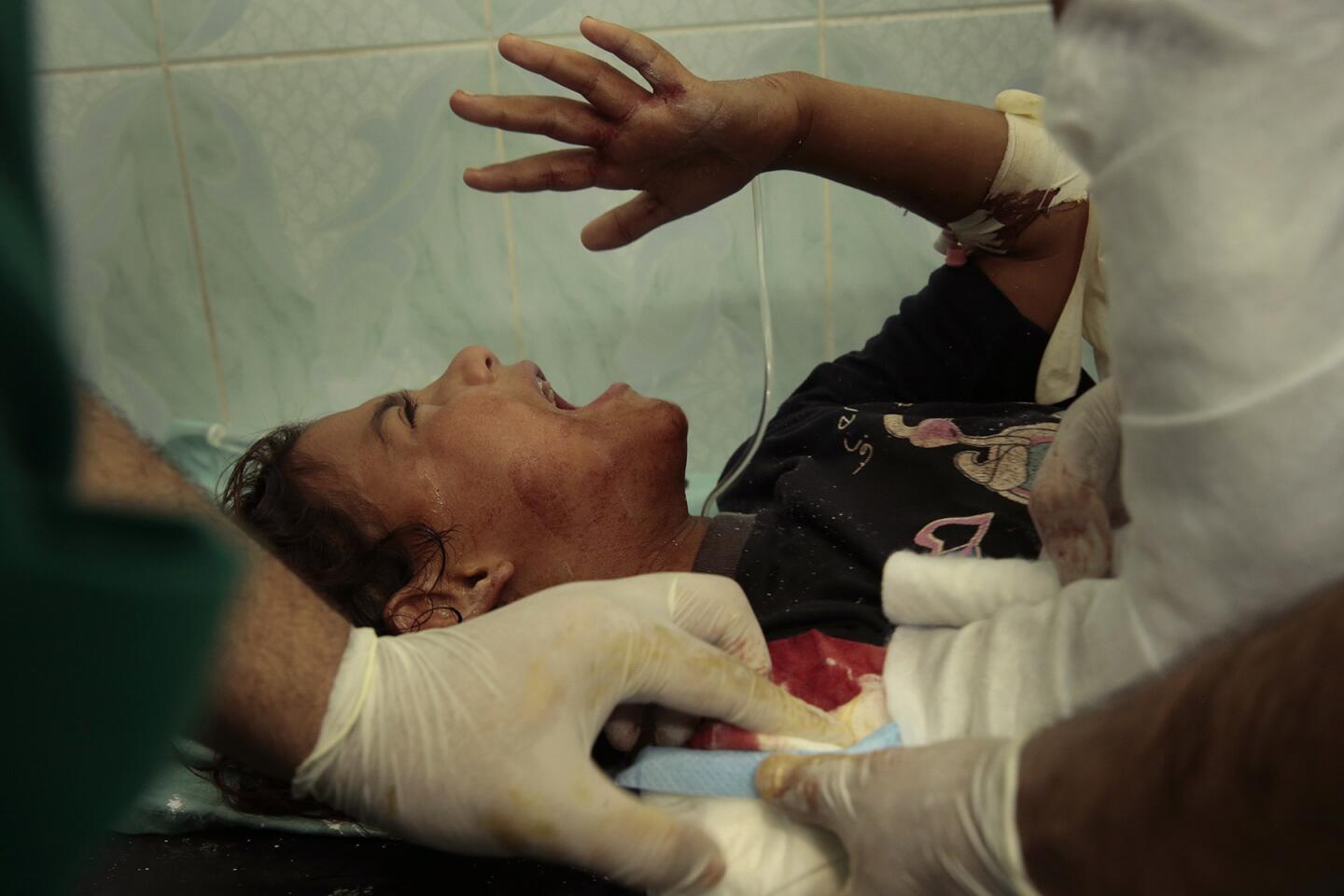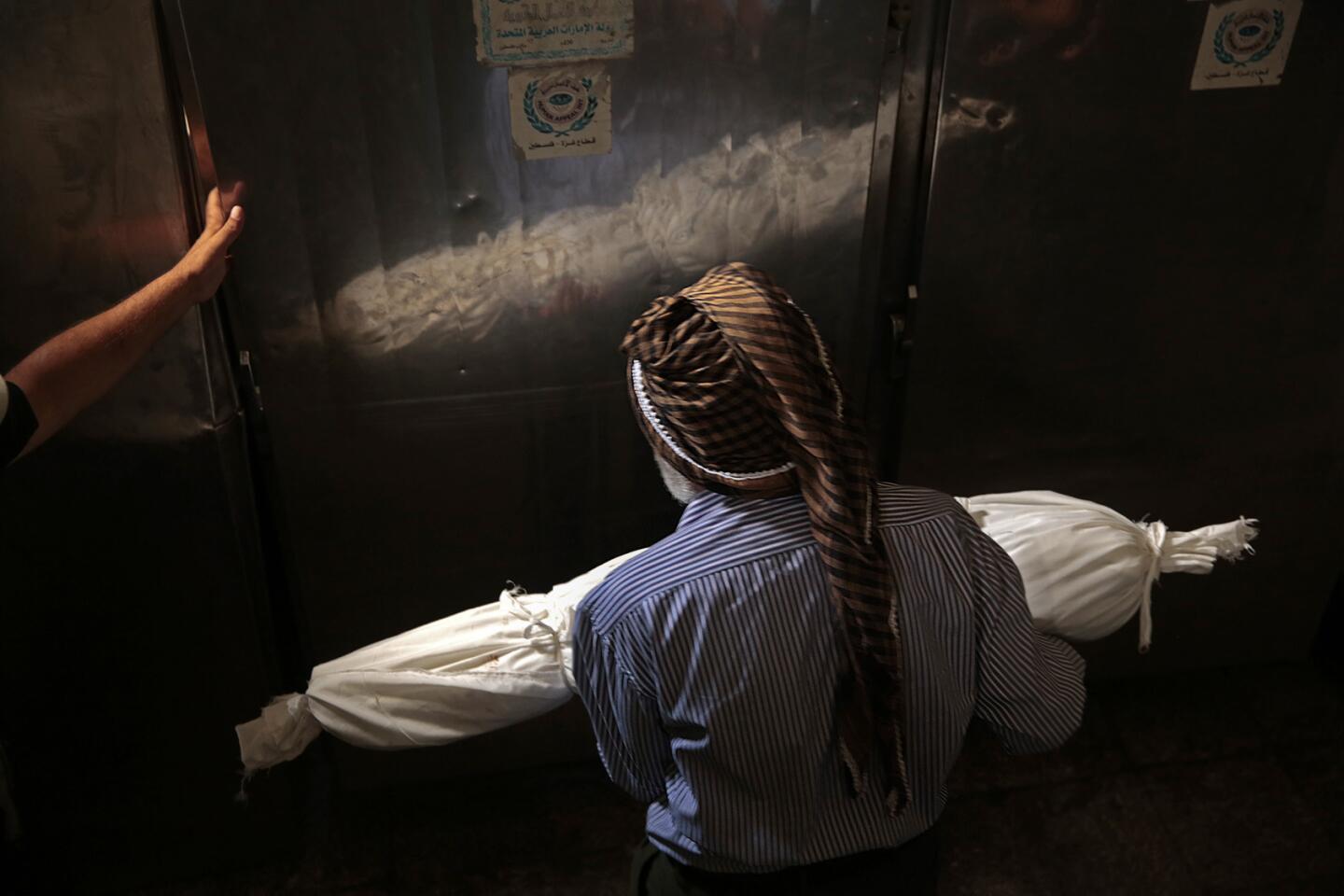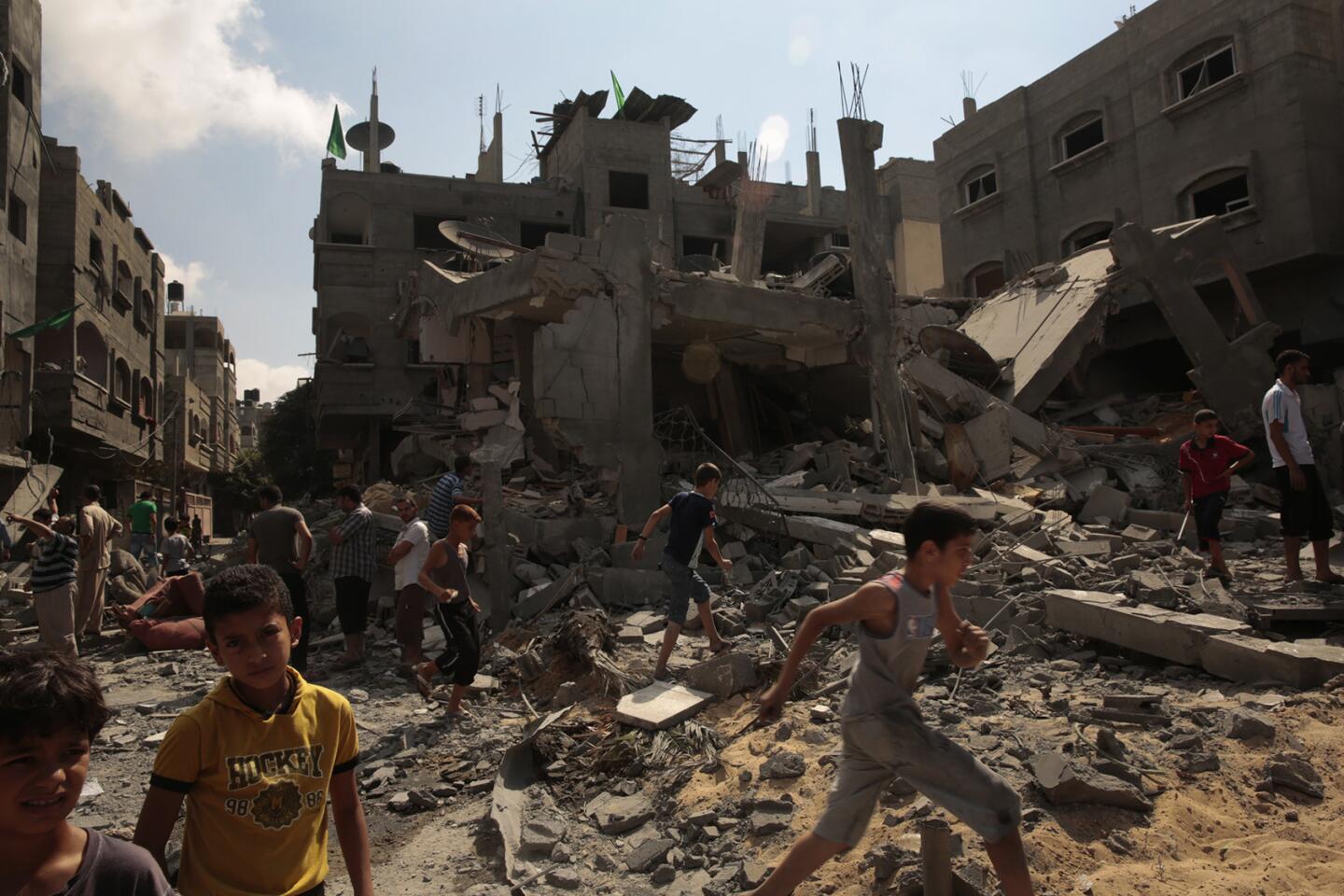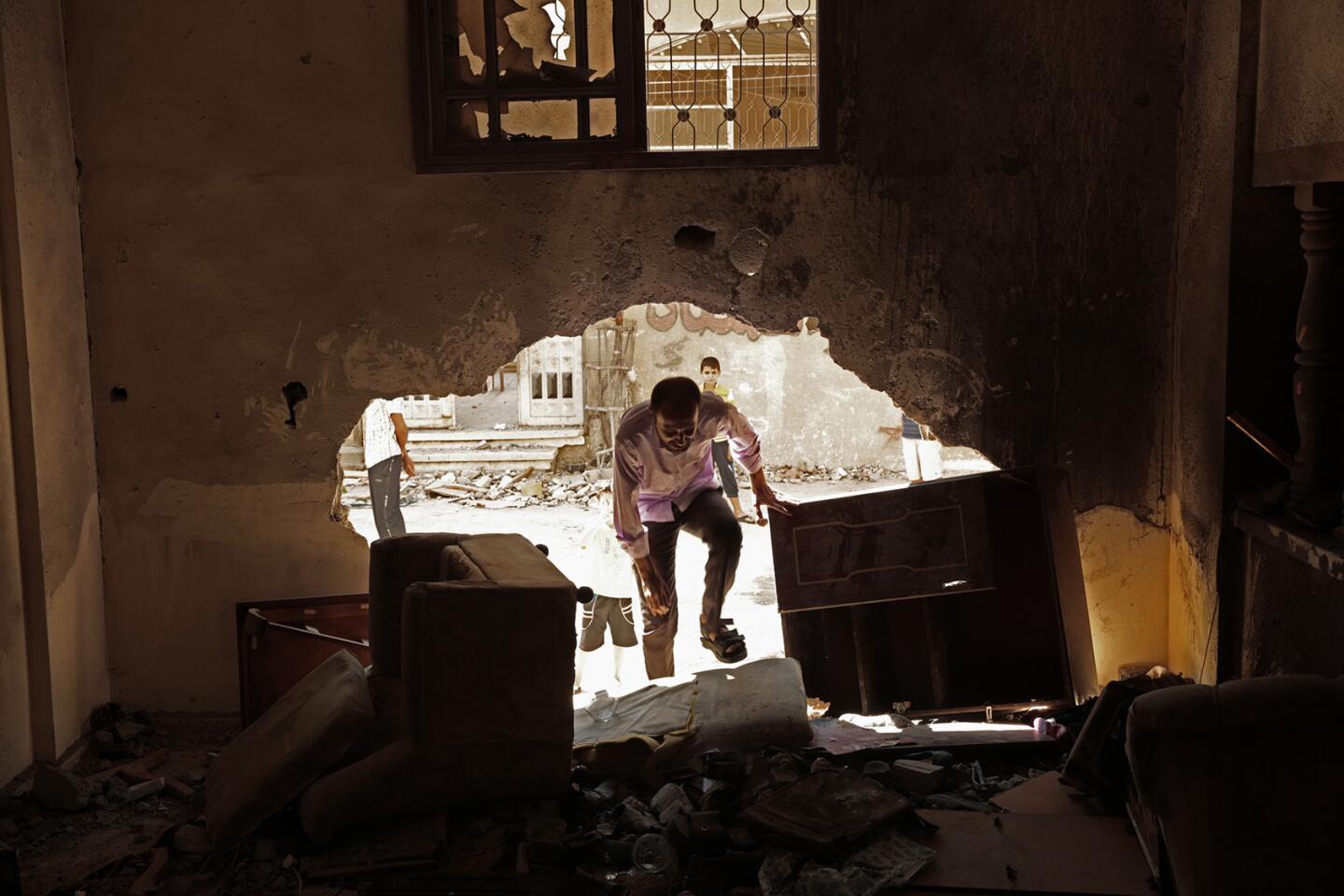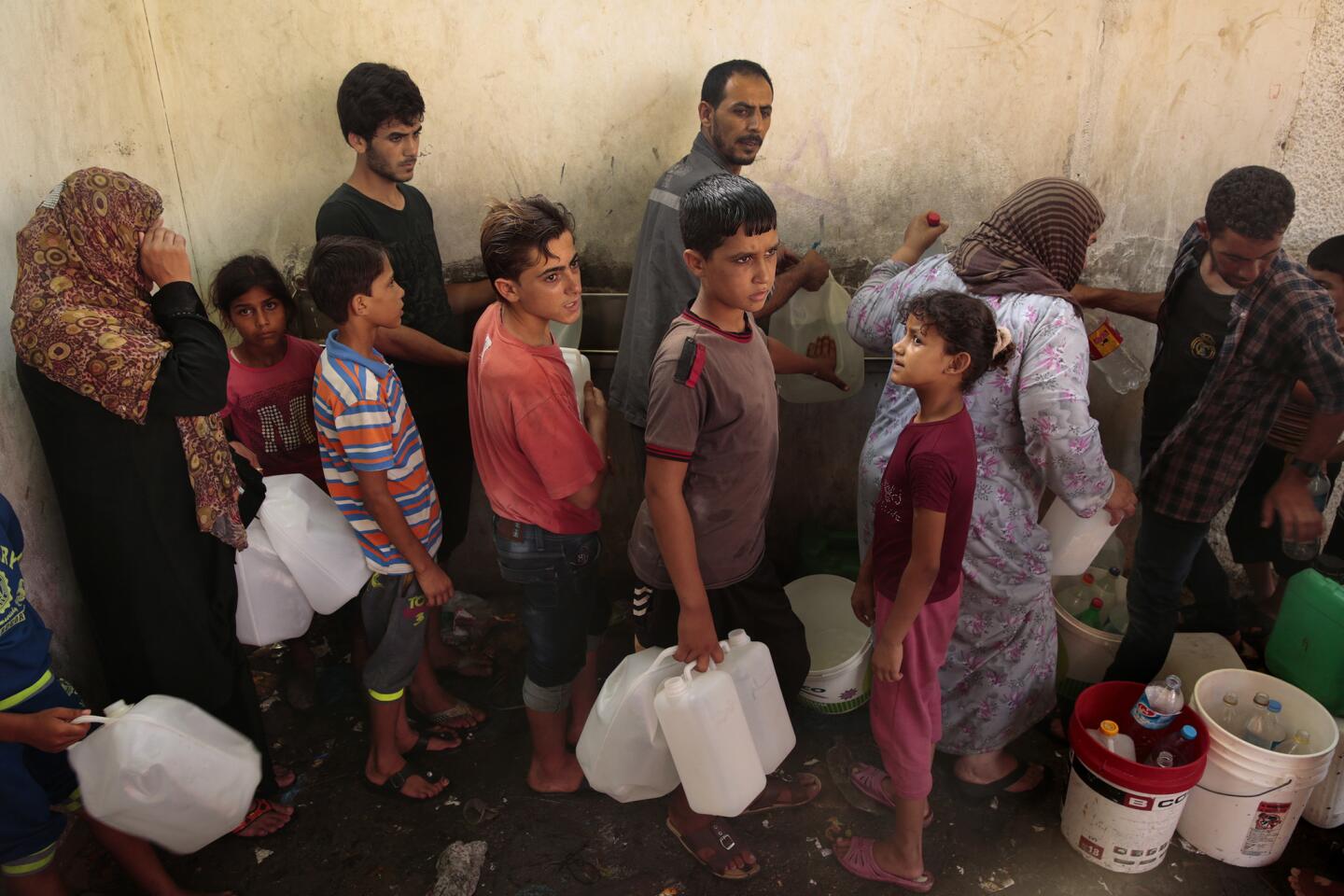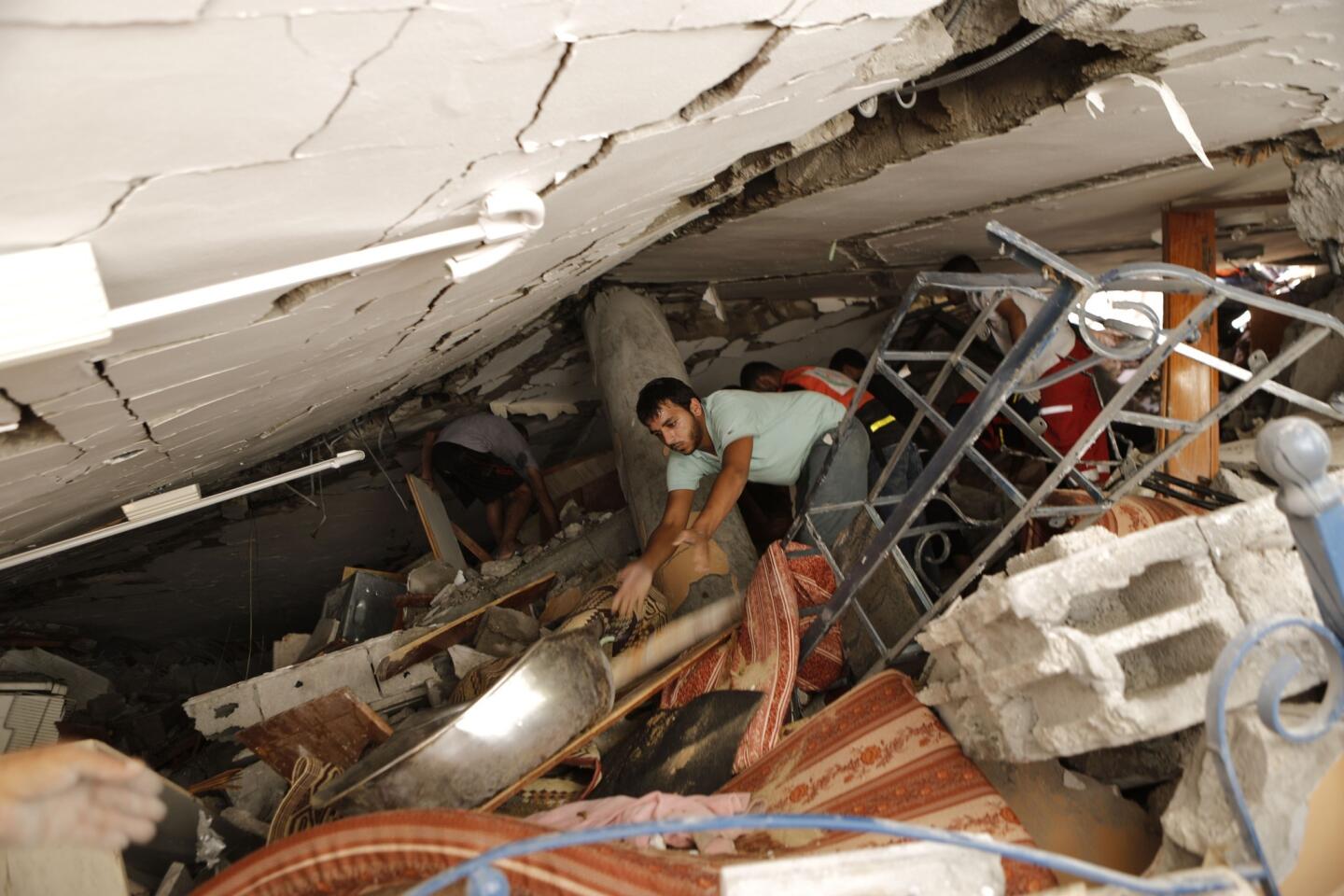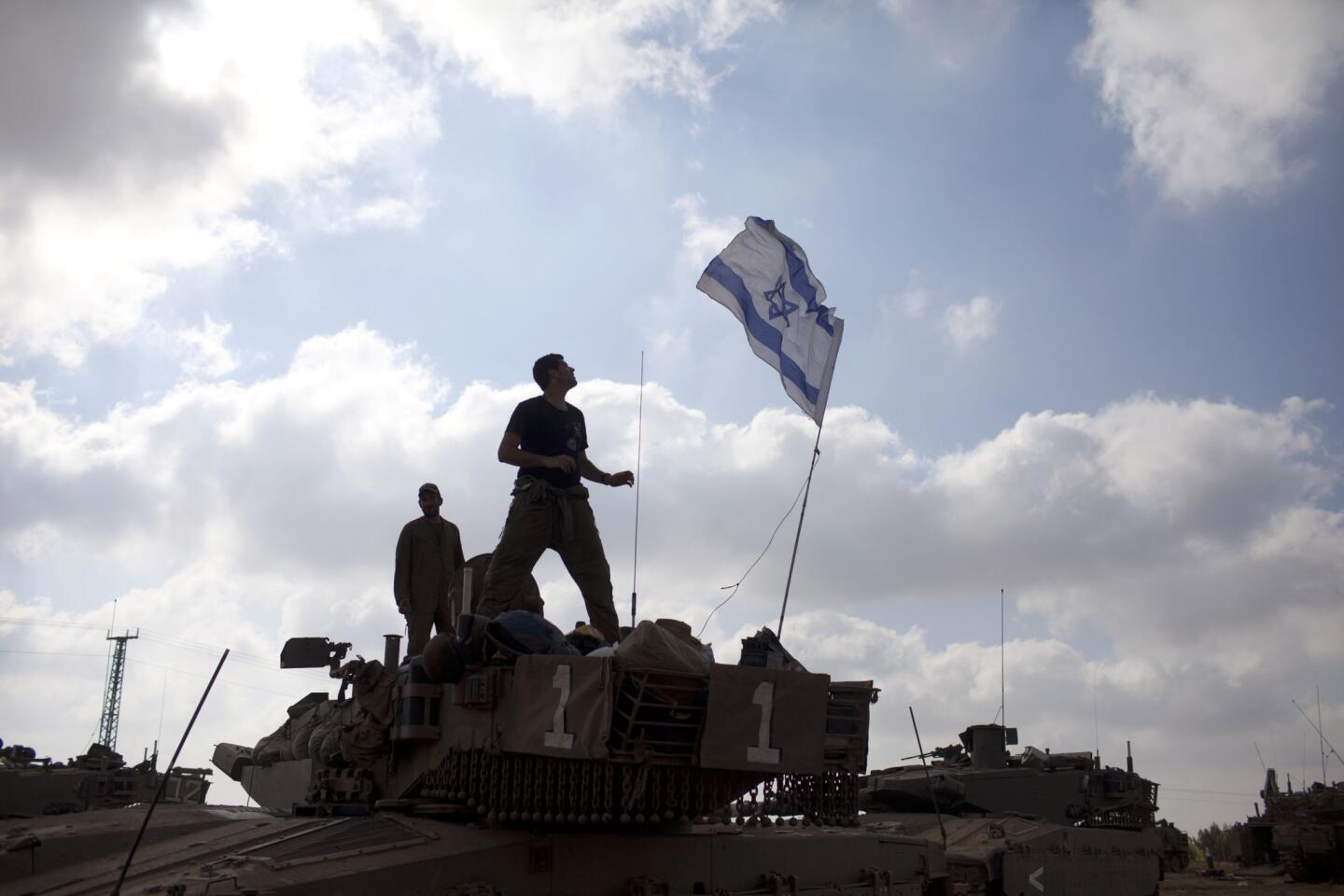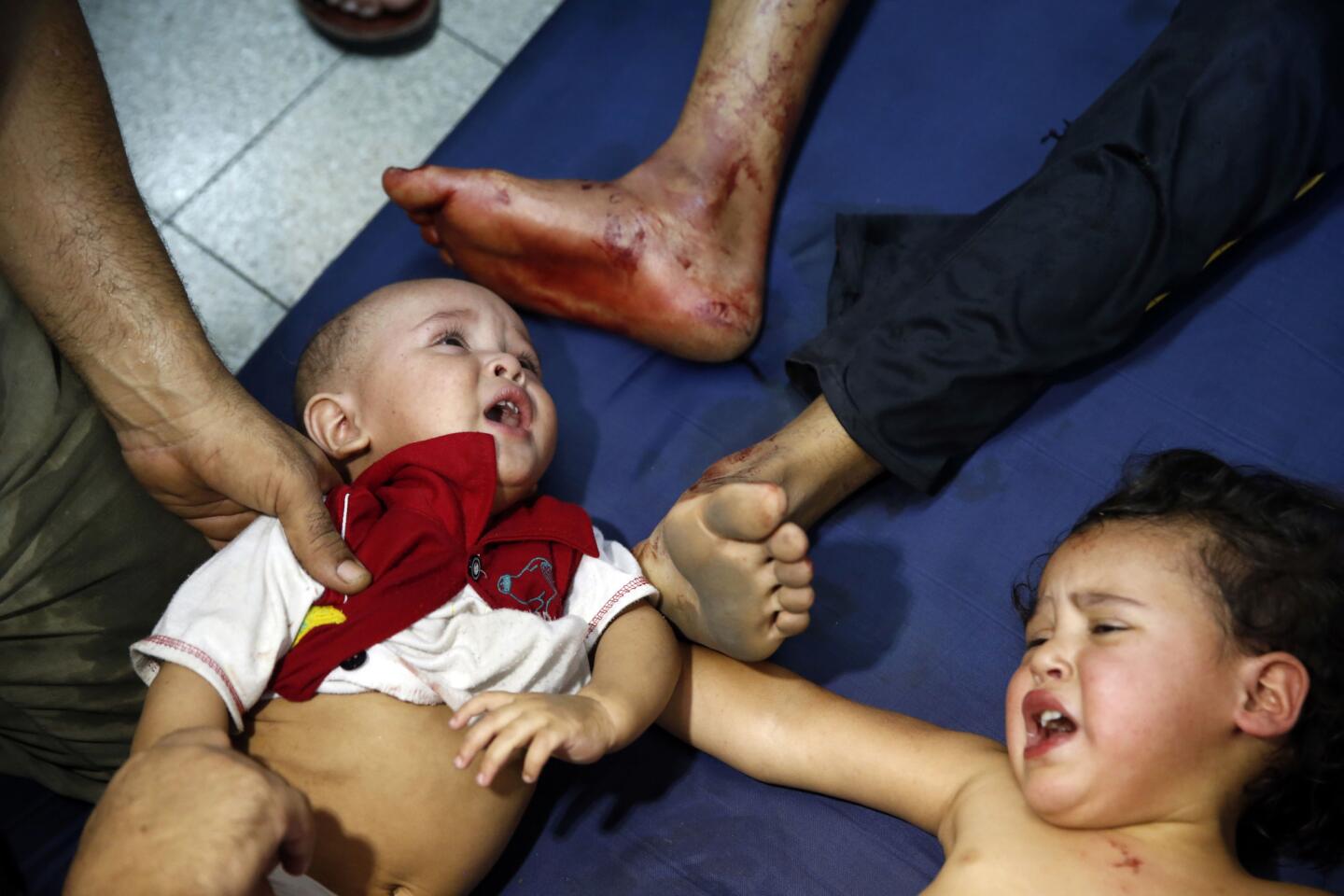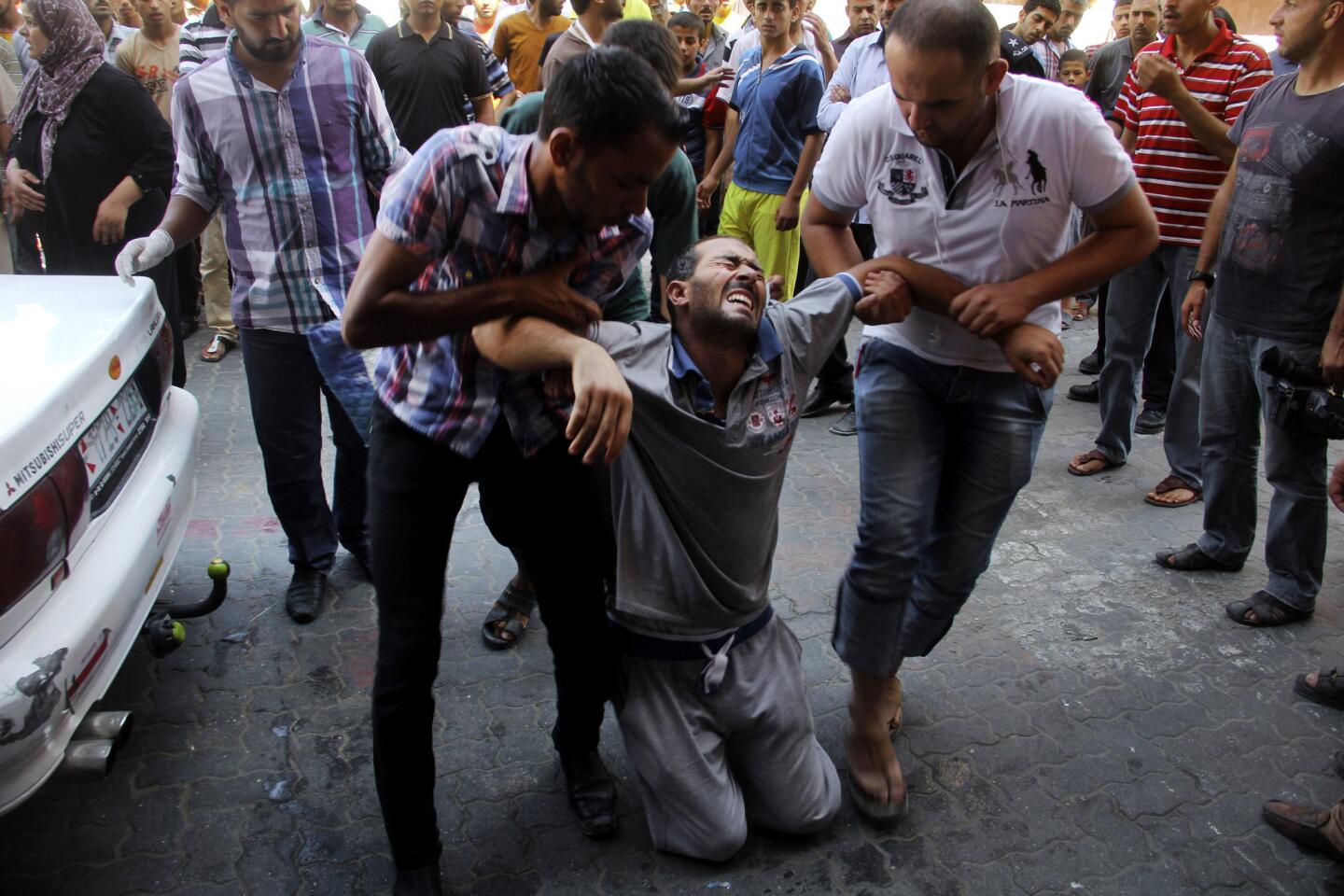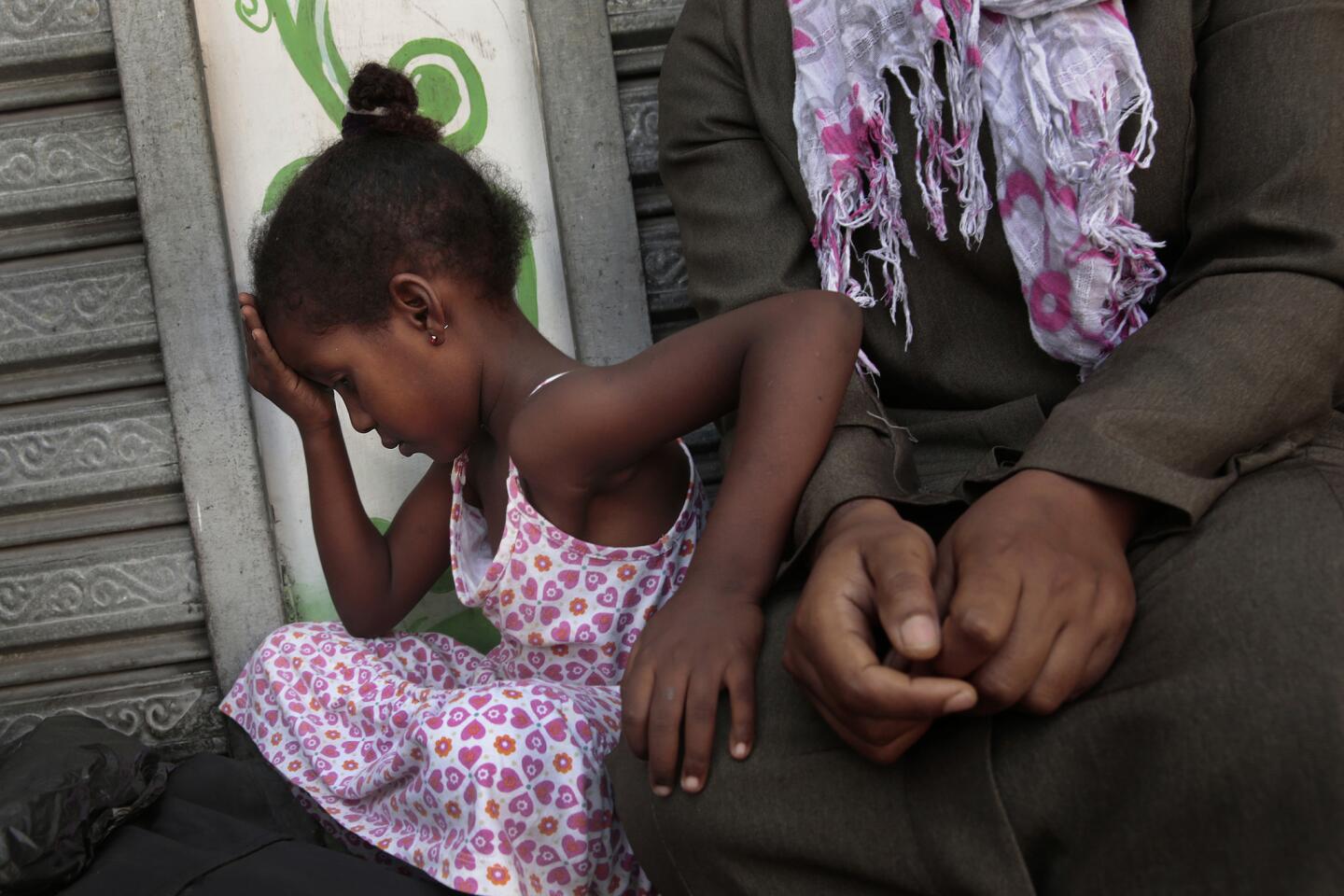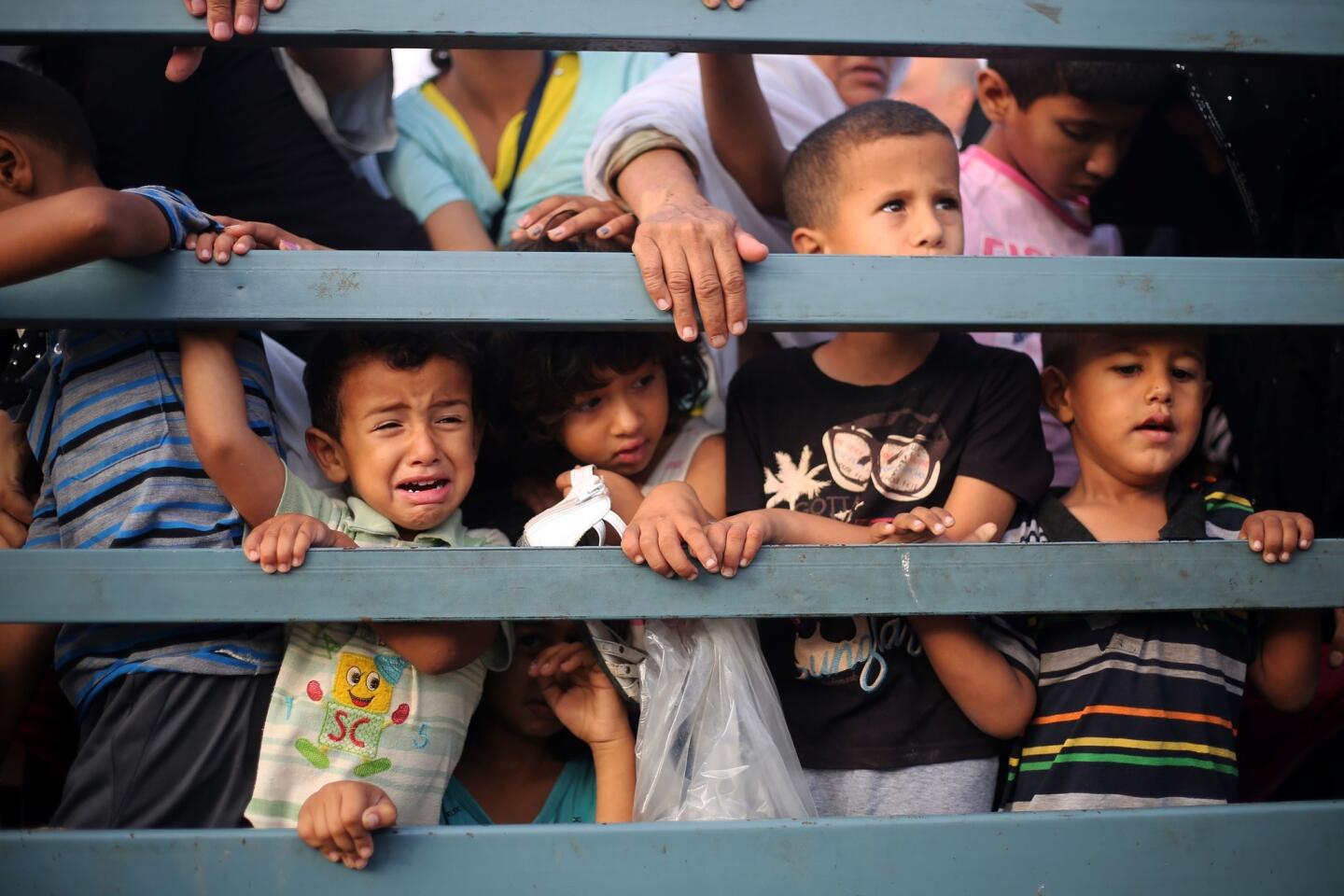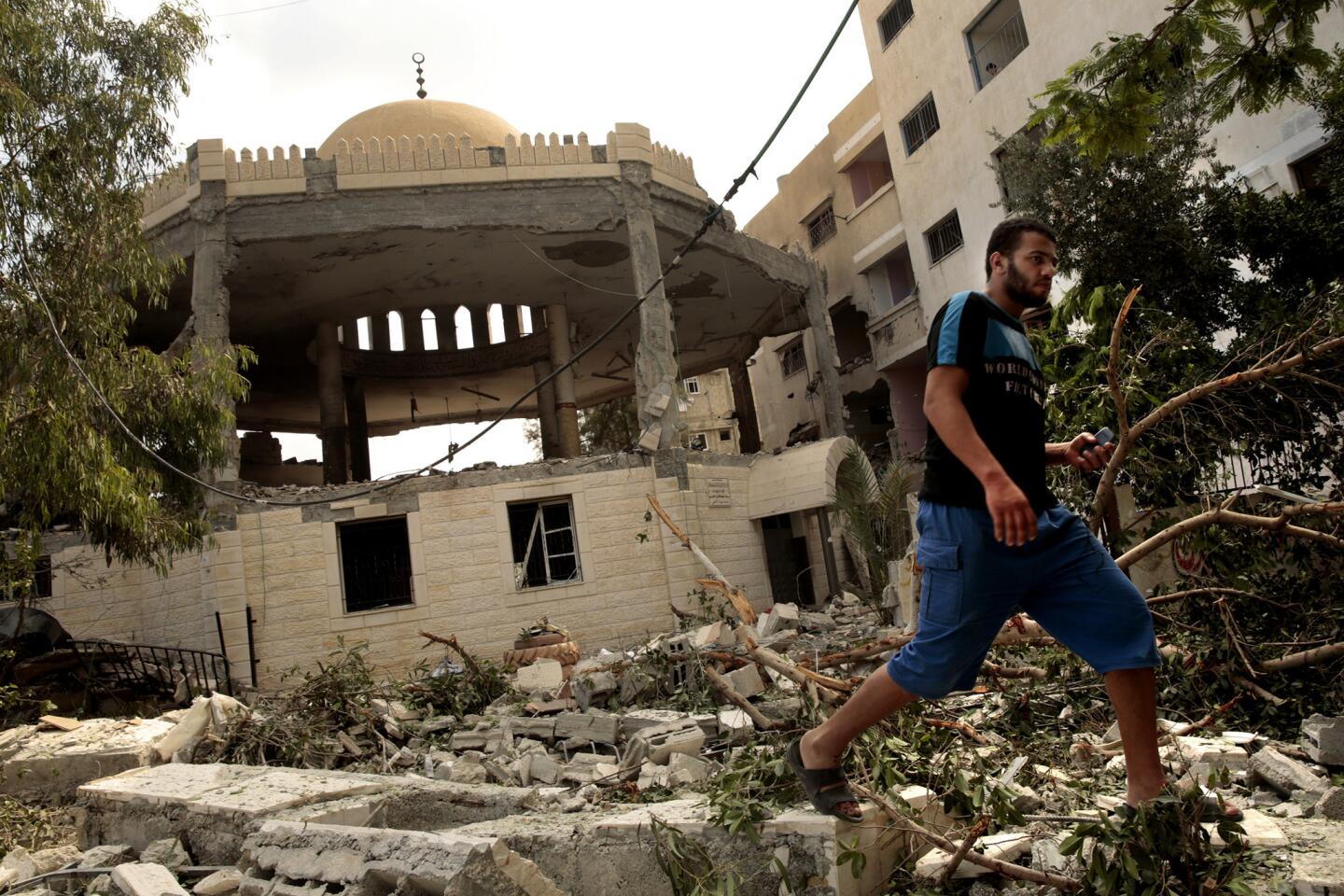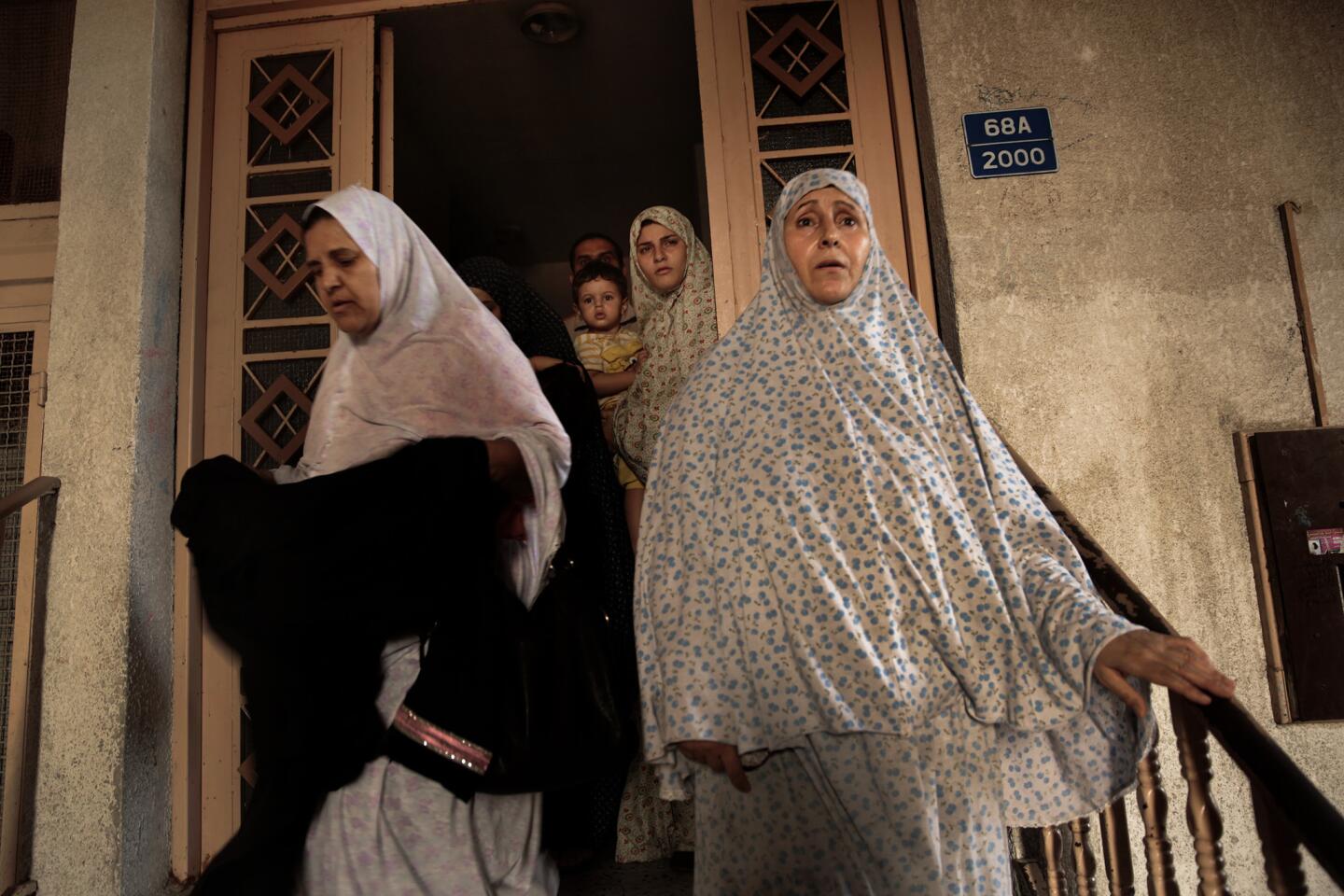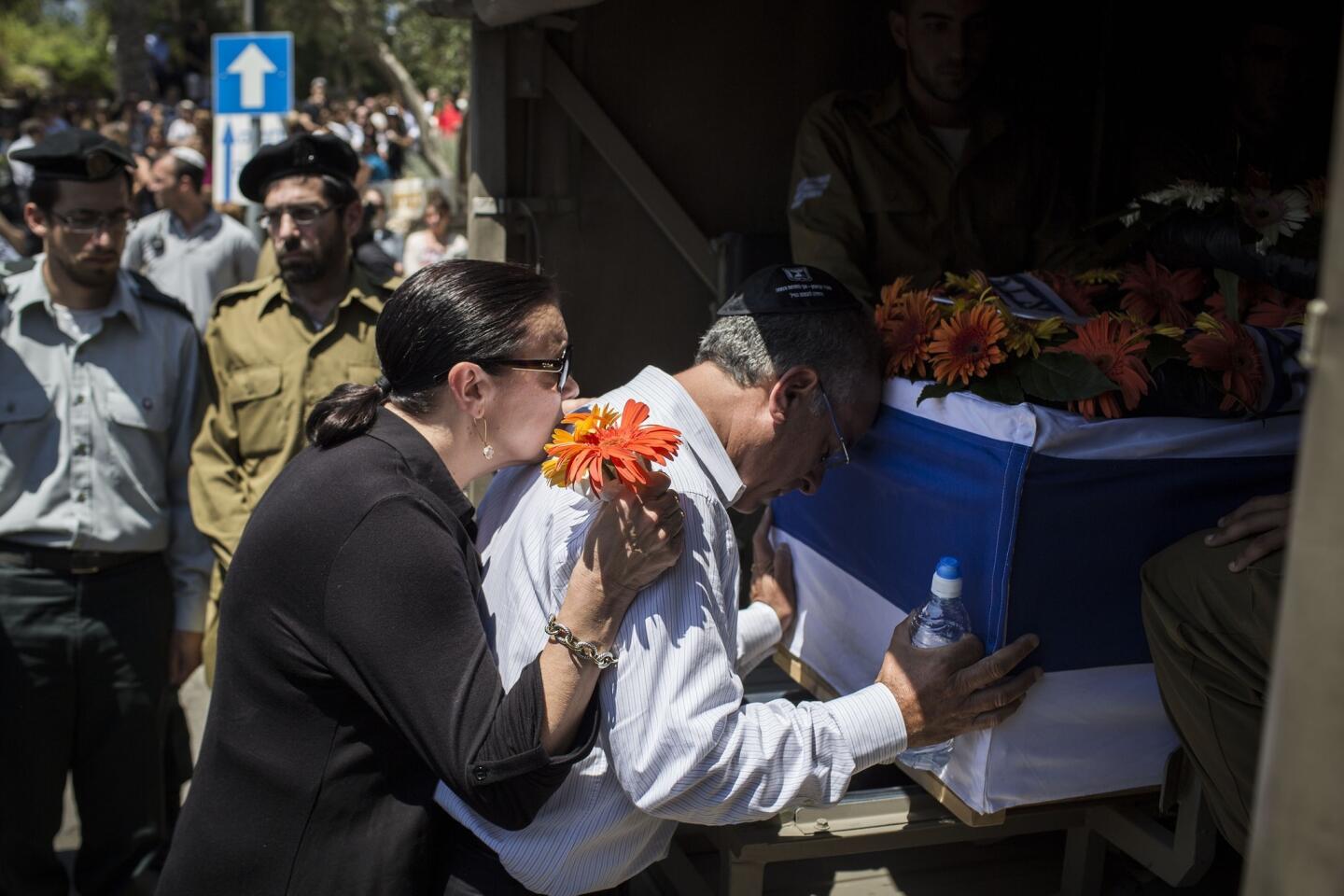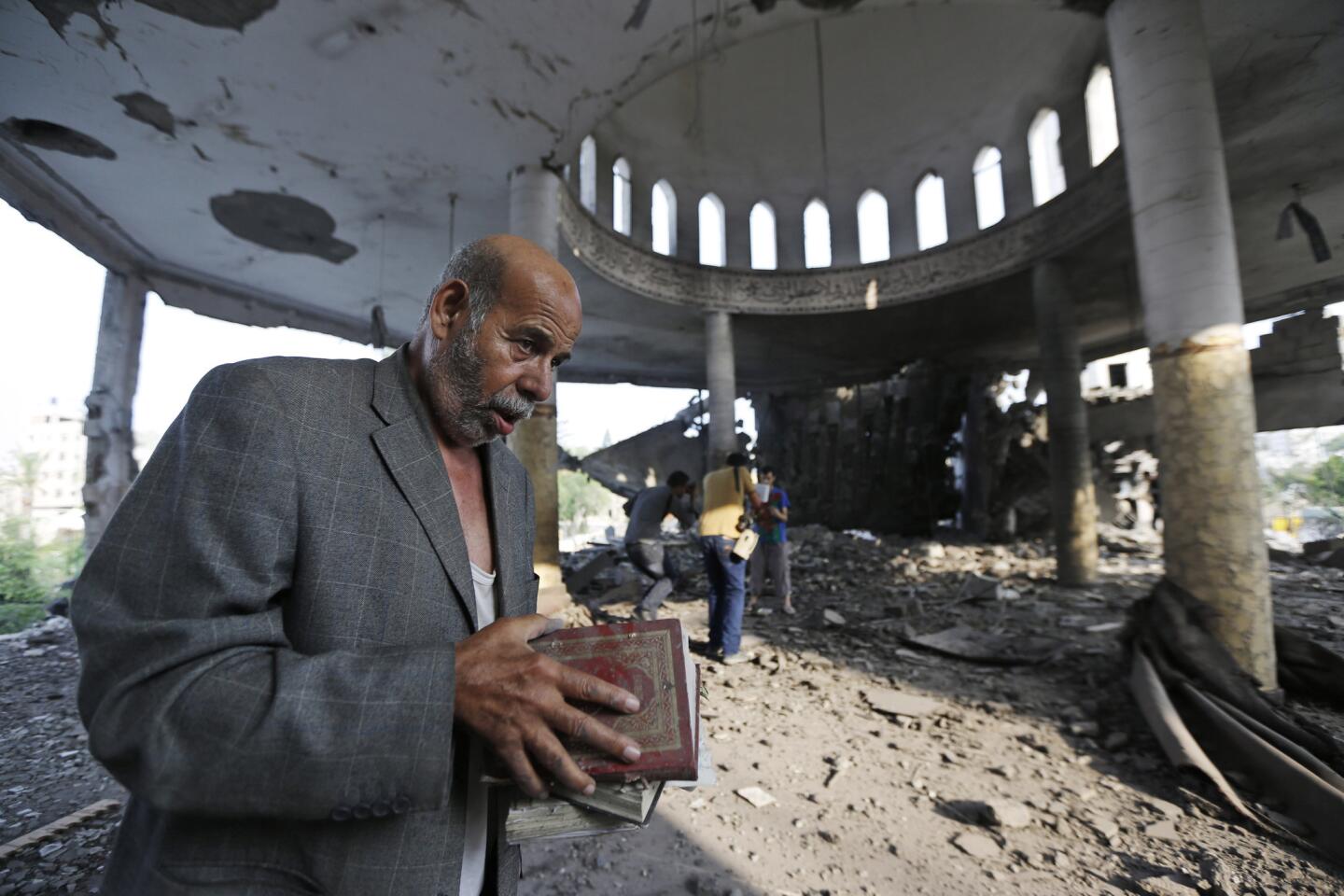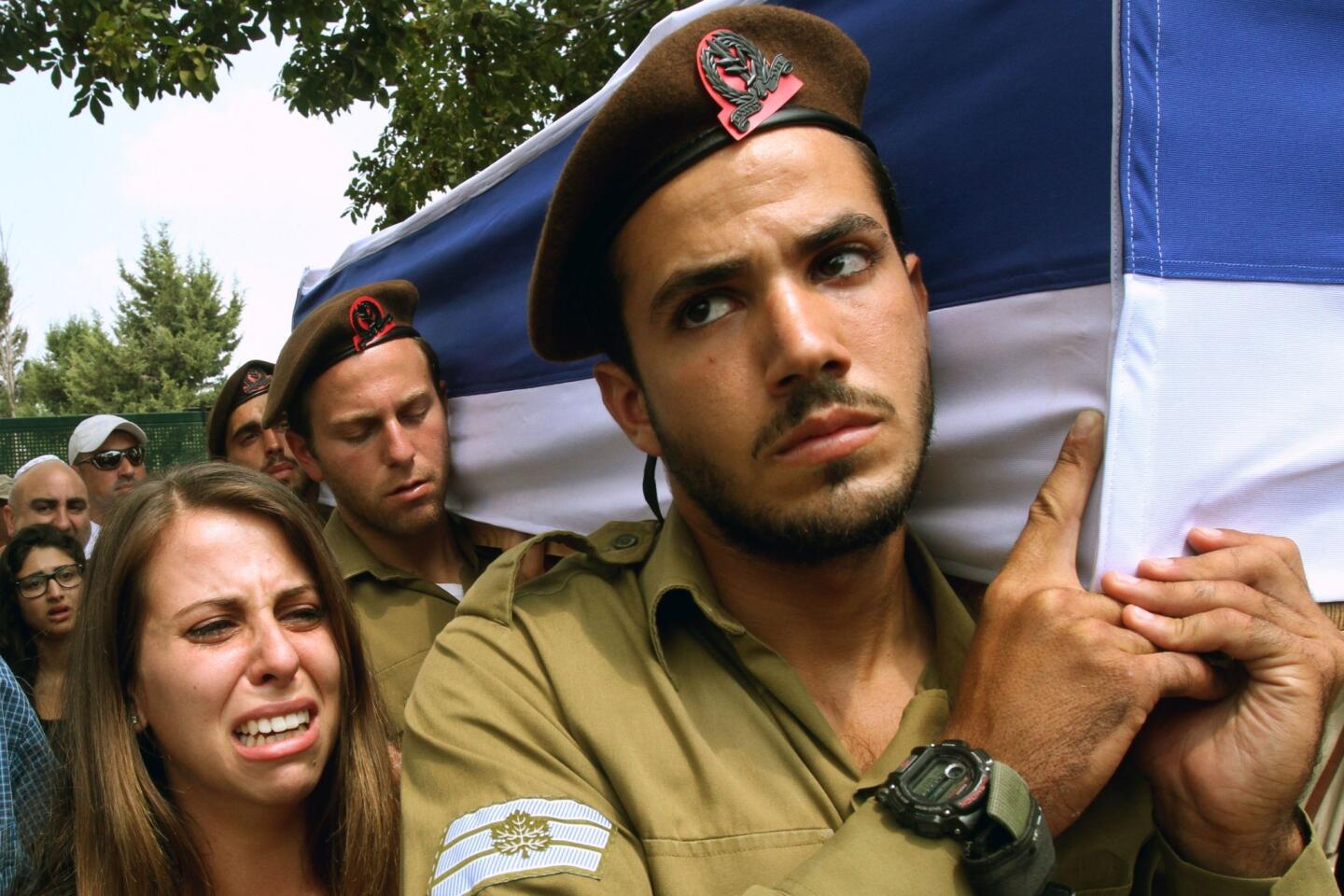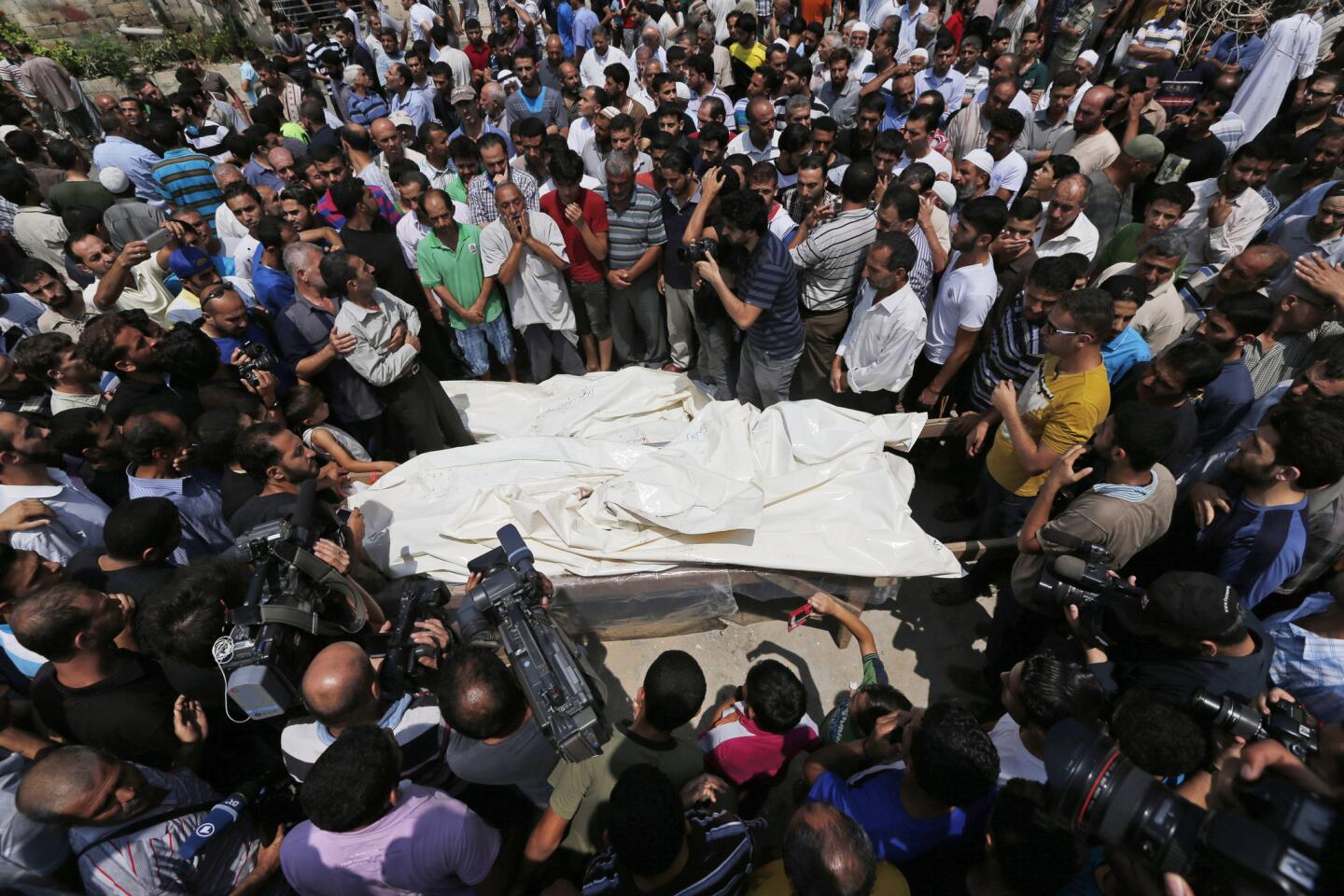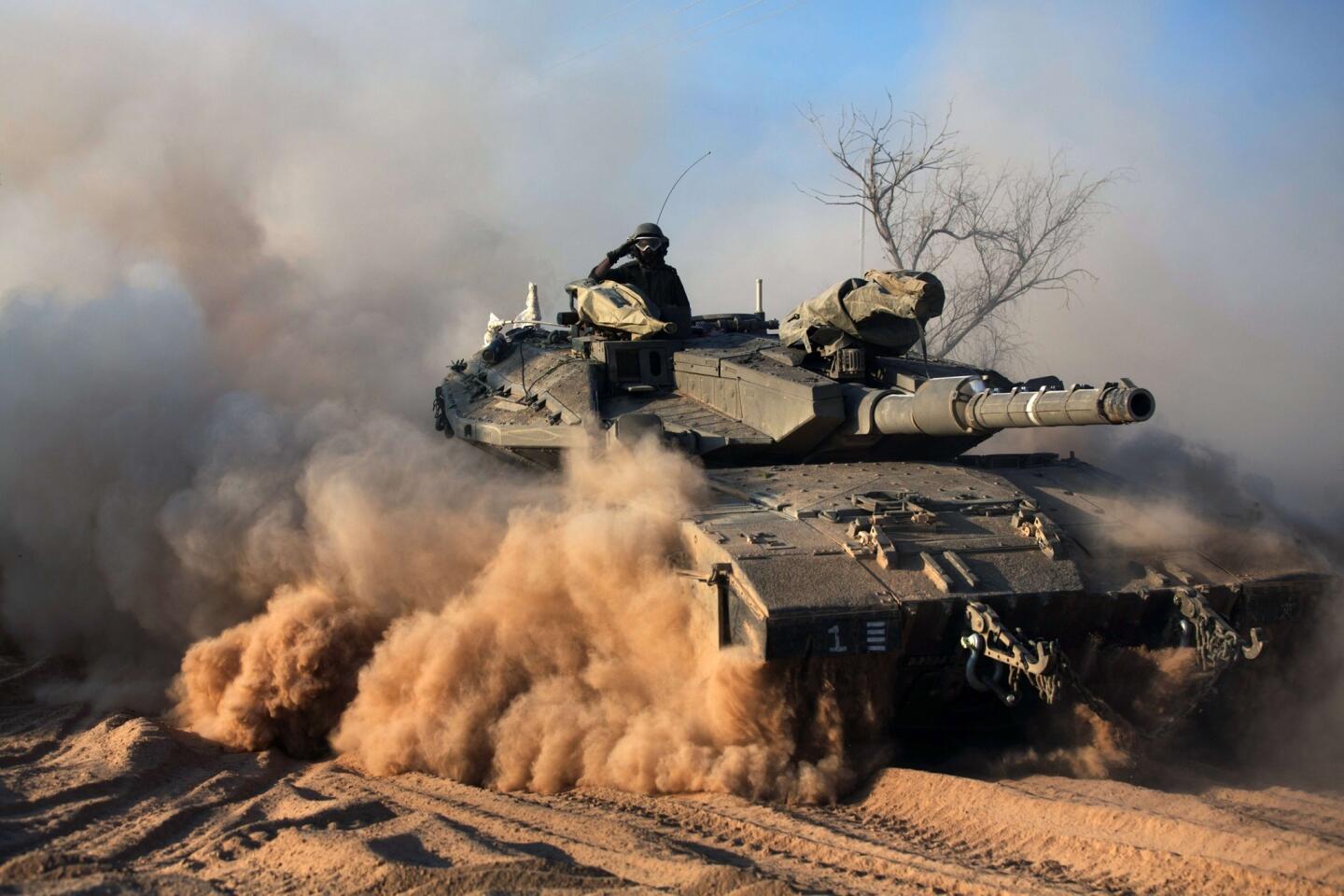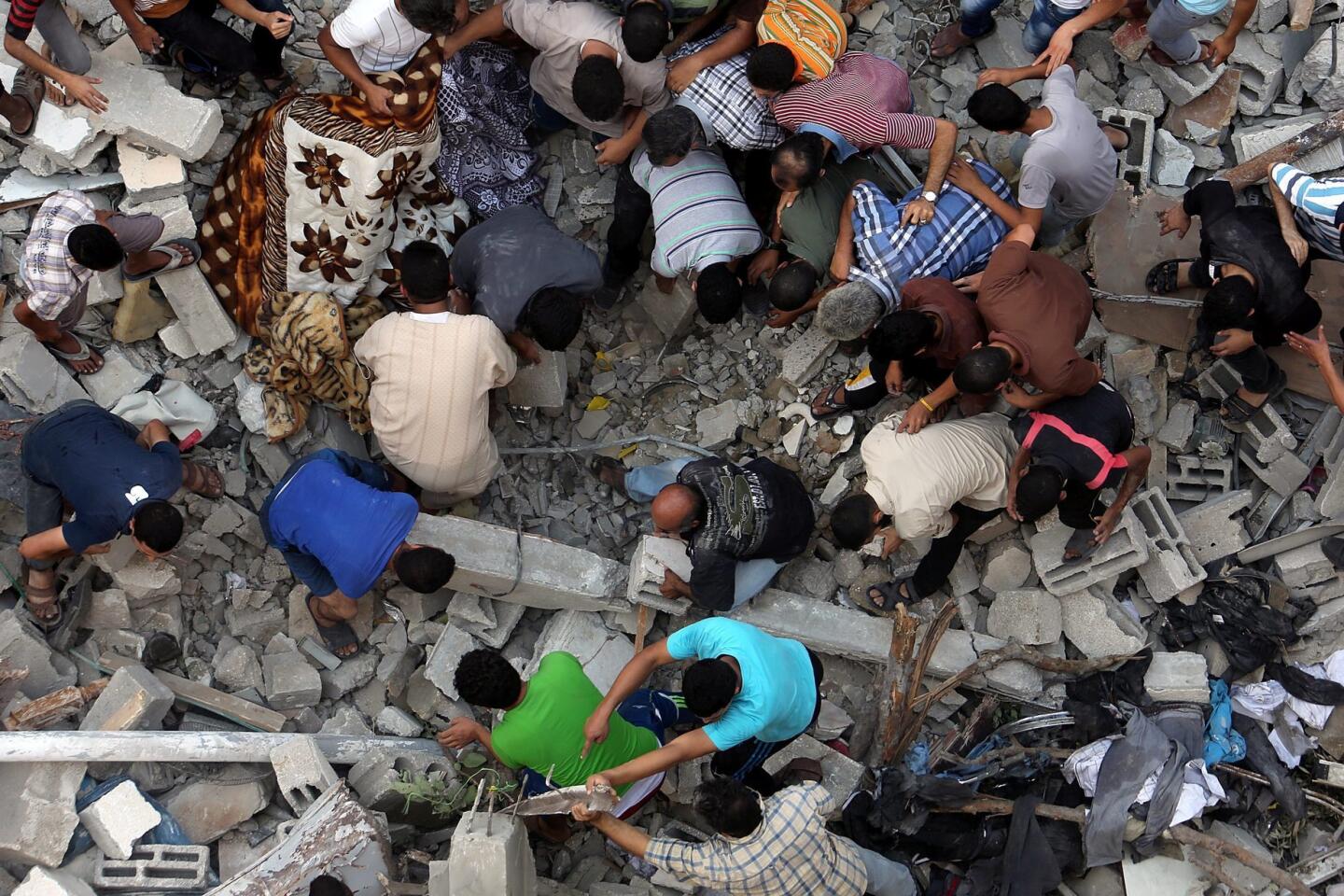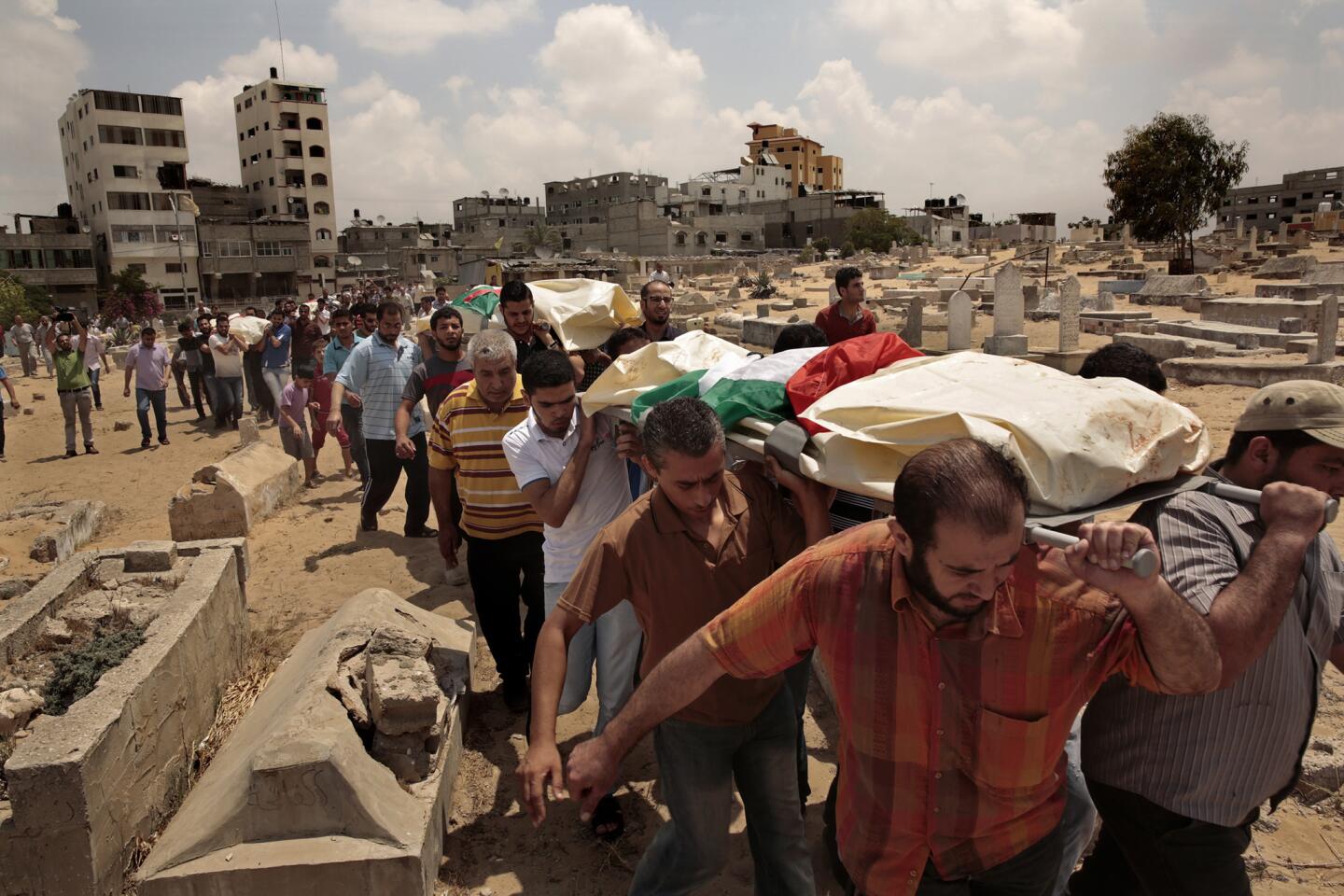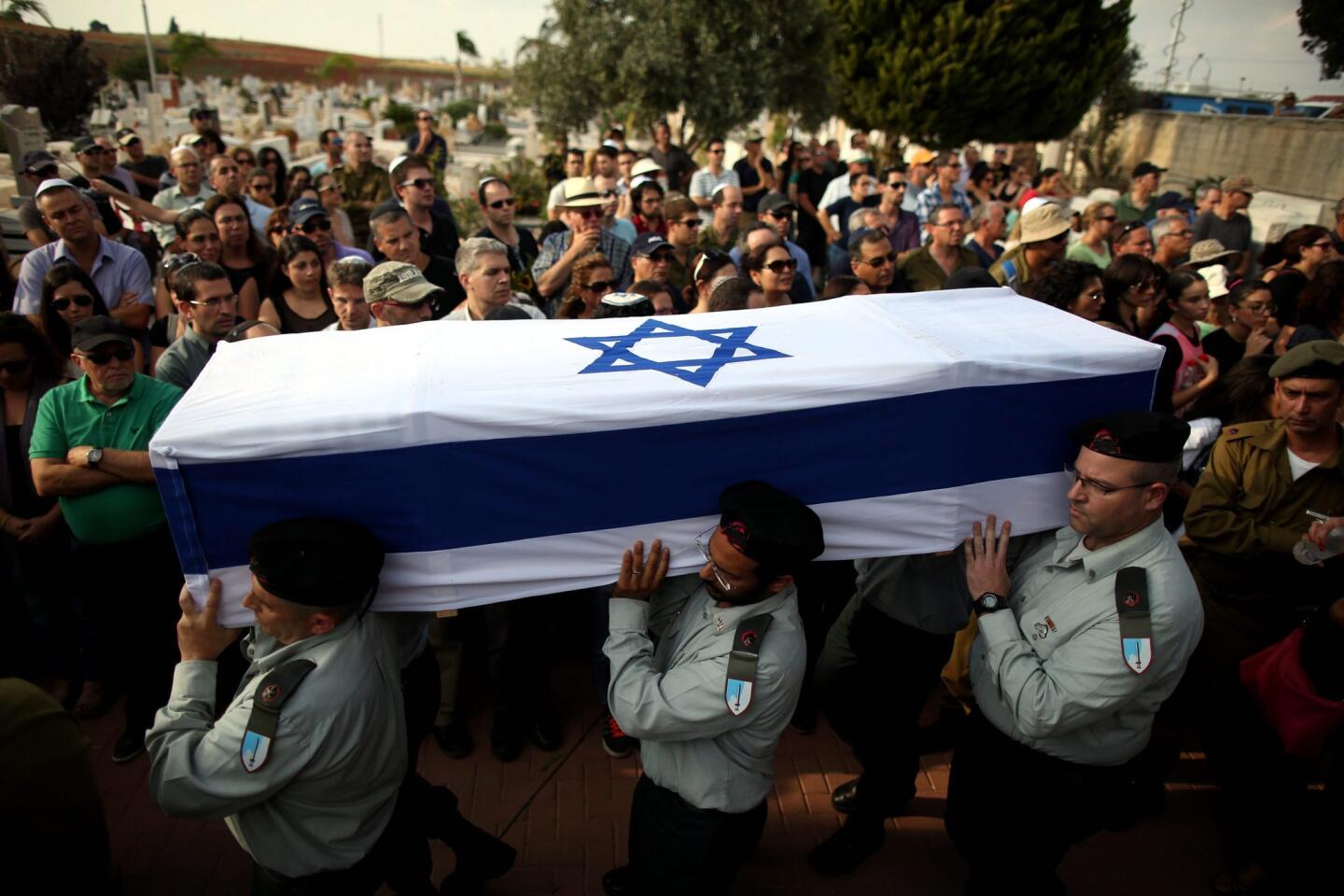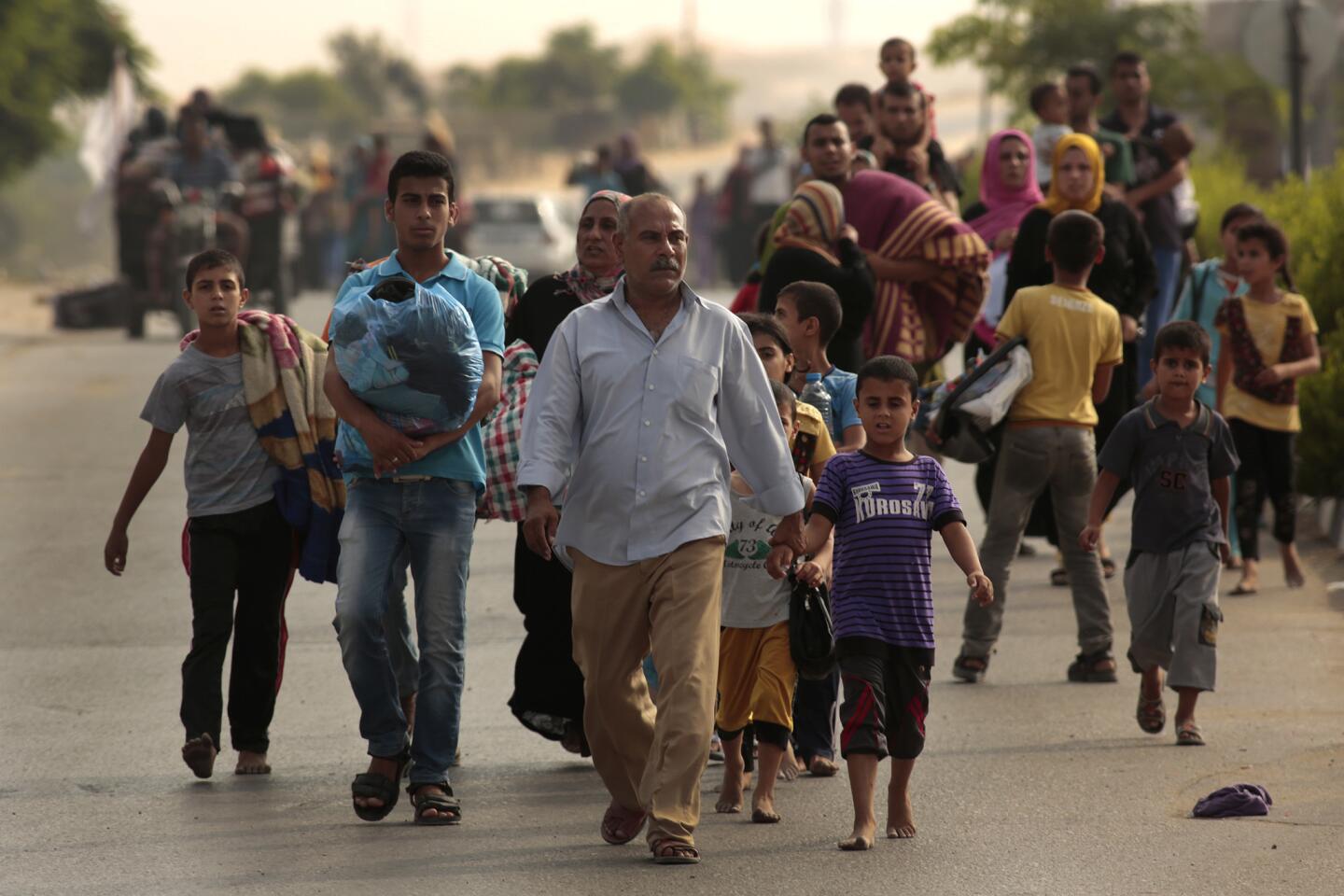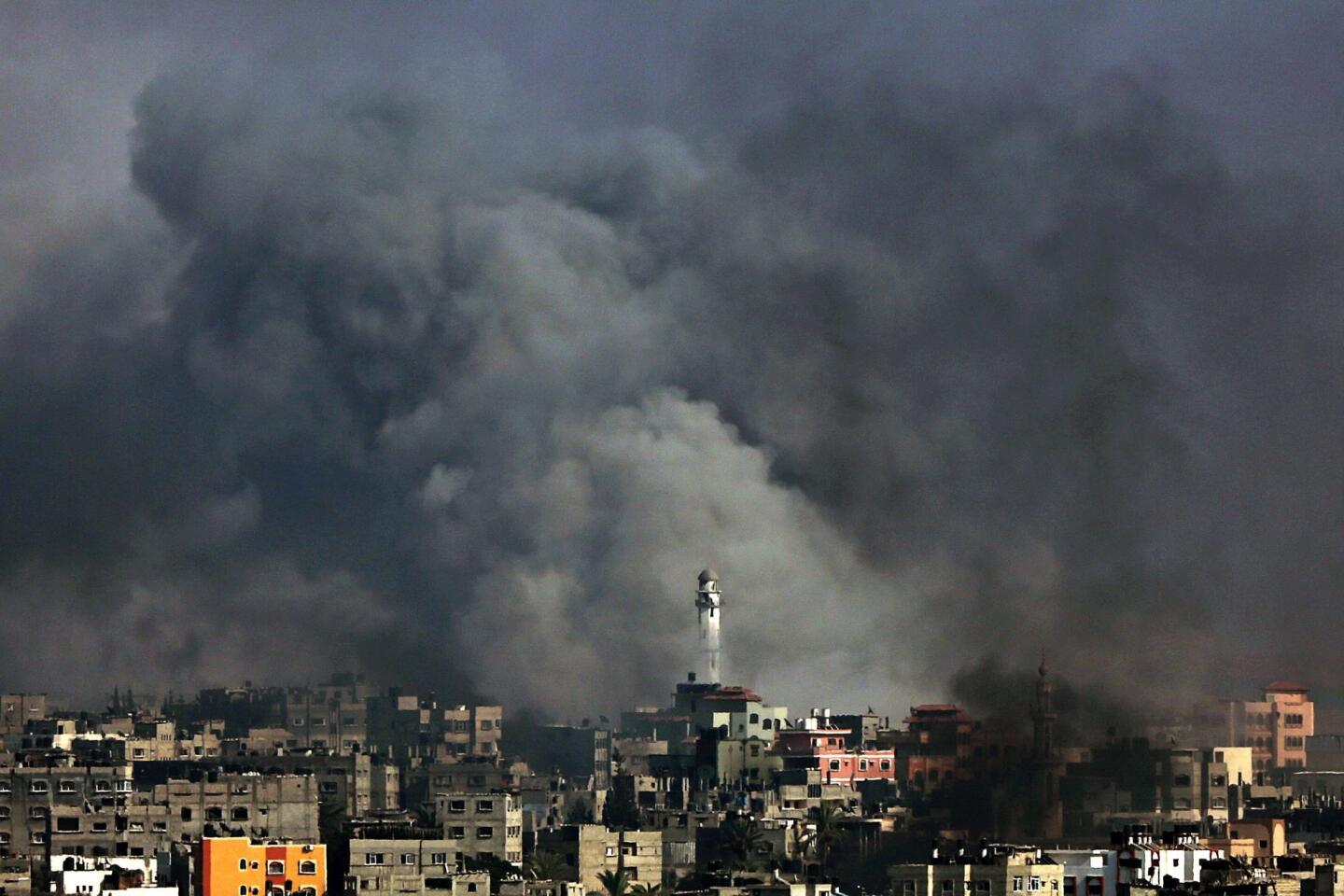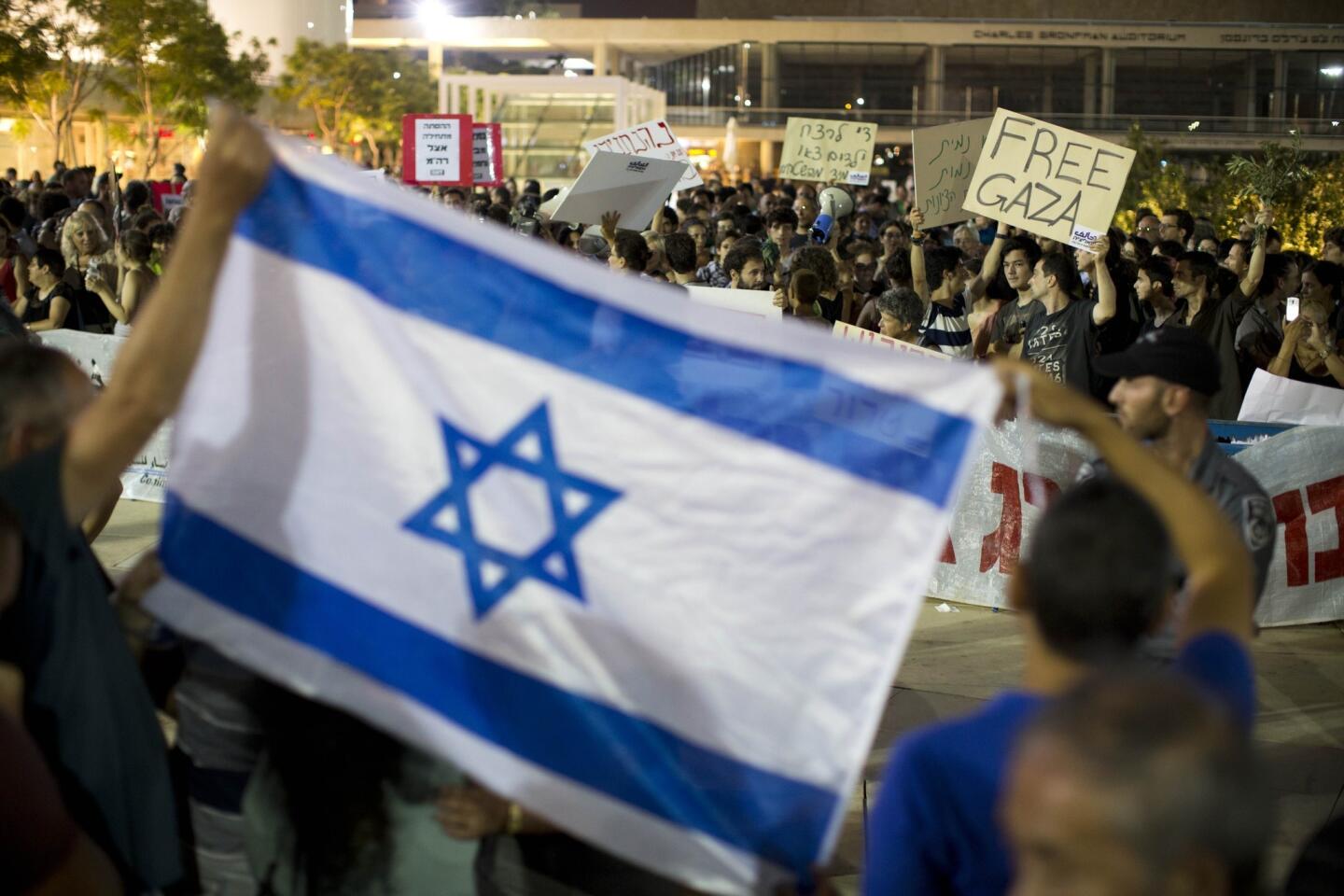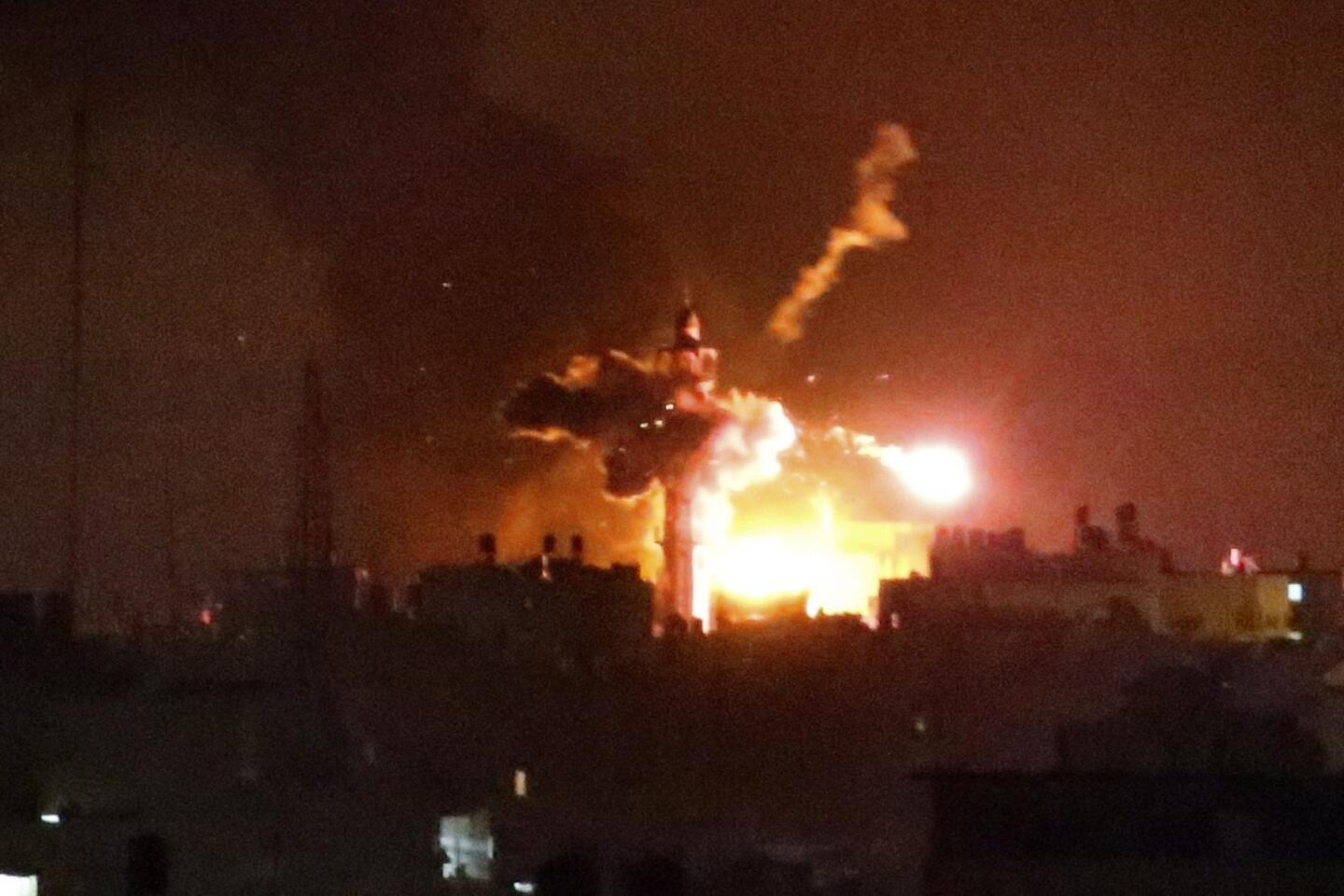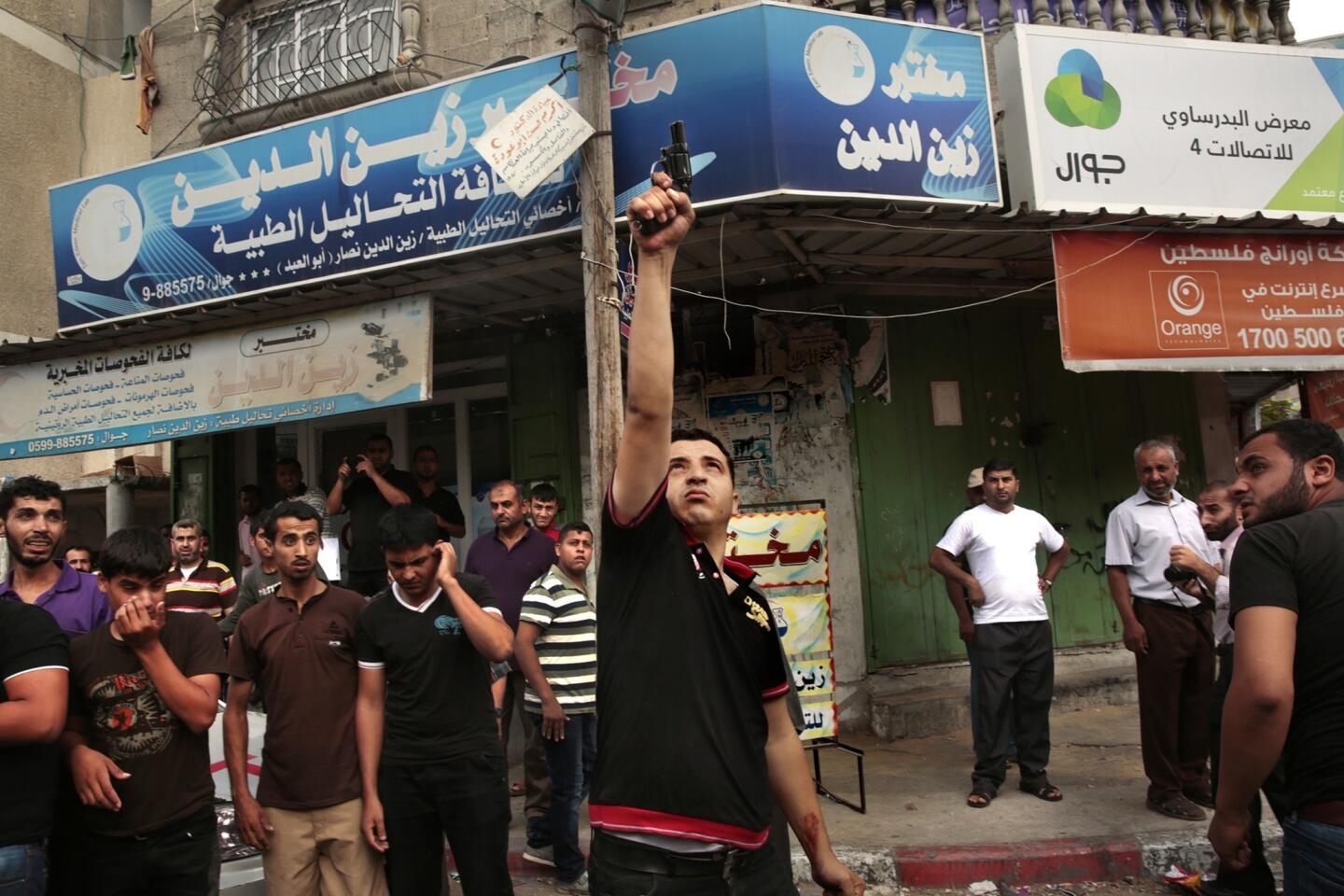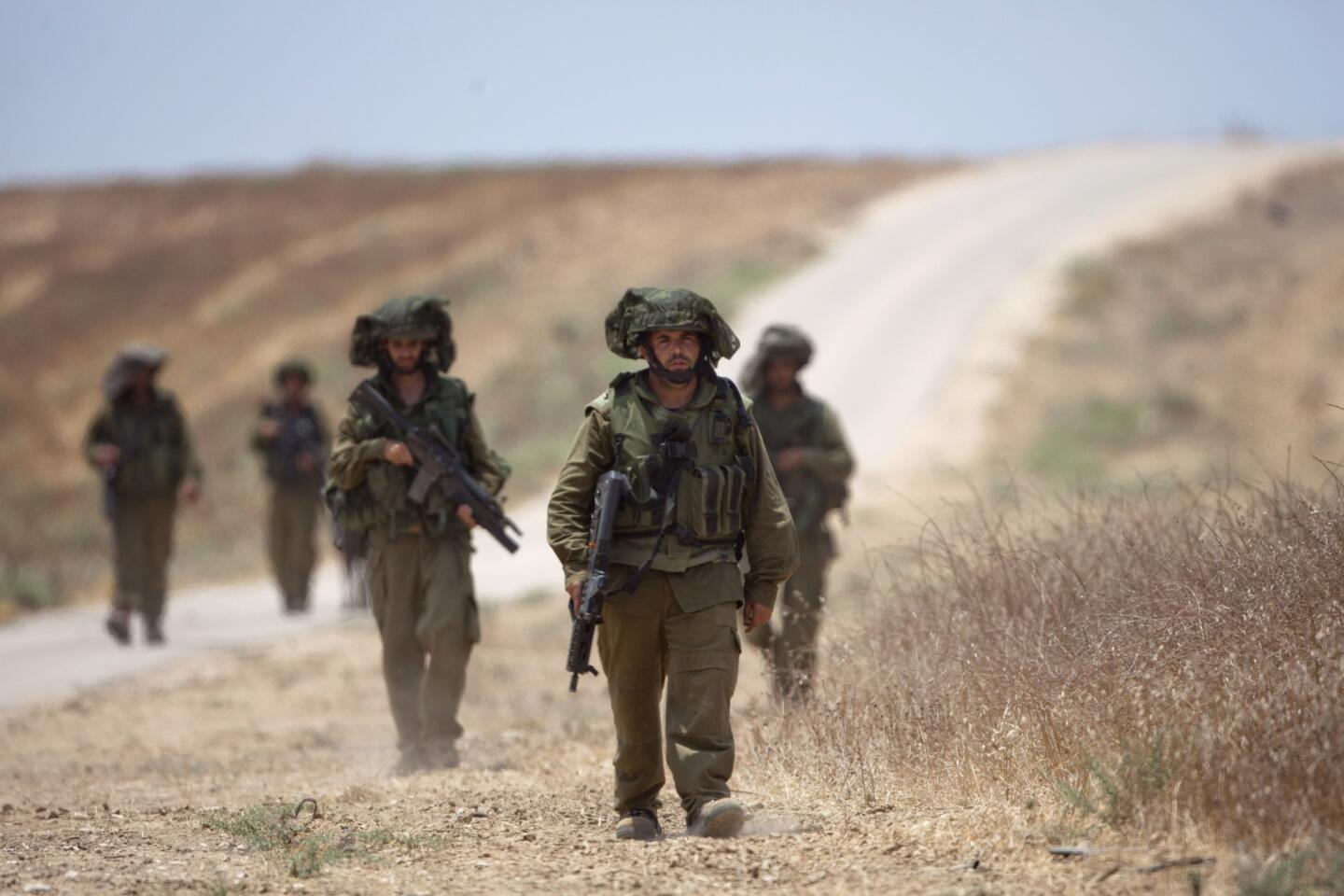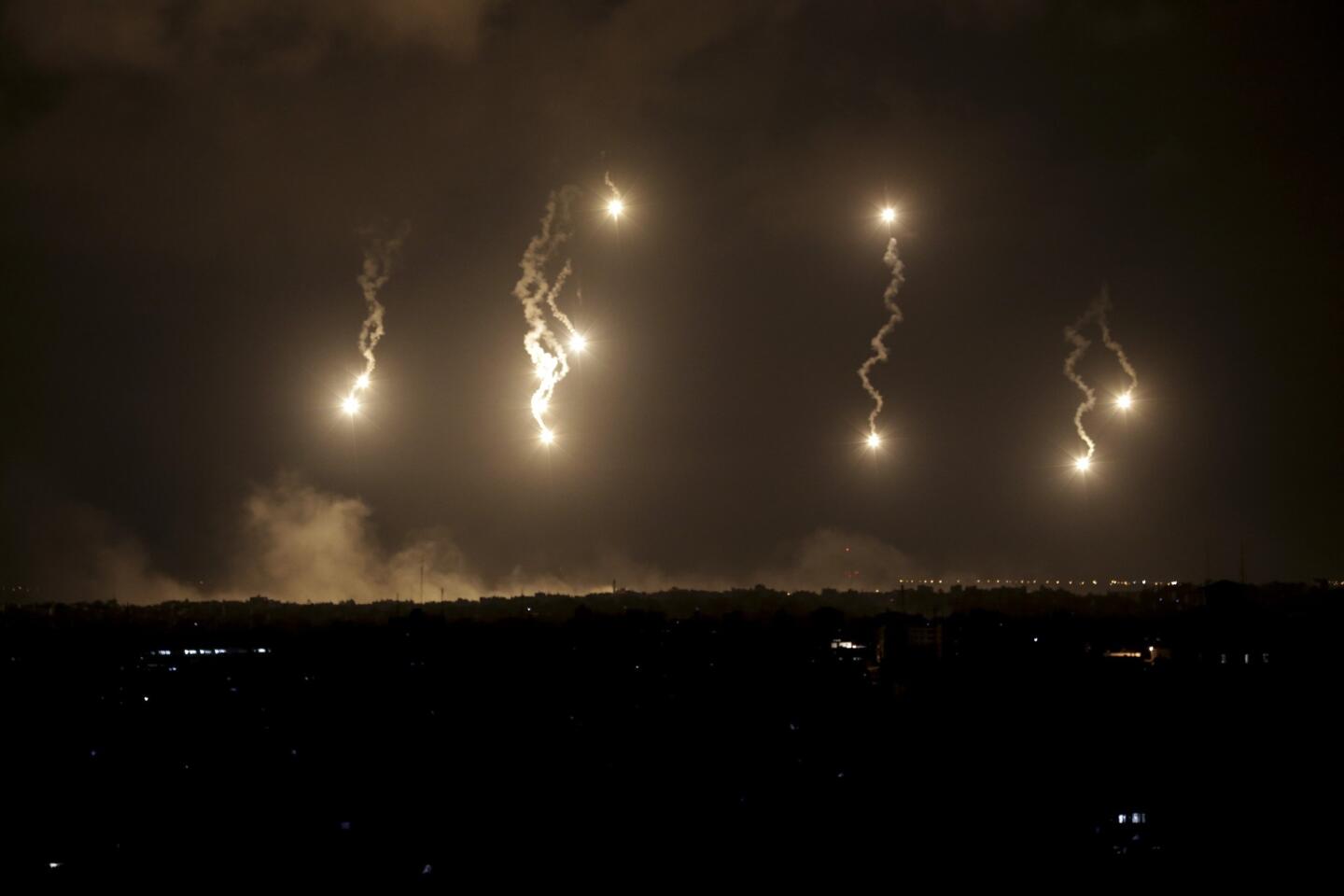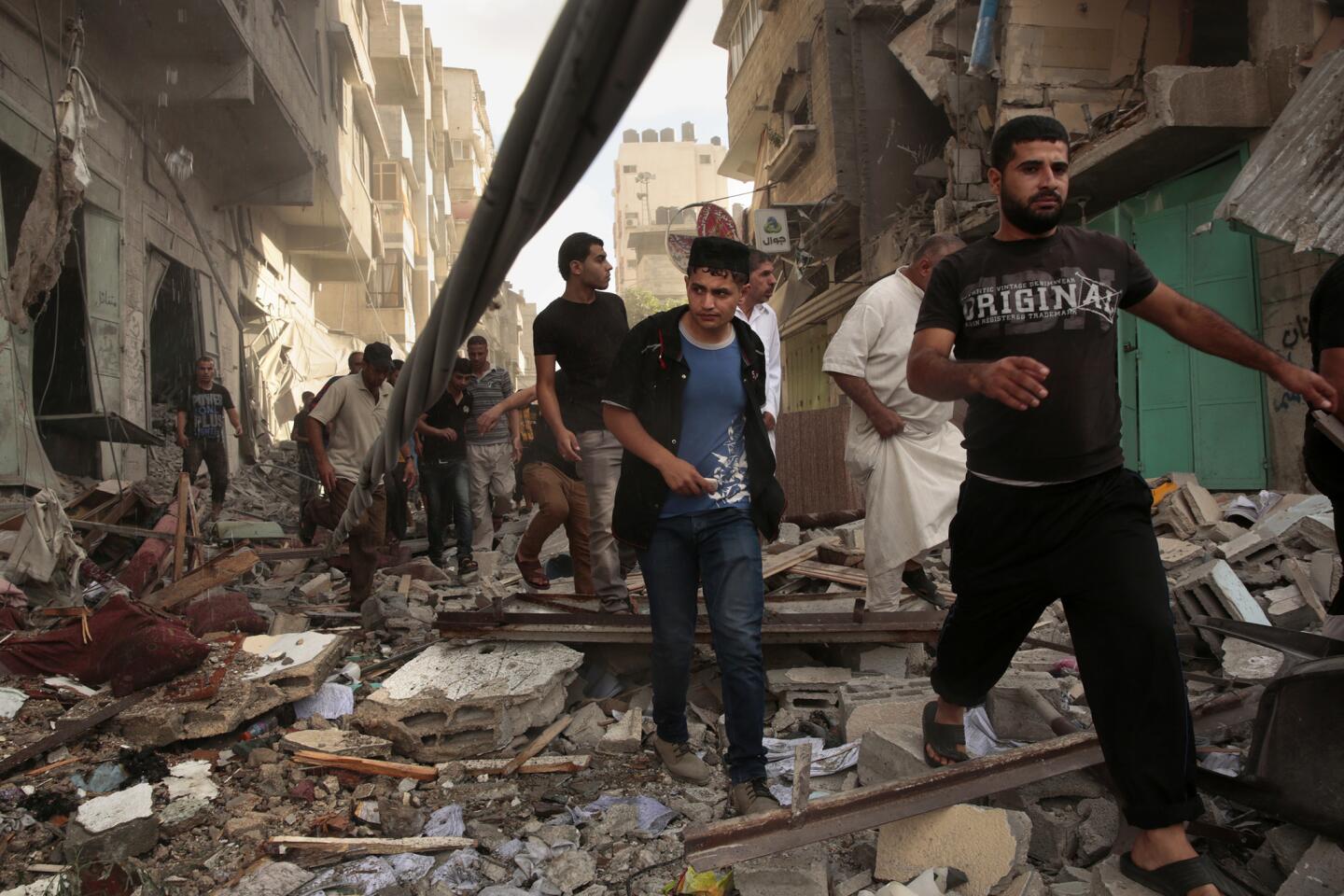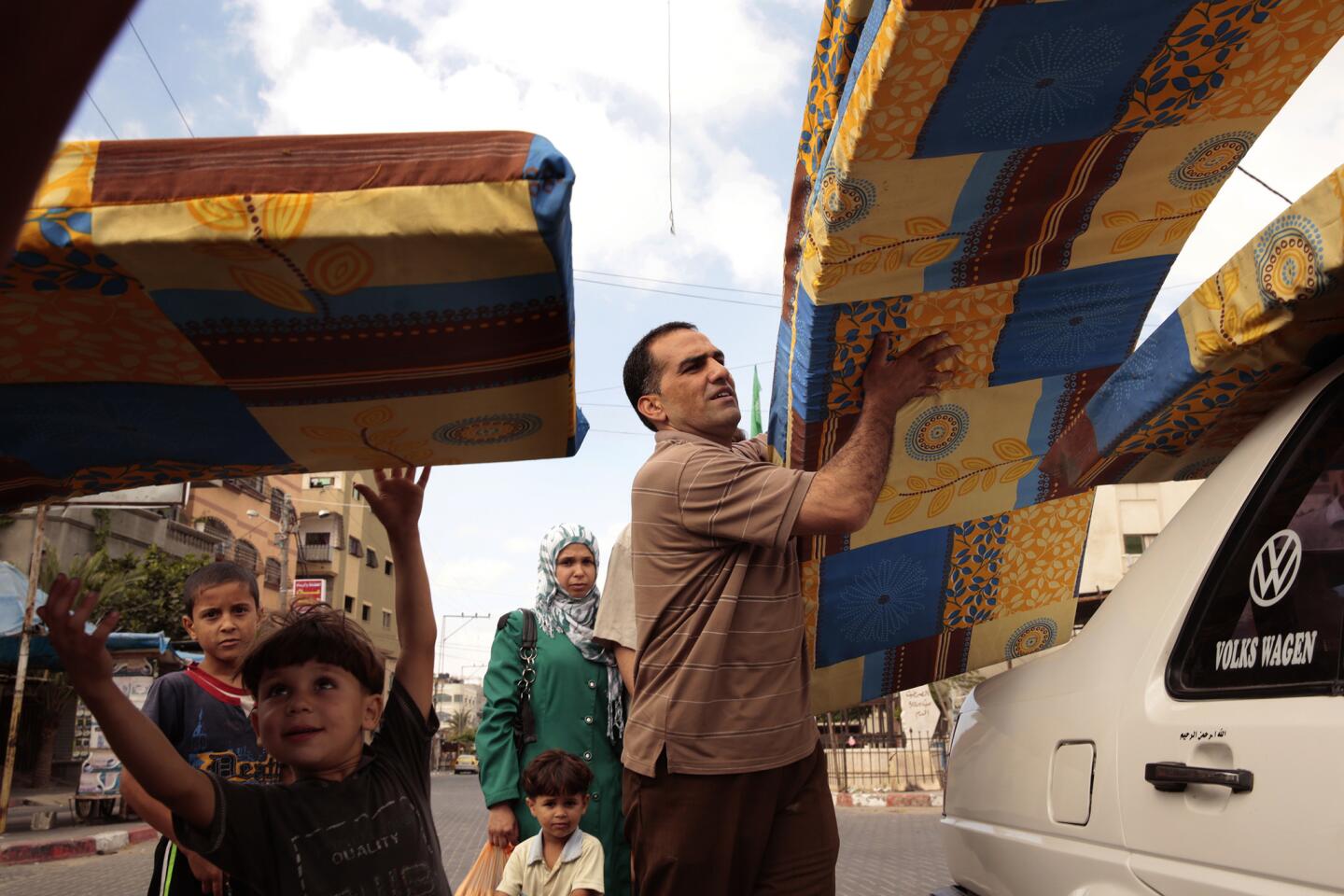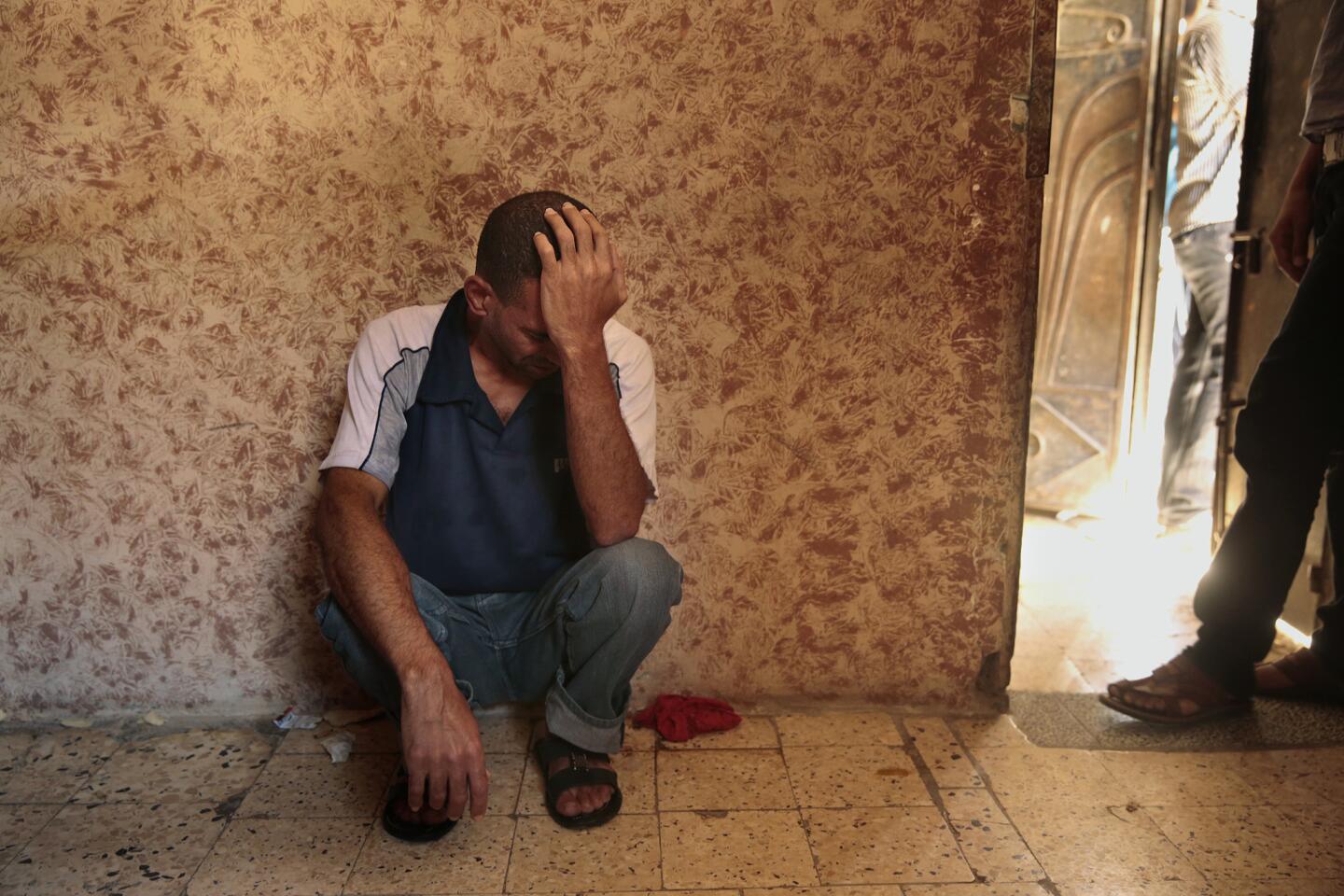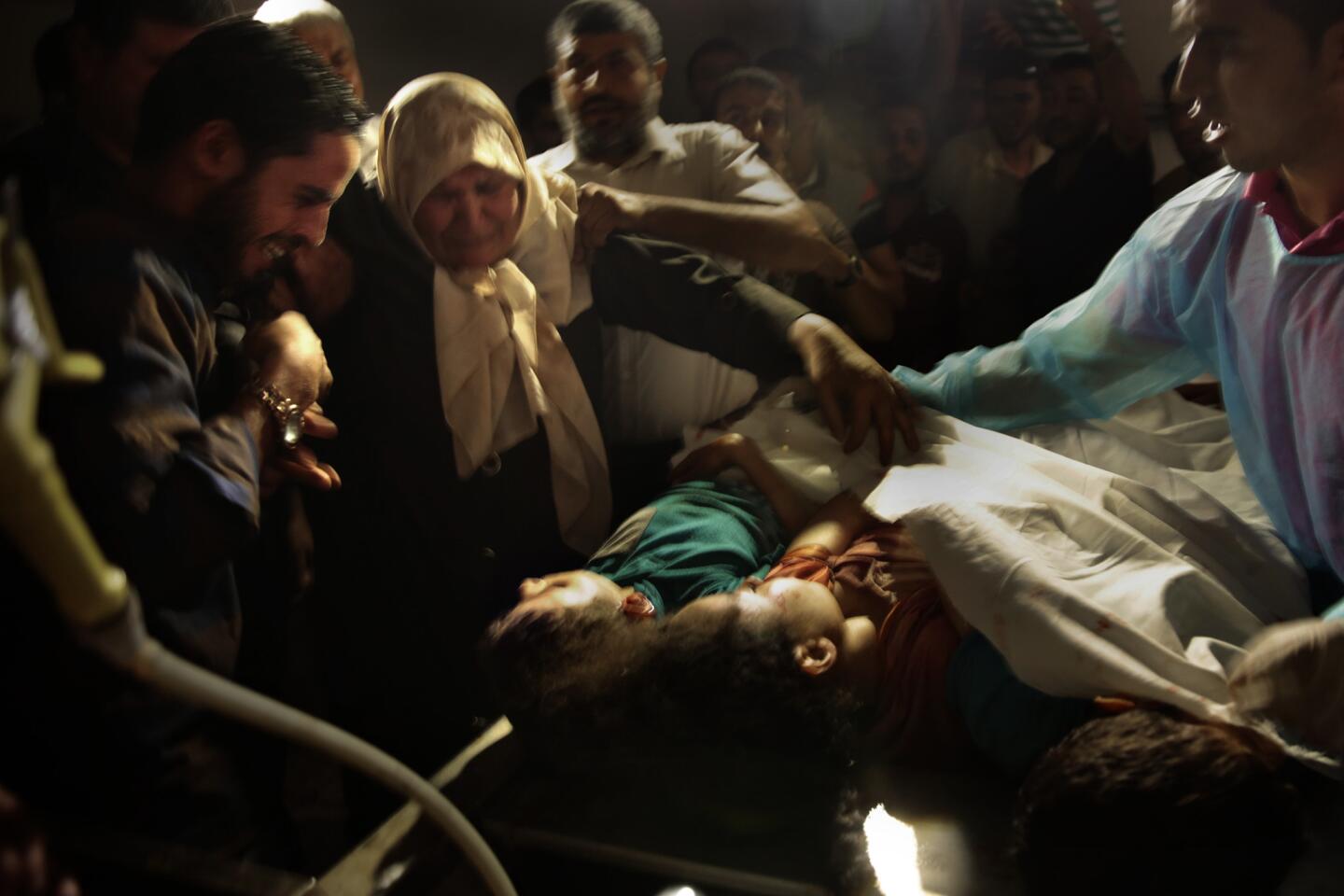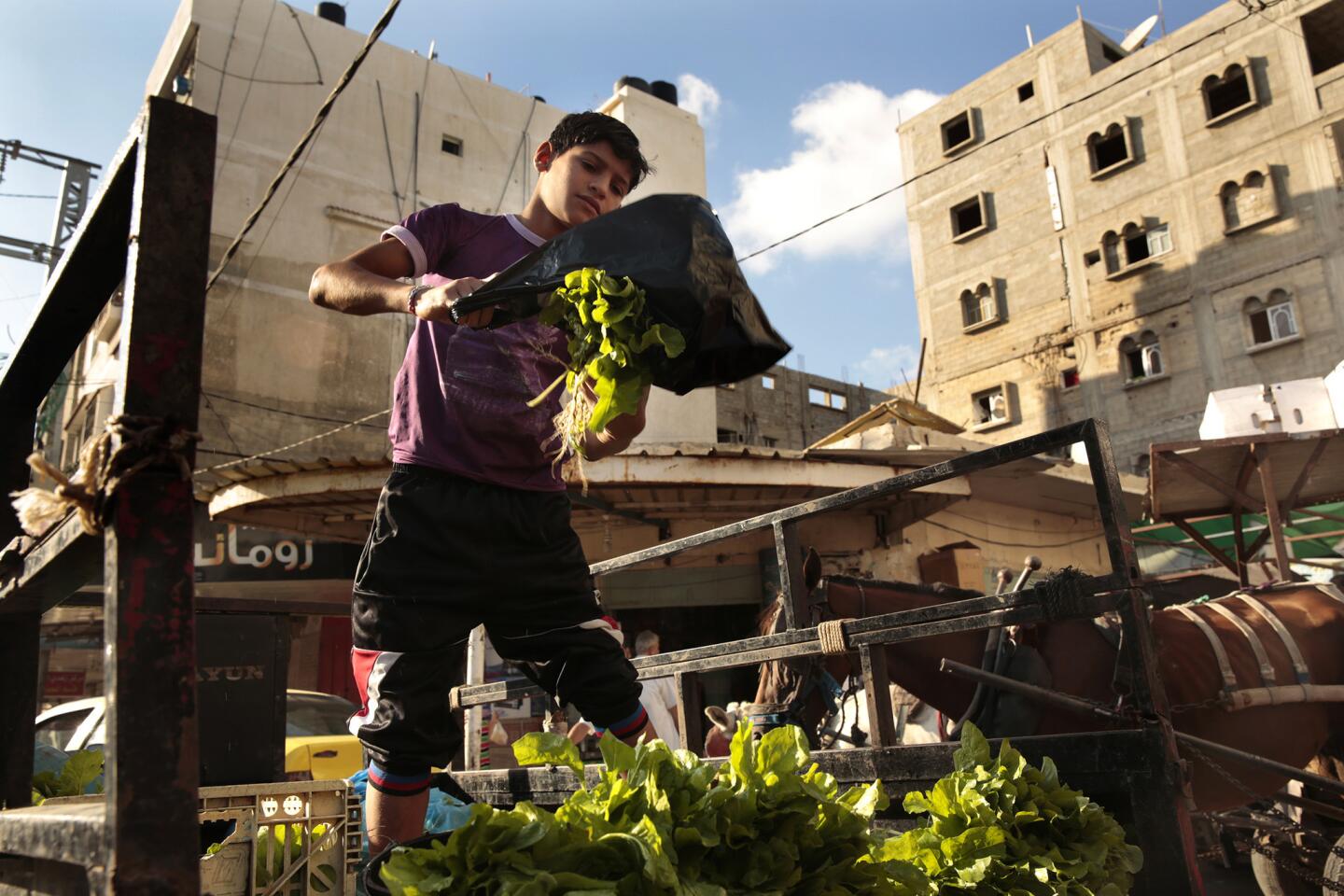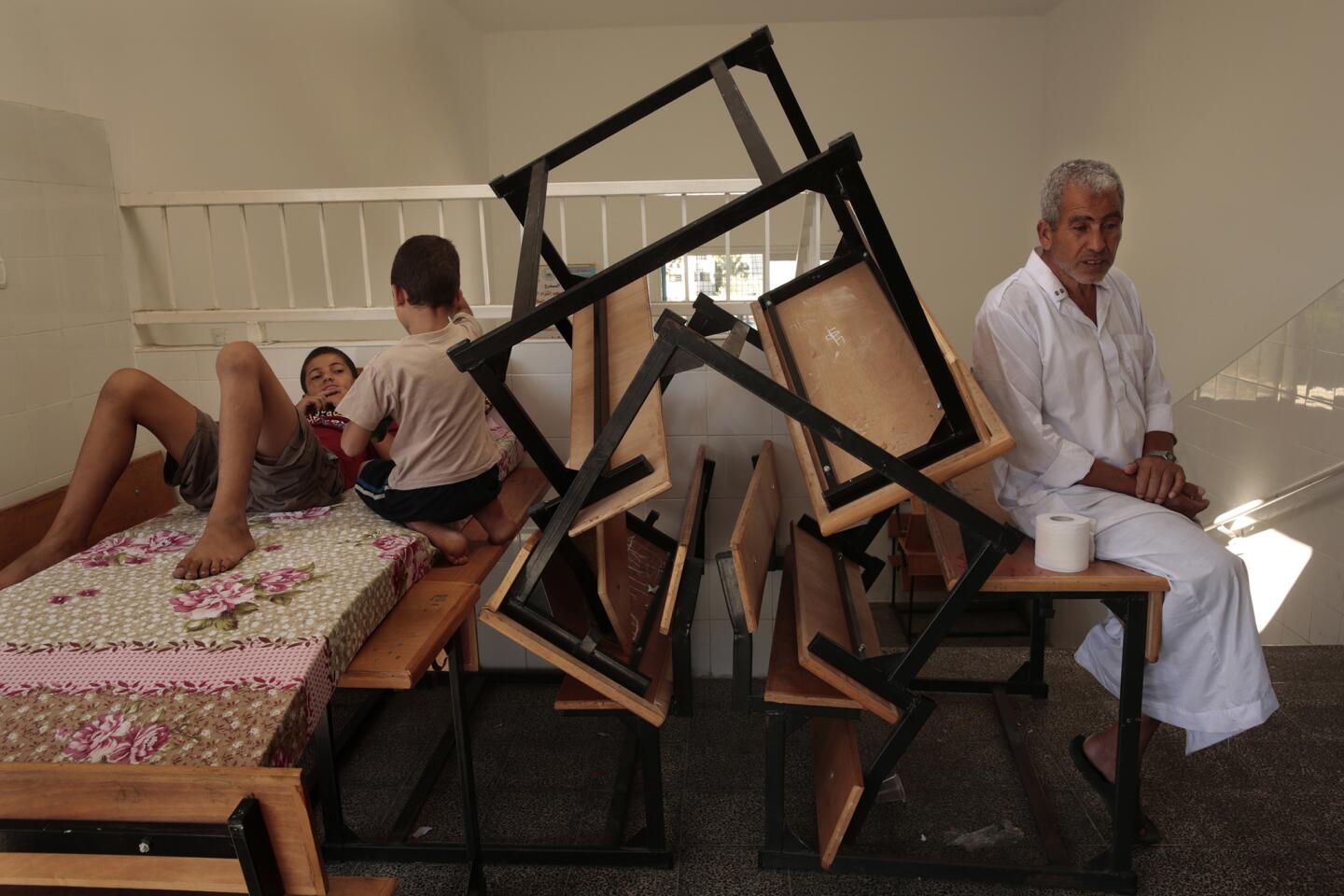Thousands flee as Israel pounds Gaza; death toll climbs on both sides
Reporting from Gaza City — At least 50 Palestinians and 13 Israeli soldiers were reported killed Sunday as heaving fighting erupted in the eastern neighborhoods of Gaza City, sending thousands of people fleeing for safety.
More than 200 civilians were injured, as Israeli troops pounded the area with air and artillery strikes, according to Gaza medical officials and local reports that described the scene as a massacre.
Dozens more dead and injured people were feared trapped in areas that ambulances could not access and a two-hour cease-fire was secured to allow medical teams to evacuate the victims.
Israeli Prime Minister Benjamin Netanyahu said in a tweet that “Israel regrets any inadvertent strike on Palestinian civilians.”
The army quoted its chief of staff, Benny Gantz, as saying: “We have a moral obligation to avoid civilian casualties. We also have a moral obligation to defend our people.”
Israel took some of its worst military losses in years, with the Israel Defense Forces tweeting: “Since last night, 13 soldiers from the IDF’s Golani Brigade were killed while fighting Hamas terorrists in Gaza.”
The losses brought Israel’s overall military death toll in the campaign to 18.
Hamas reported its militants had struck an armored personnel carrier. According to Israeli media, seven were killed as the vehicle was hit with an anti-tank missile, and the rest died in the close-quarters combat that followed. Around 60 soldiers injured Sunday morning were airlifted to several hospitals around Israel that opened information hotlines for concerned families.
As already strained medical services in Gaza were overwhelmed with fresh casualties, the Israeli army announced it would open a field hospital at the Erez crossing to supply medical and humanitarian assistance to Palestinians from Gaza. Staffed by doctors, nurses and X-ray and lab technicians, the hospital will include emergency, pediatric and gynecological services and a delivery room, and will start operating Sunday evening, the army said.
Since Israel’s military cautioned civilians to move out of targeted areas, more than 60,000 Gazans have taken shelter in U.N. facilities in recent days but many others have remained in their homes as the death toll has climbed toward 370.
Armed skirmishes on the outskirts of urban areas have turned into full combat as well-prepared militants engage troops and armored vehicles drawn deeper into densely populated turf with gunfire, anti-tank missiles and explosive devices. Israeli choppers made several rounds Sunday, airlifting military casualties to hospitals throughout the country. The injured included a battalion commander.
At least 100 militants have been killed since Thursday, when Israel began the ground phase of a military offensive that is now into its 13th day, Israeli reports said. The invasion has been aimed at combating Gaza’s network of underground tunnels channeling rockets and militants.
So far, Israel’s military has uncovered 14 tunnels dug from the Gaza Strip believed to extend into Israeli territory. Several have already been demolished or detonated, including two leading to communities north of the Gaza Strip.
Israel regards the tunnels as an acute strategic threat, designed for carrying out cross-border attacks and kidnapping civilians or soldiers. At least two such attempts were made Saturday as around a dozen militants ambushed an army jeep inside Israel, killing two soldiers. Heavy weaponry and tranquilizers found in the tunnel later suggested plans to attack a nearby community and abduct Israelis back to Gaza.
“We could have woken up to an Israeli 9/11” if the attack had succeeded, Economy Minister Naftali Bennett said in a media interview Sunday. Calling the tunnel threat a red line, the minister said Israel couldn’t accept a reality in which “the ground can open up at any moment to swallow civilians.”
Military officials attributed much of the ground fighting to the effort against the tunnels. “Hamas is clearly trying to save these tunnels,” IDF spokesman Lt. Col. Peter Lerner said, adding that Hamas has invested a lot in them and was “fighting to keep them open.”
Israel’s military was also operating against rocket launchers in the northern Gaza Strip, the source of at least a third of all rocket fire into Israel. At least 18 rockets hit Israel on Sunday and several more were intercepted. Over 1,700 rockets have been fired at Israel since the fighting began July 8, killing two civilians.
U.N. Secretary-General Ban Ki-moon was expected in the region Sunday to advance cease-fire efforts as other diplomats, leaders and envoys scurried backstage with no immediate success.
While supportive of Israel’s military operation against Hamas, opposition leader Isaac Herzog hoped for a cease-fire agreement that would not only end fighting but offer a forward-looking solution. “At the end of the day, the road to overcoming Hamas on the diplomatic level goes through Cairo and Ramallah.”
The West Bank city of Ramallah is the seat of the Palestinian Authority government.
Times staff writer Zavis reported from Gaza City and special correspondent Sobelman from Jerusalem.
More to Read
Sign up for Essential California
The most important California stories and recommendations in your inbox every morning.
You may occasionally receive promotional content from the Los Angeles Times.
